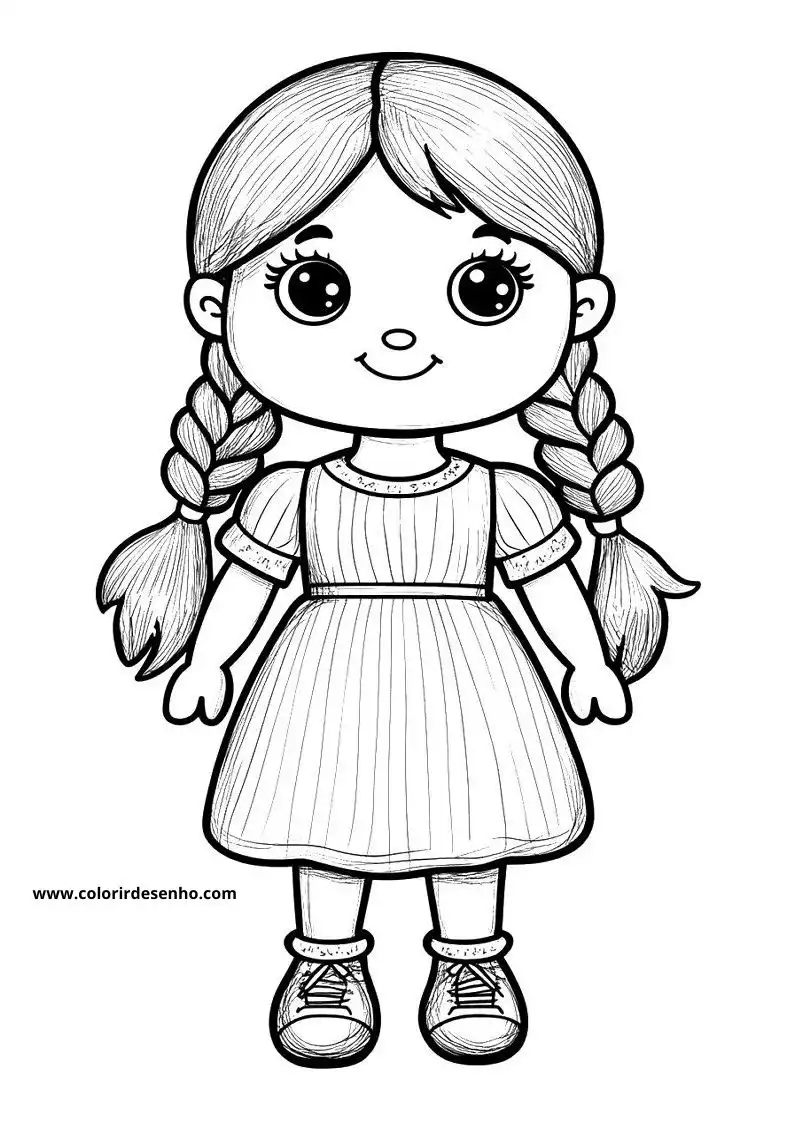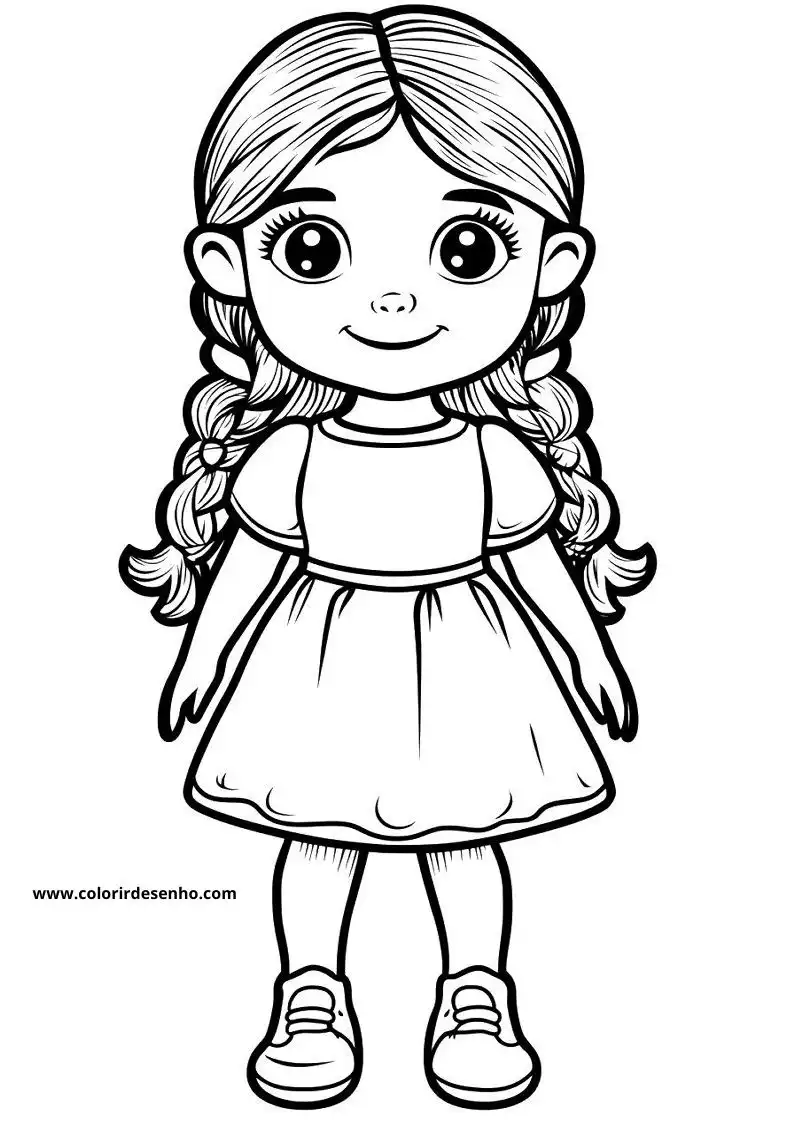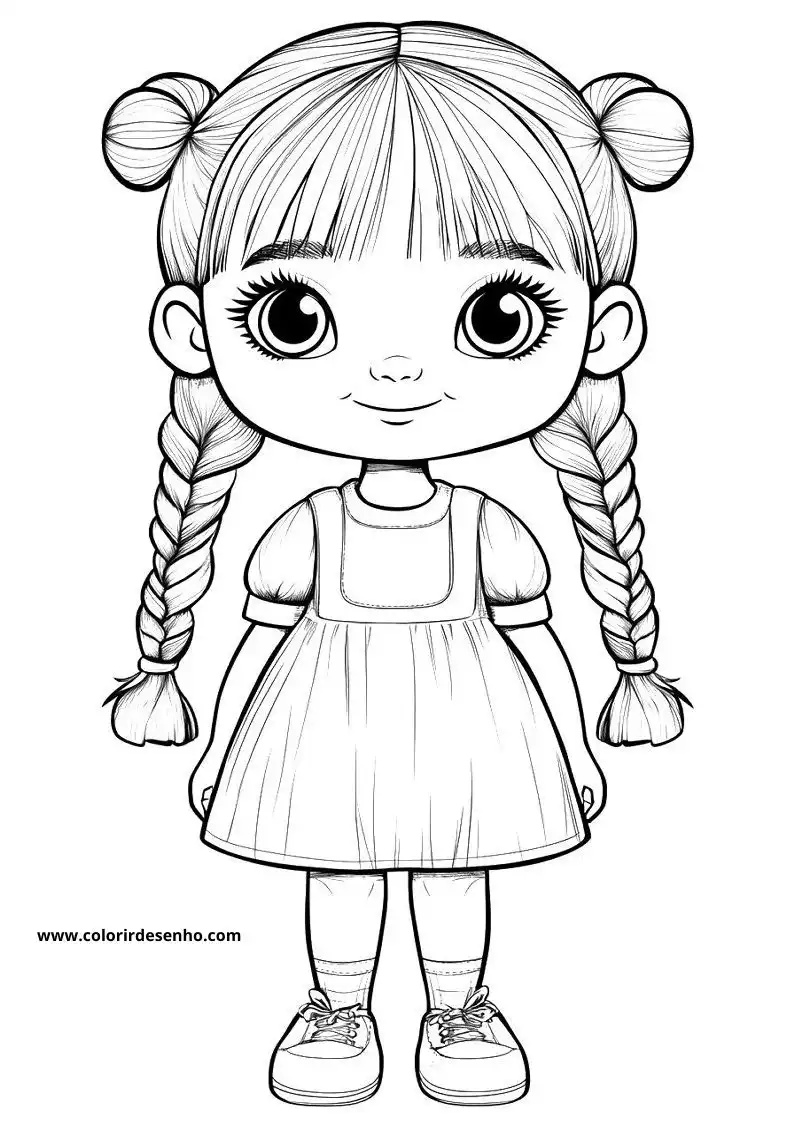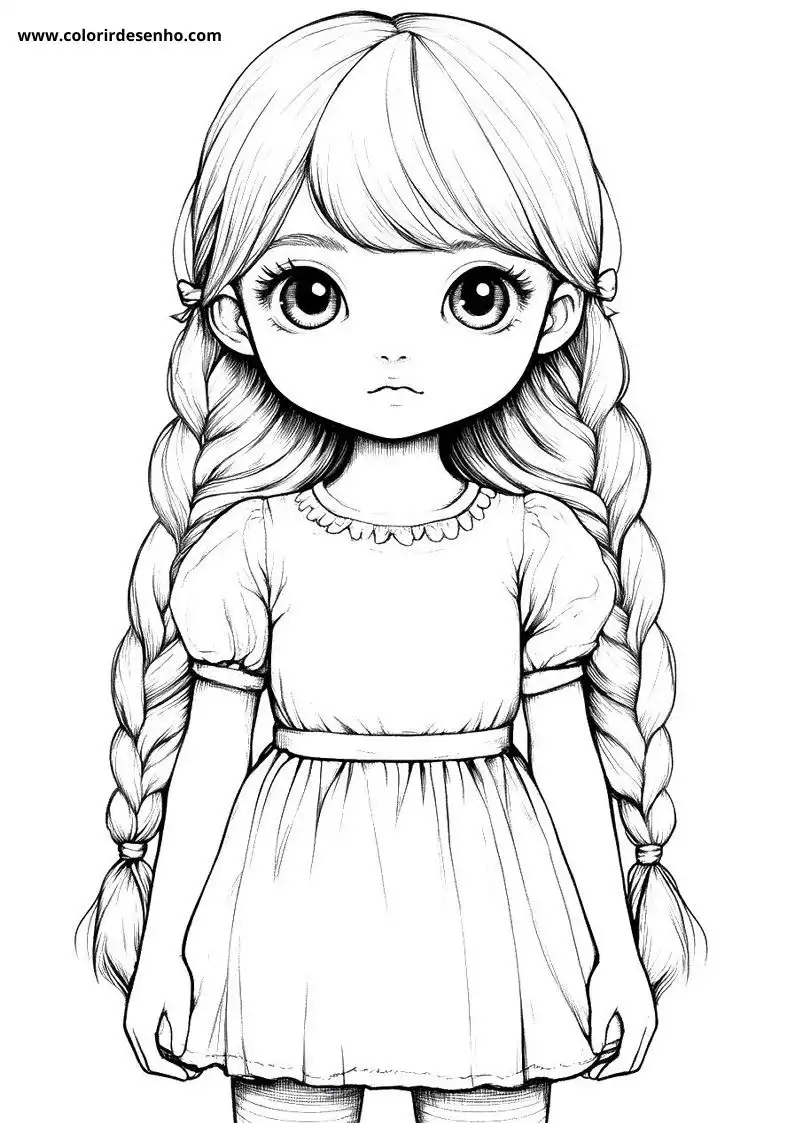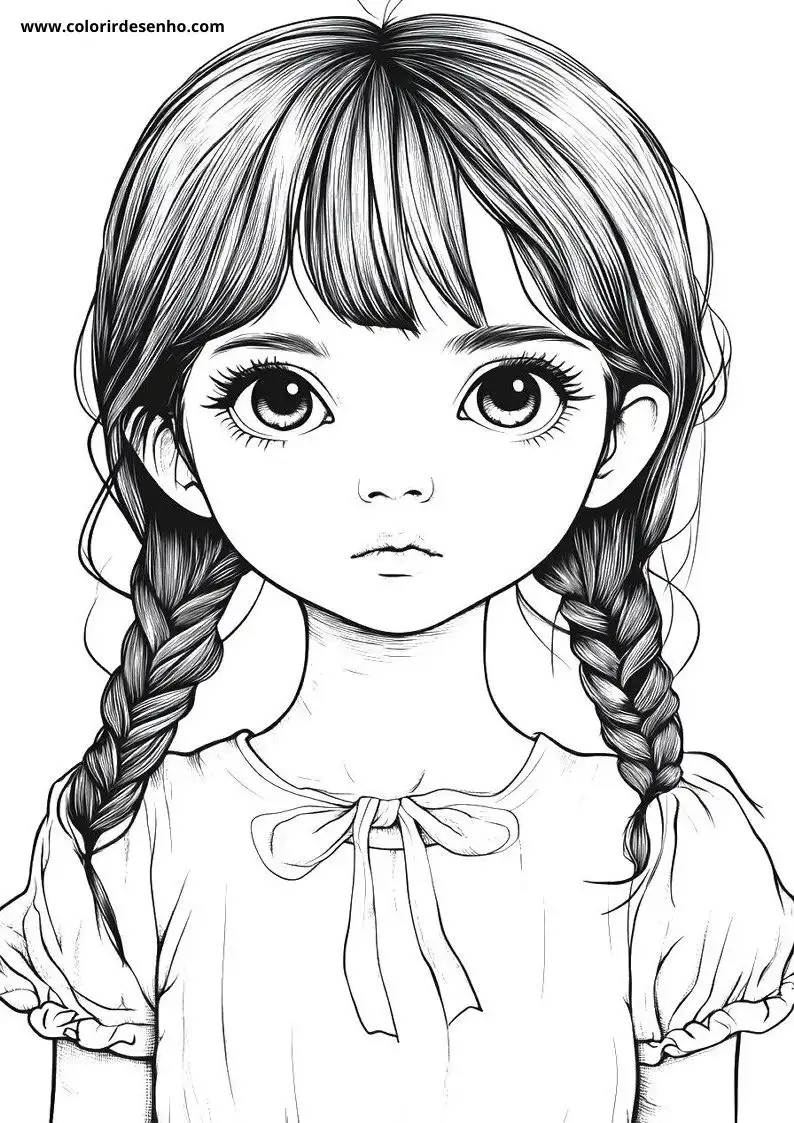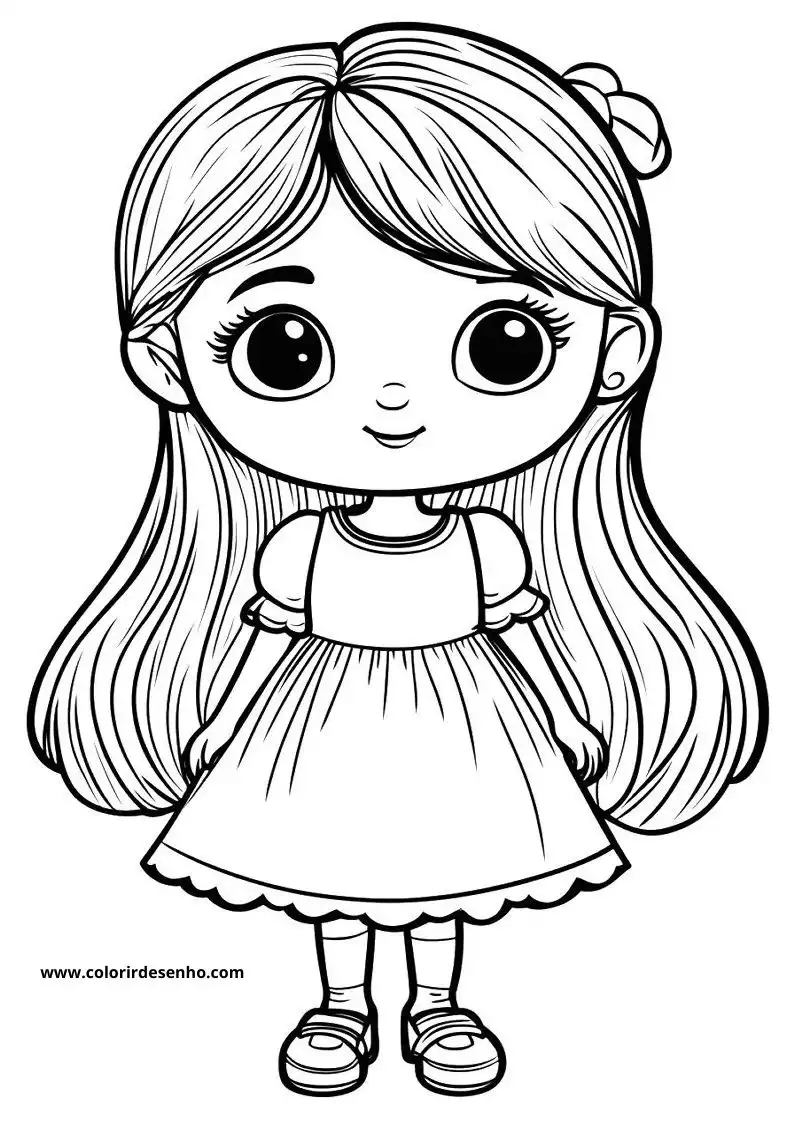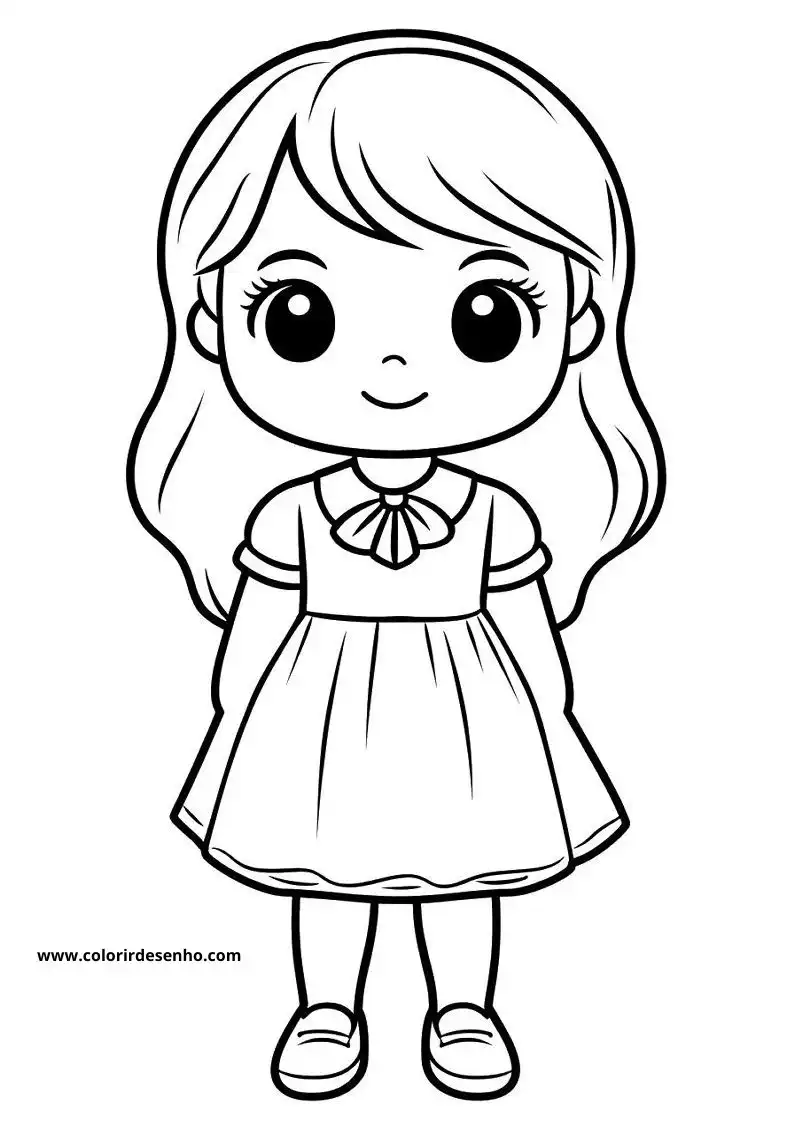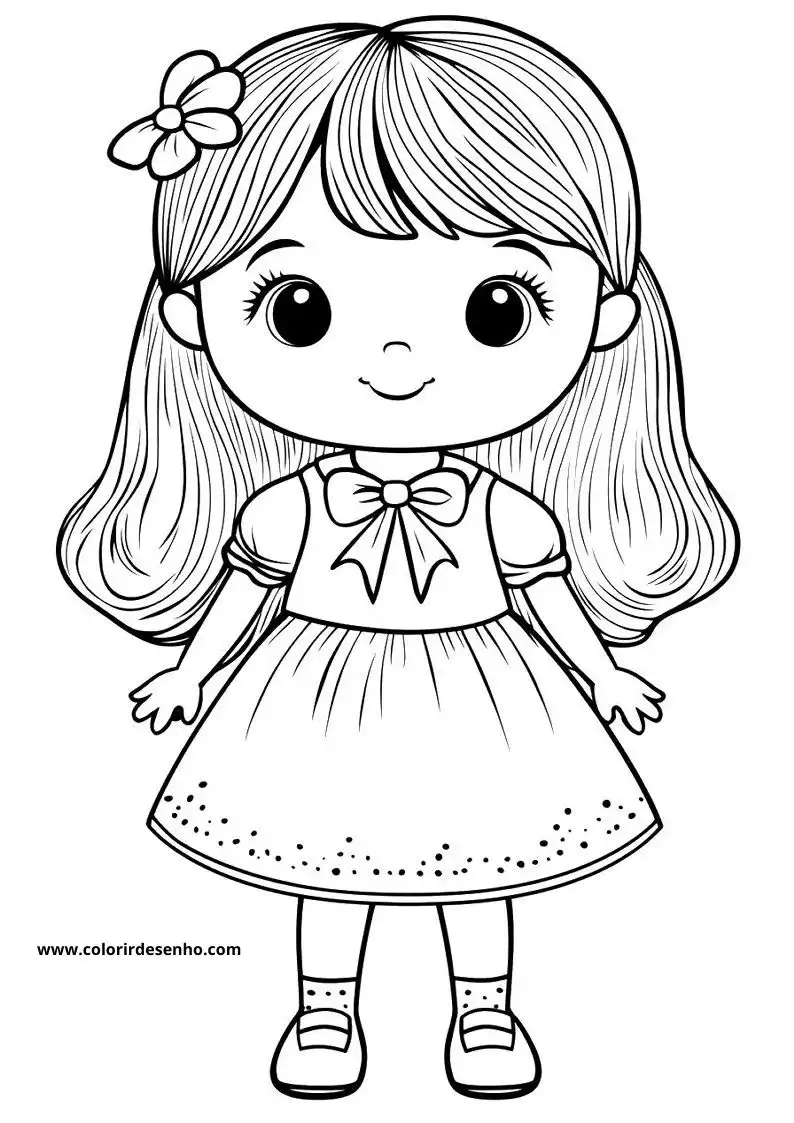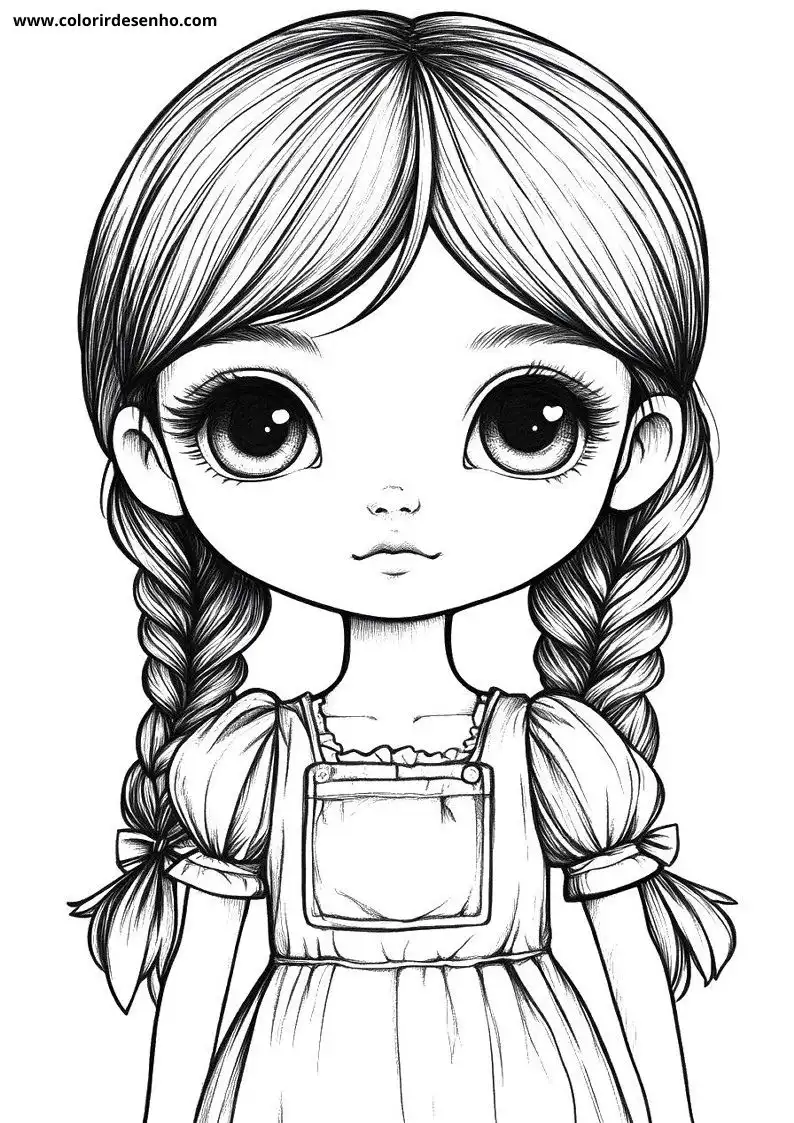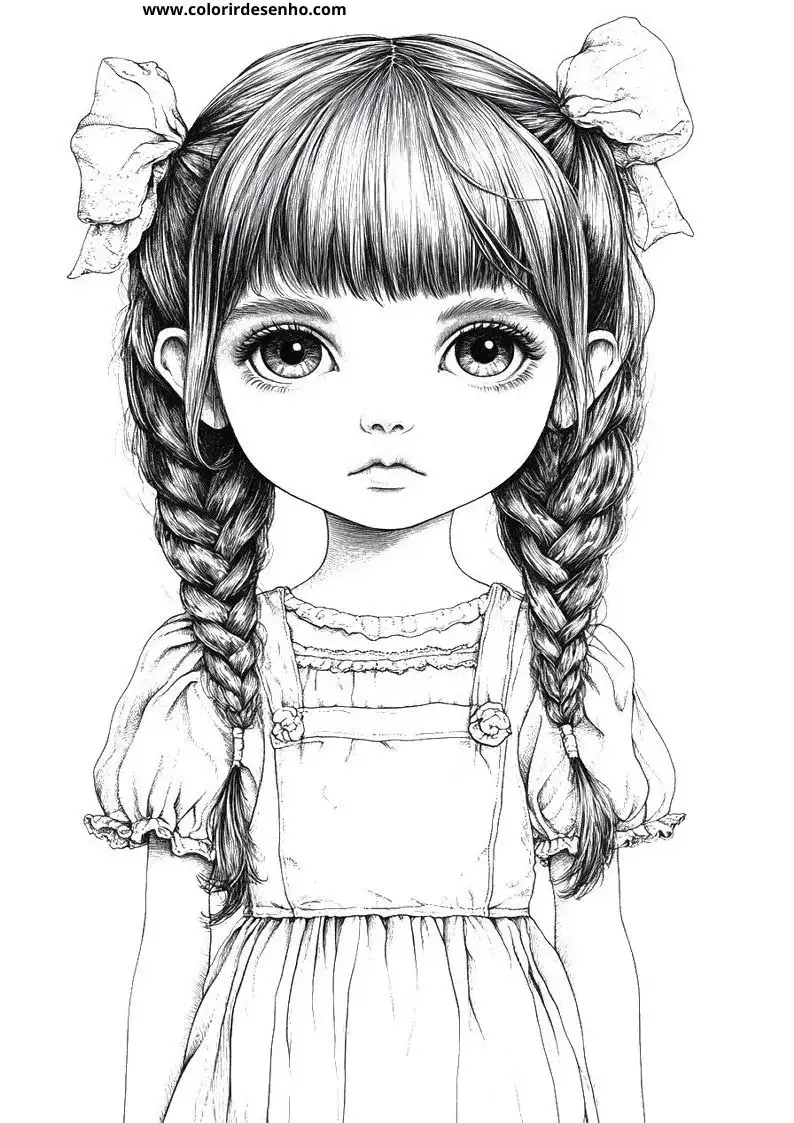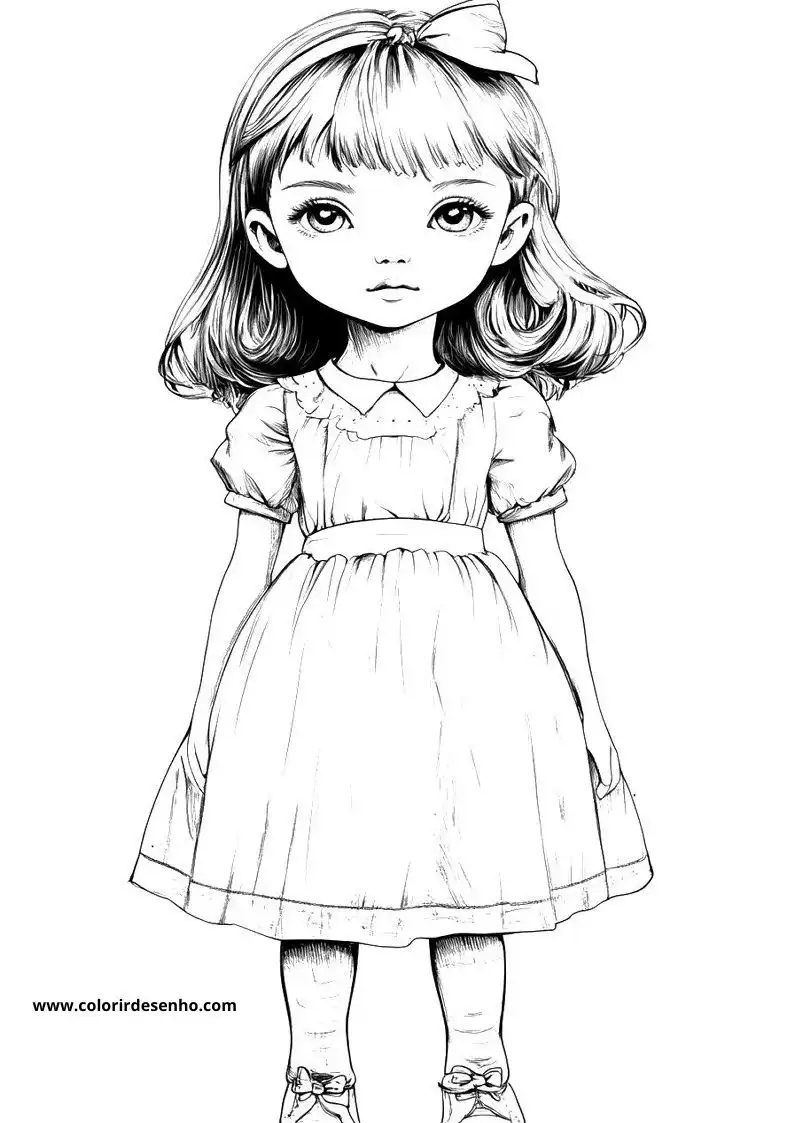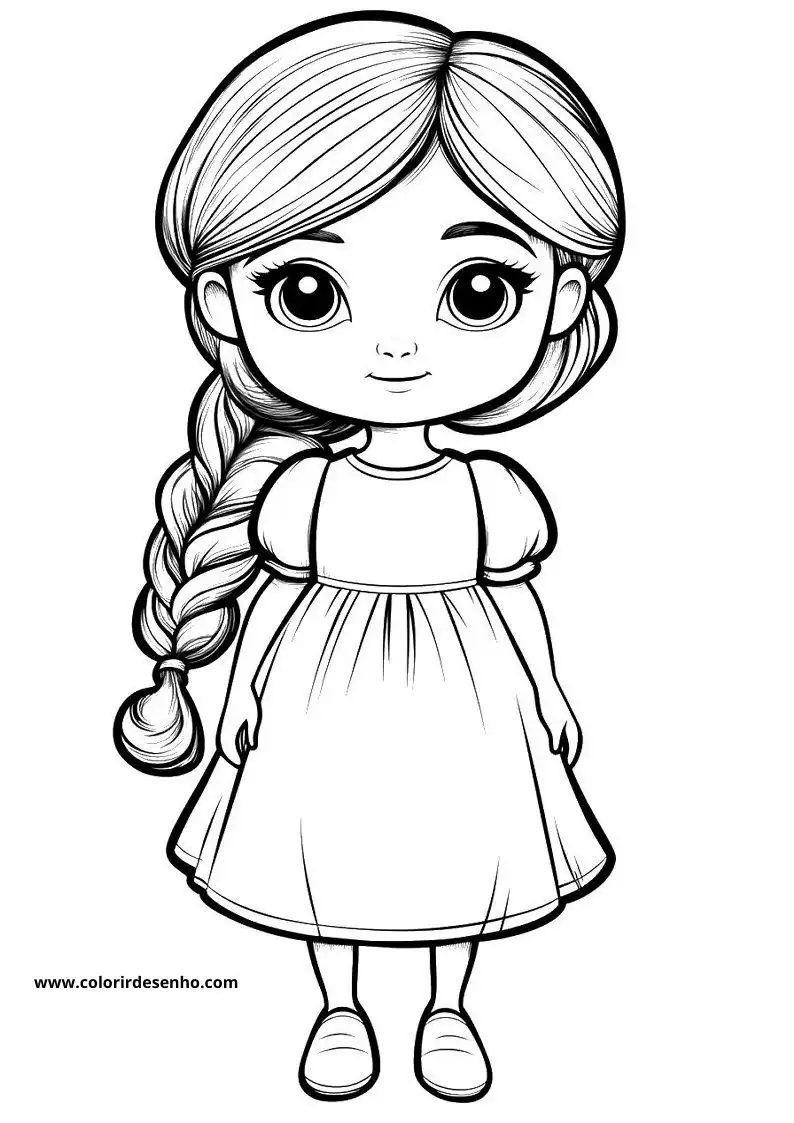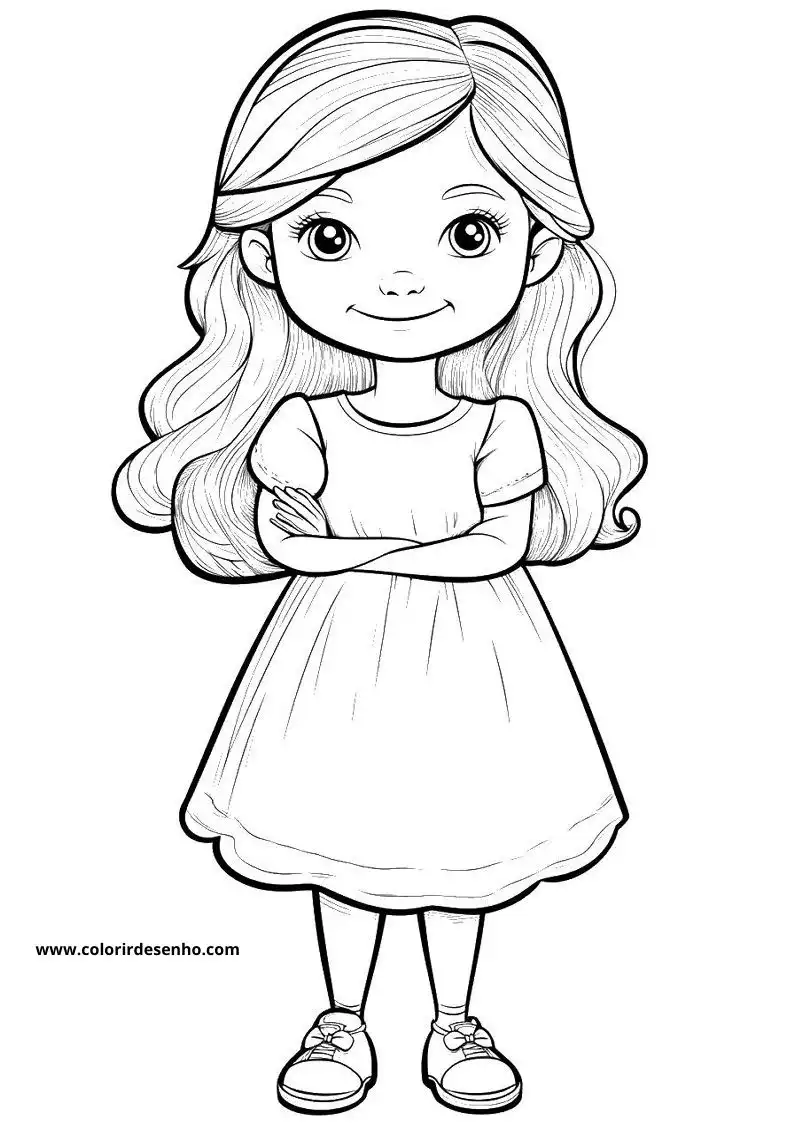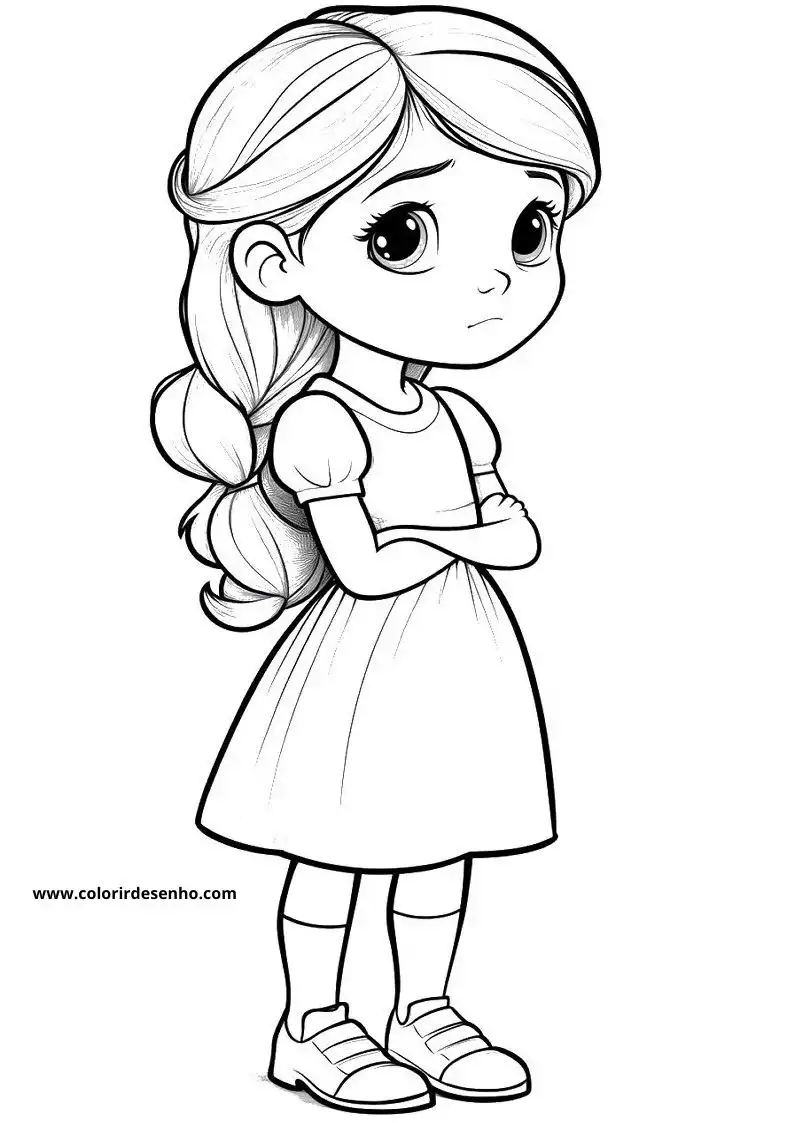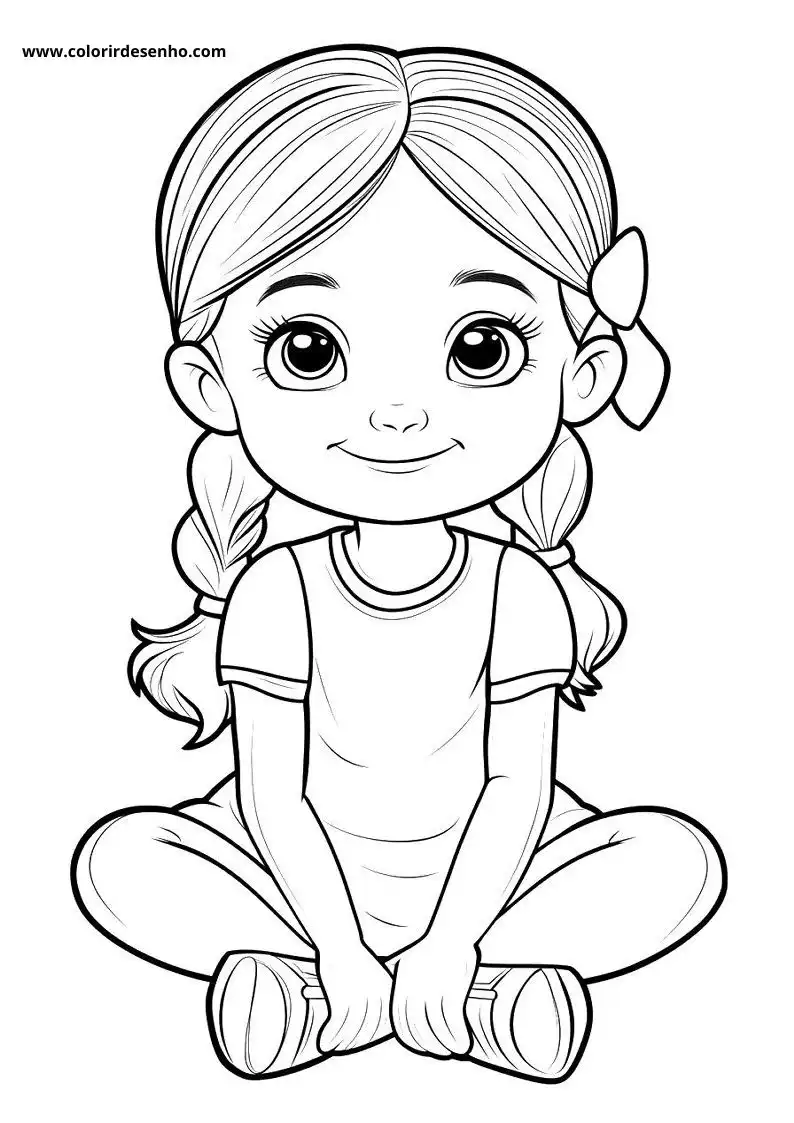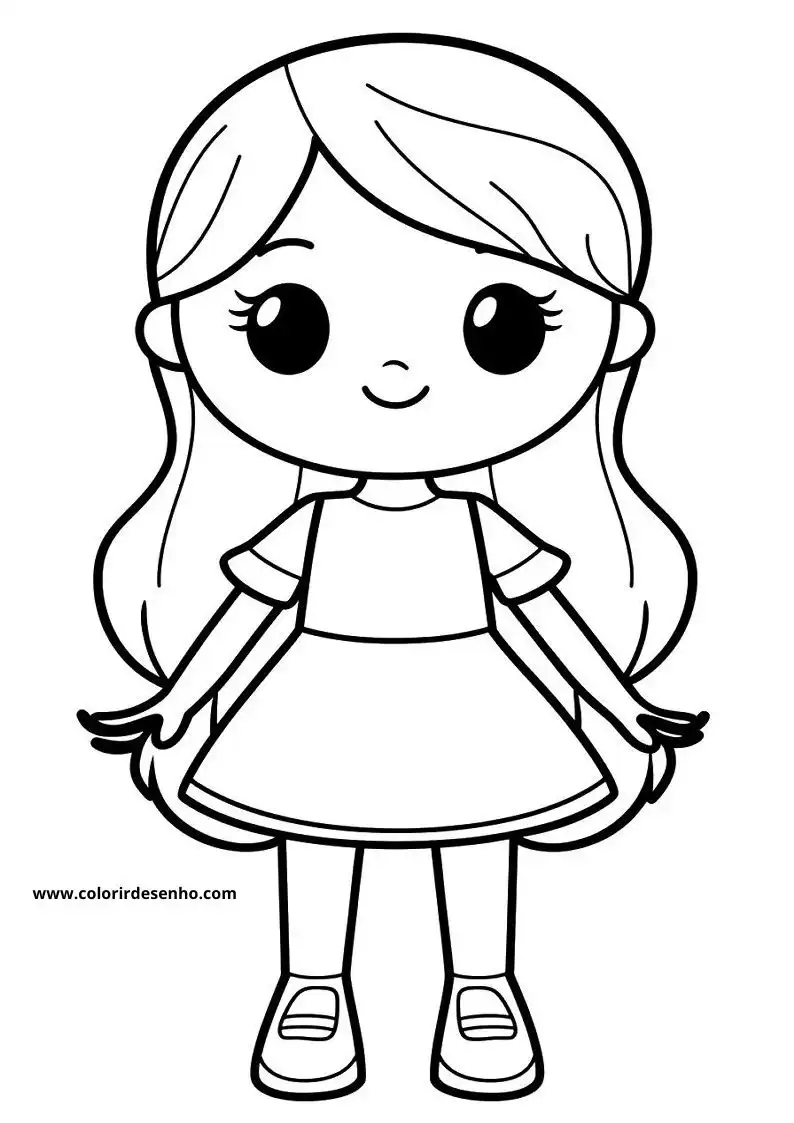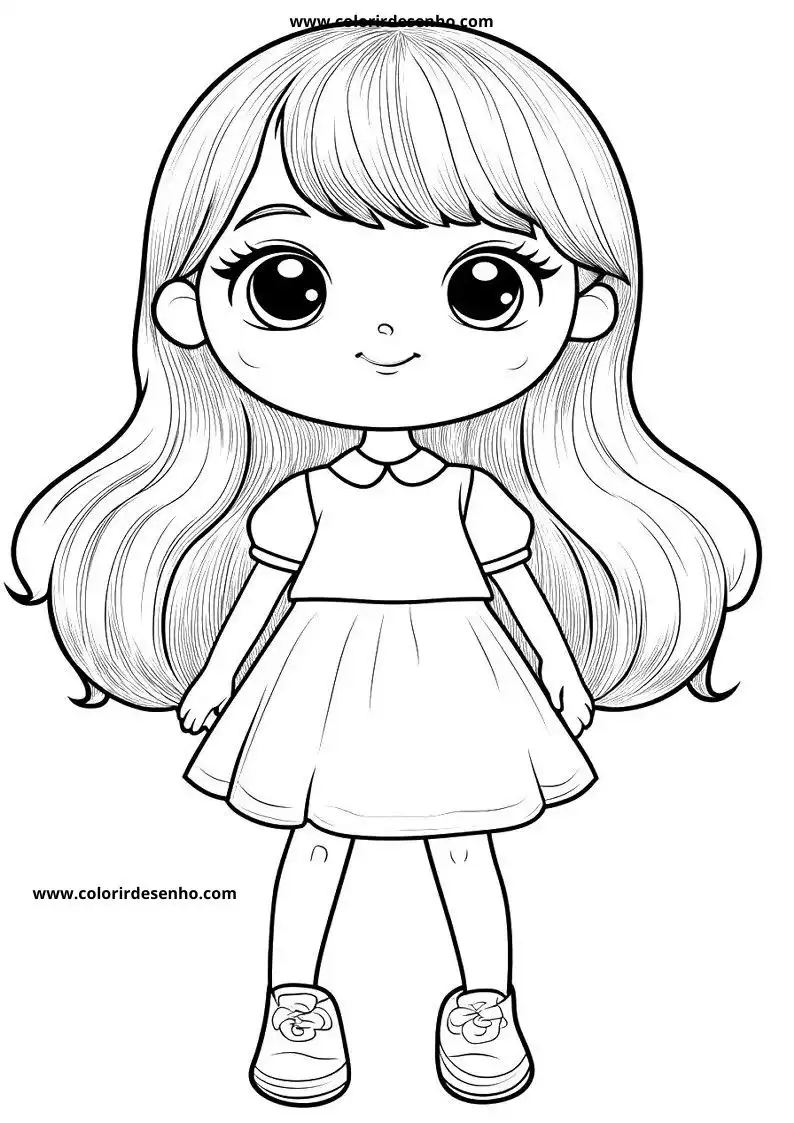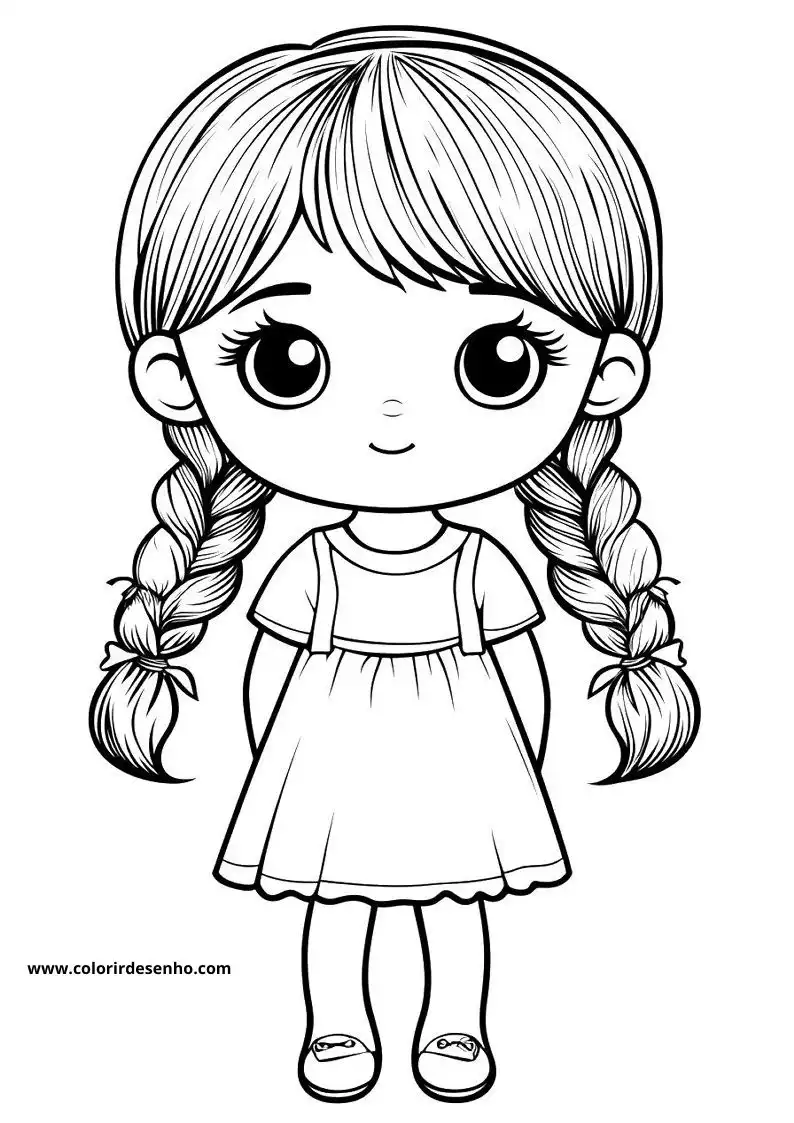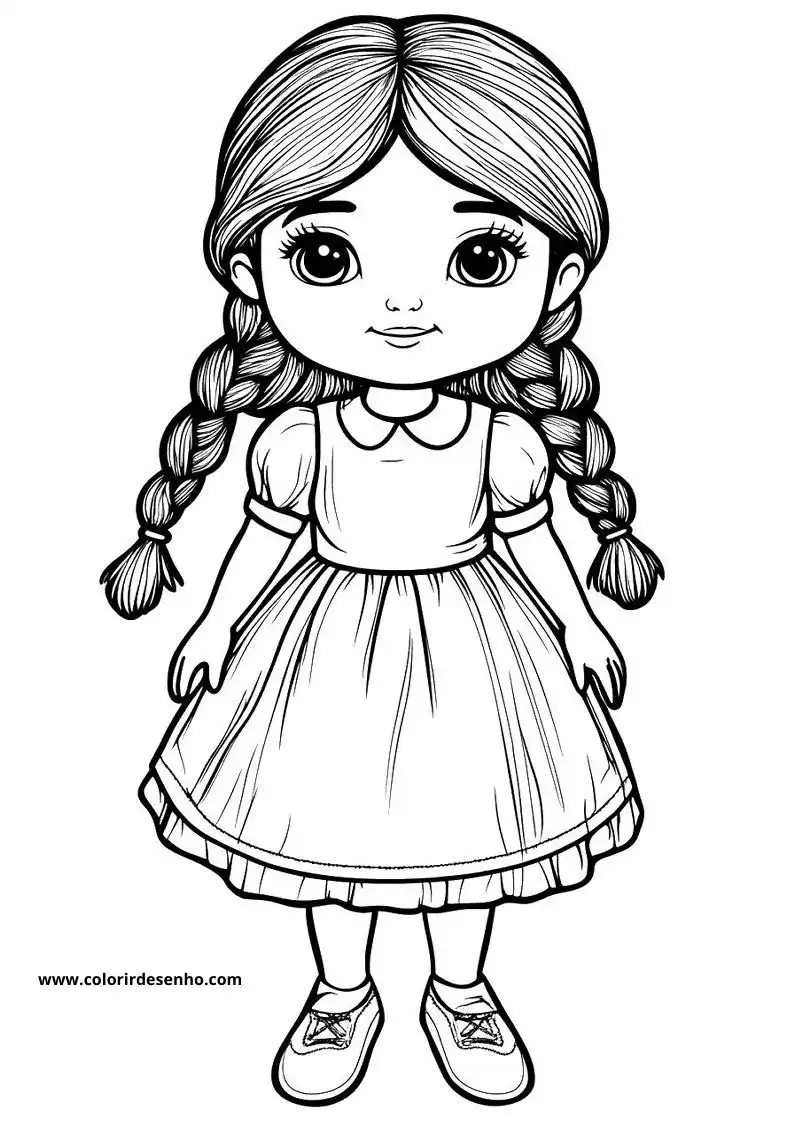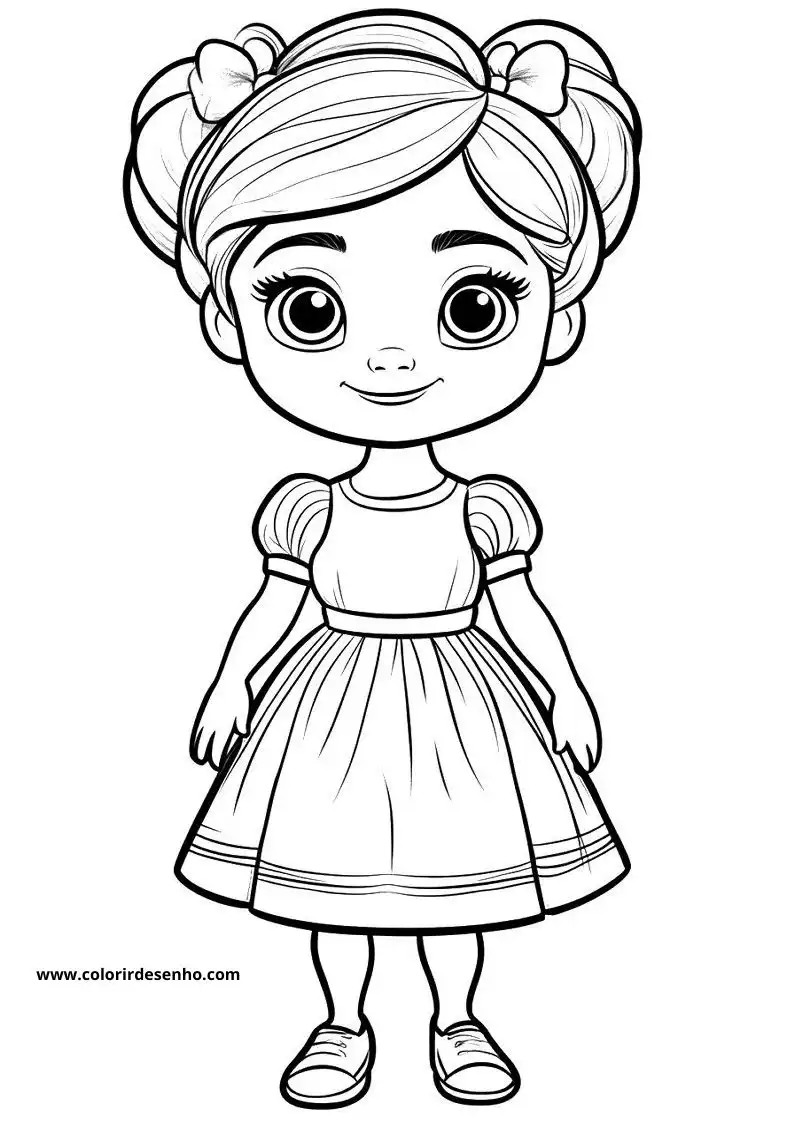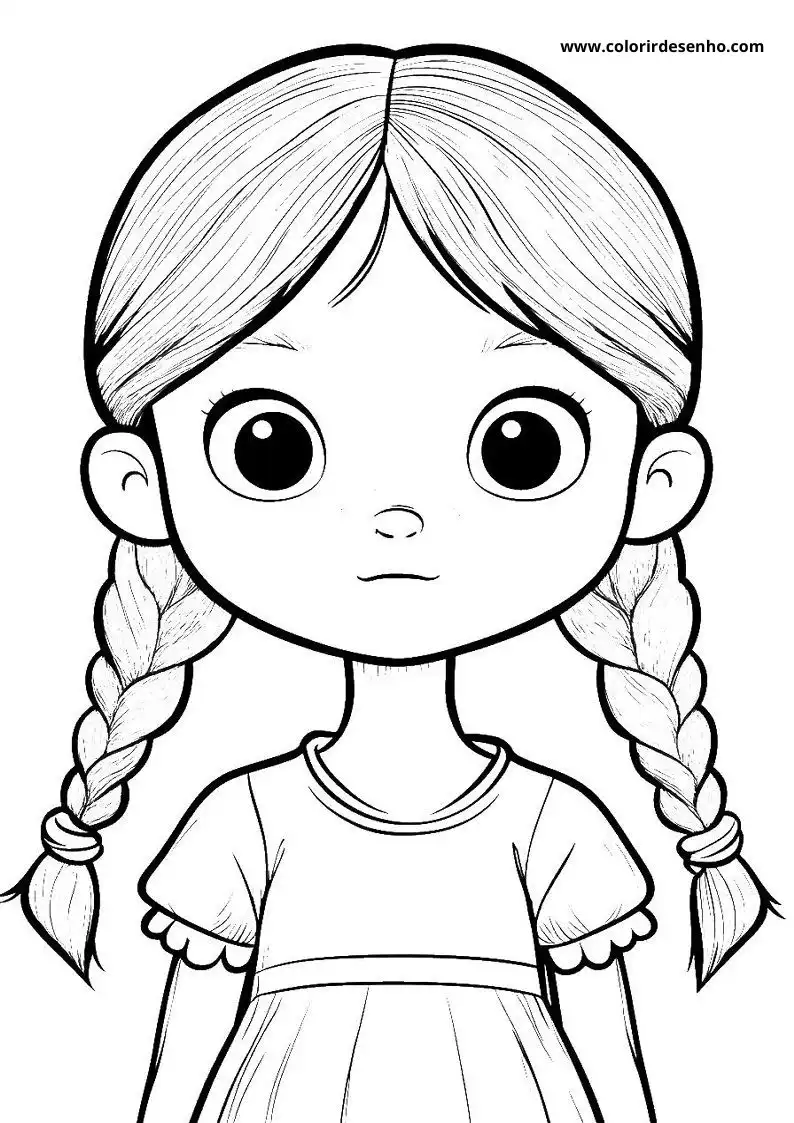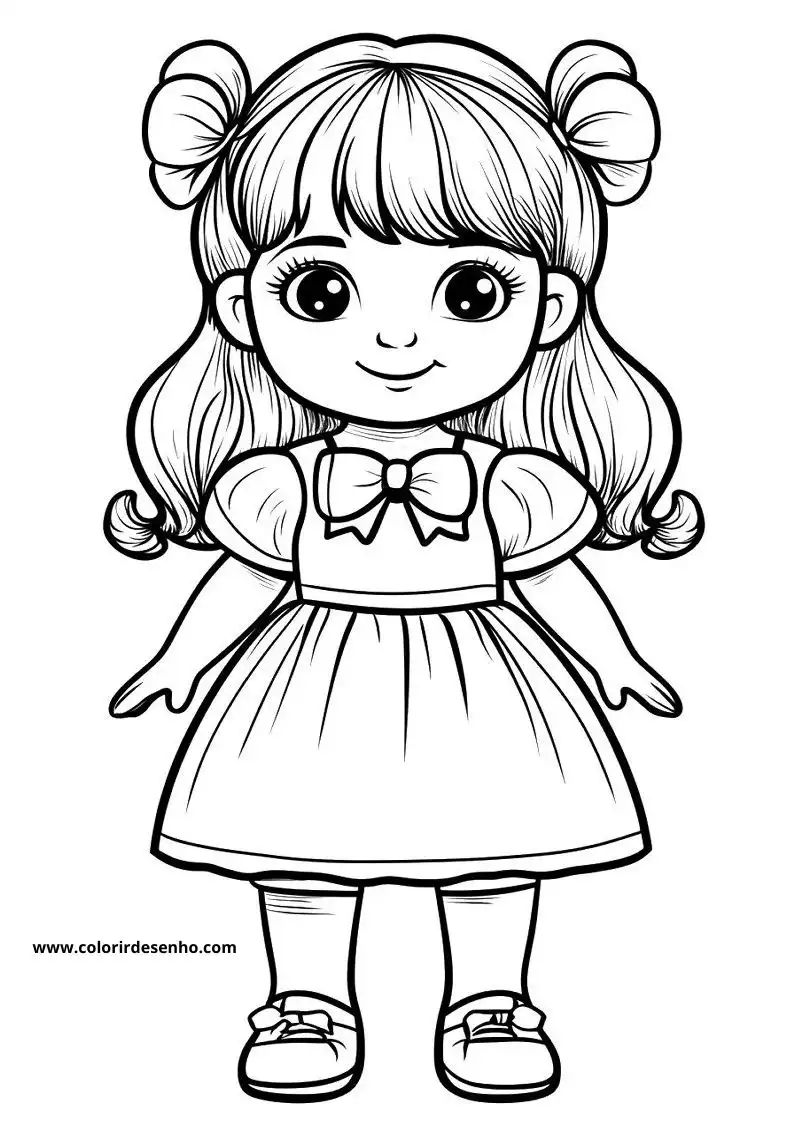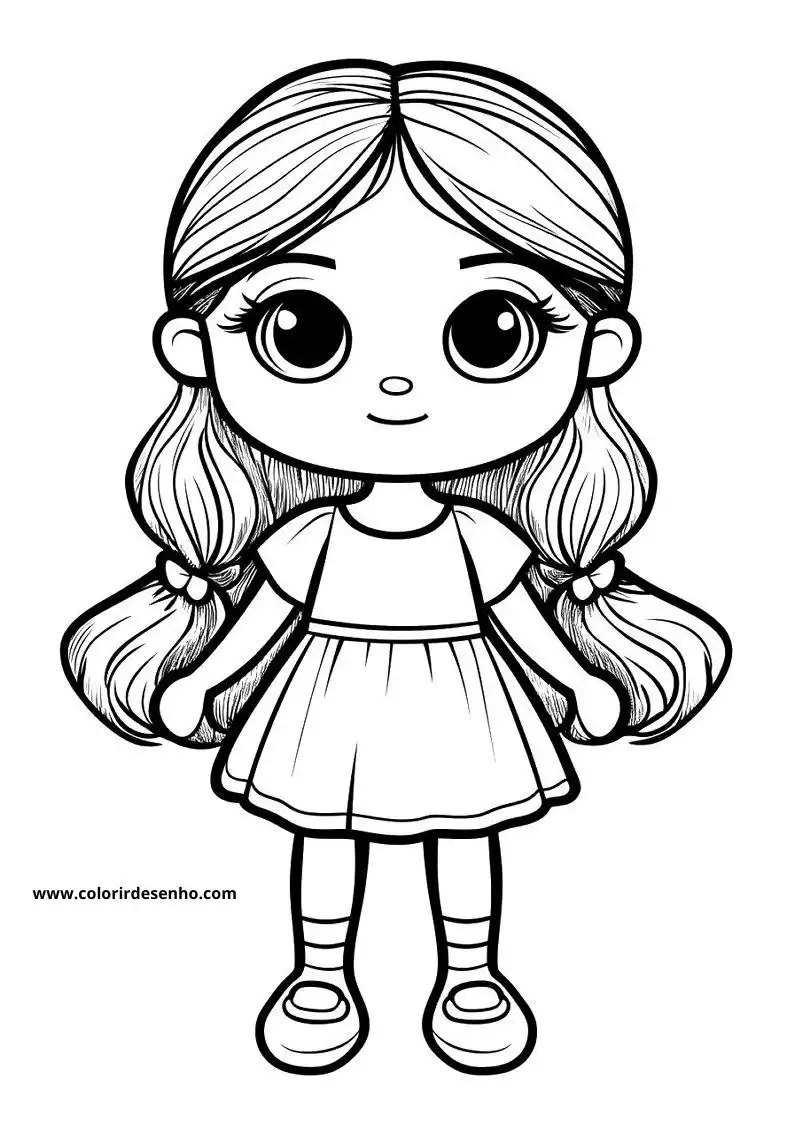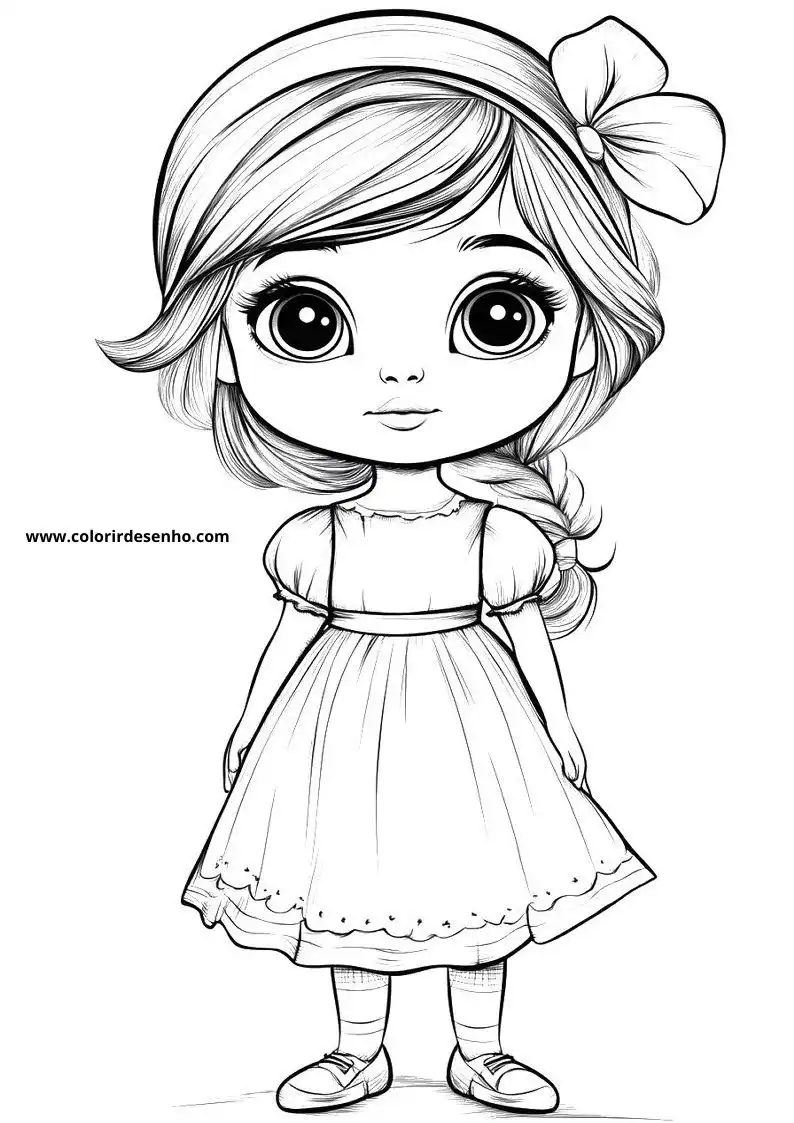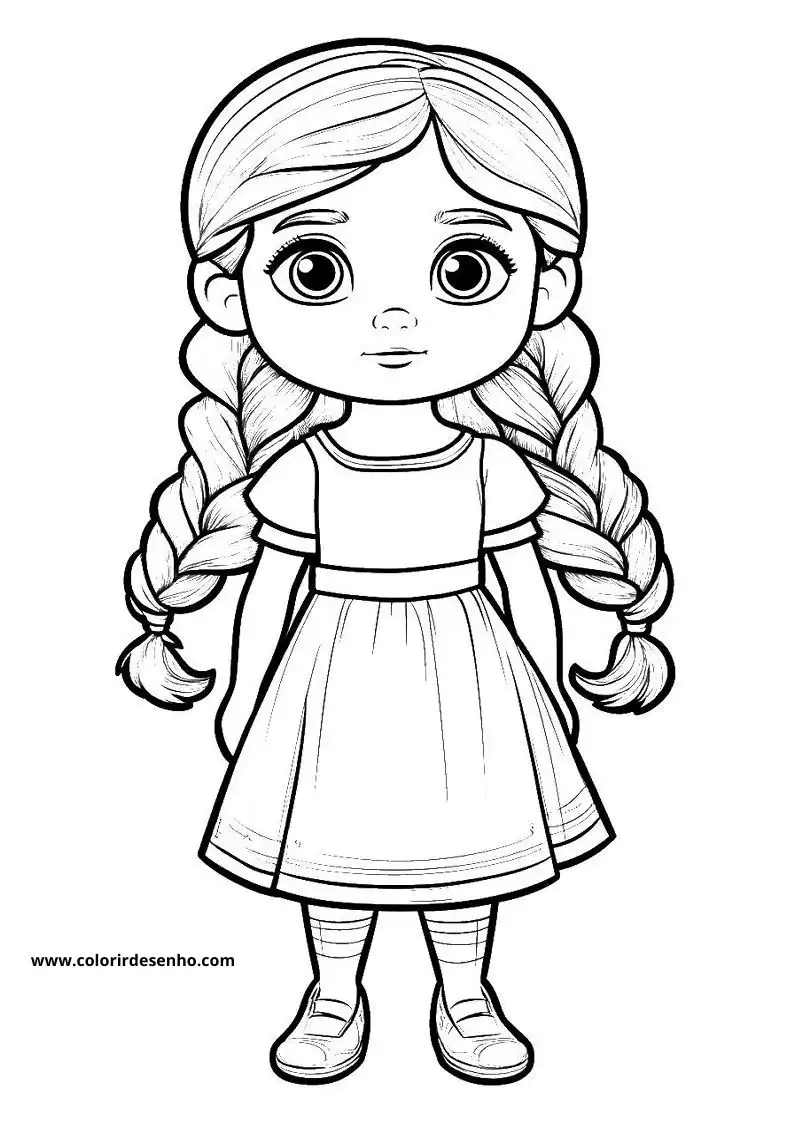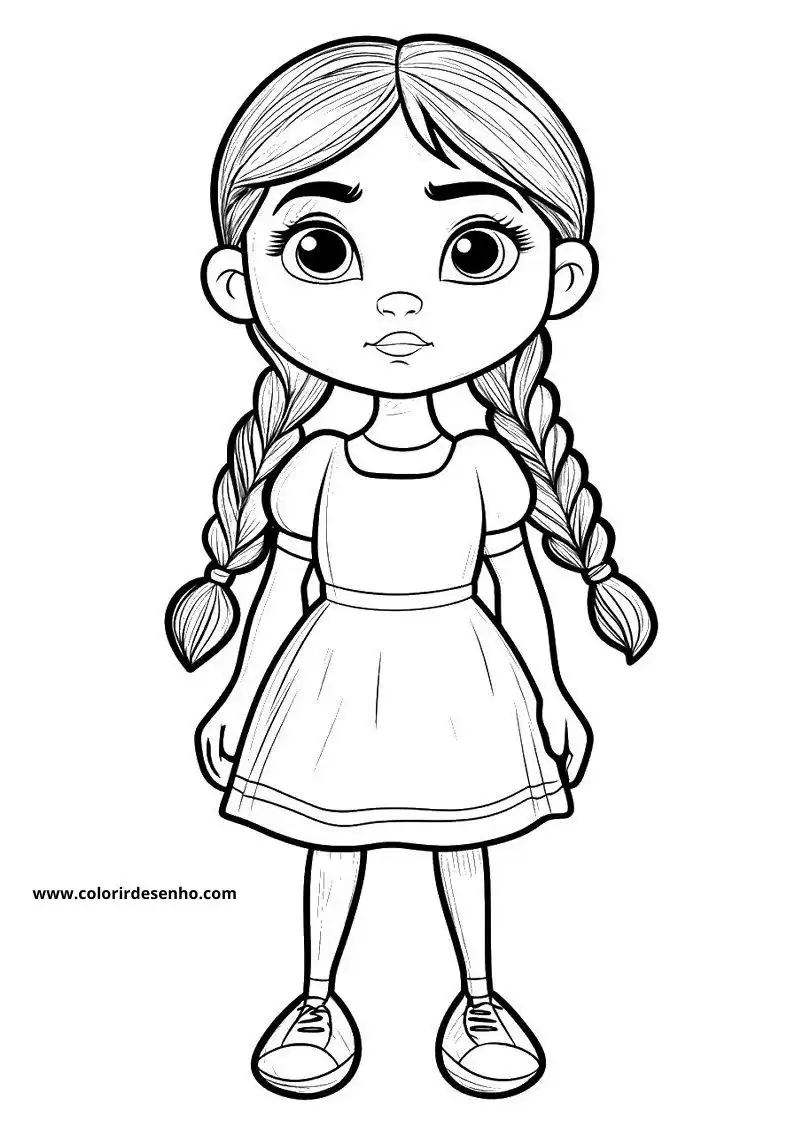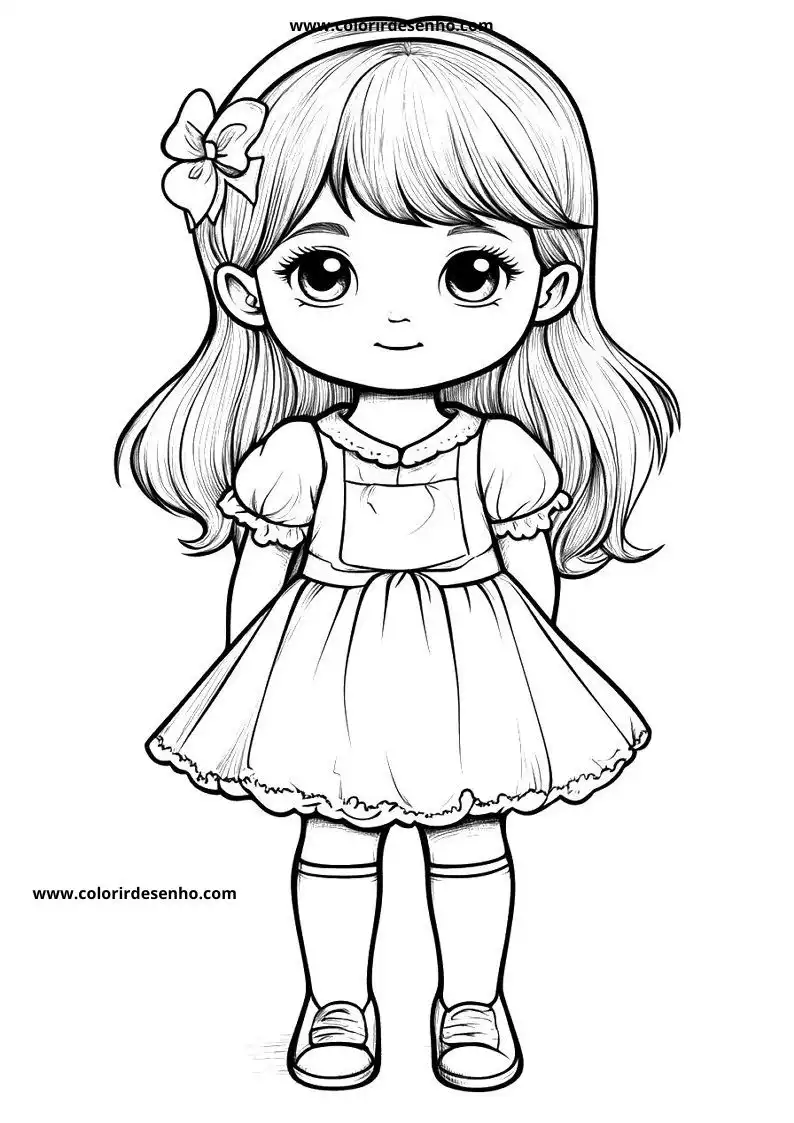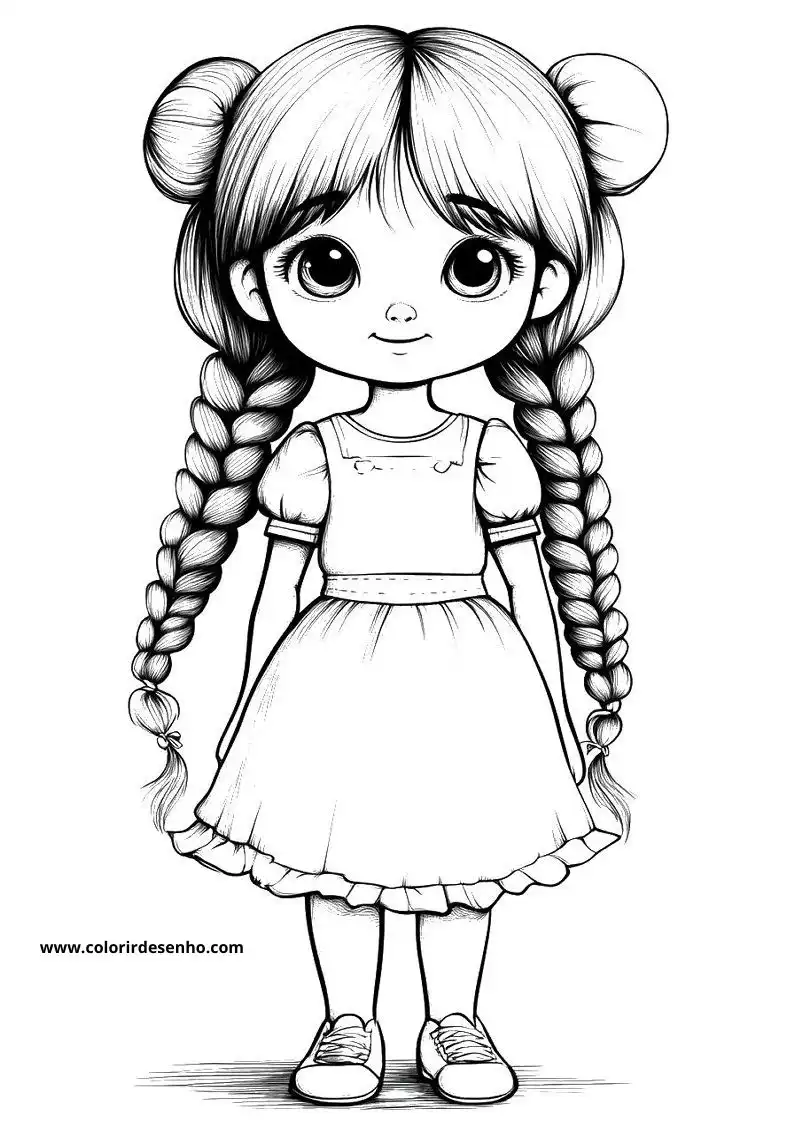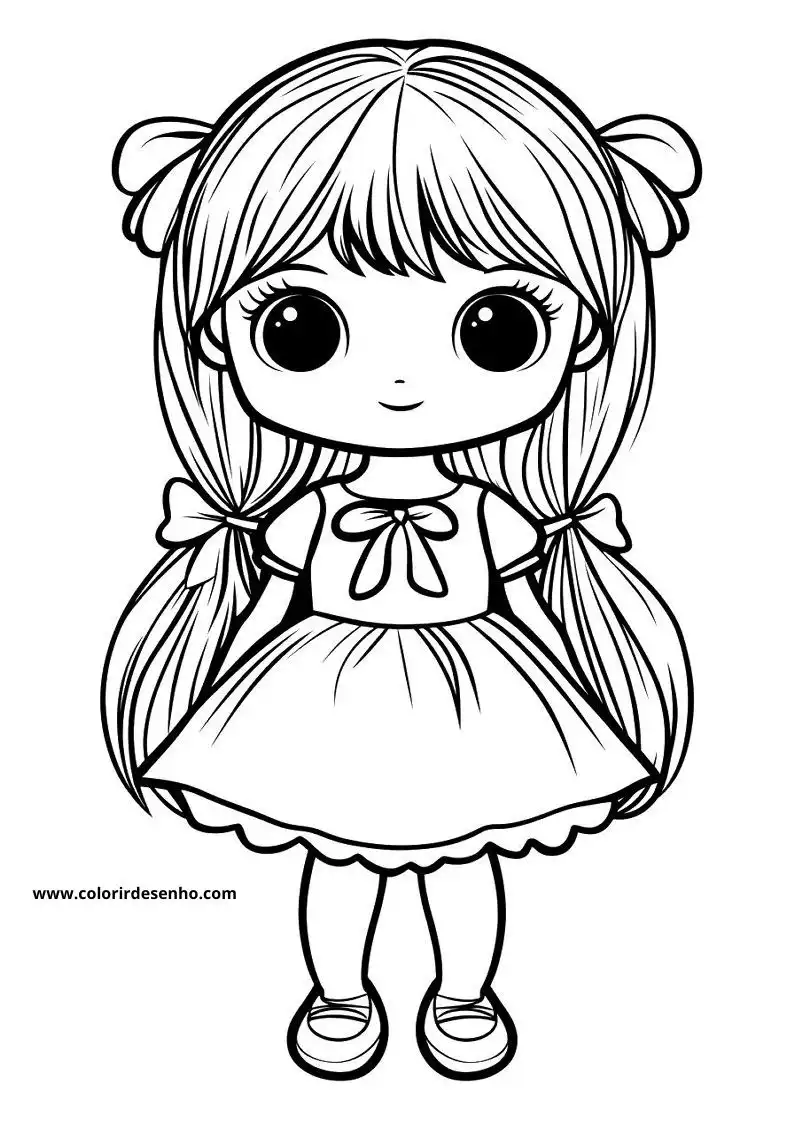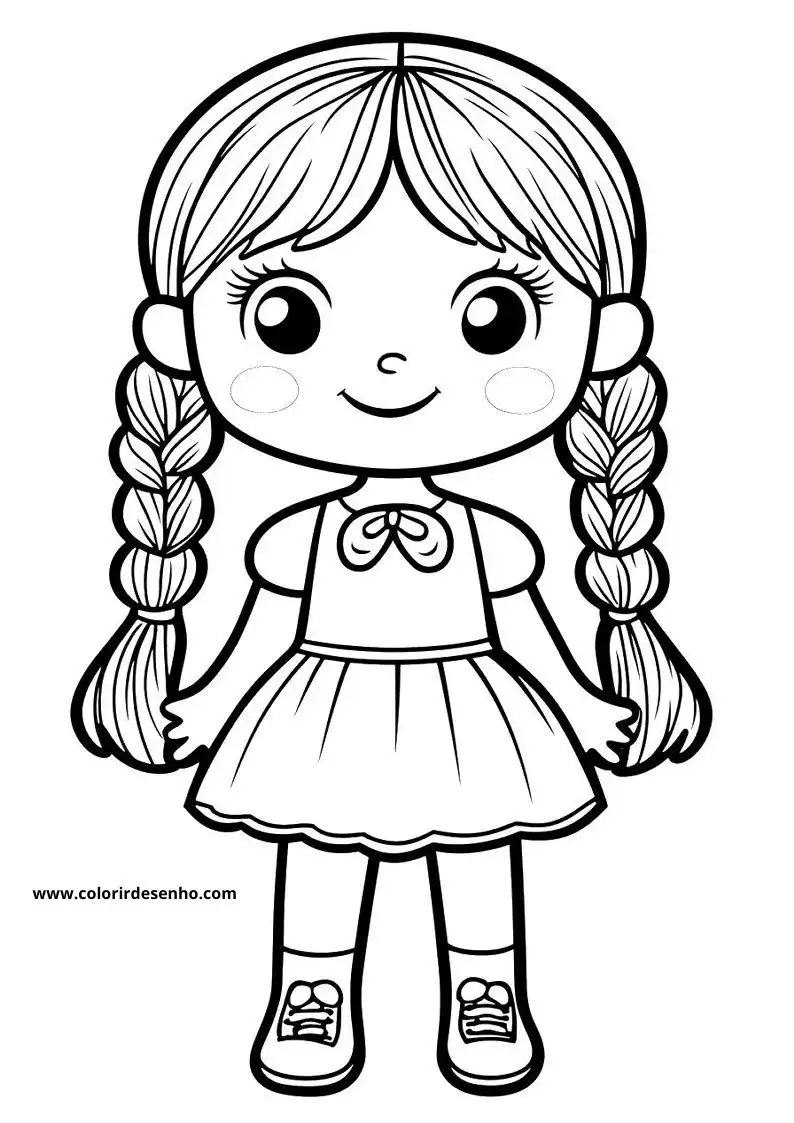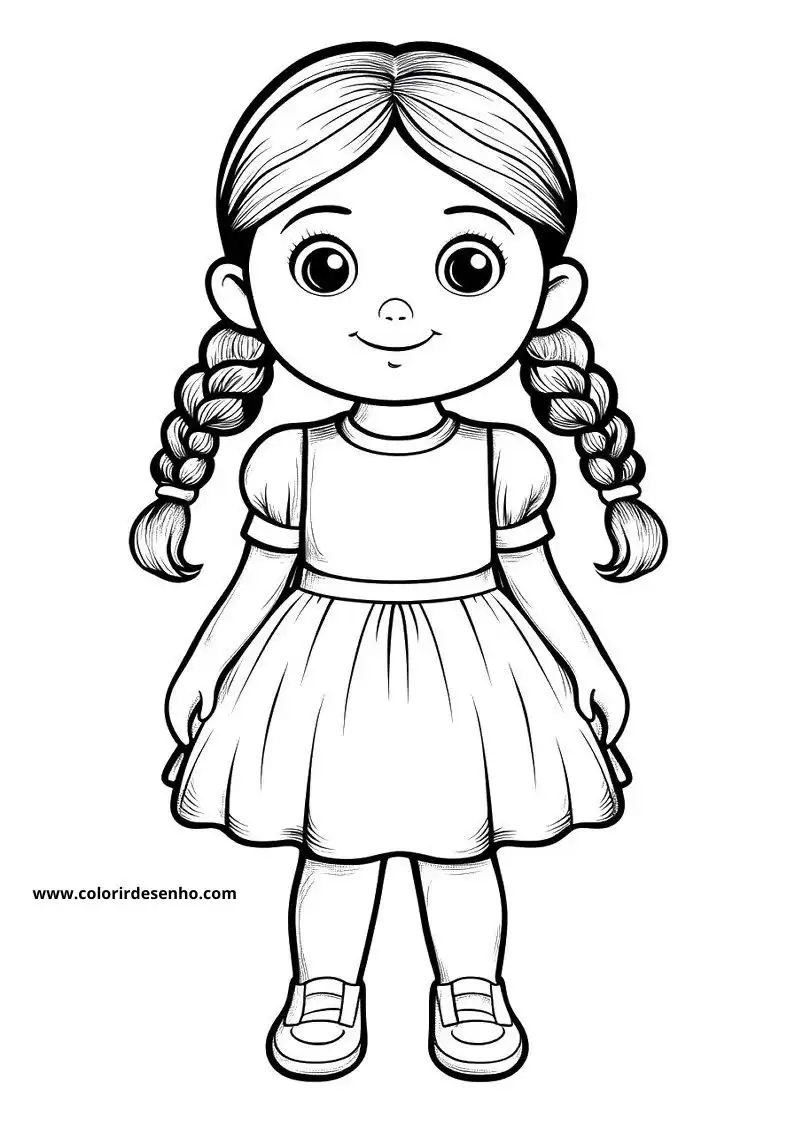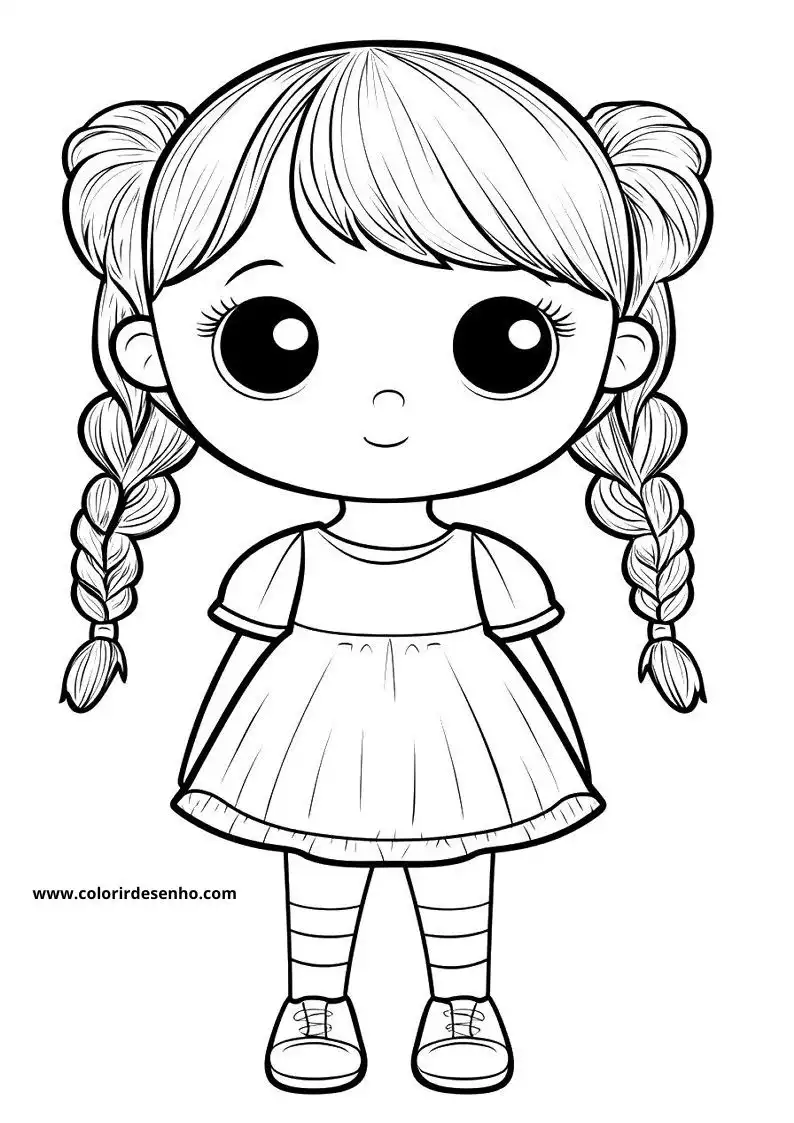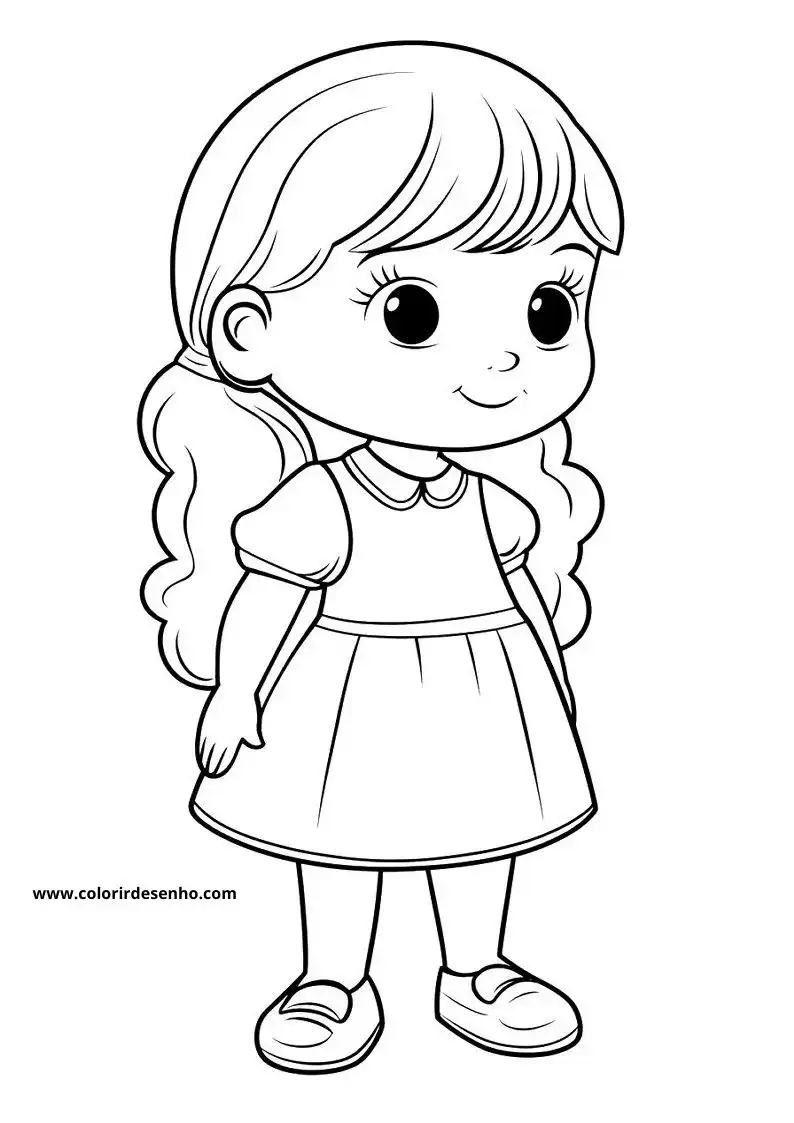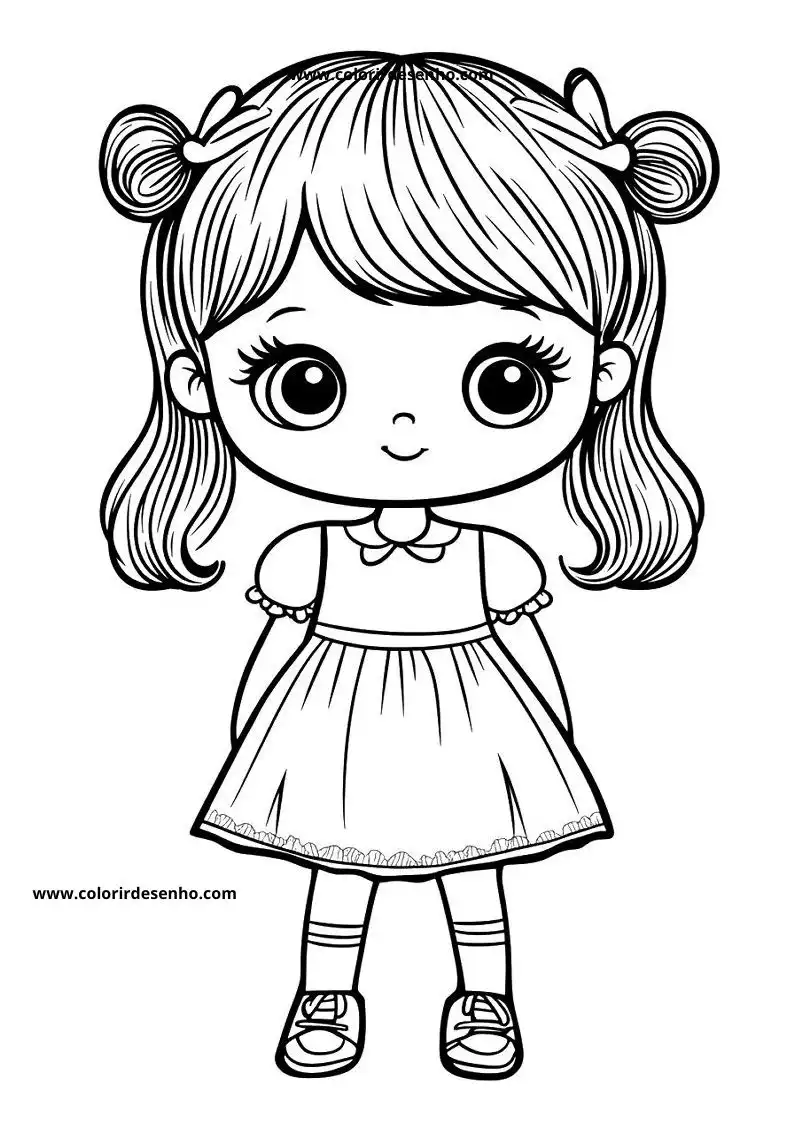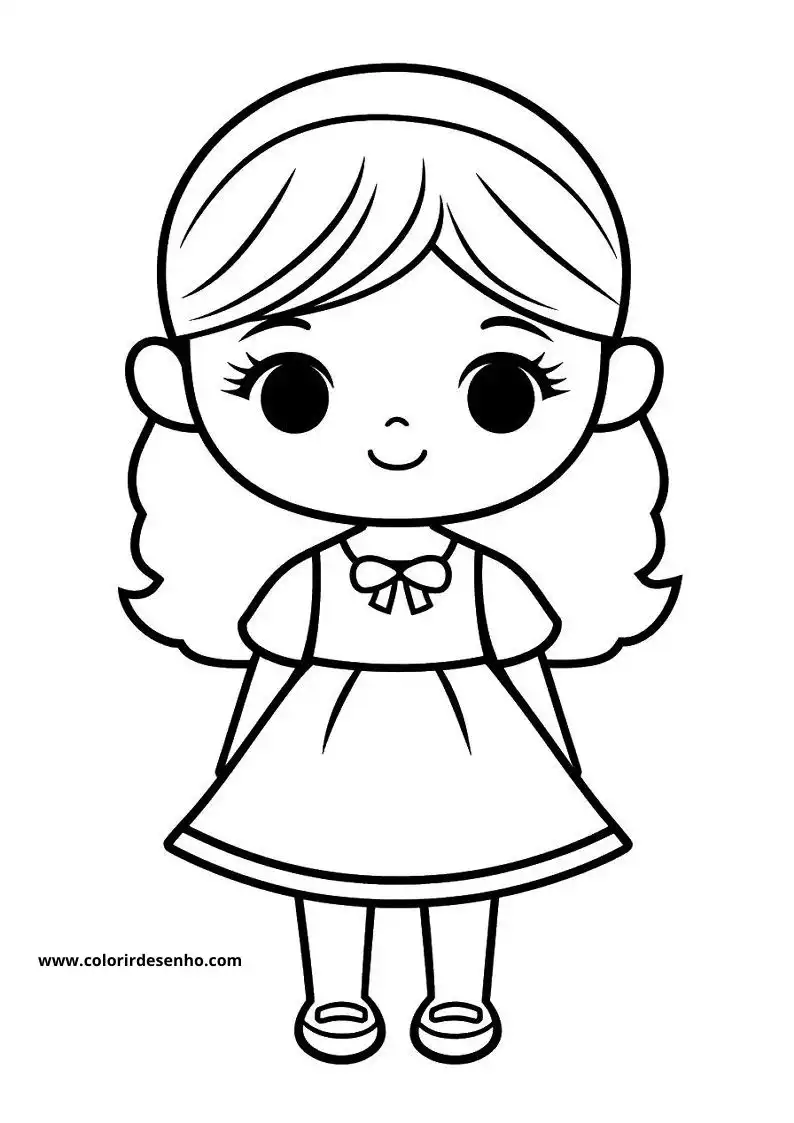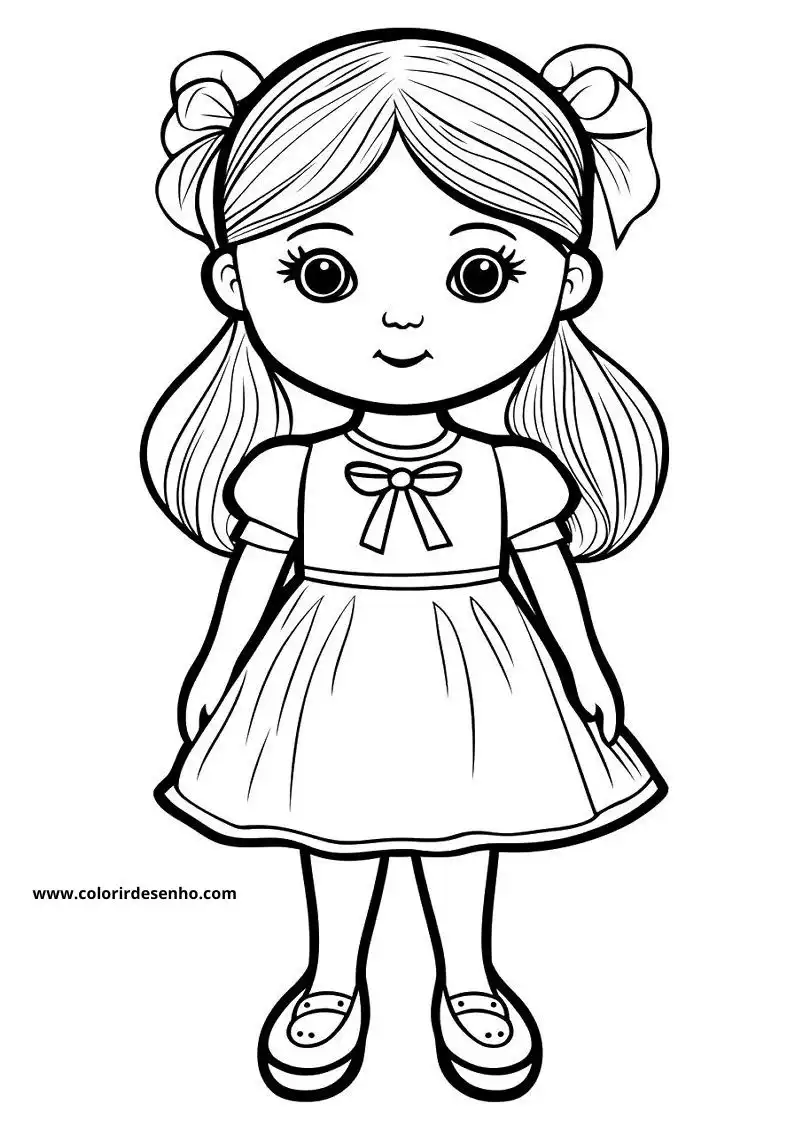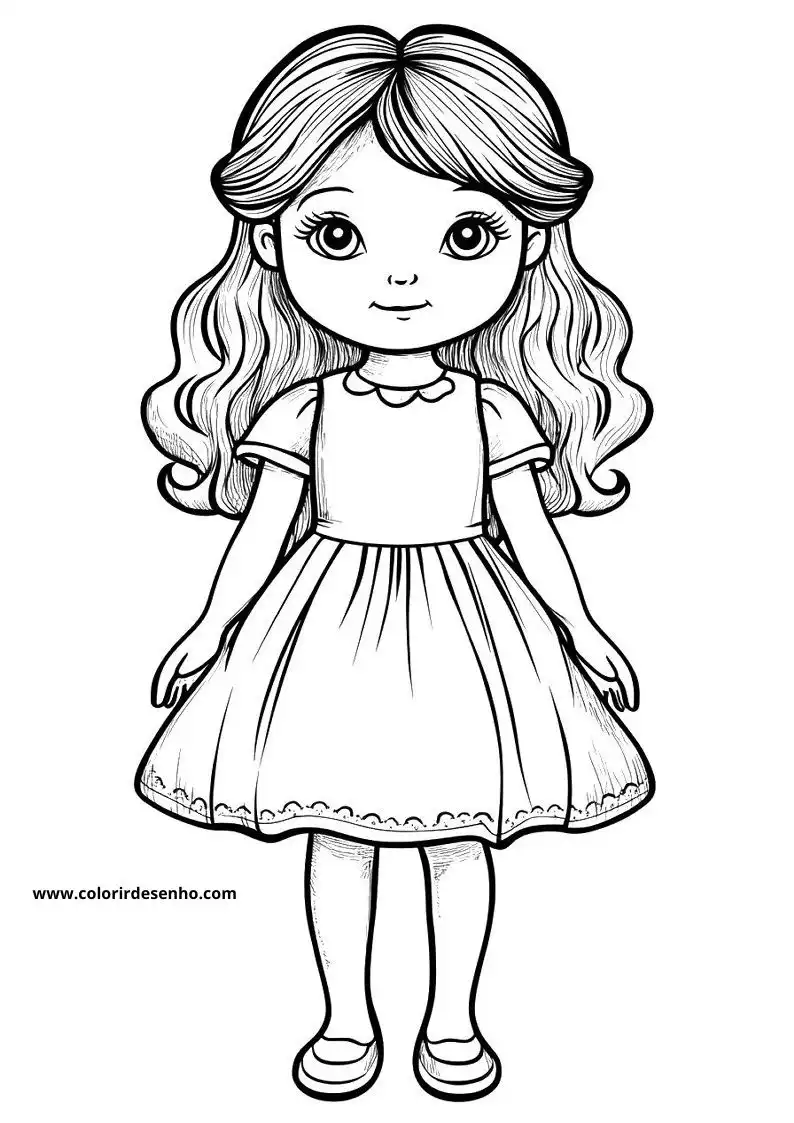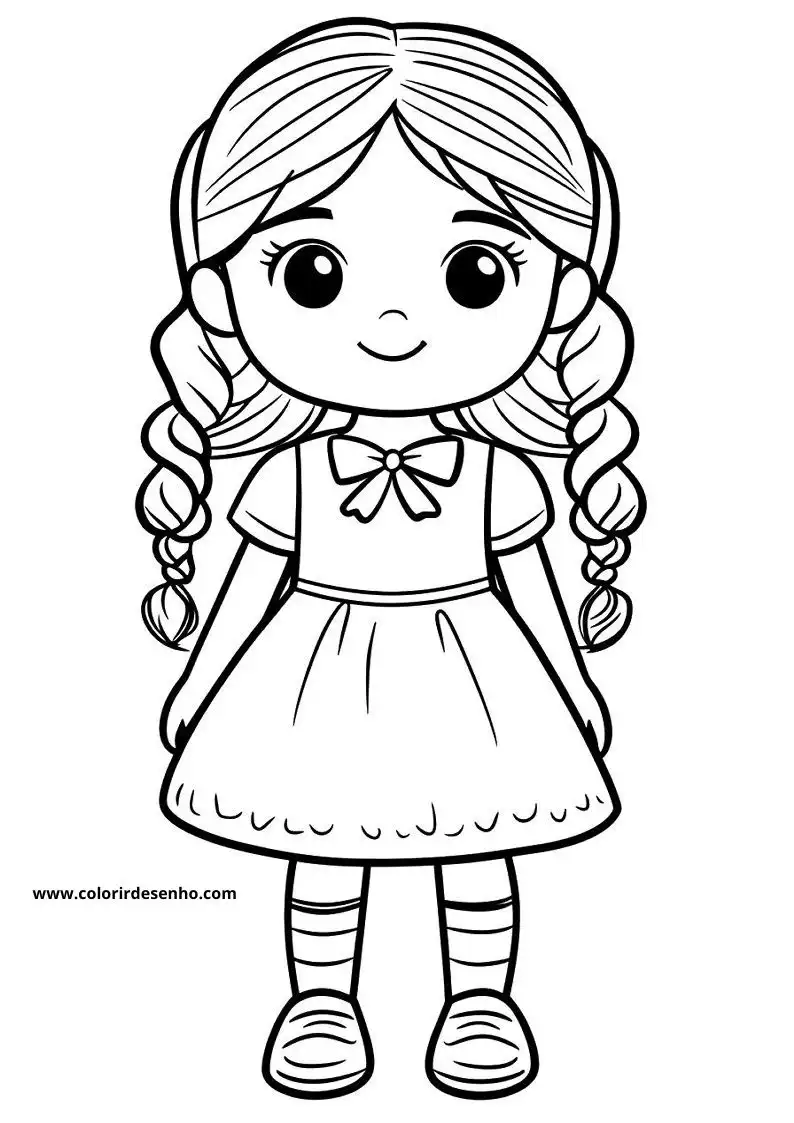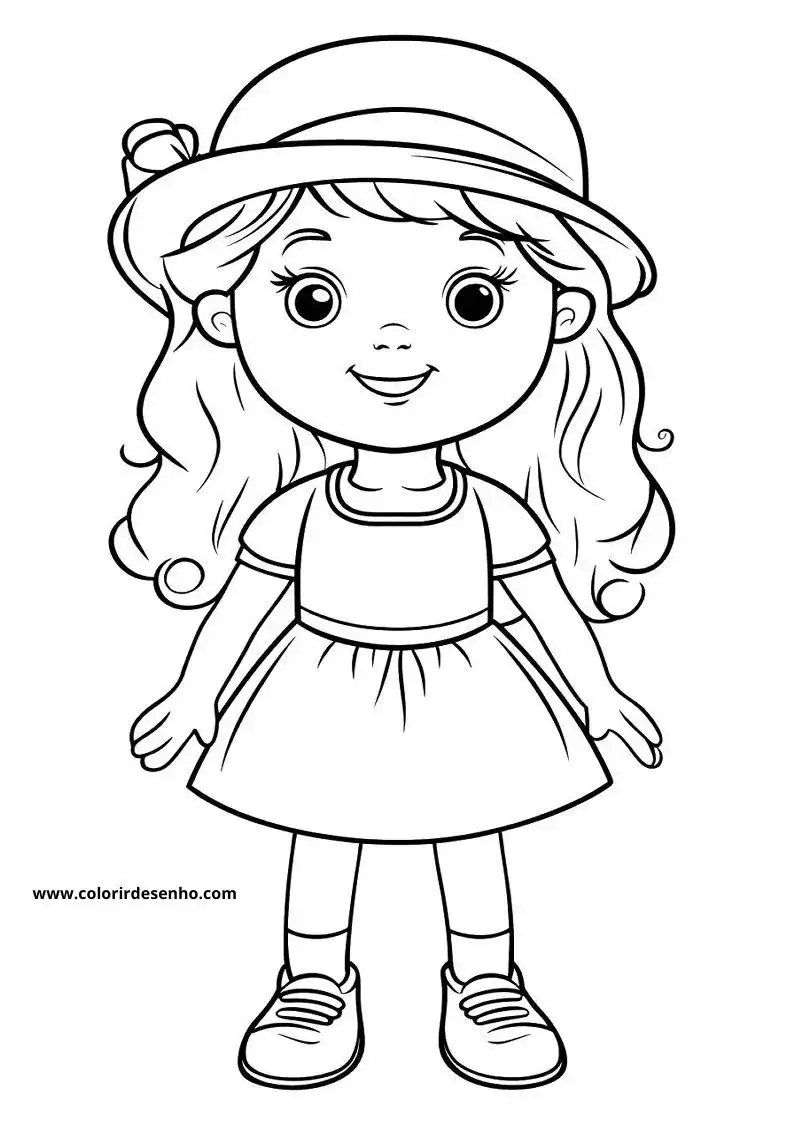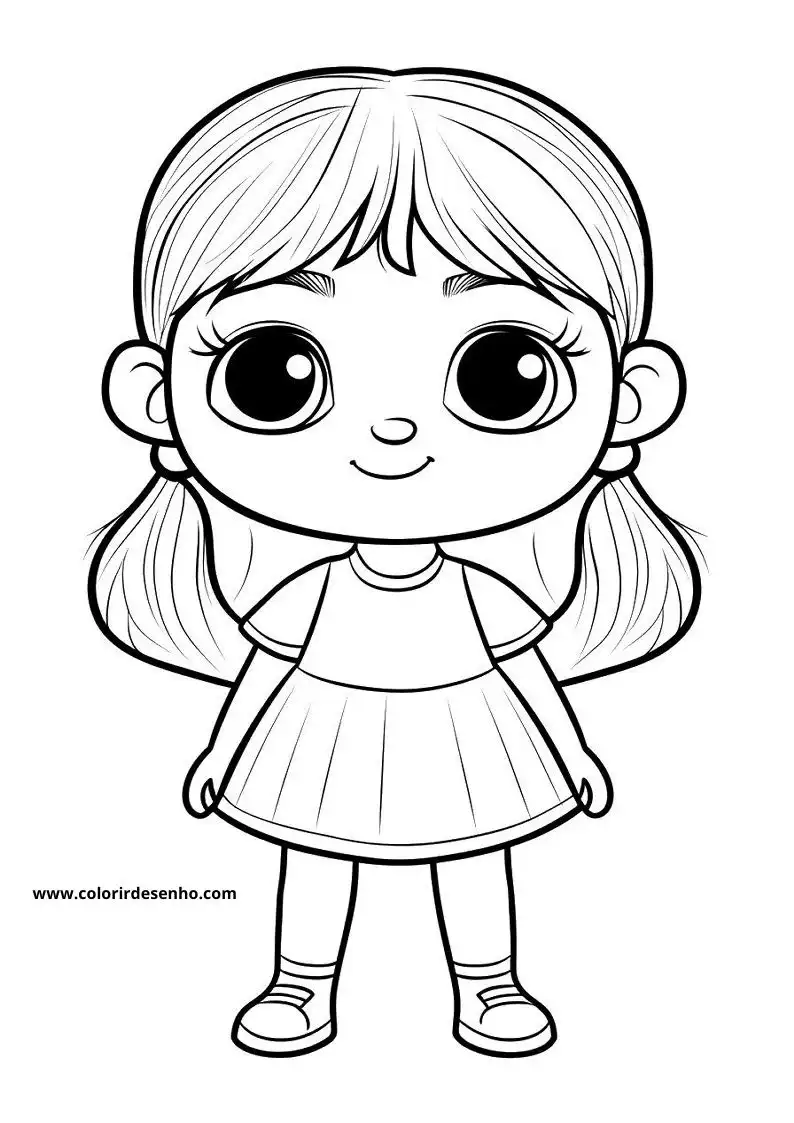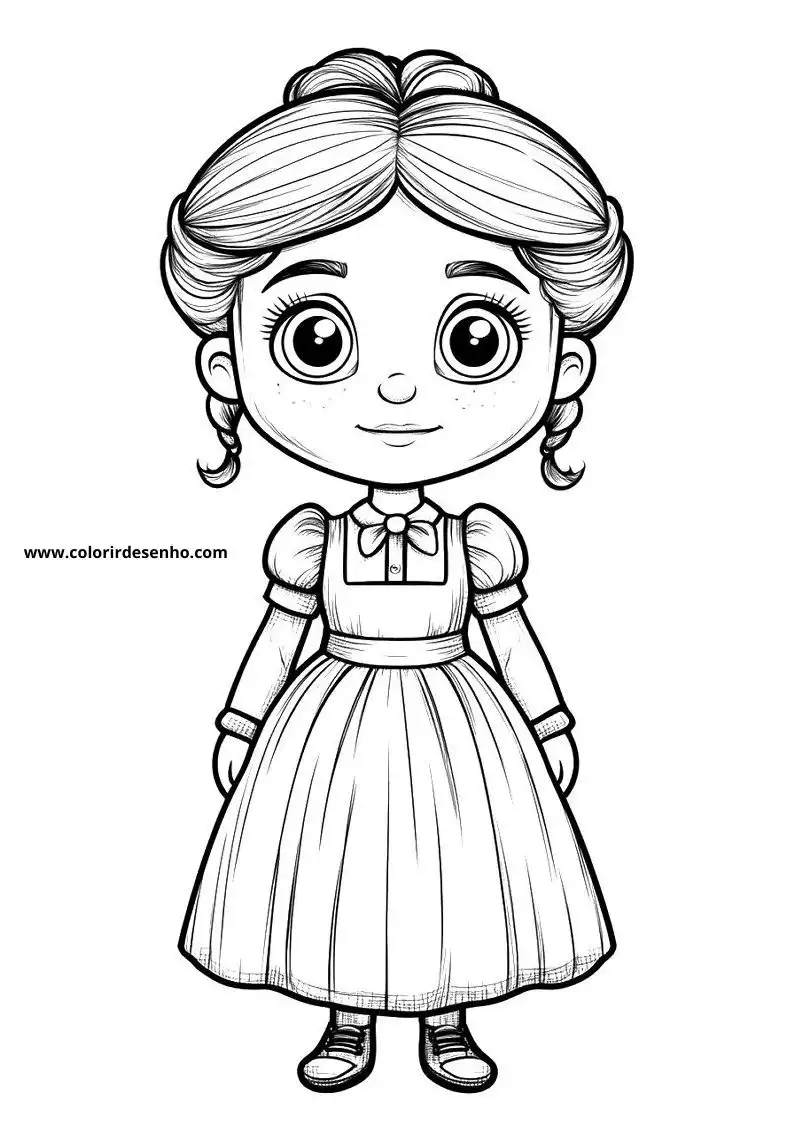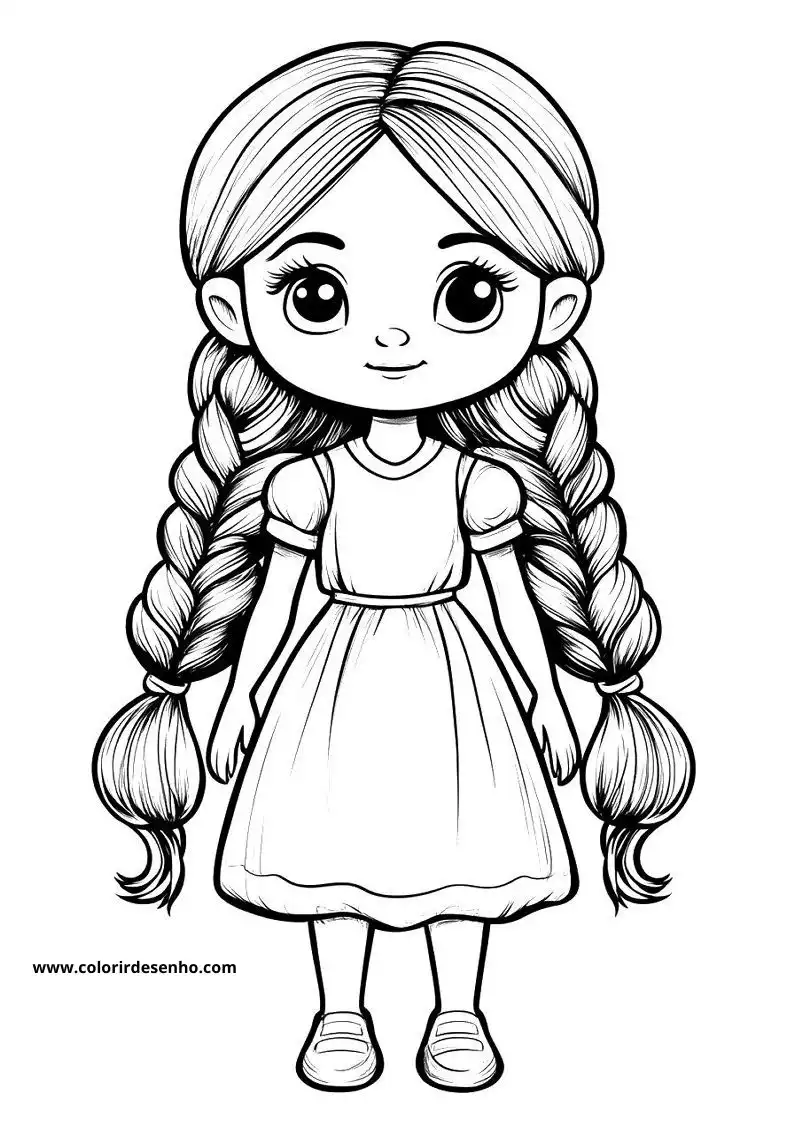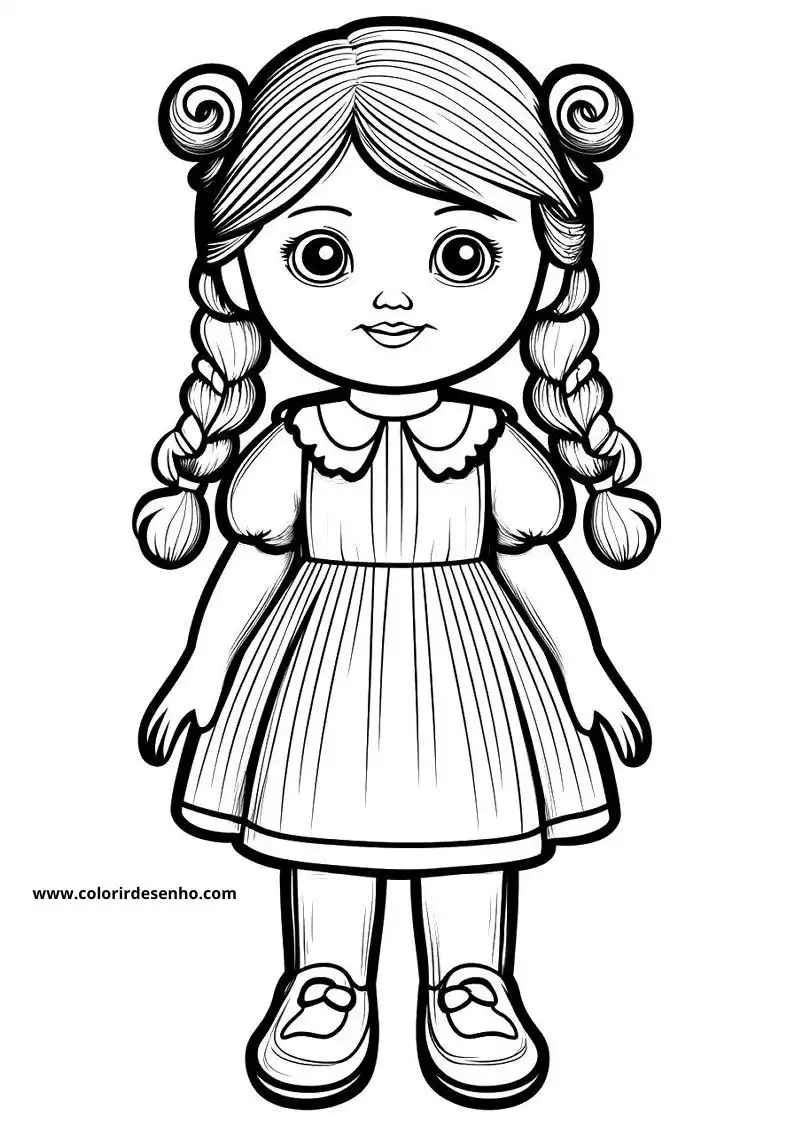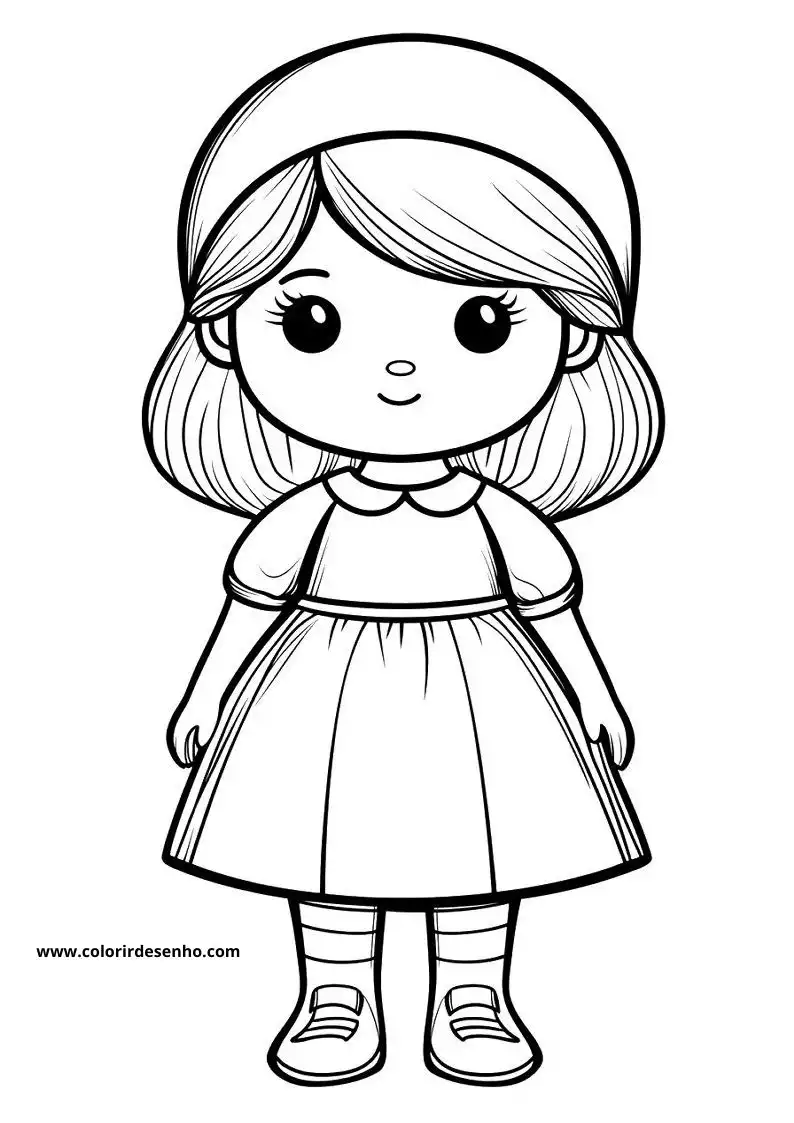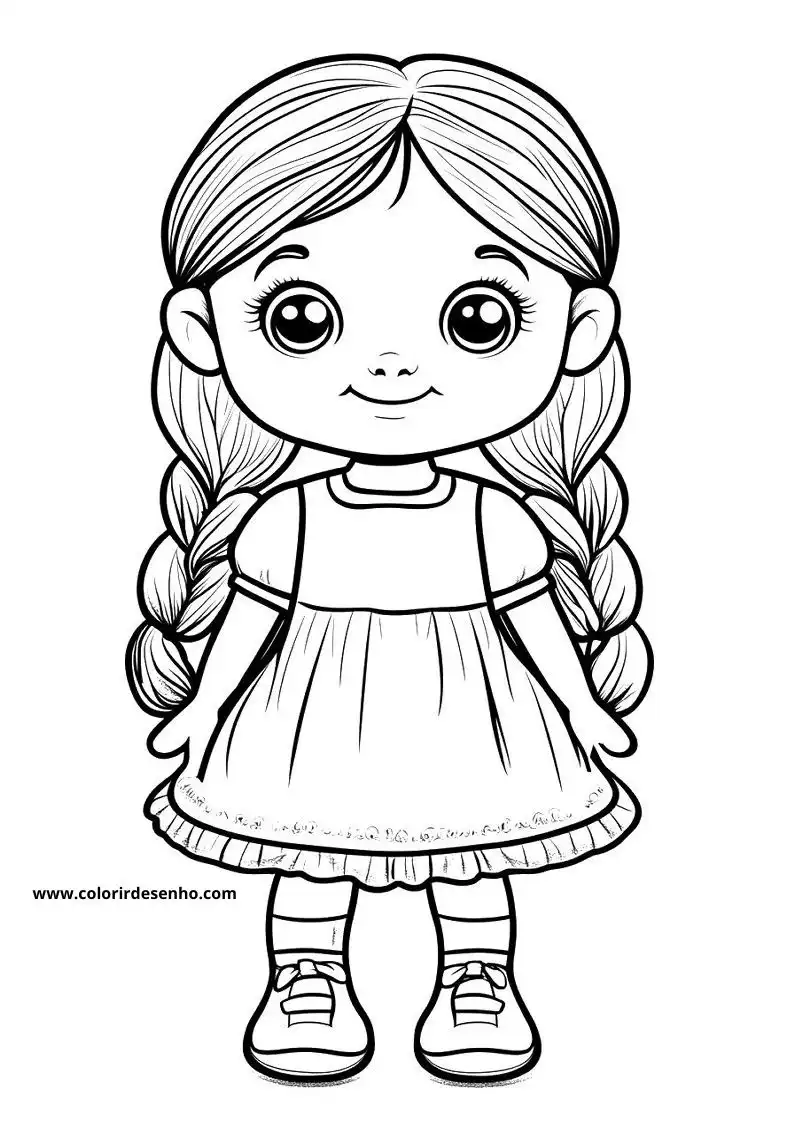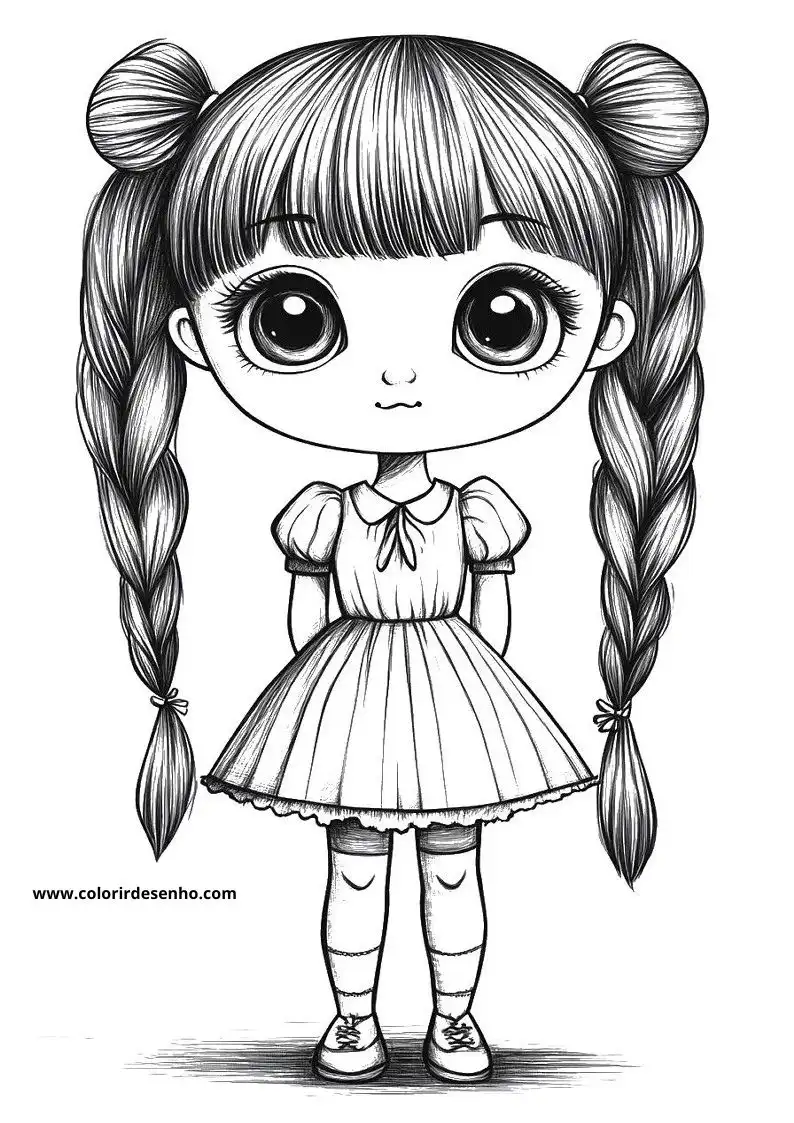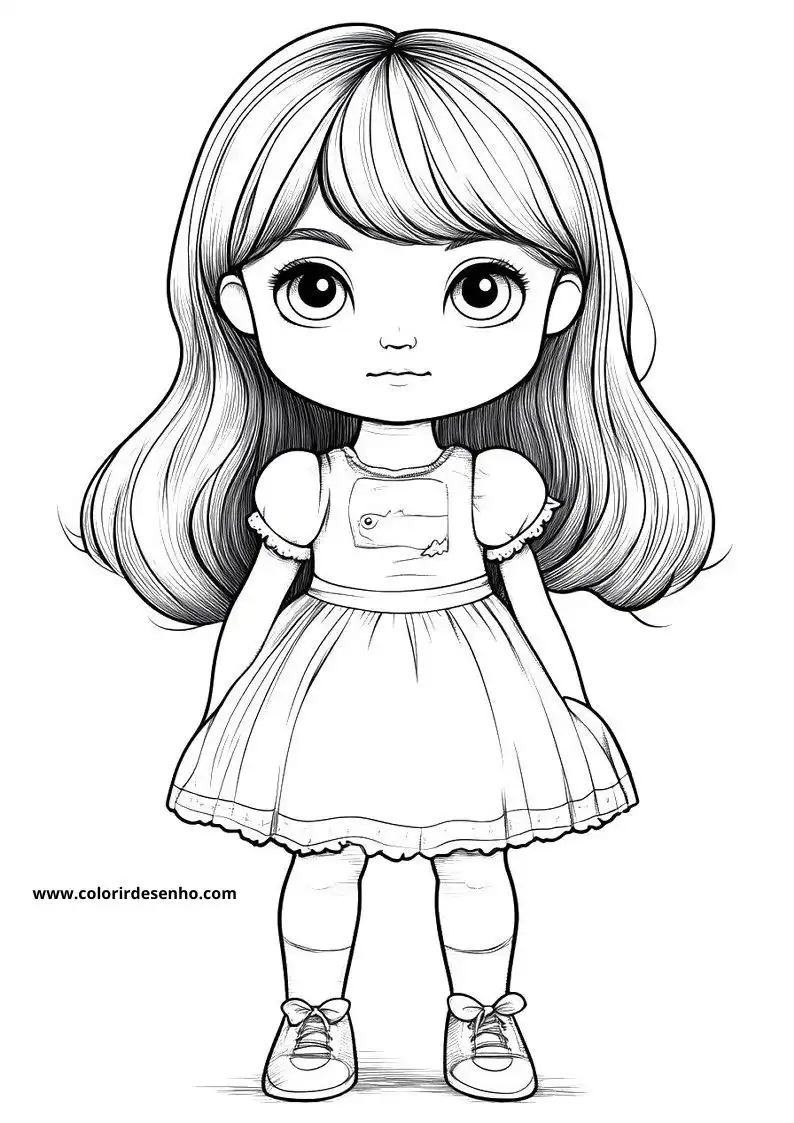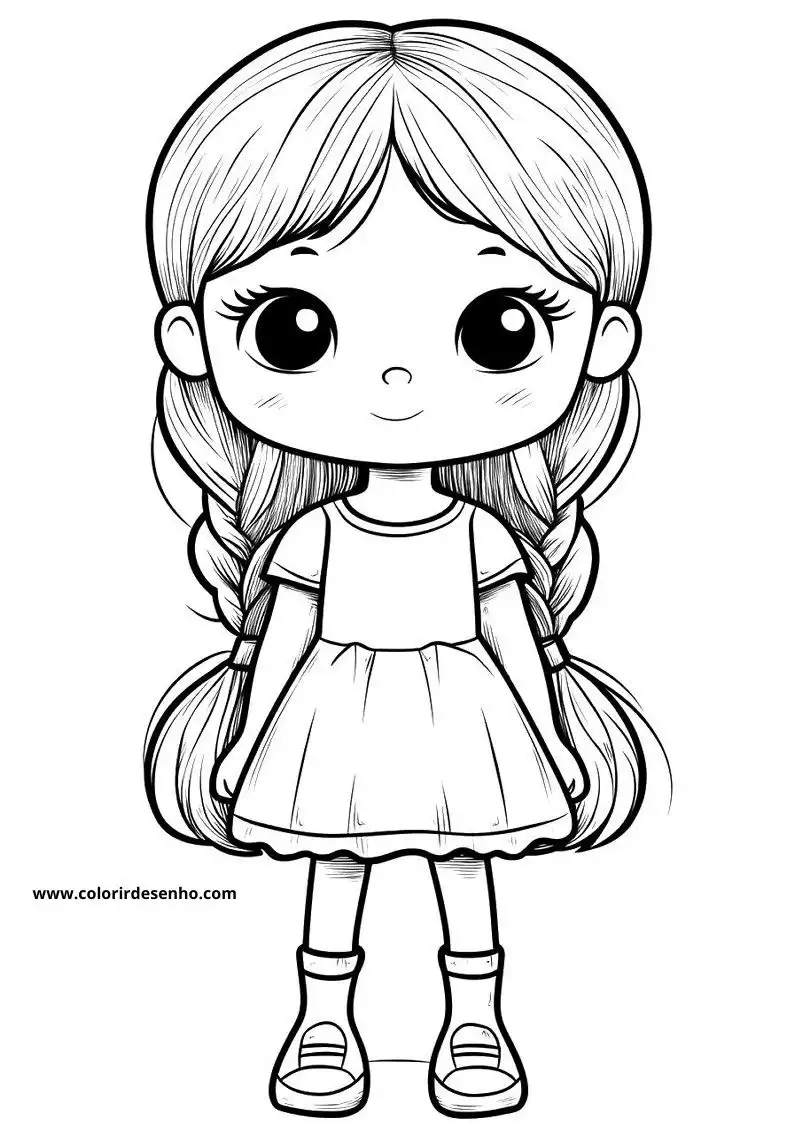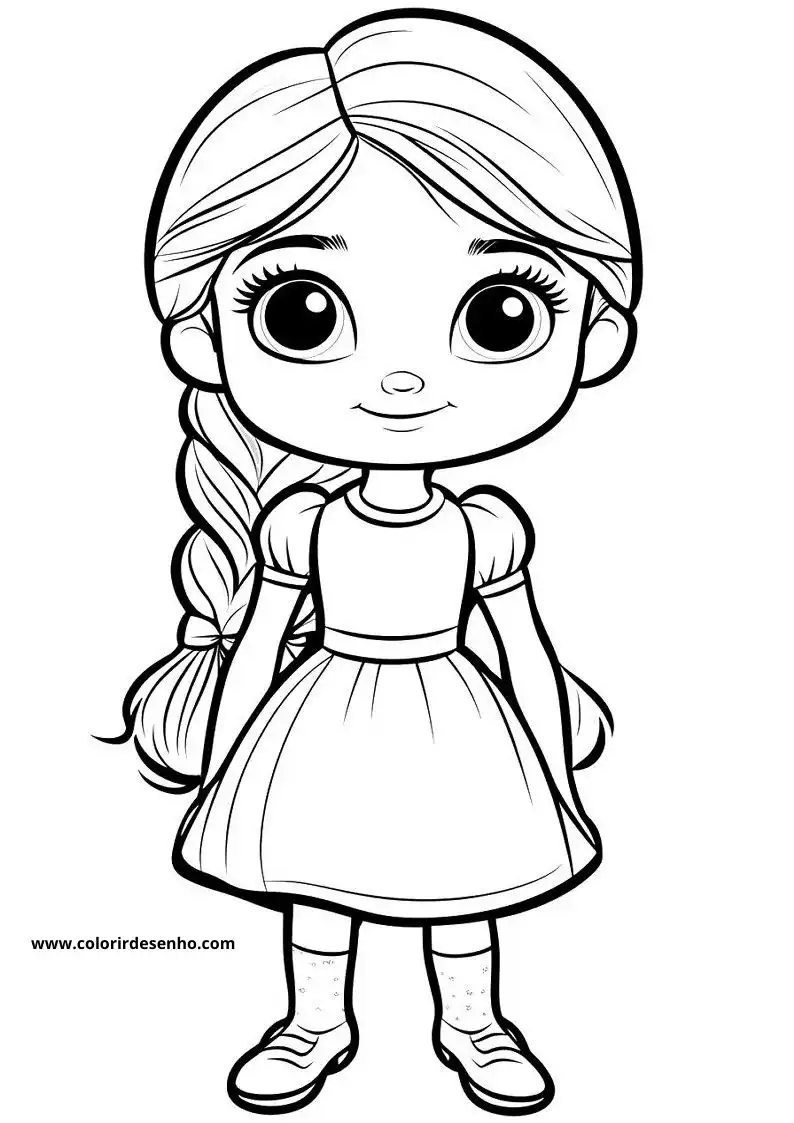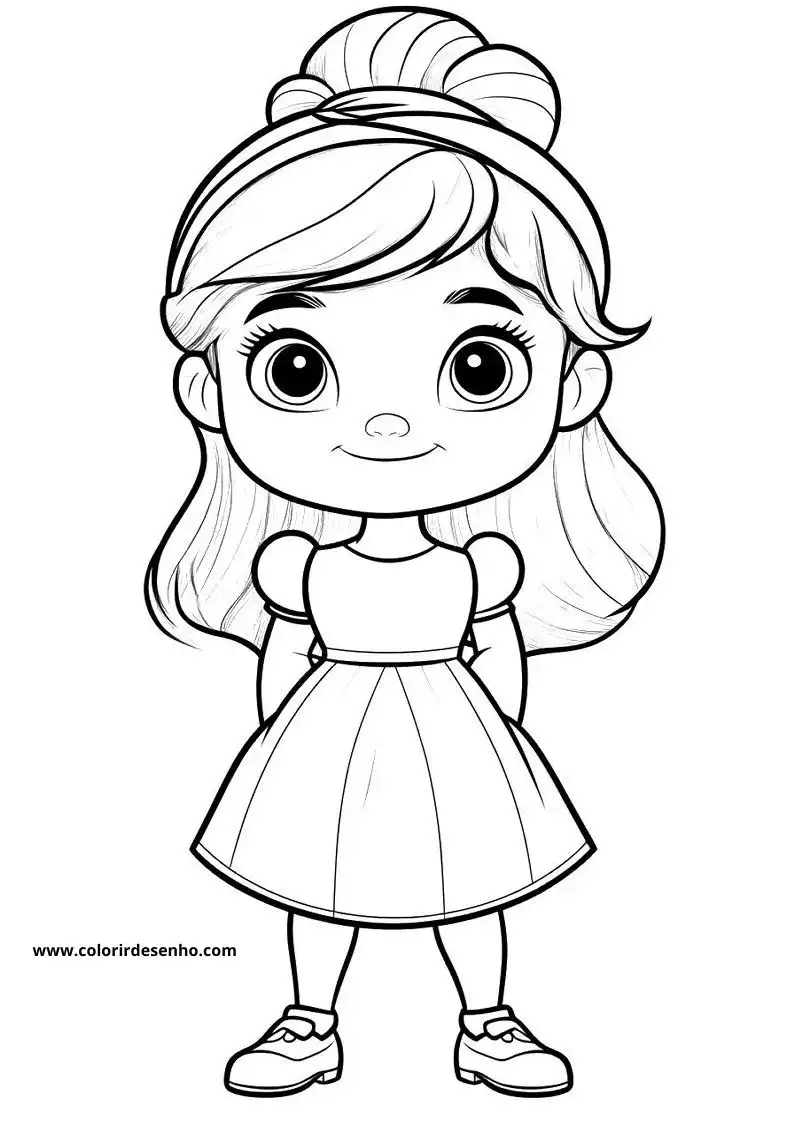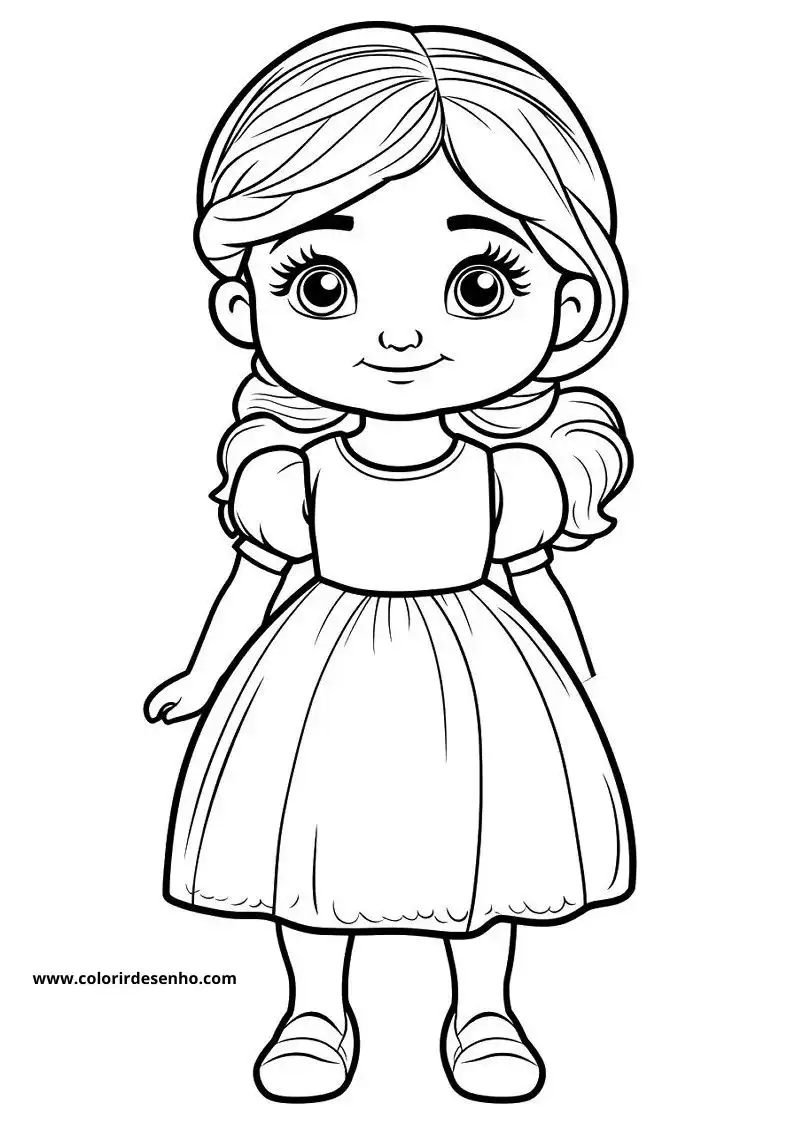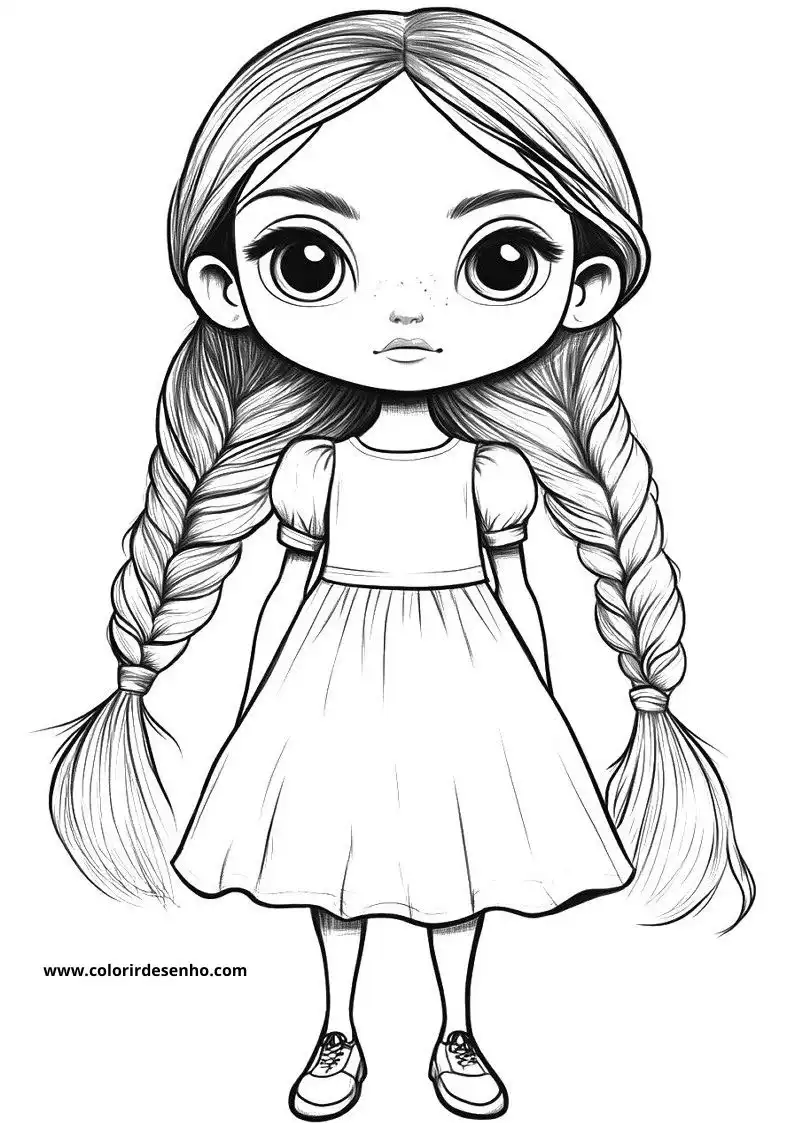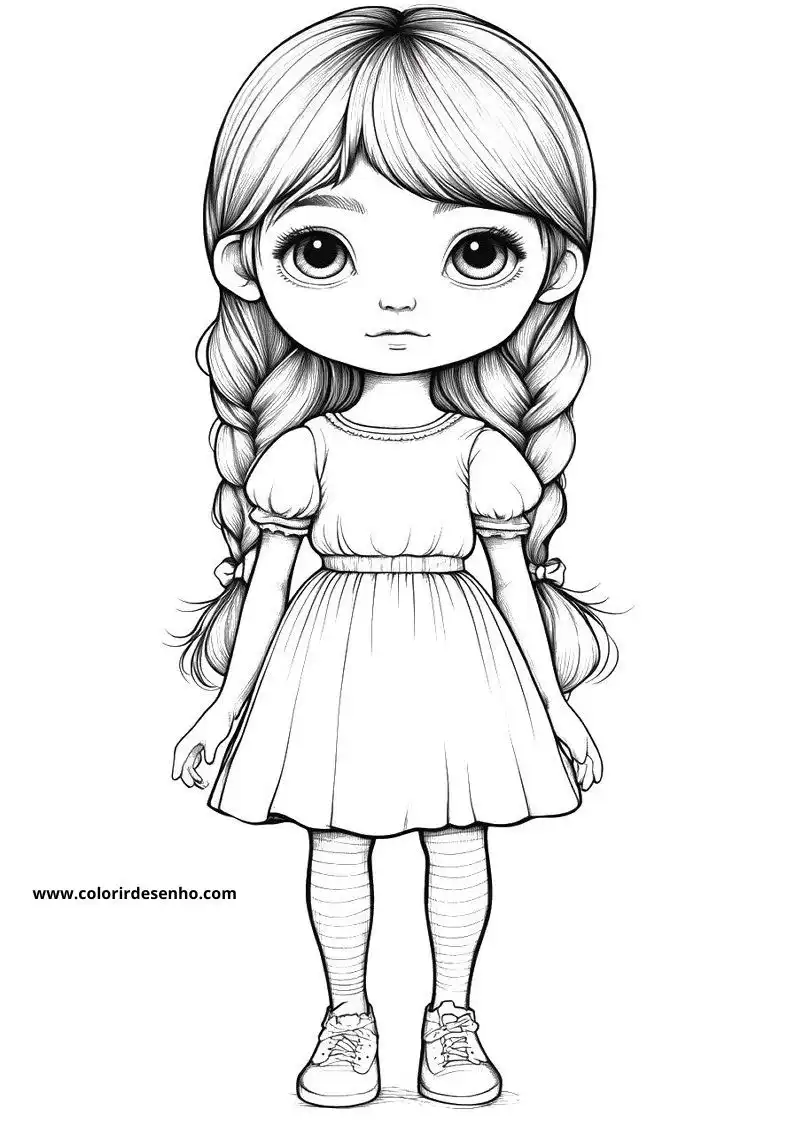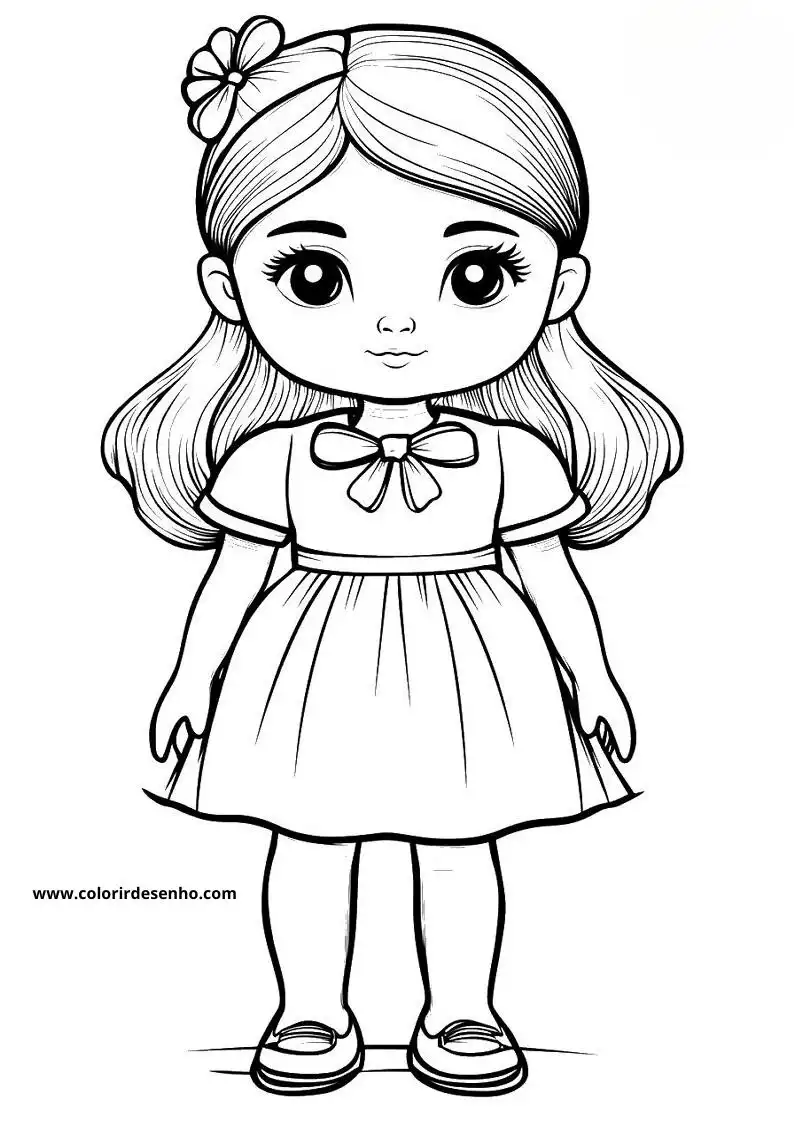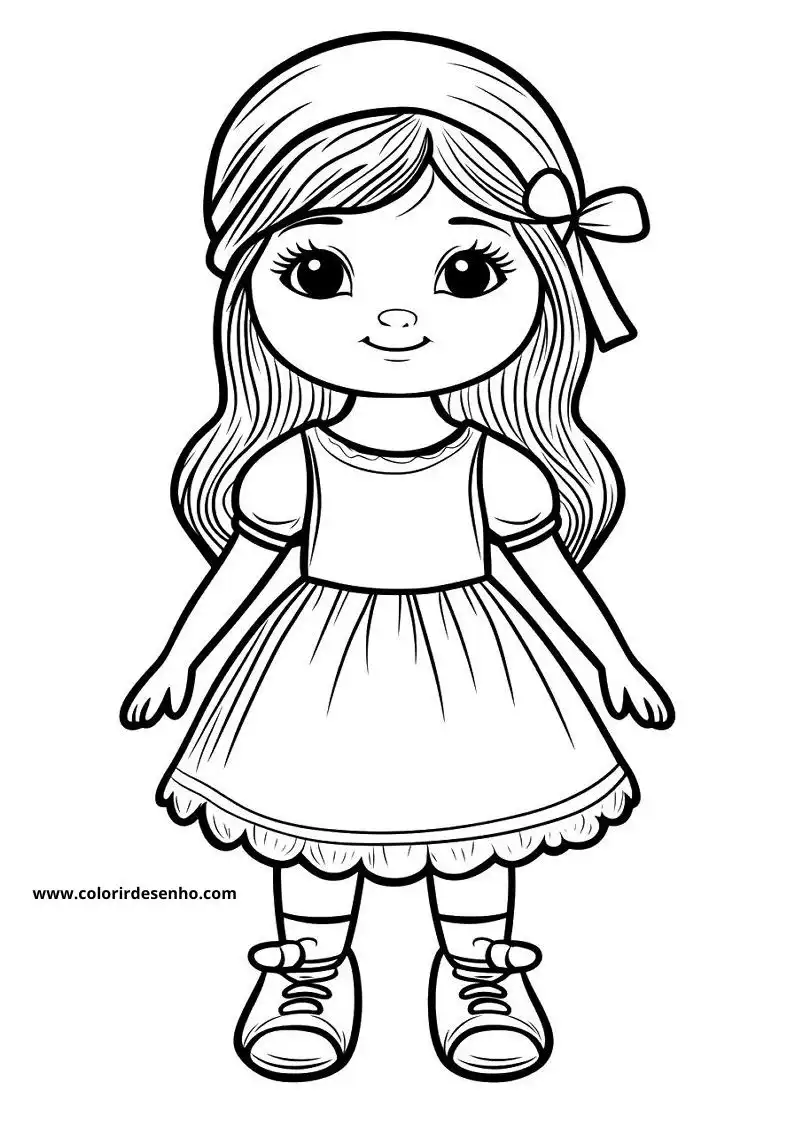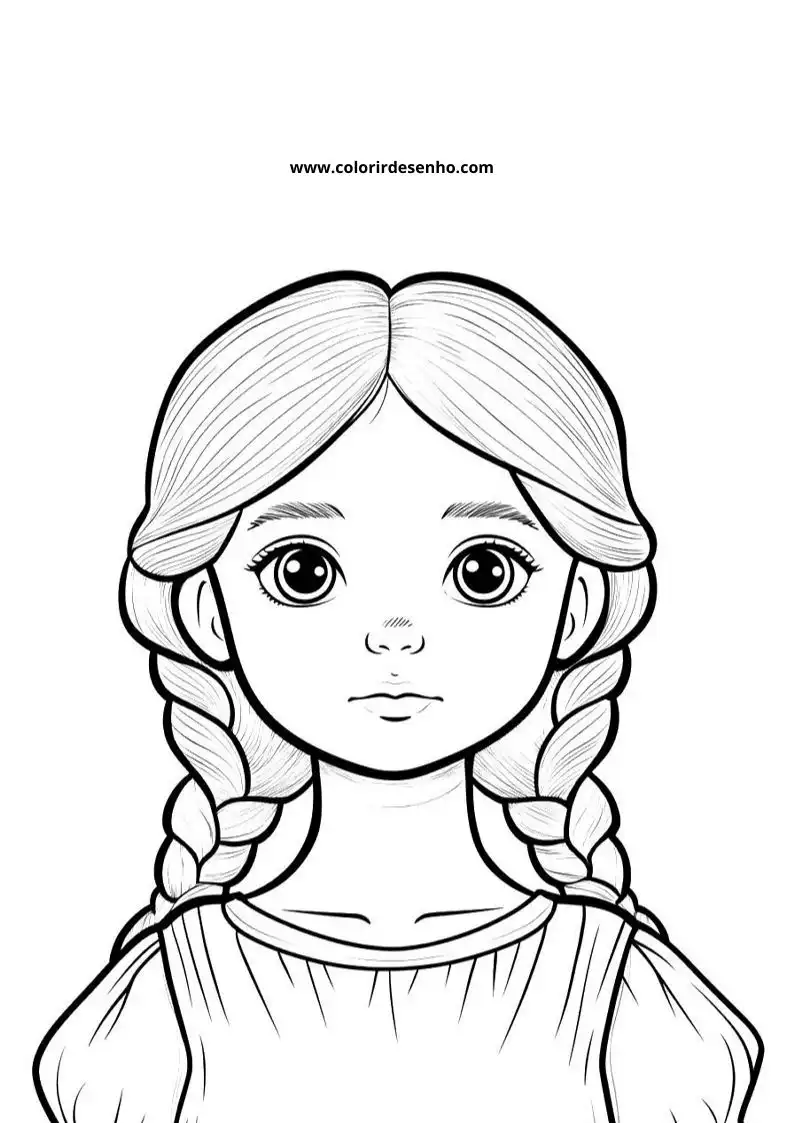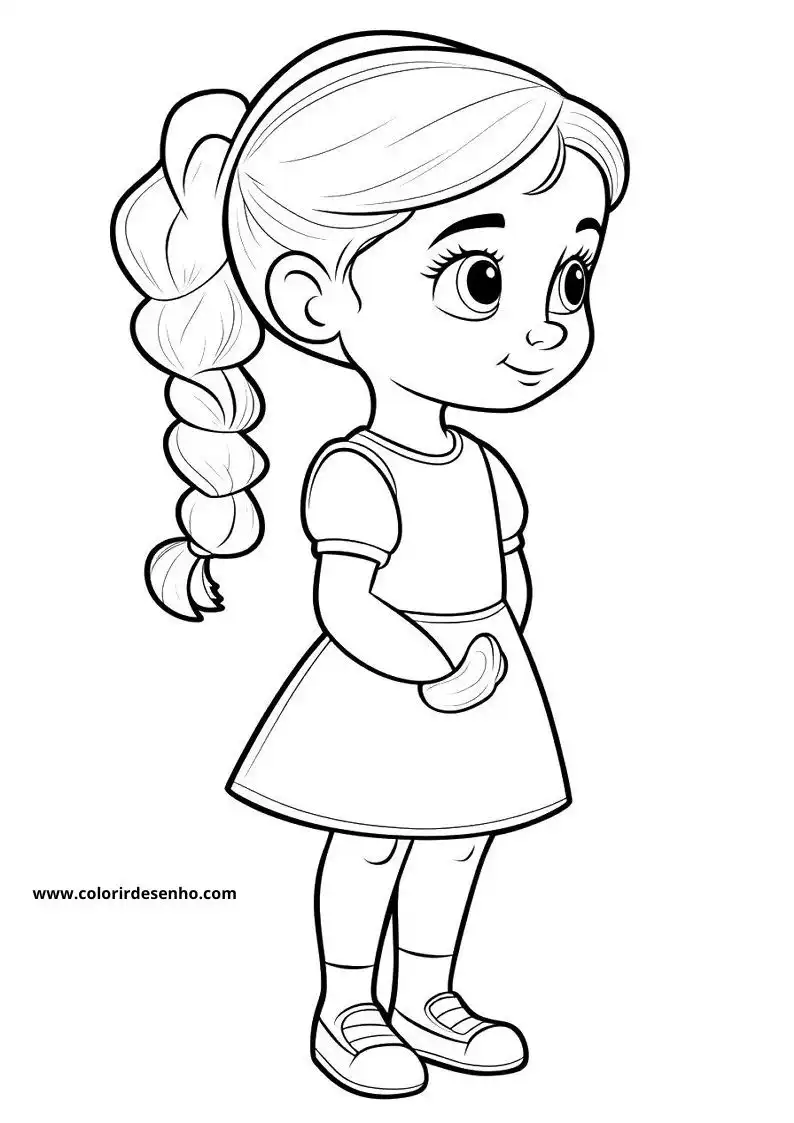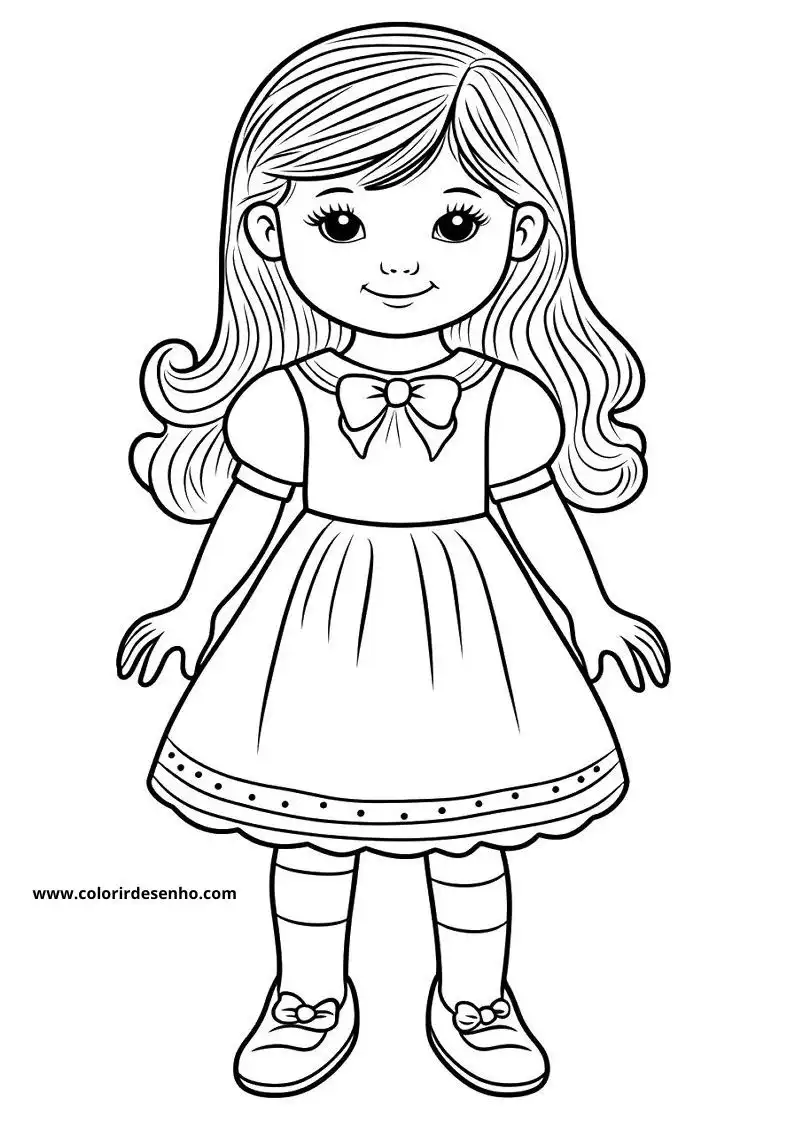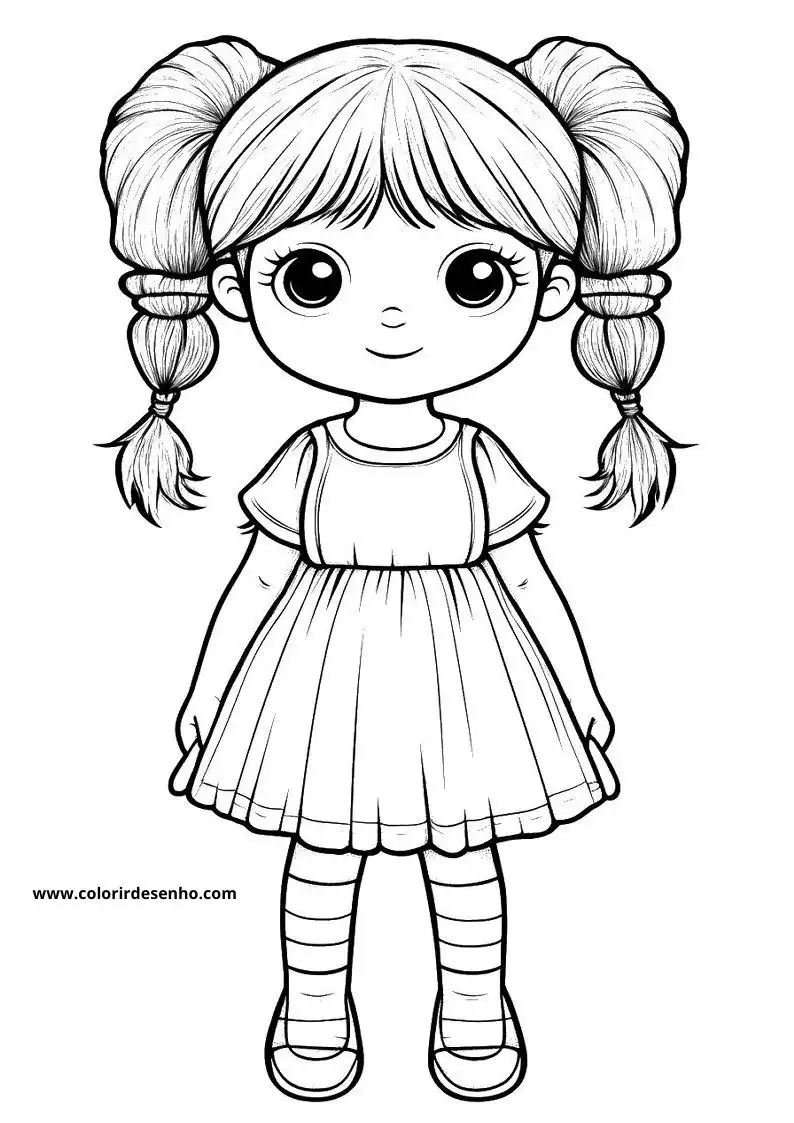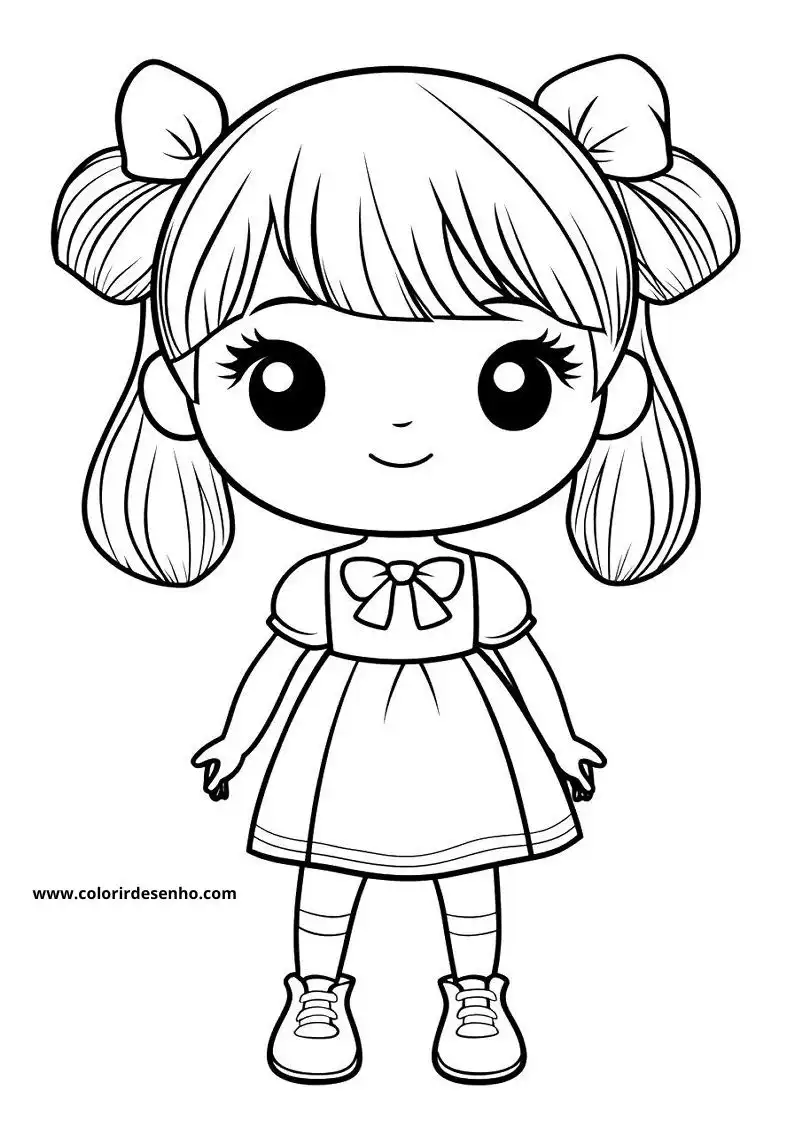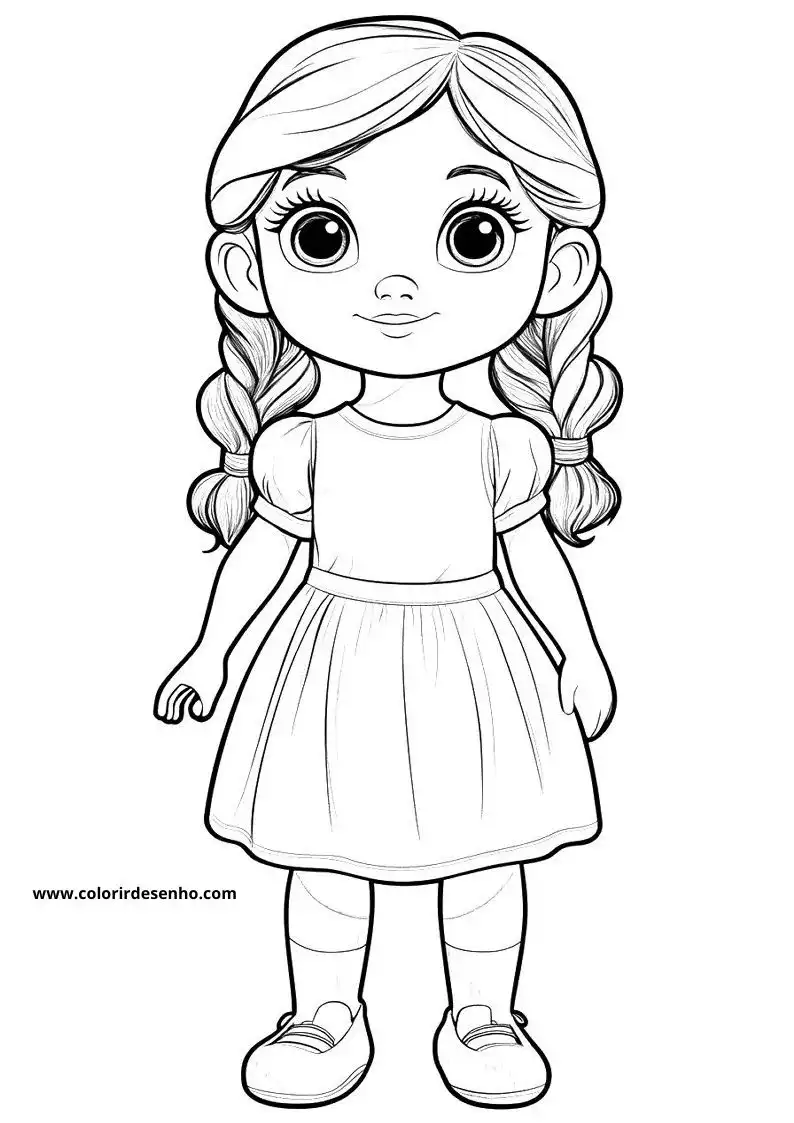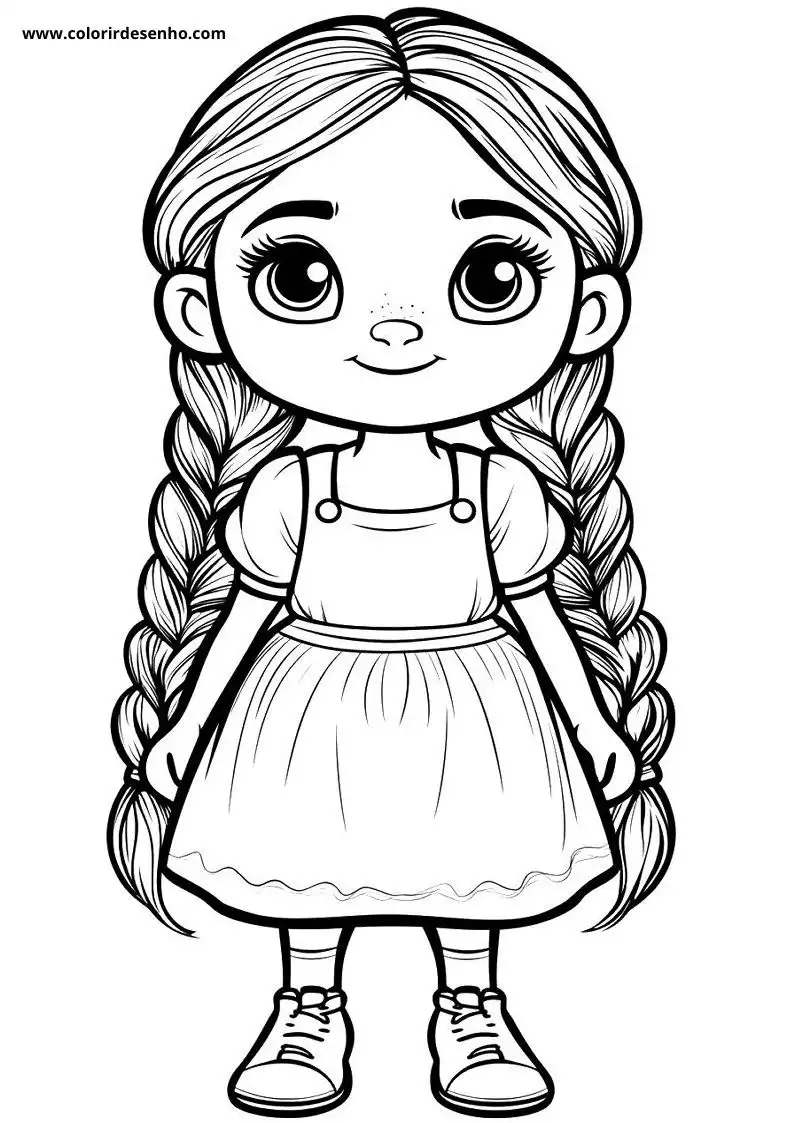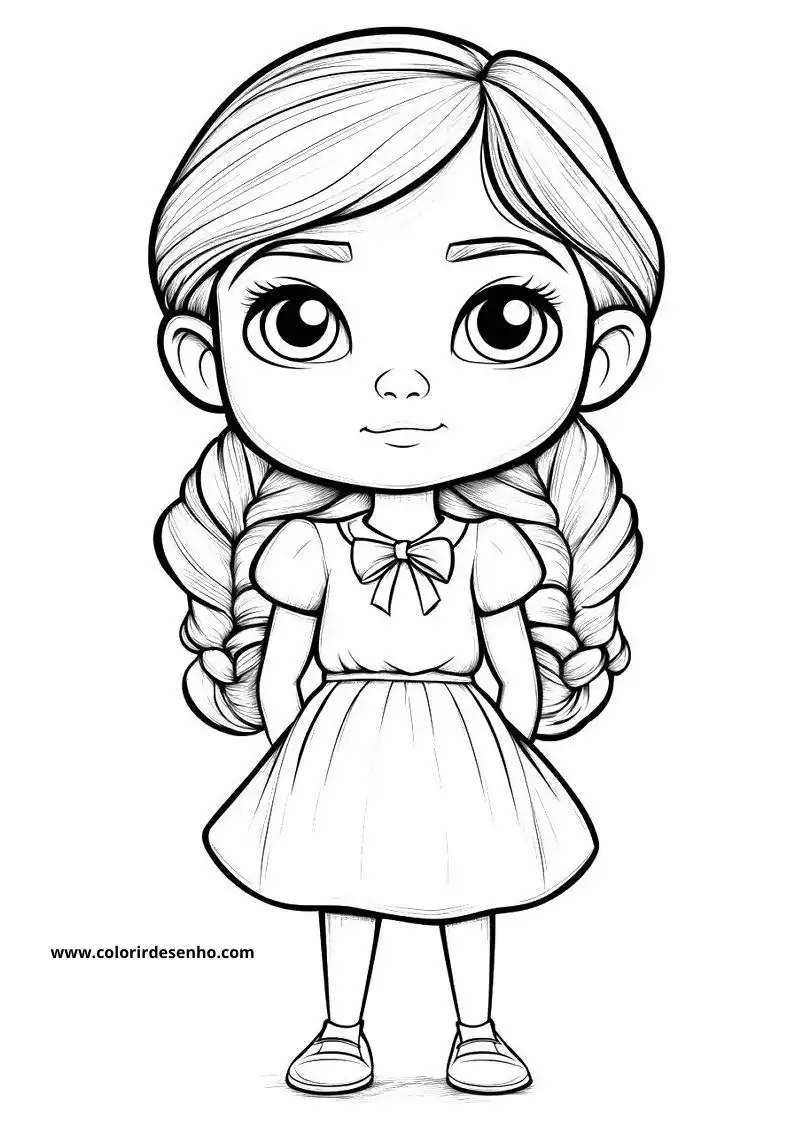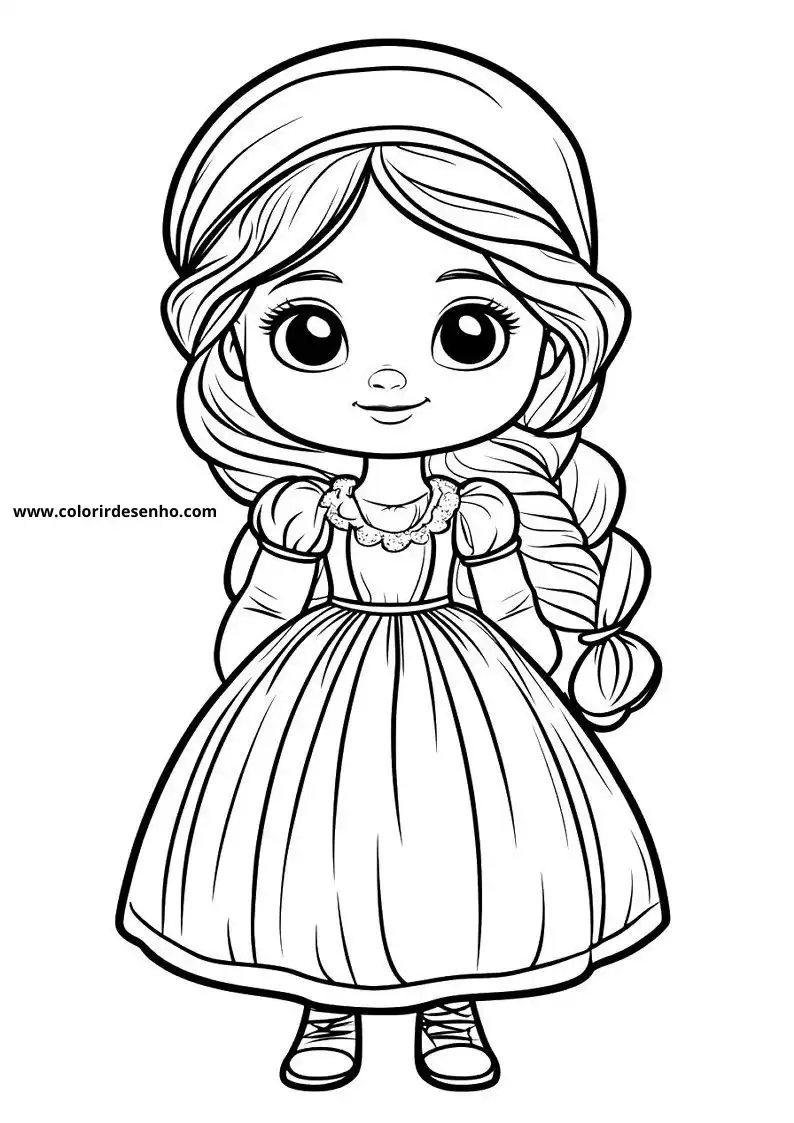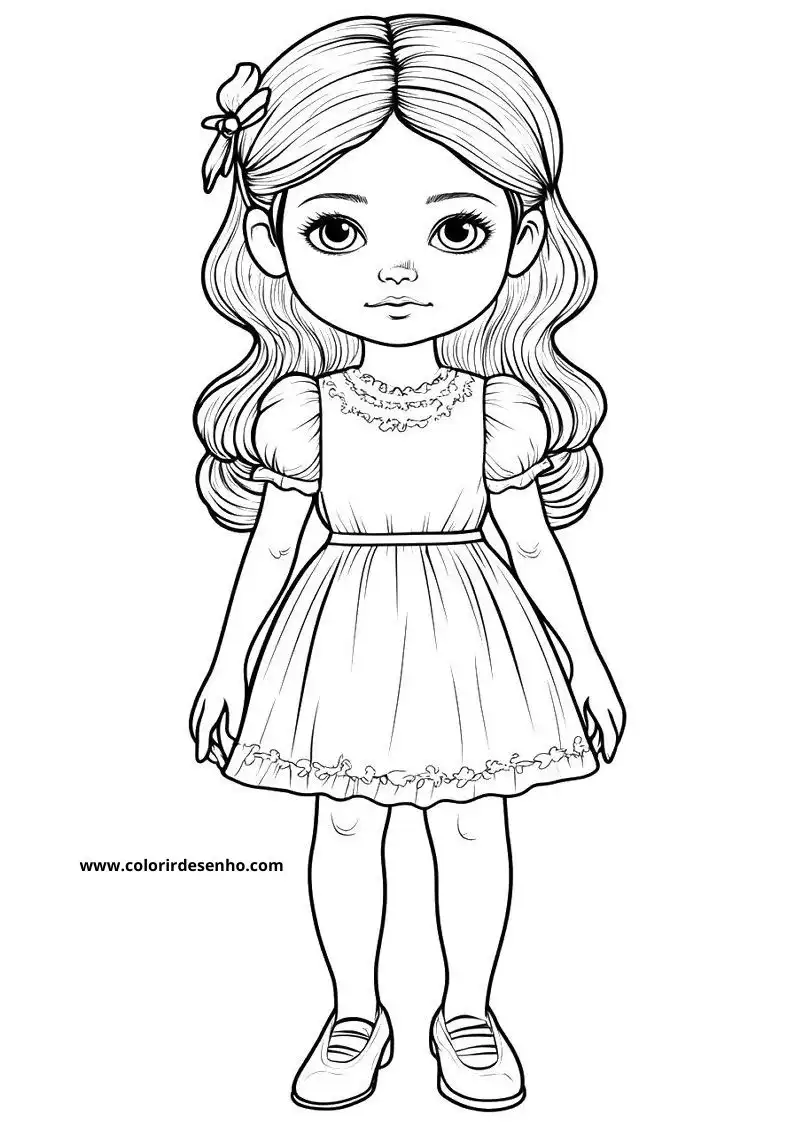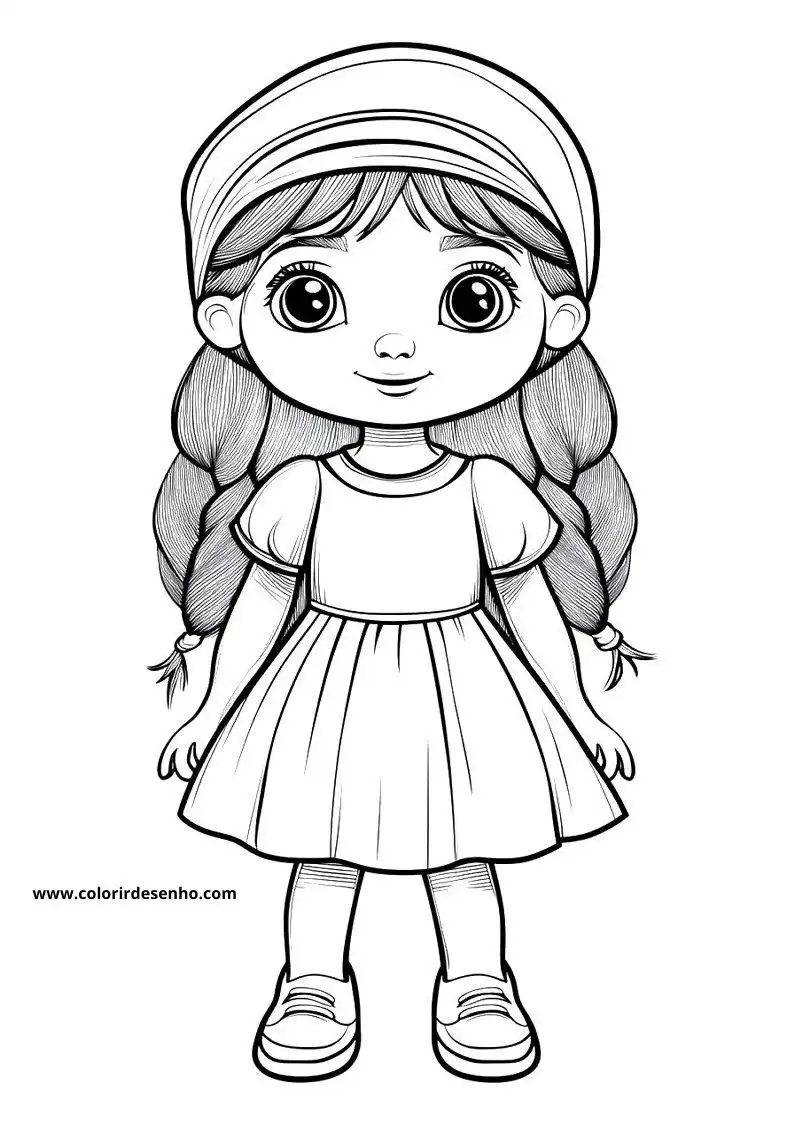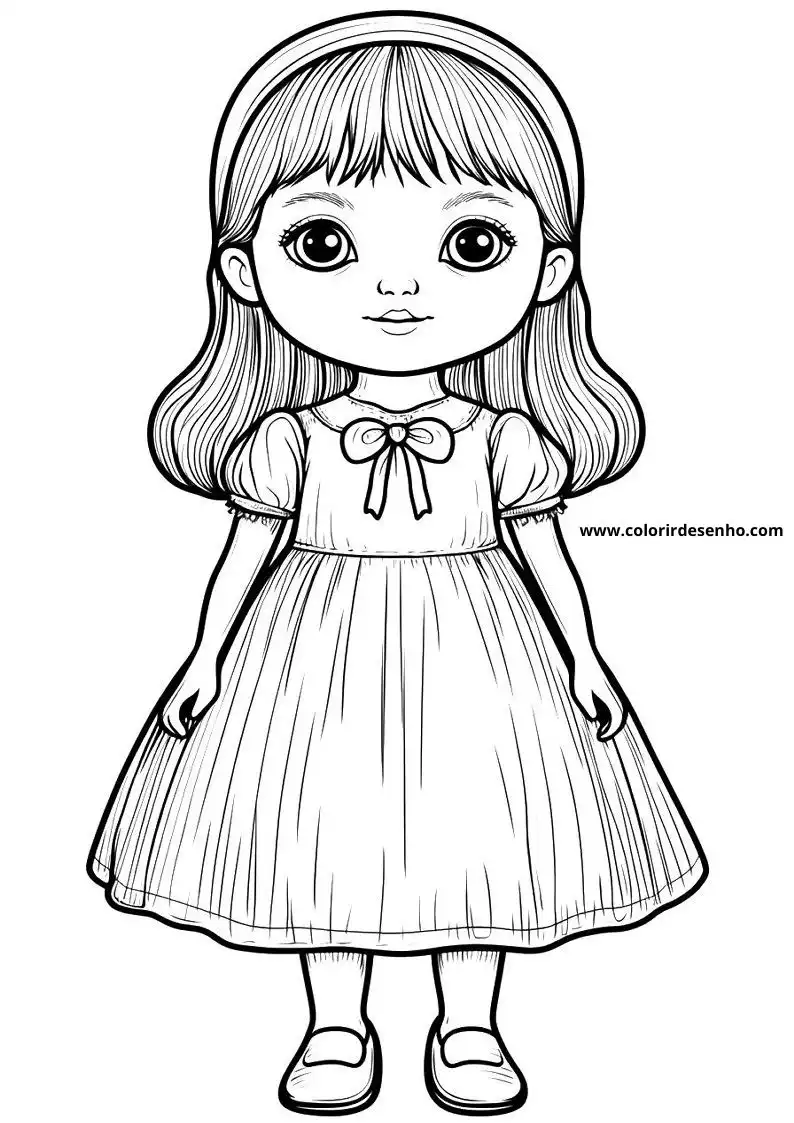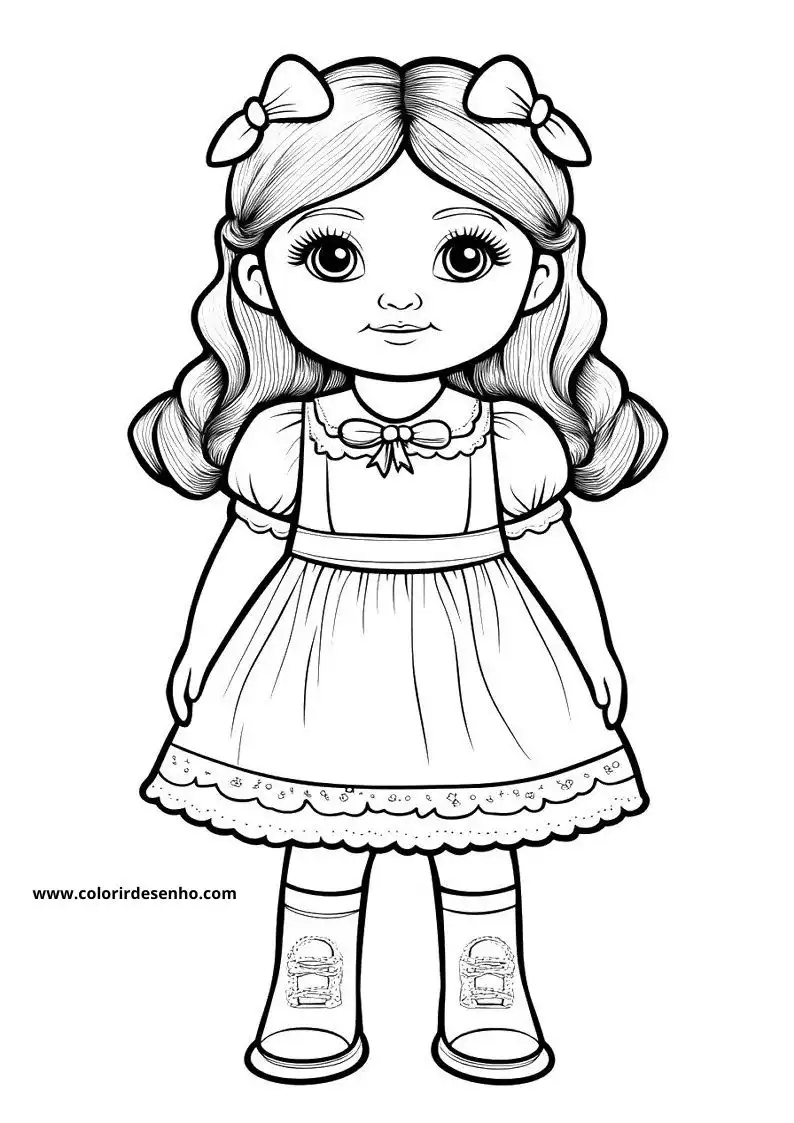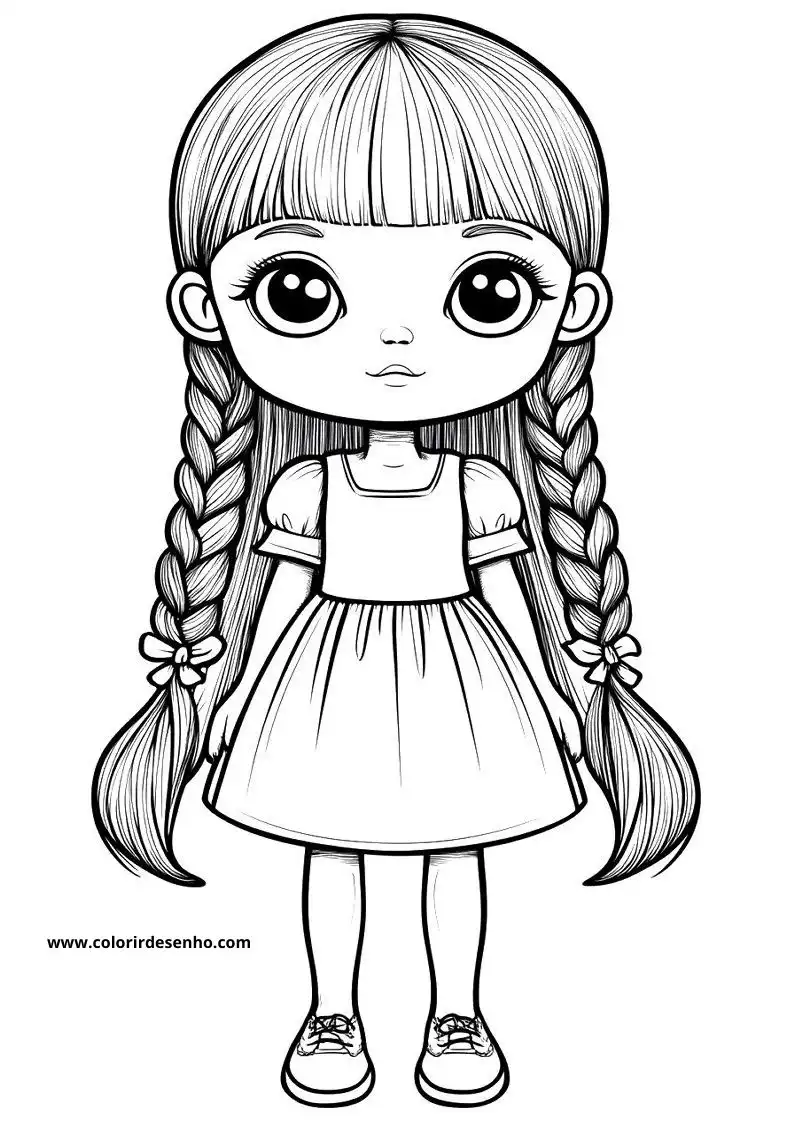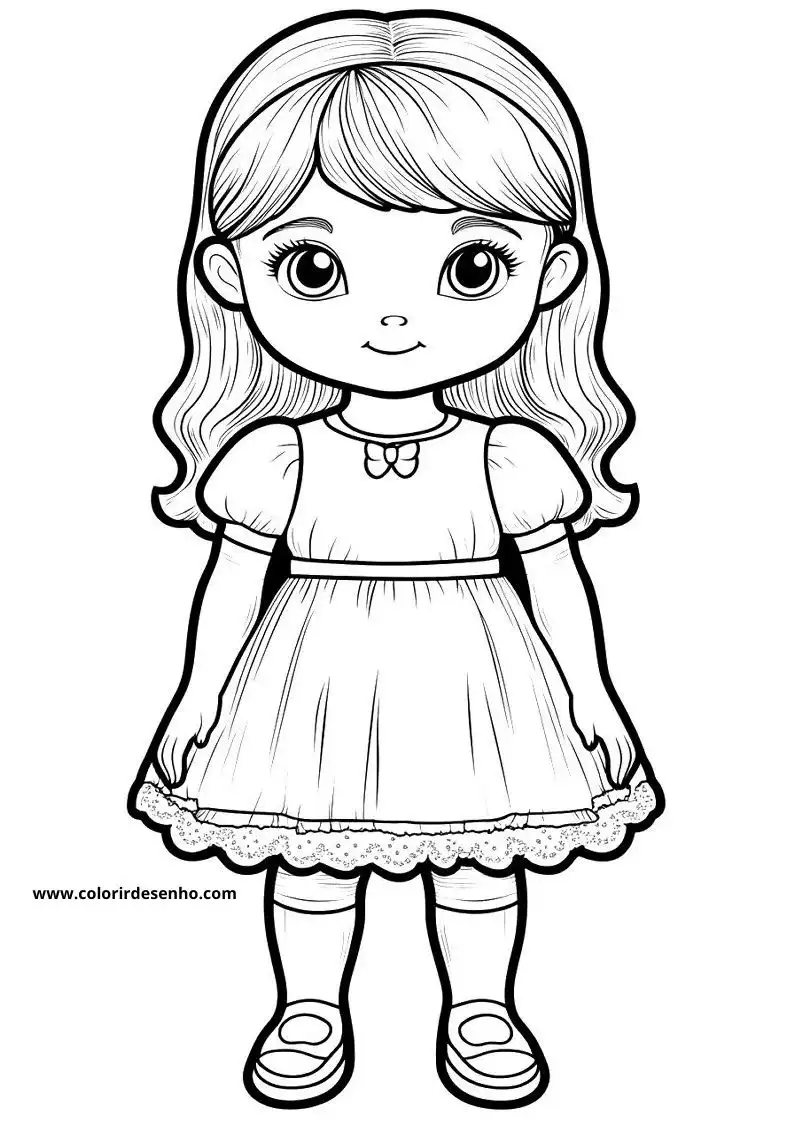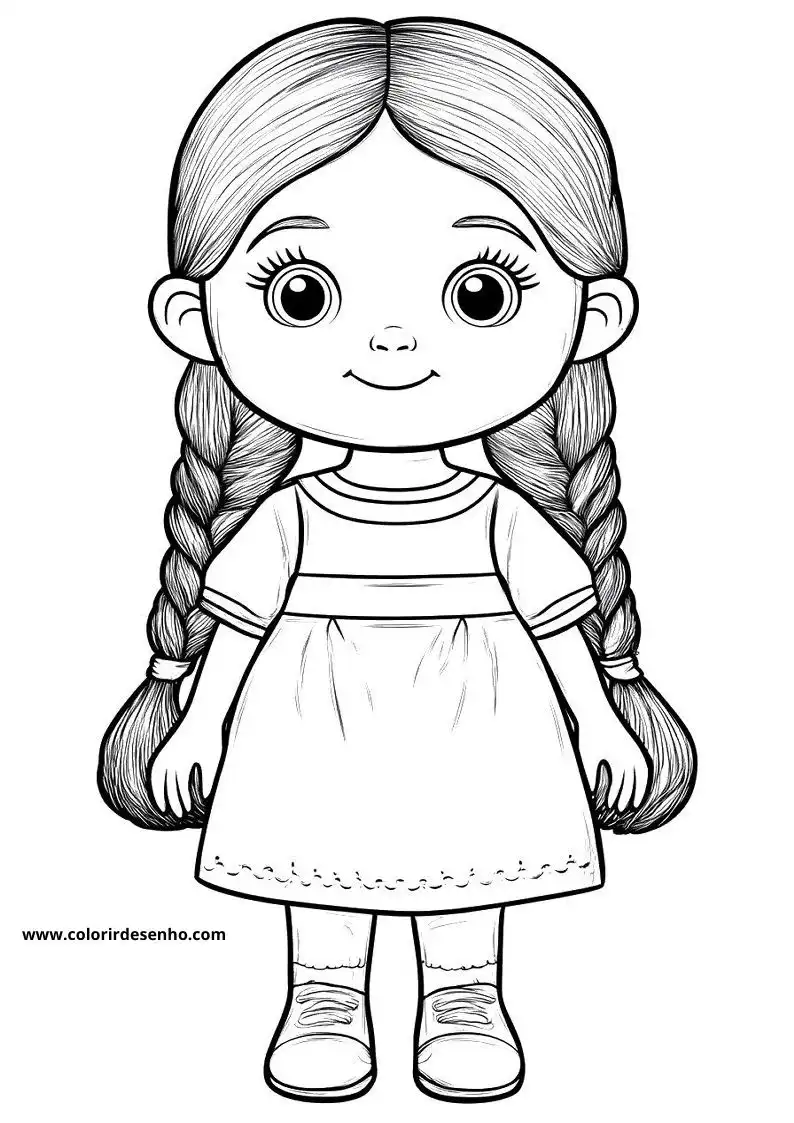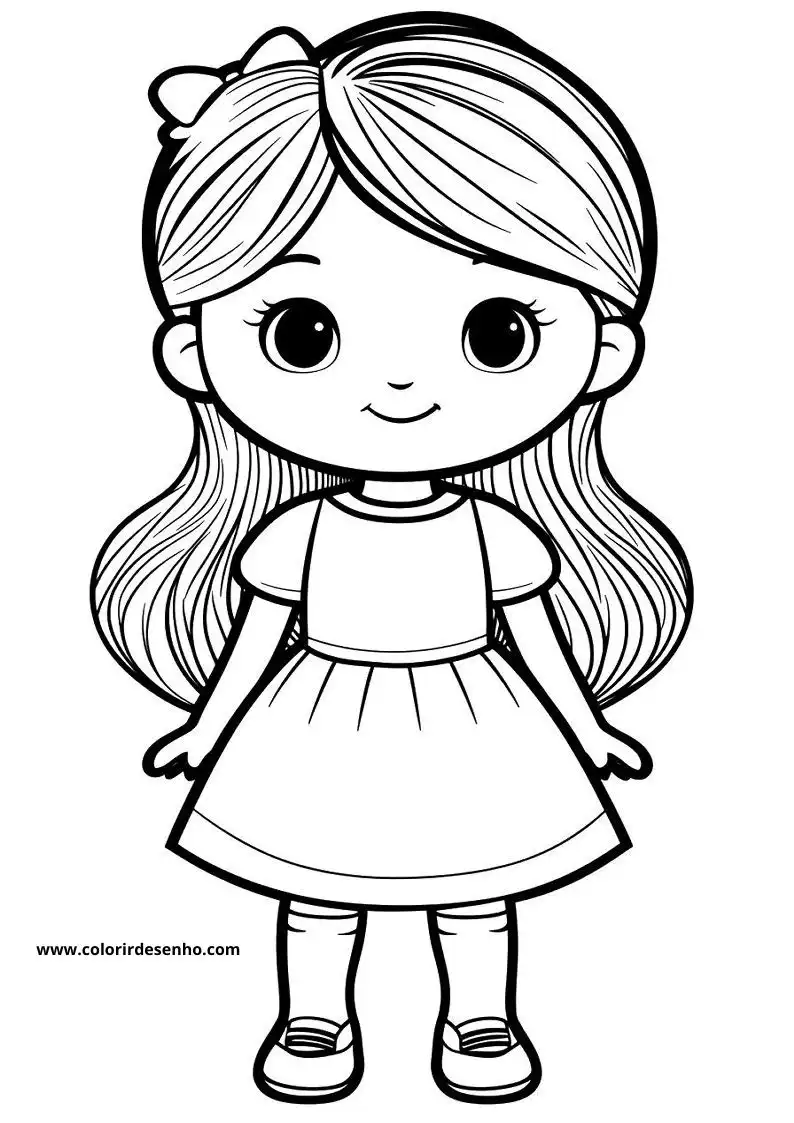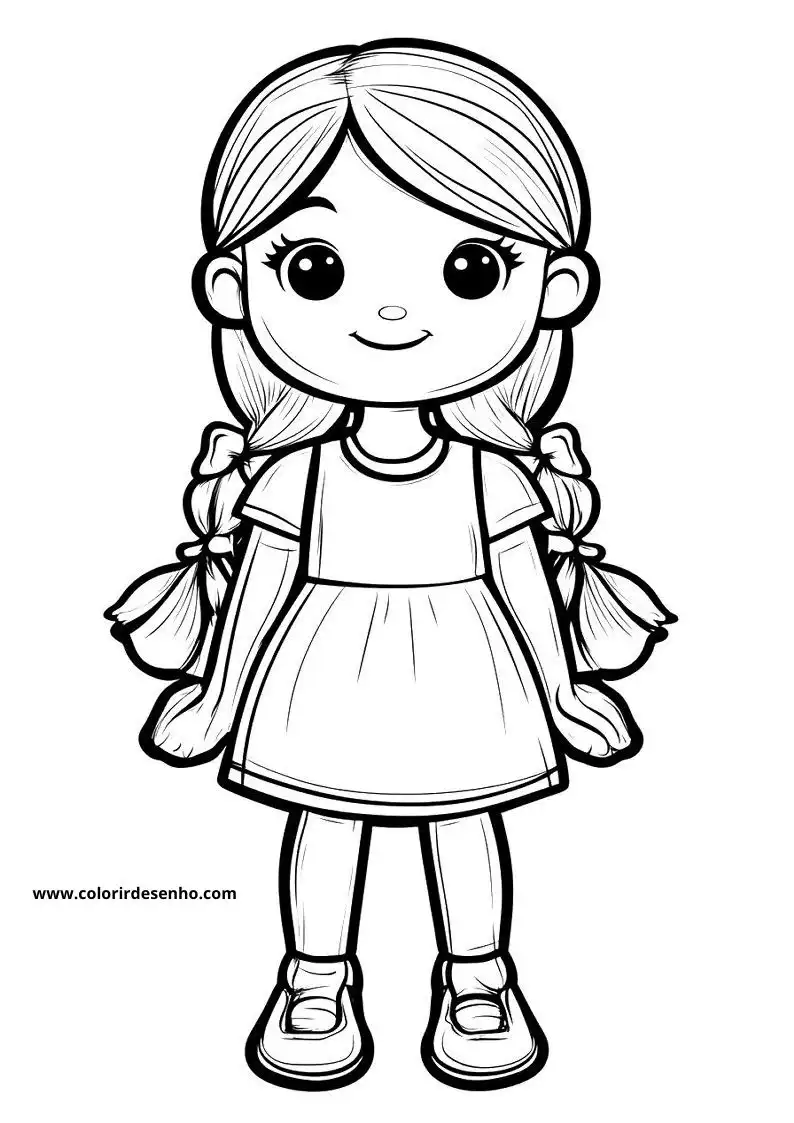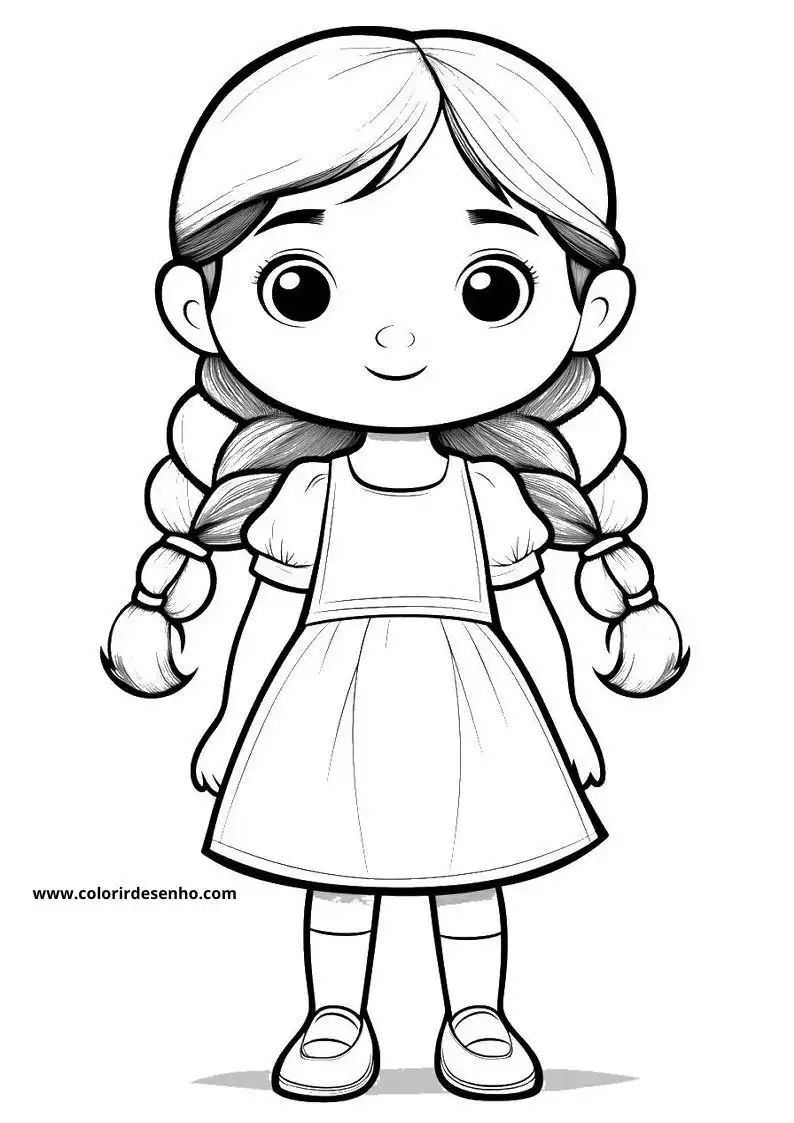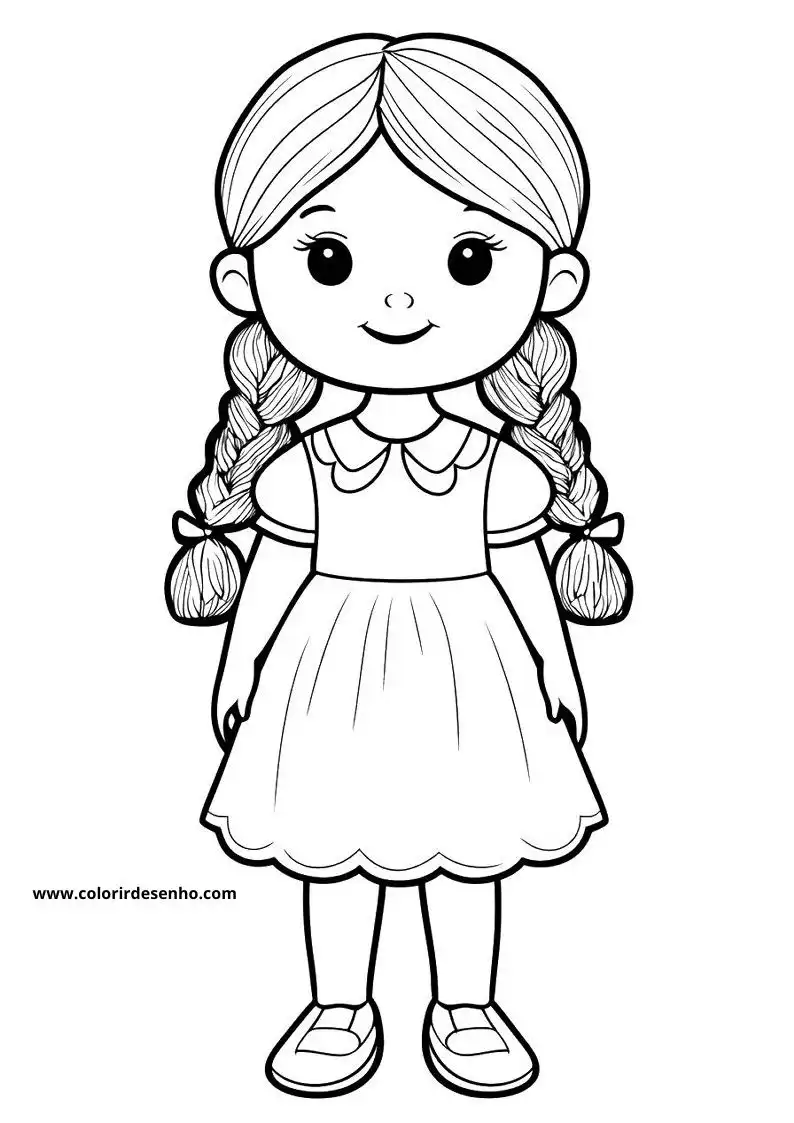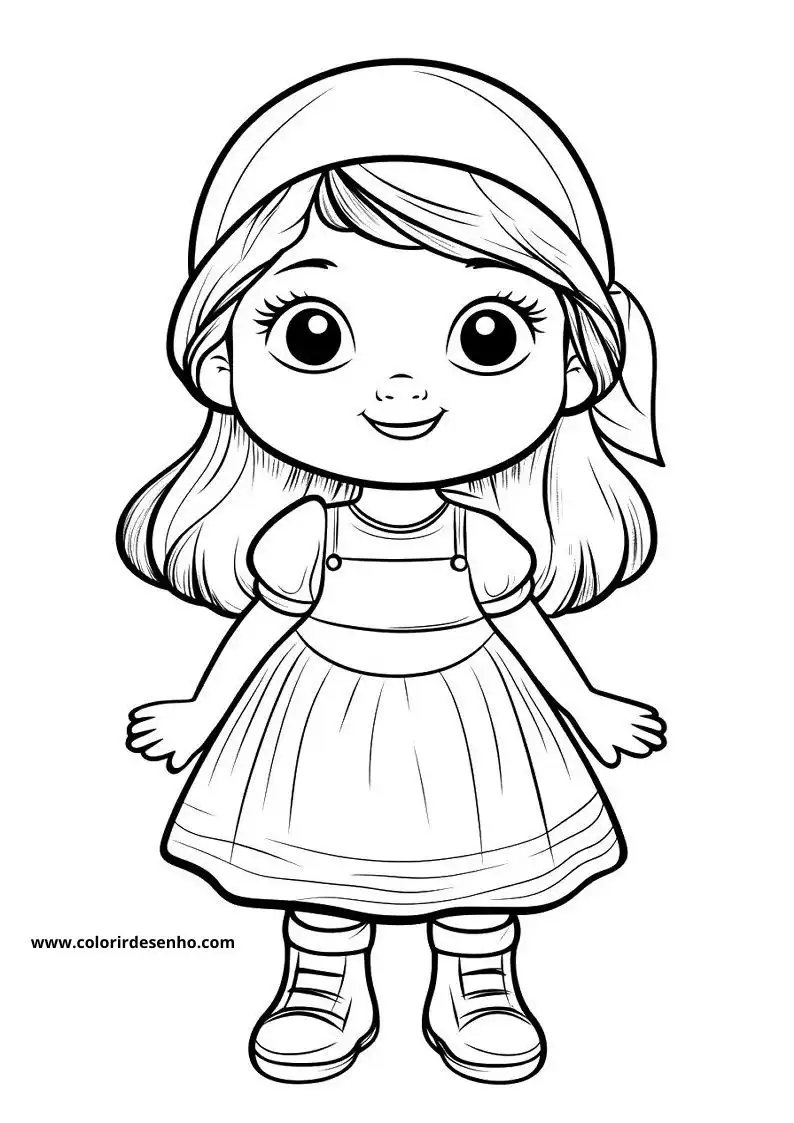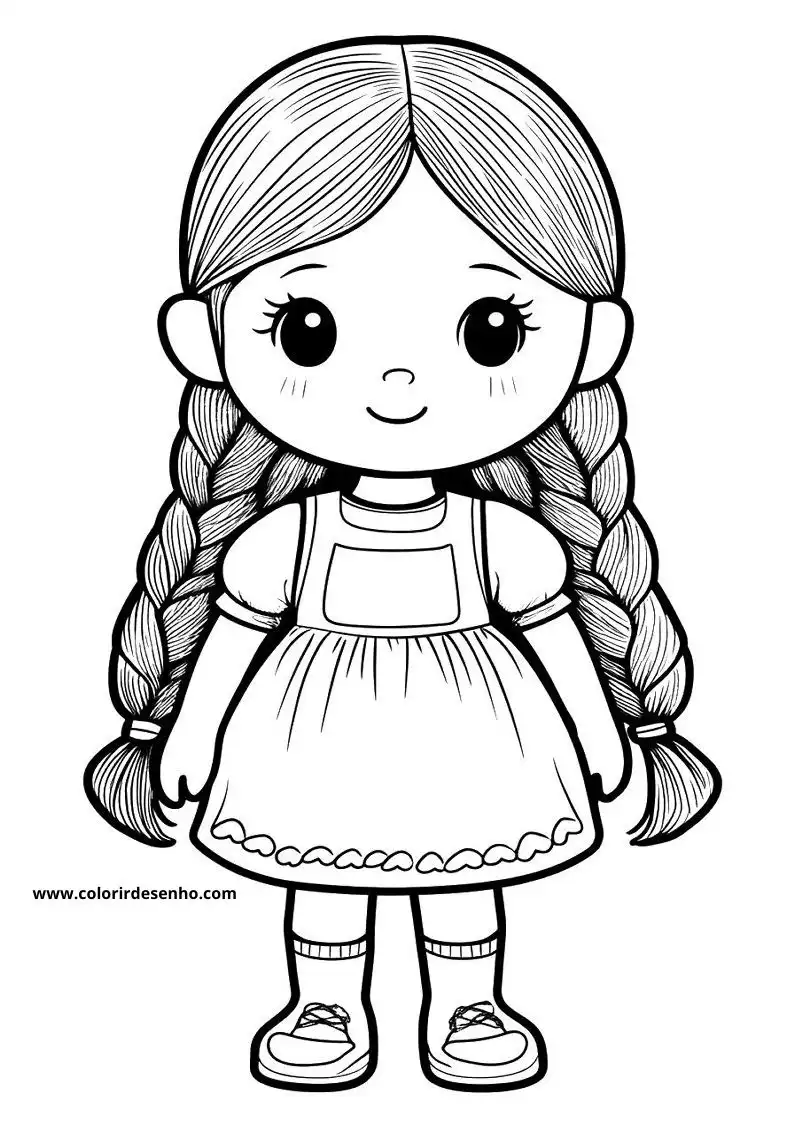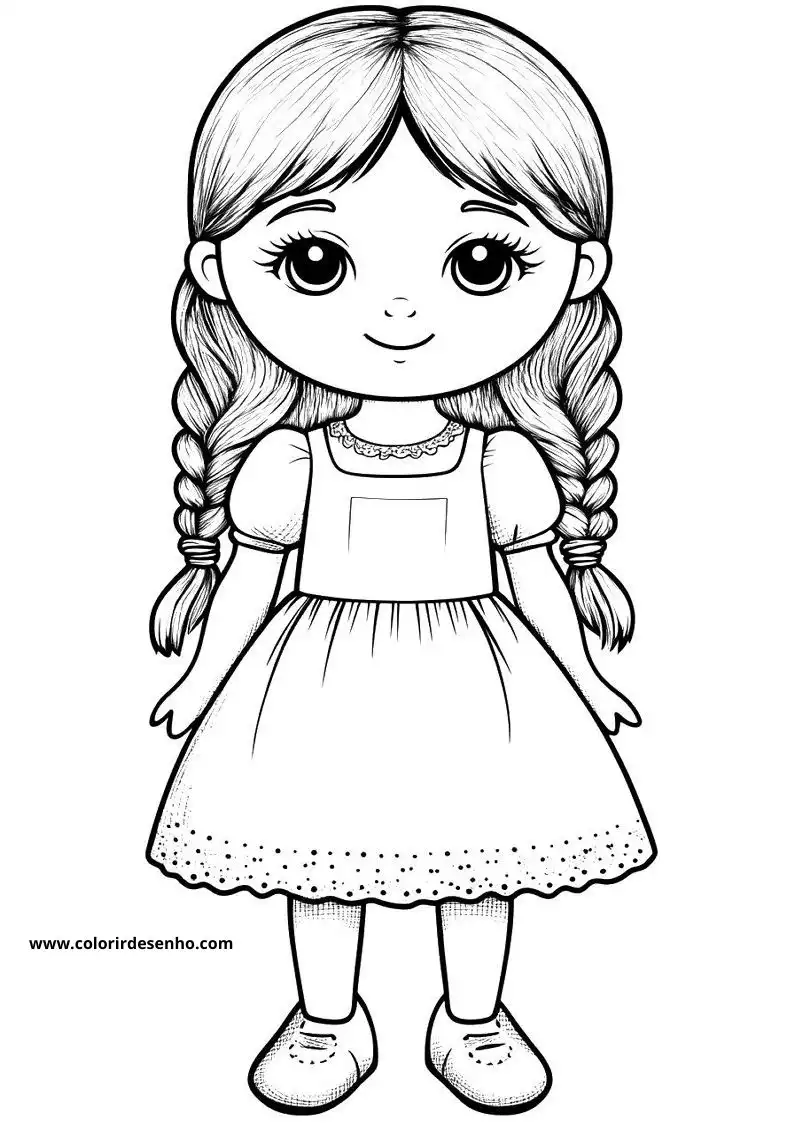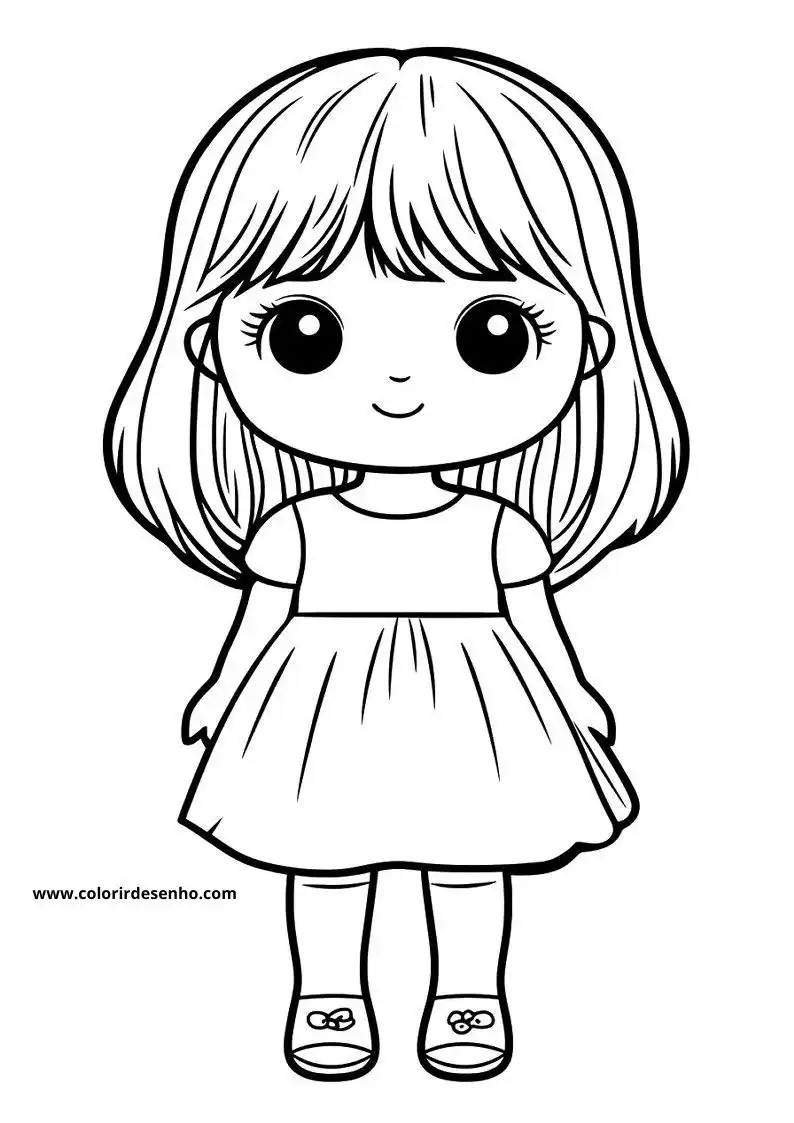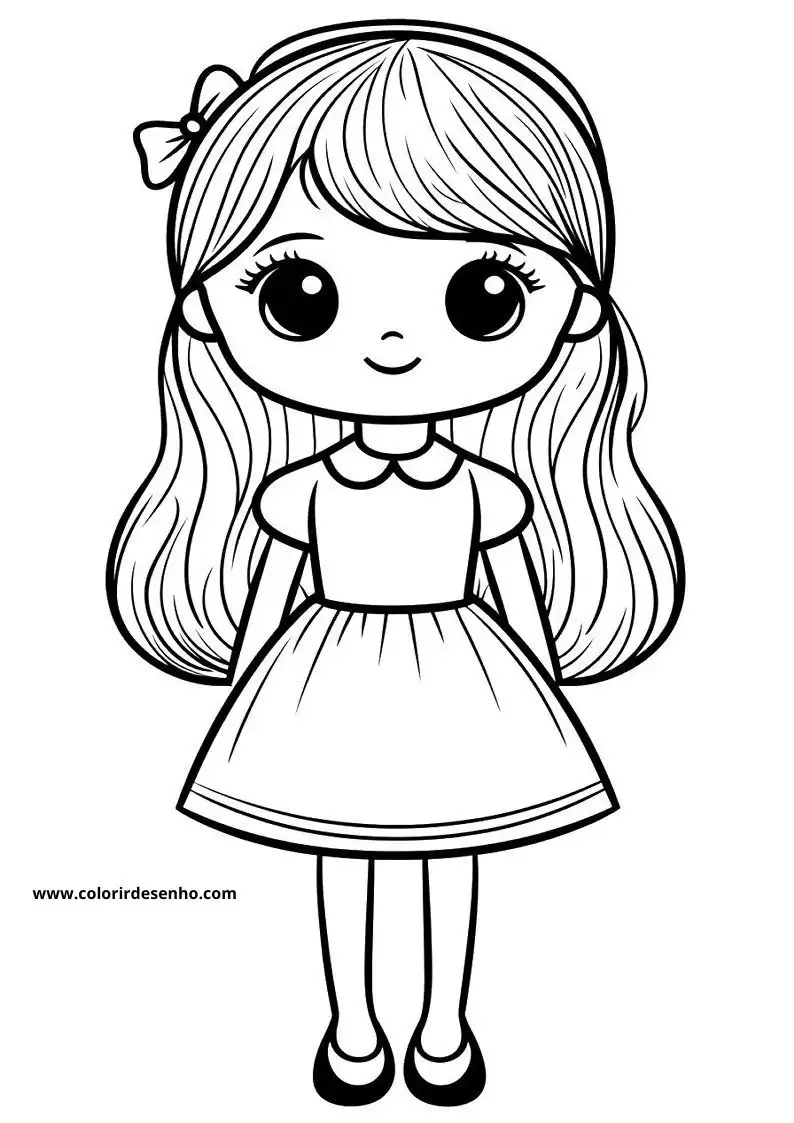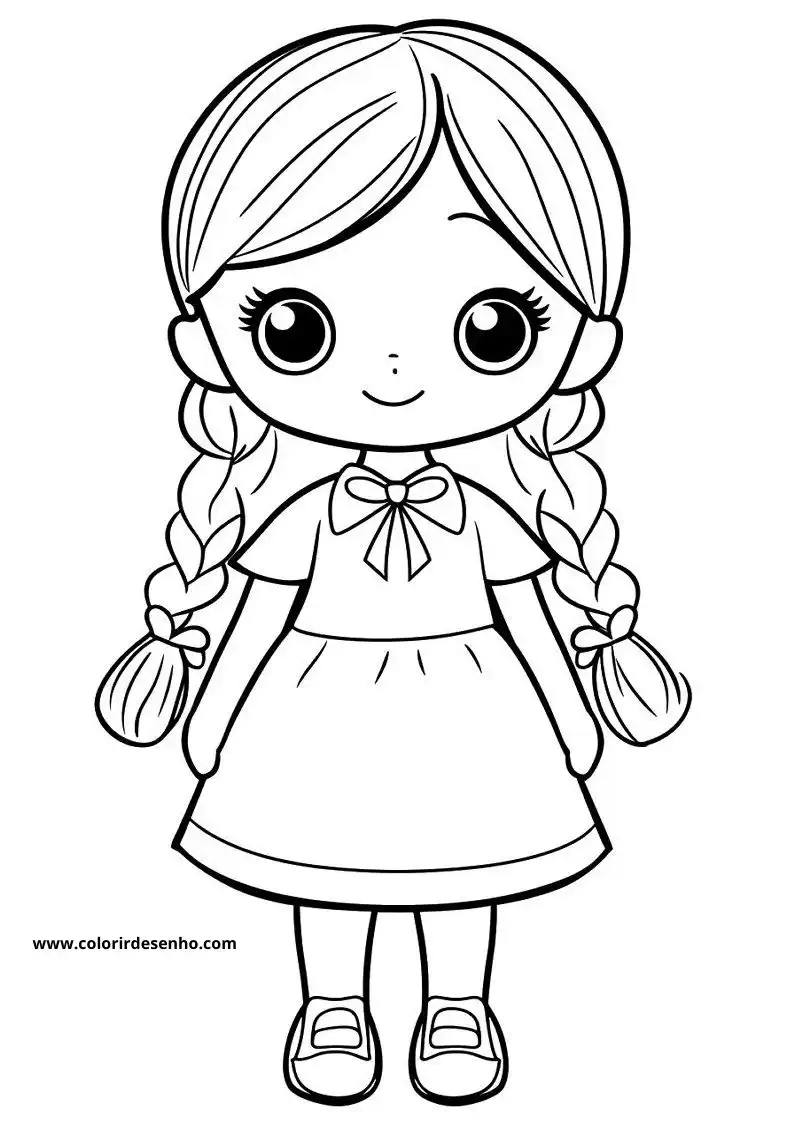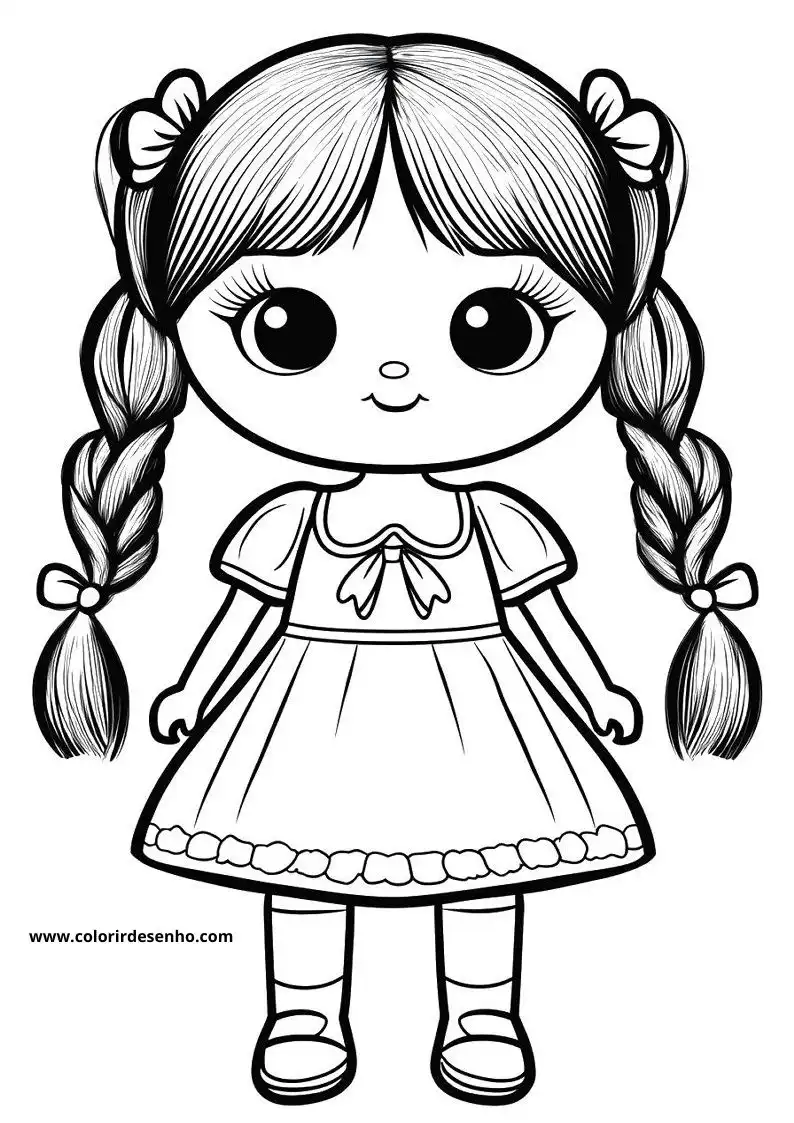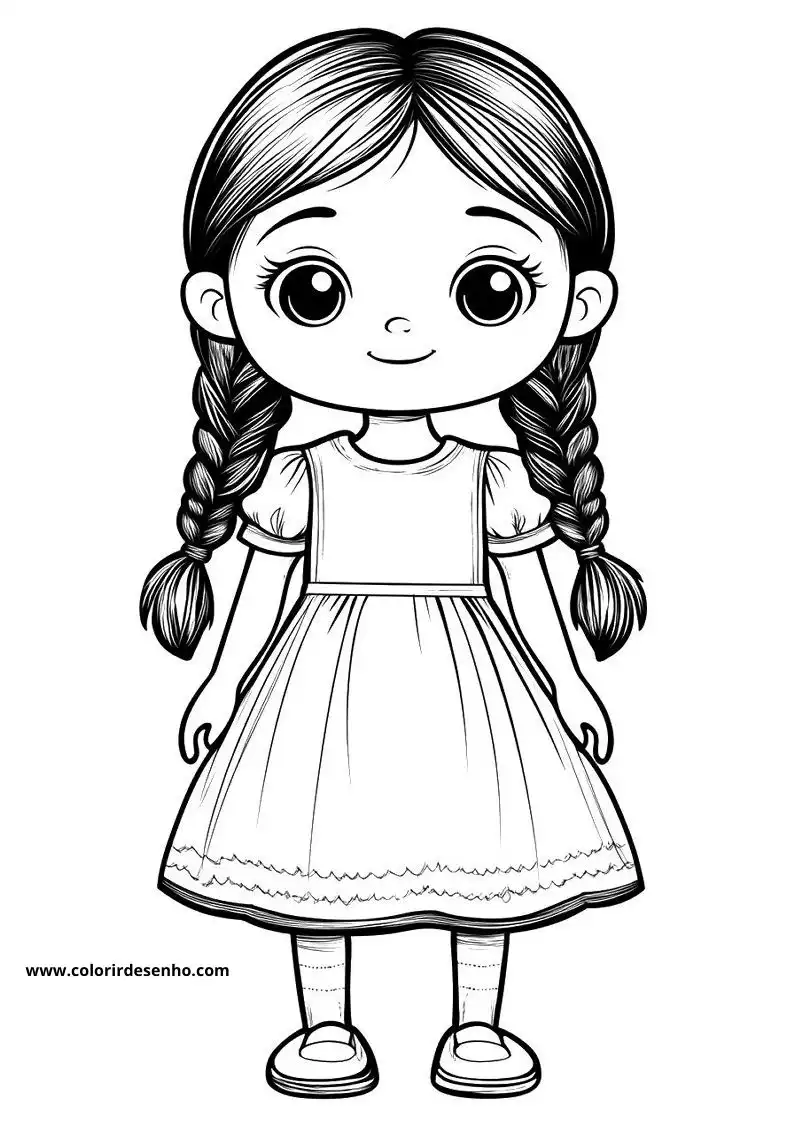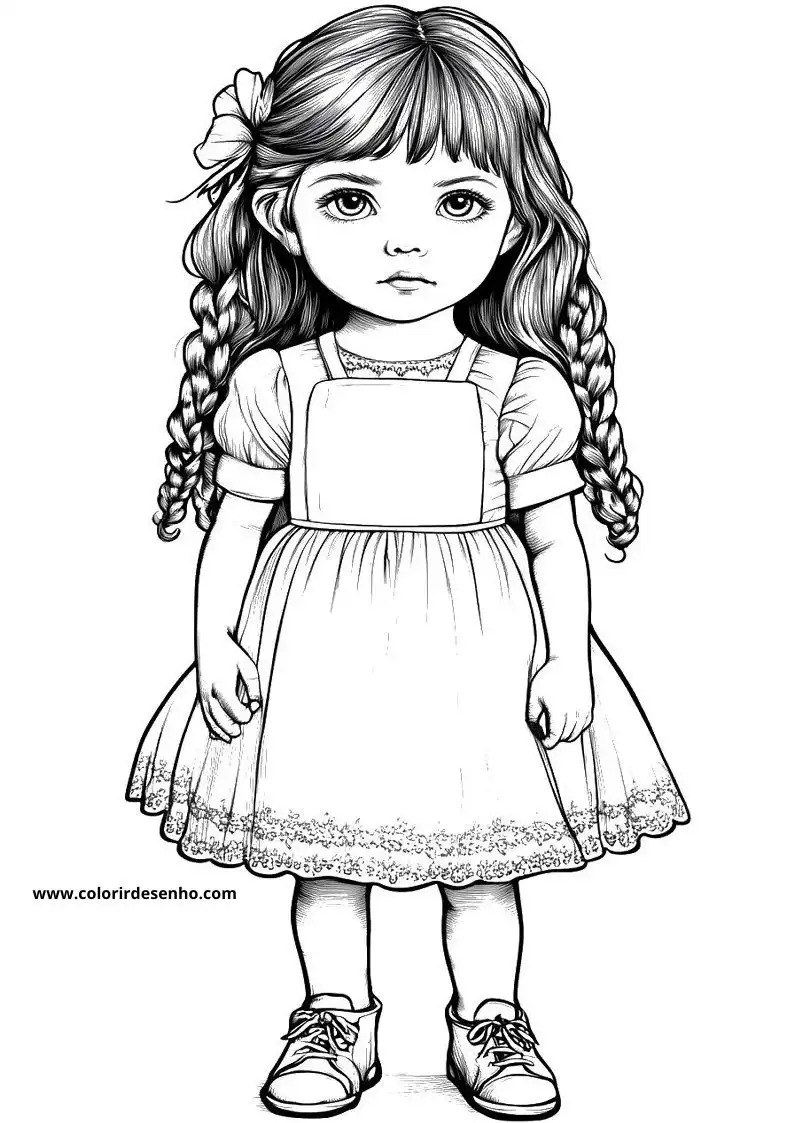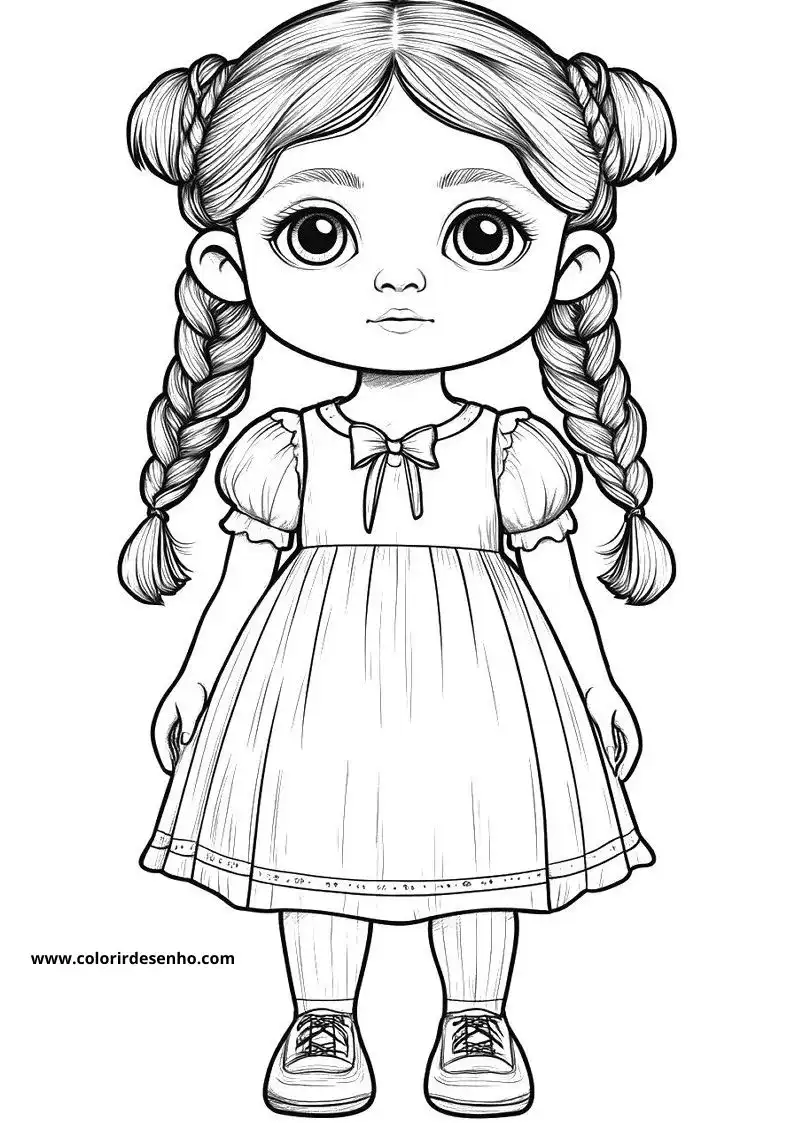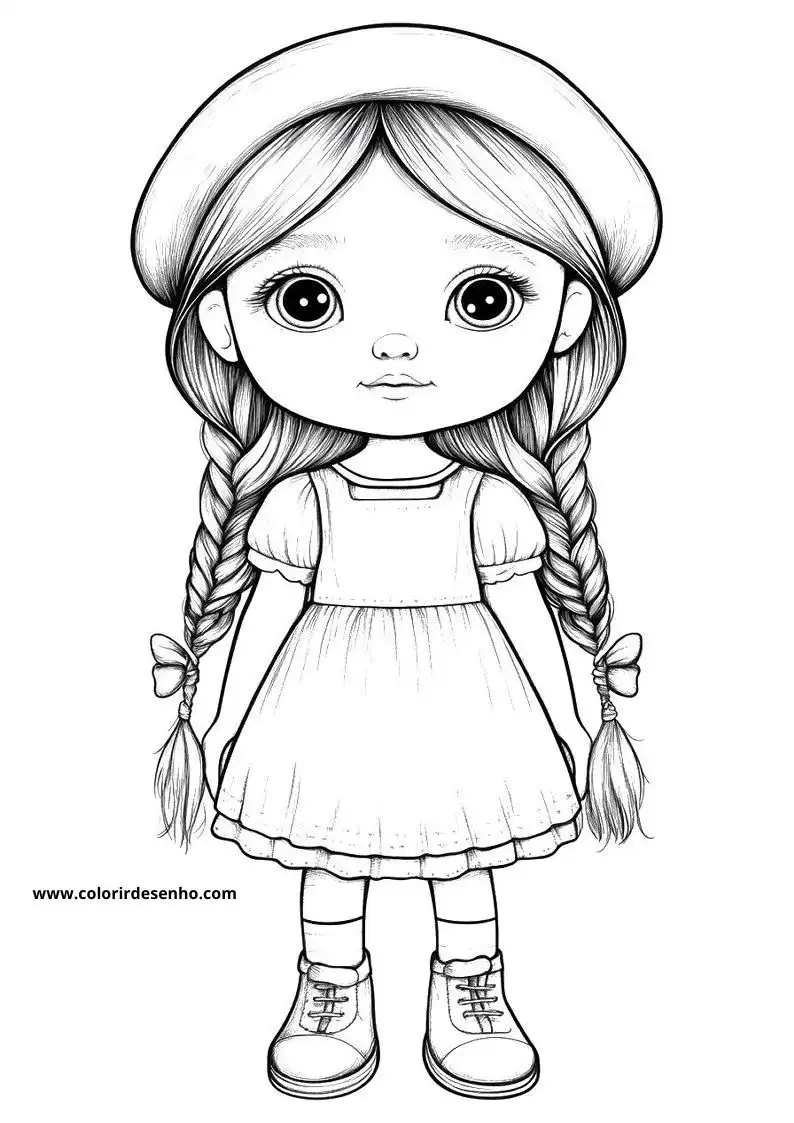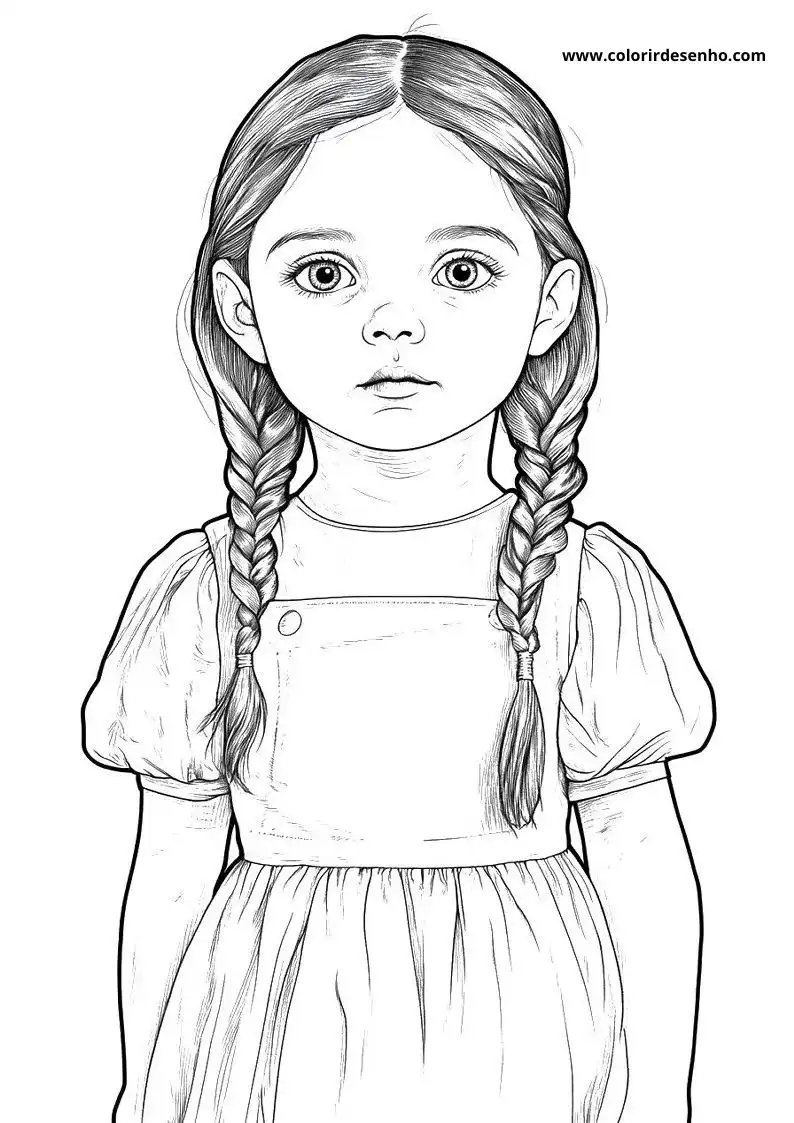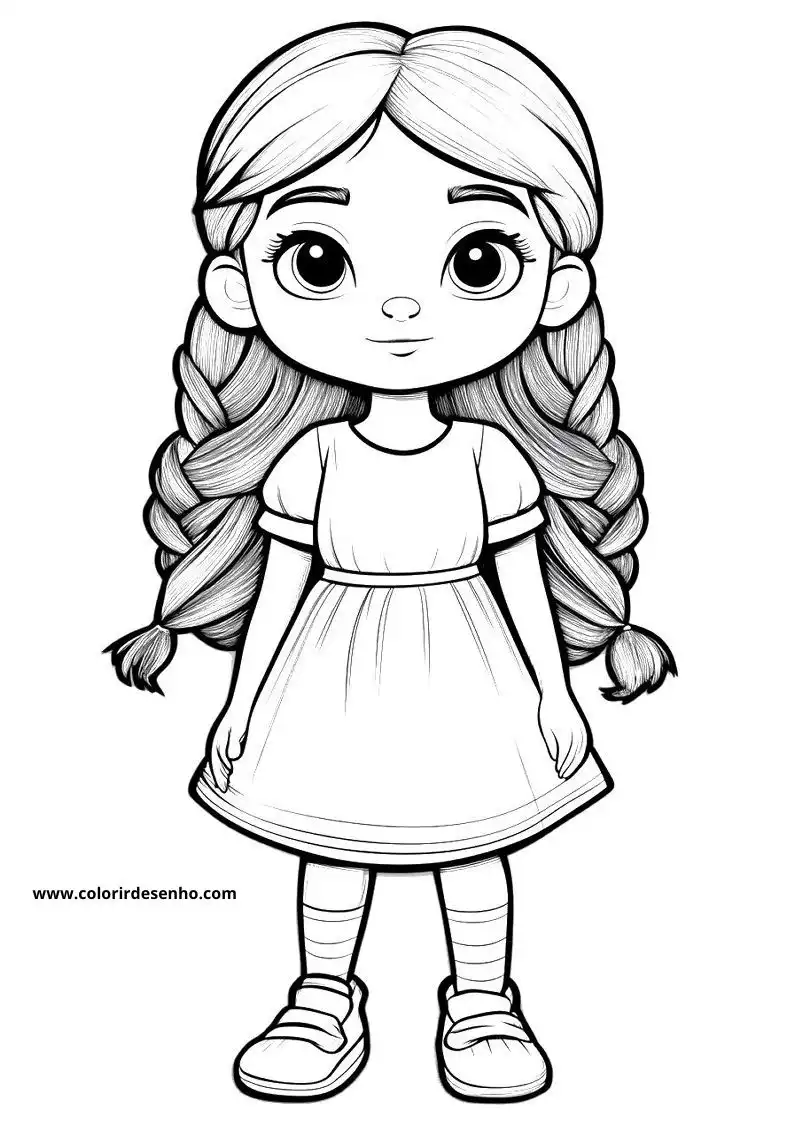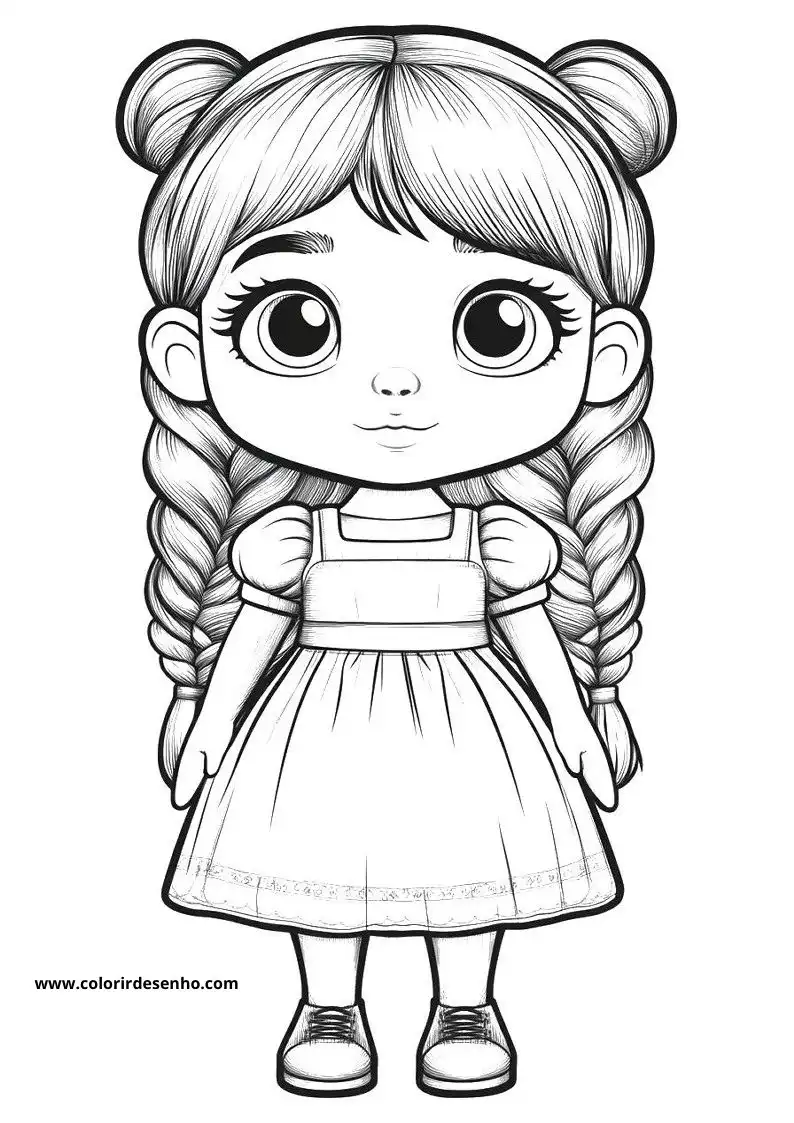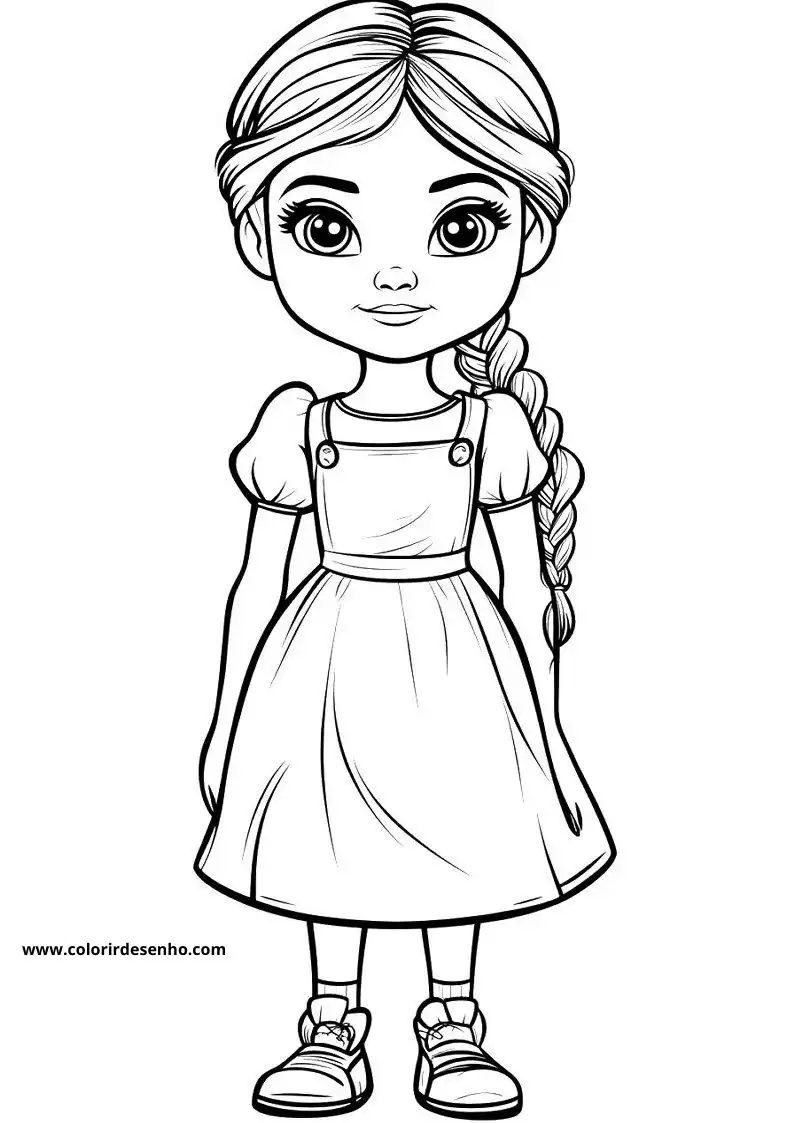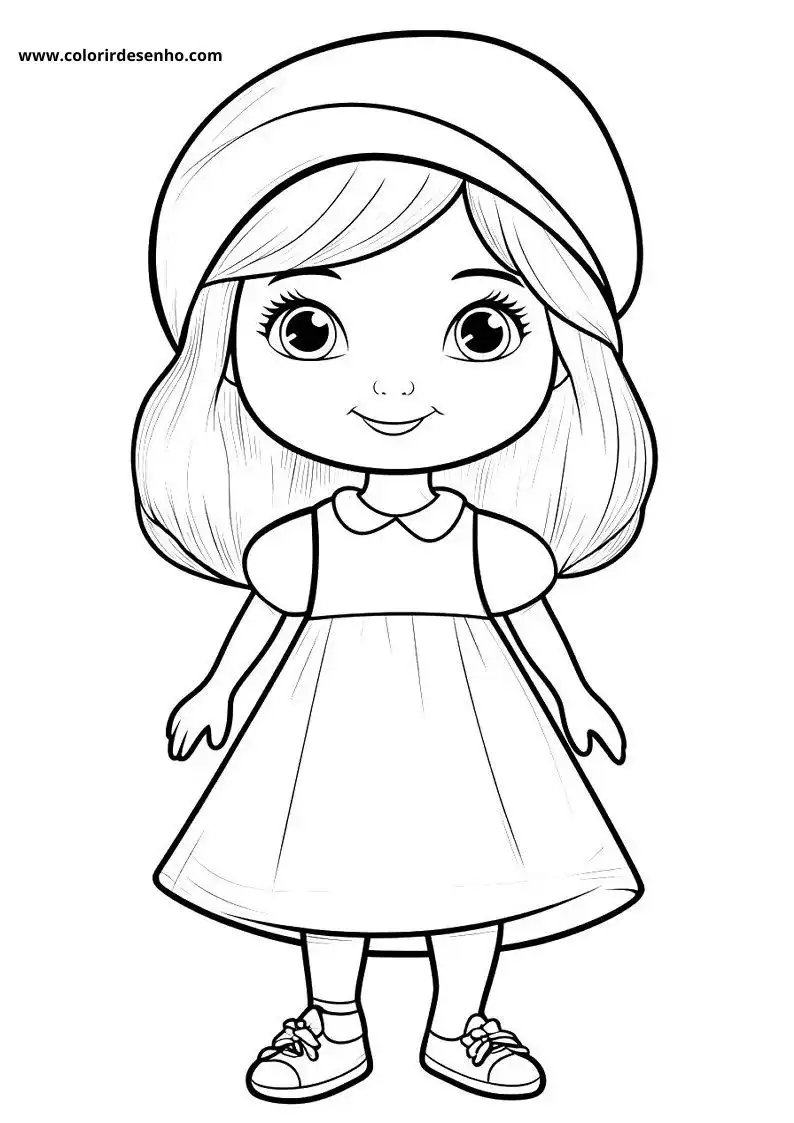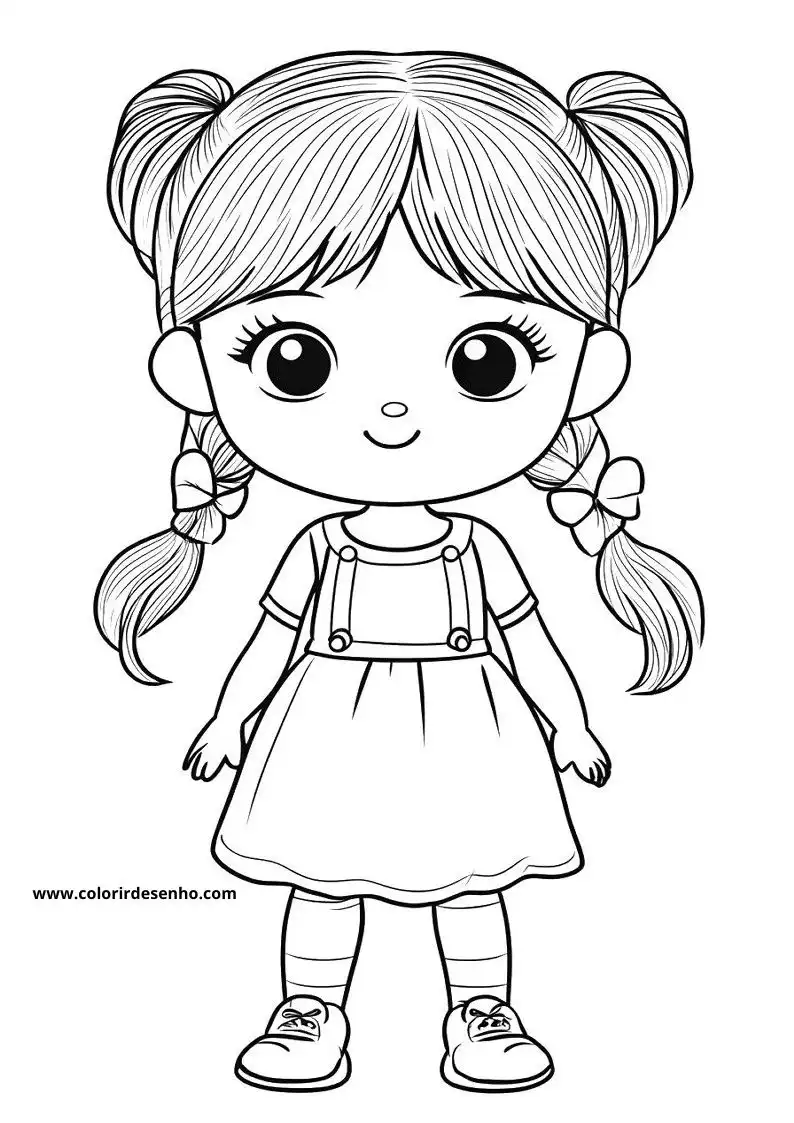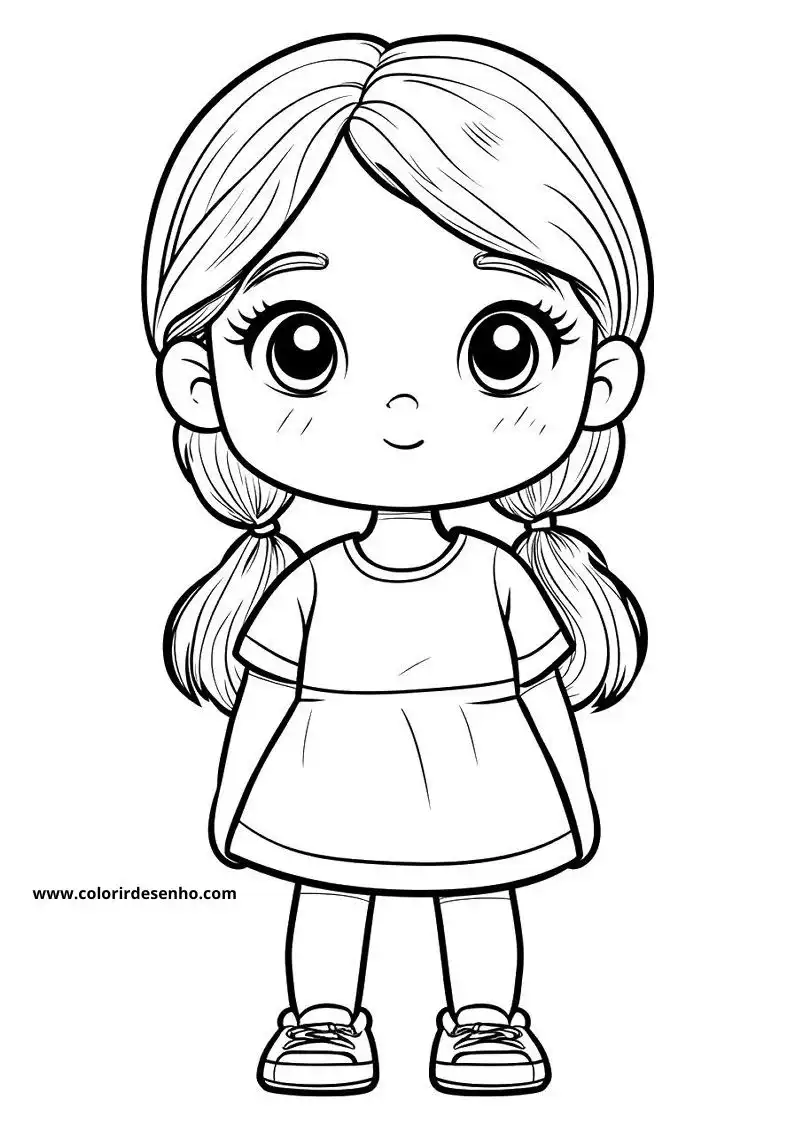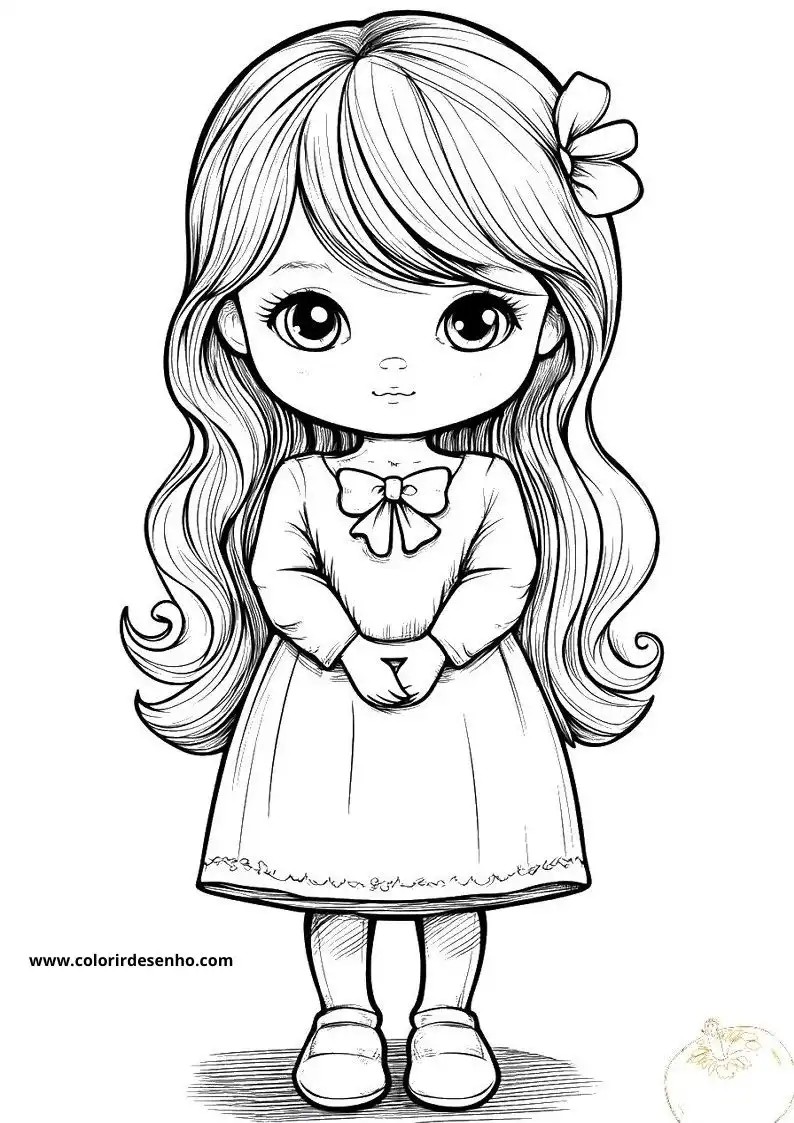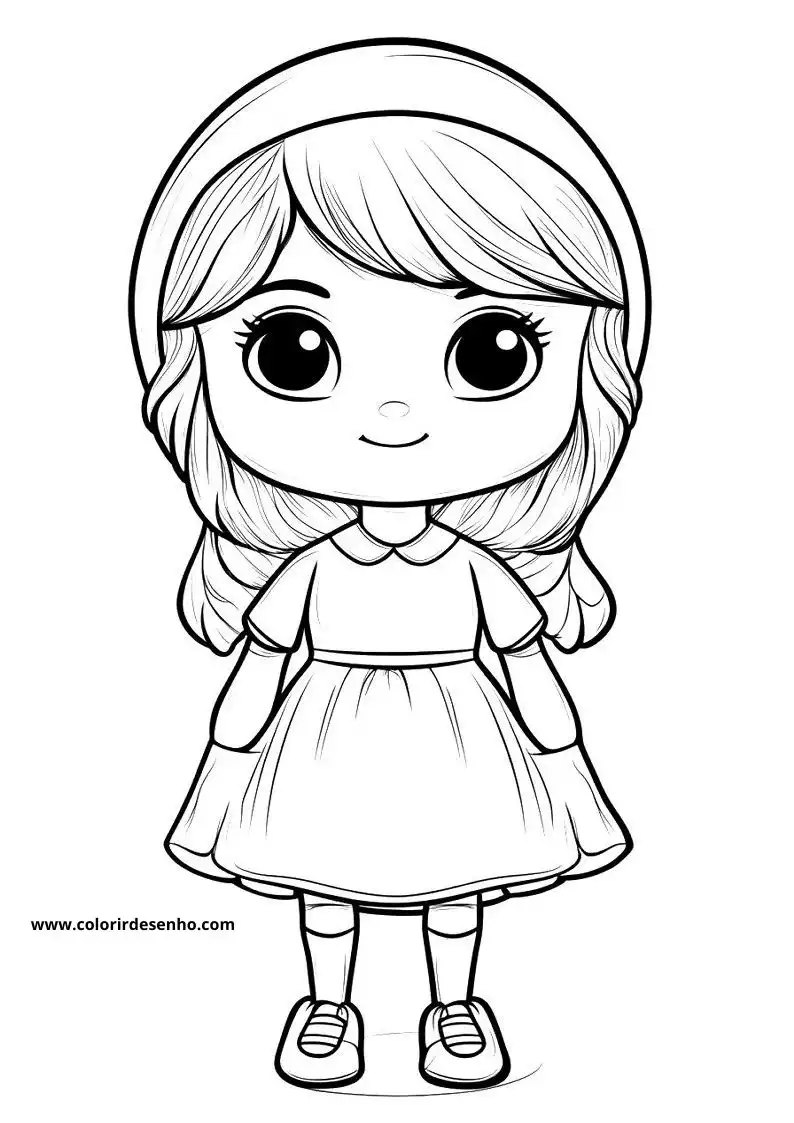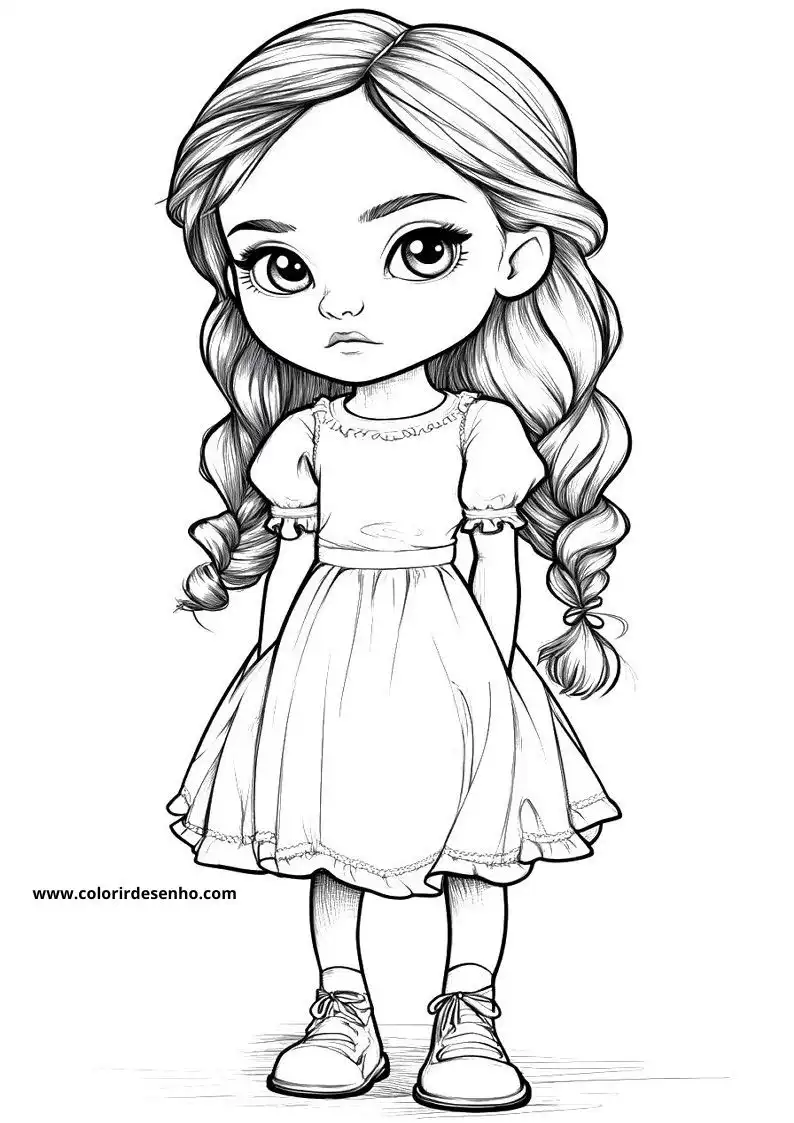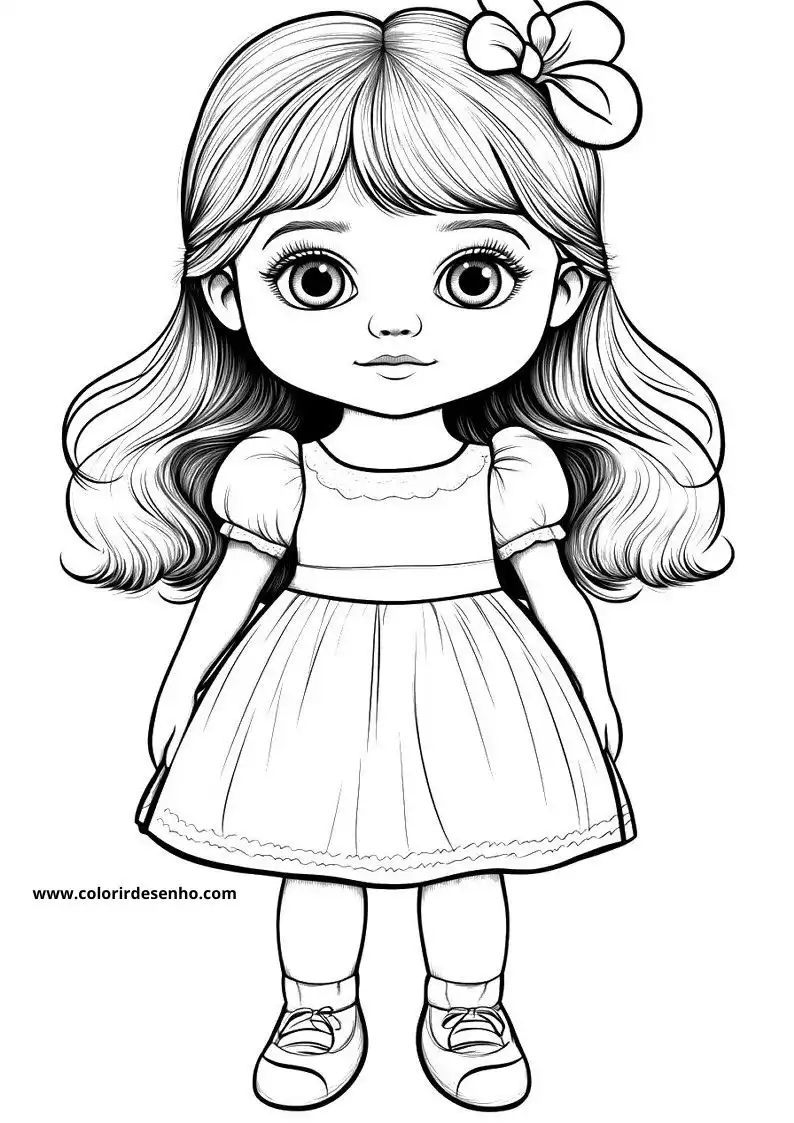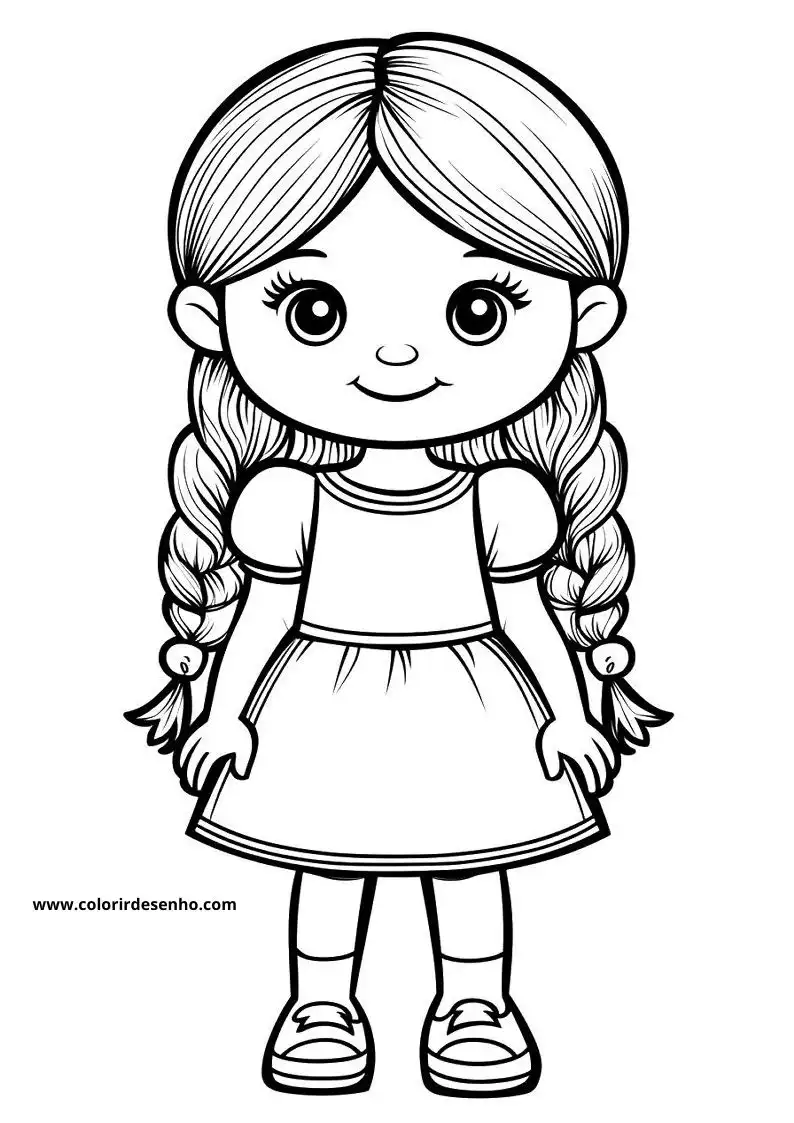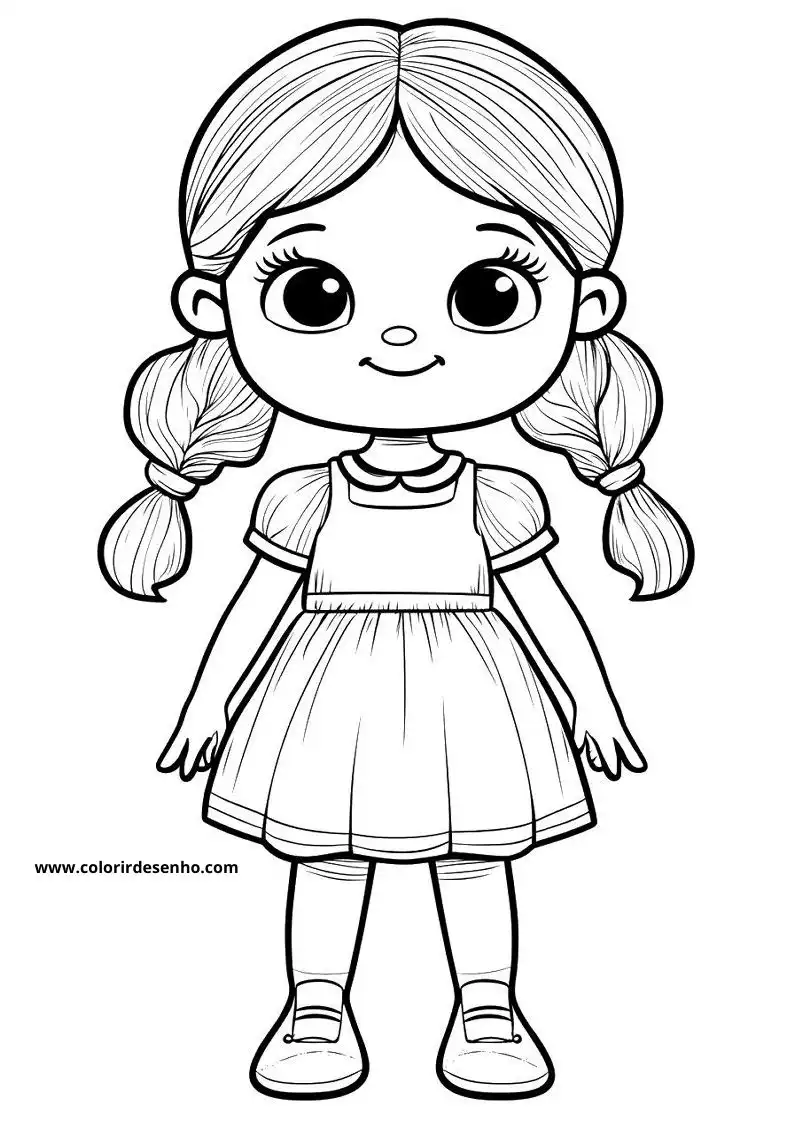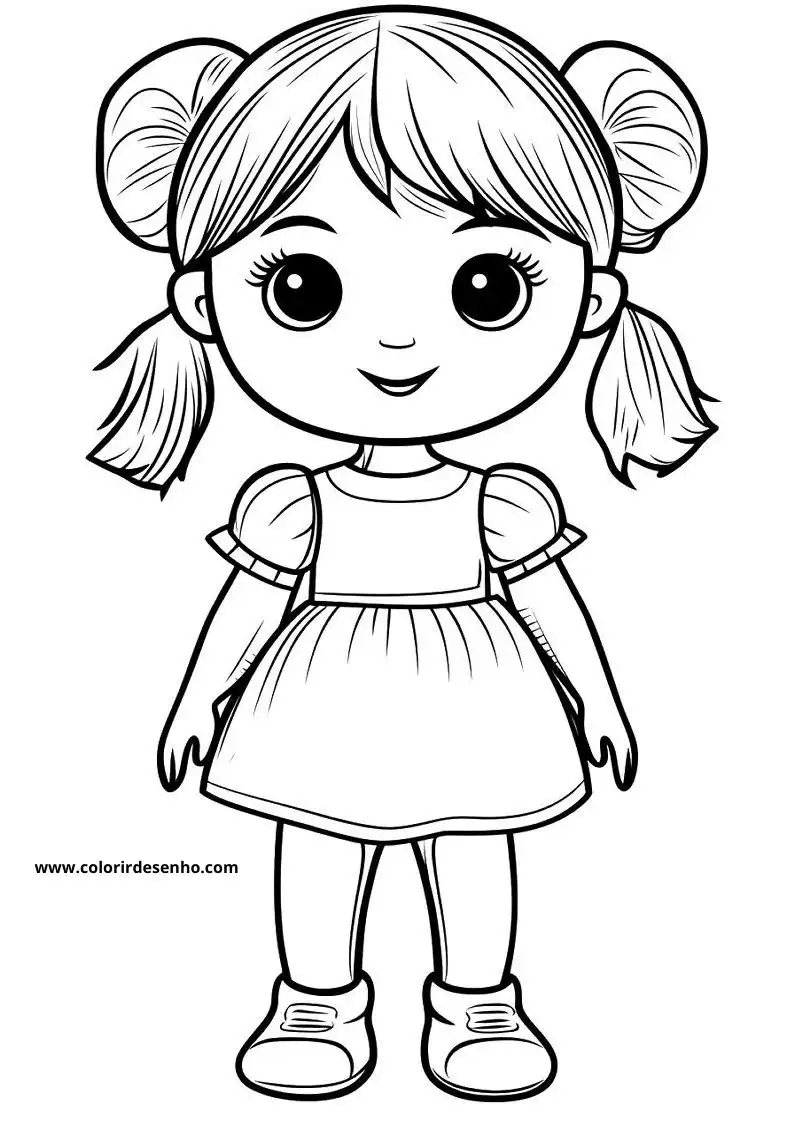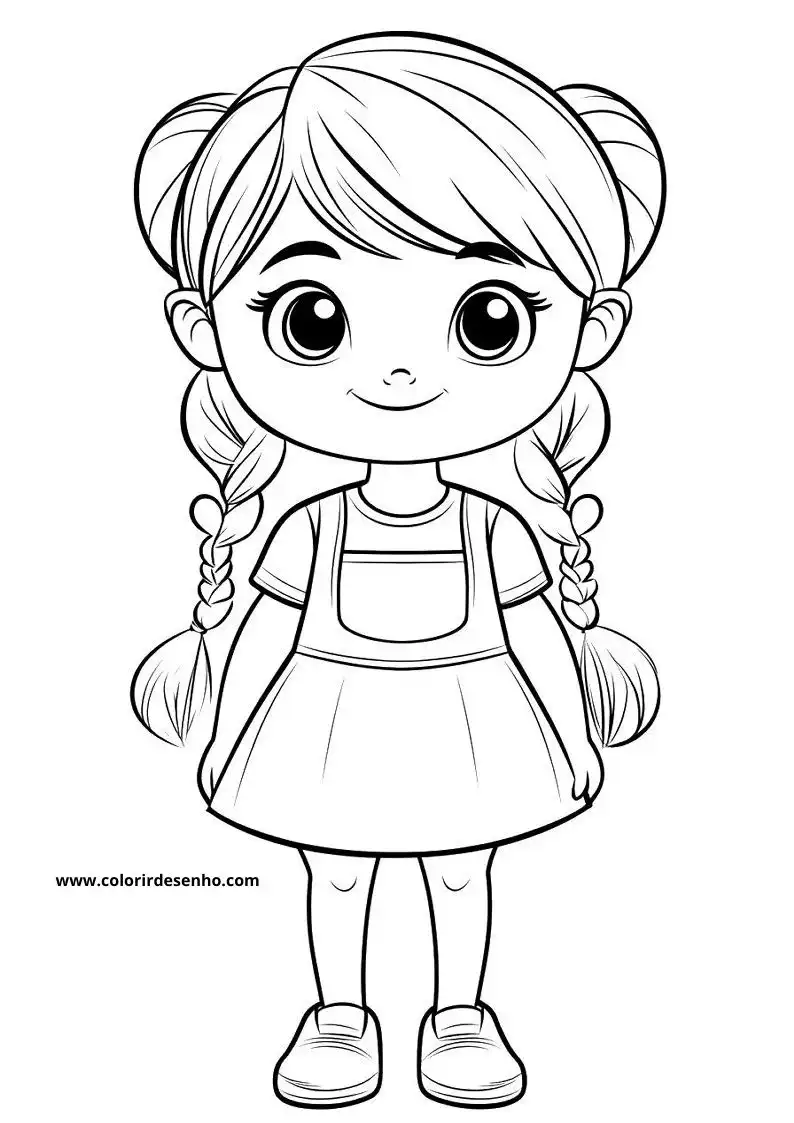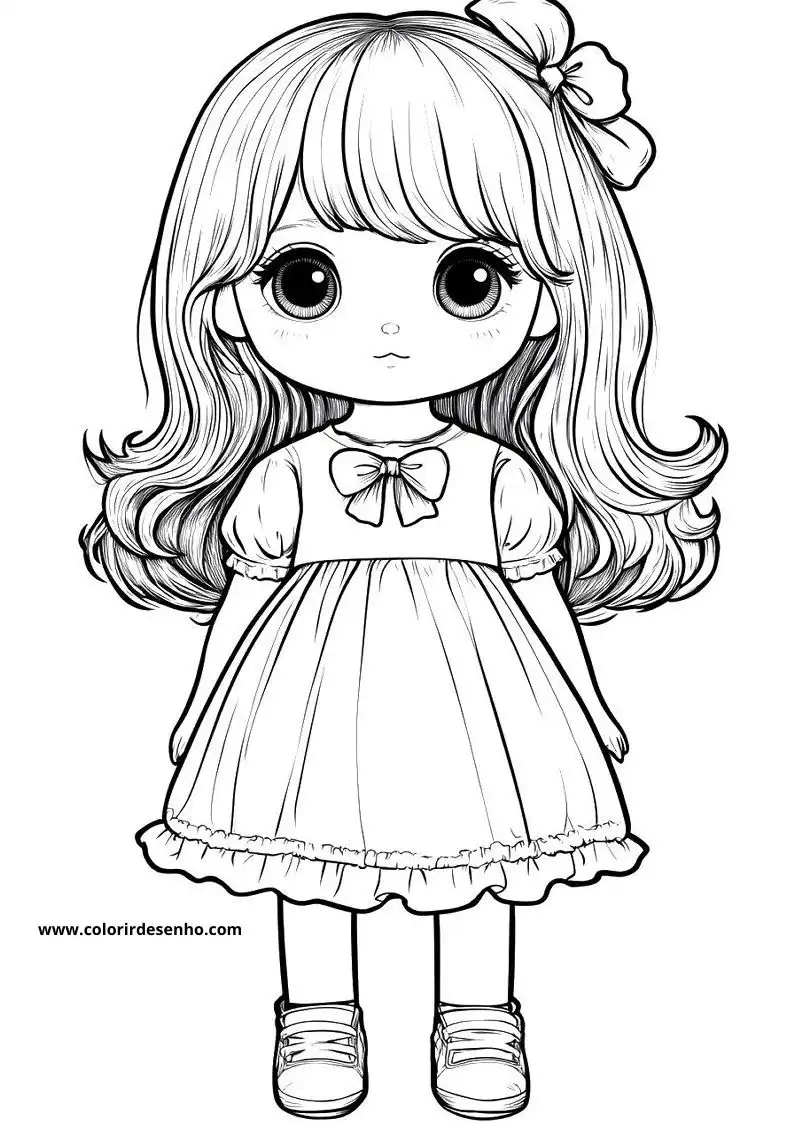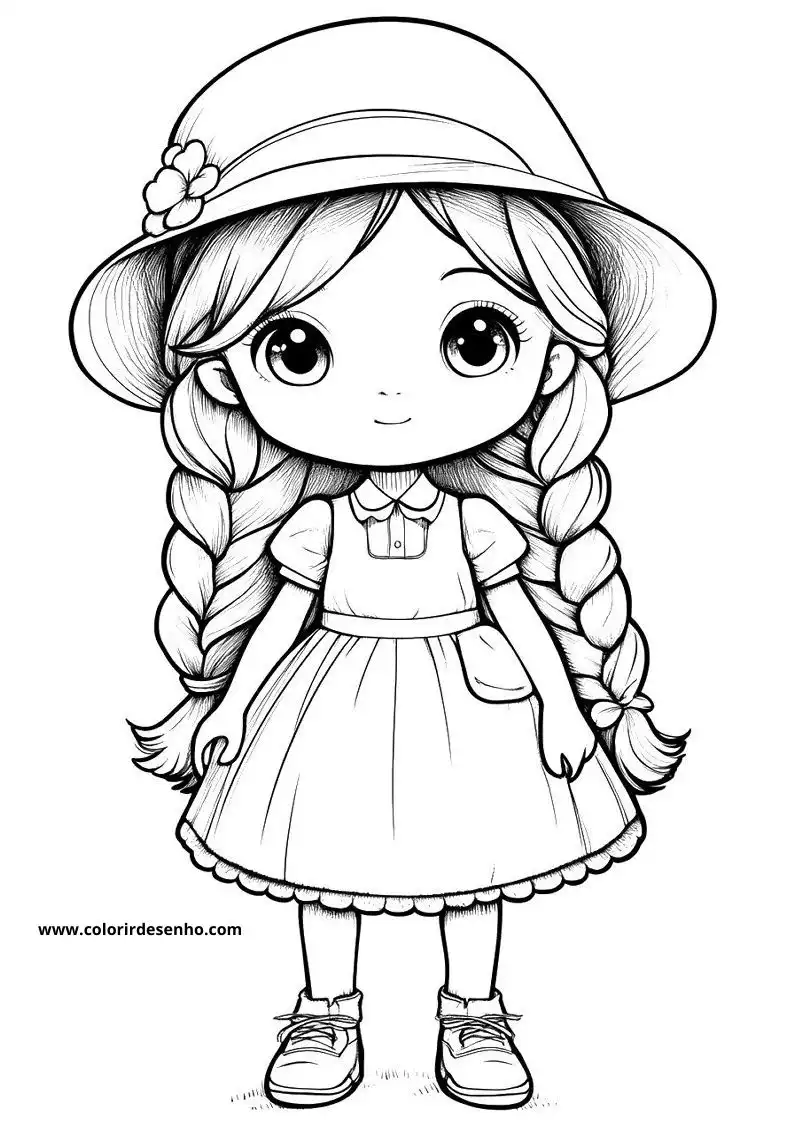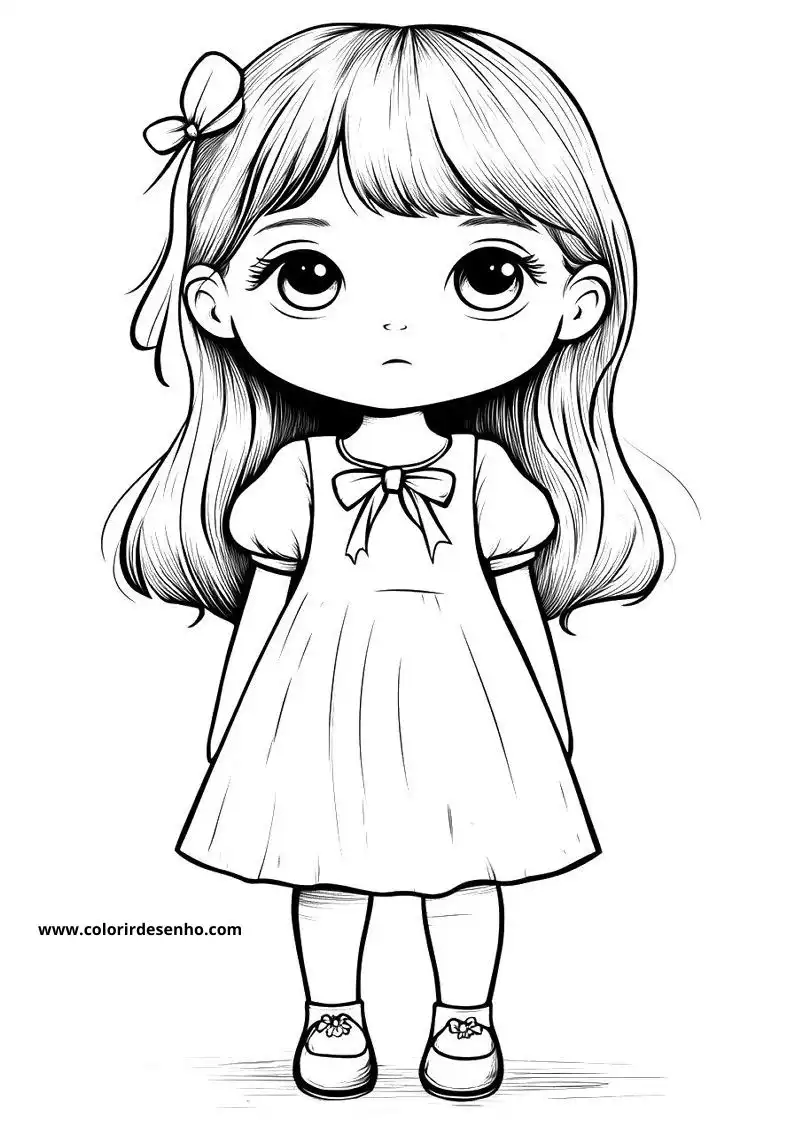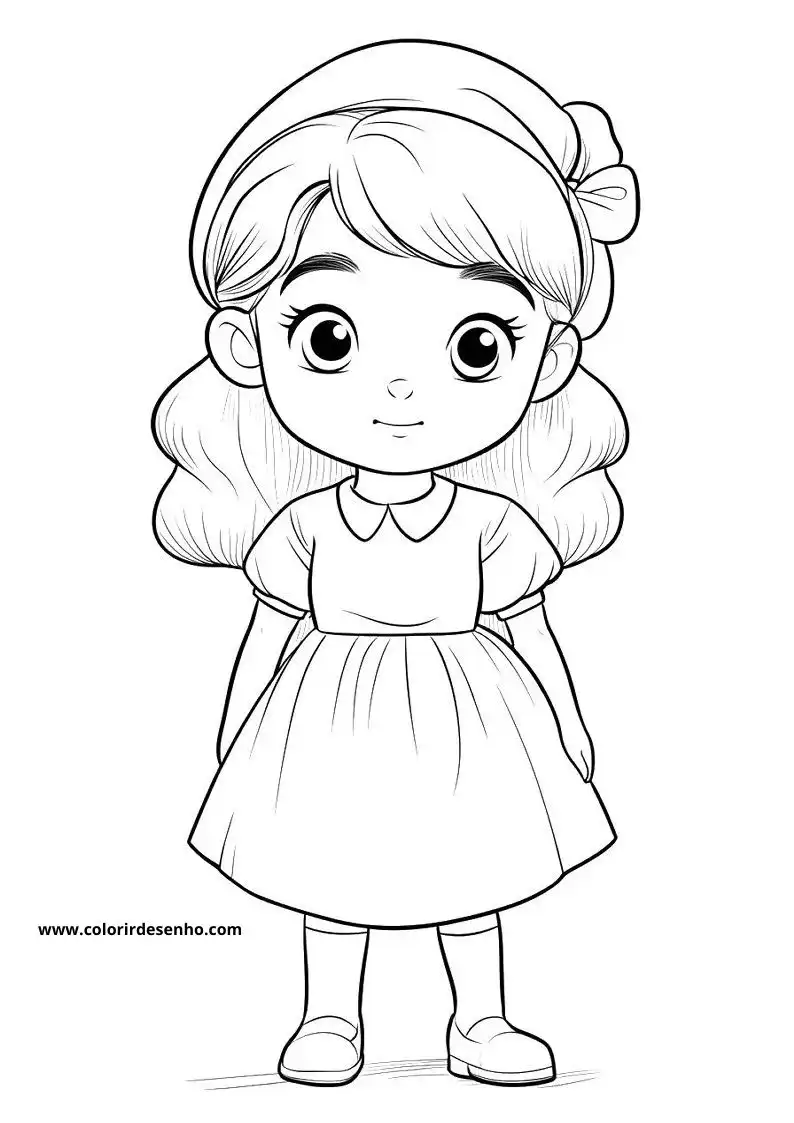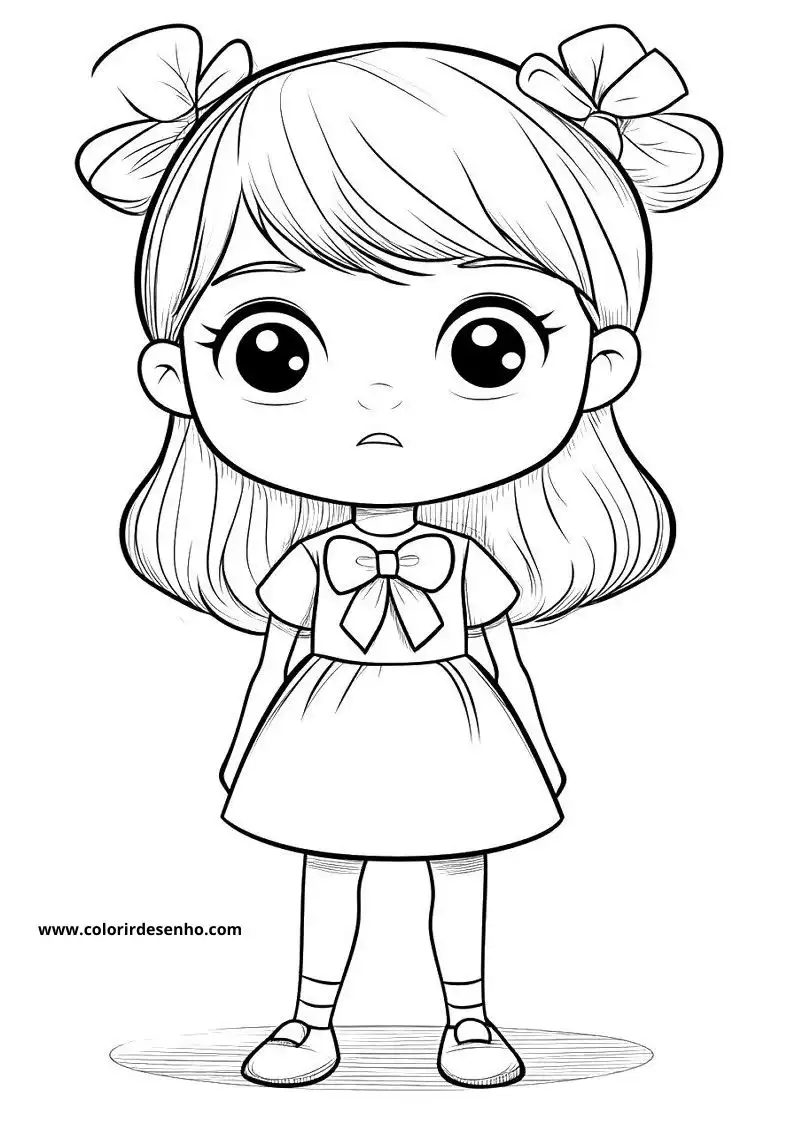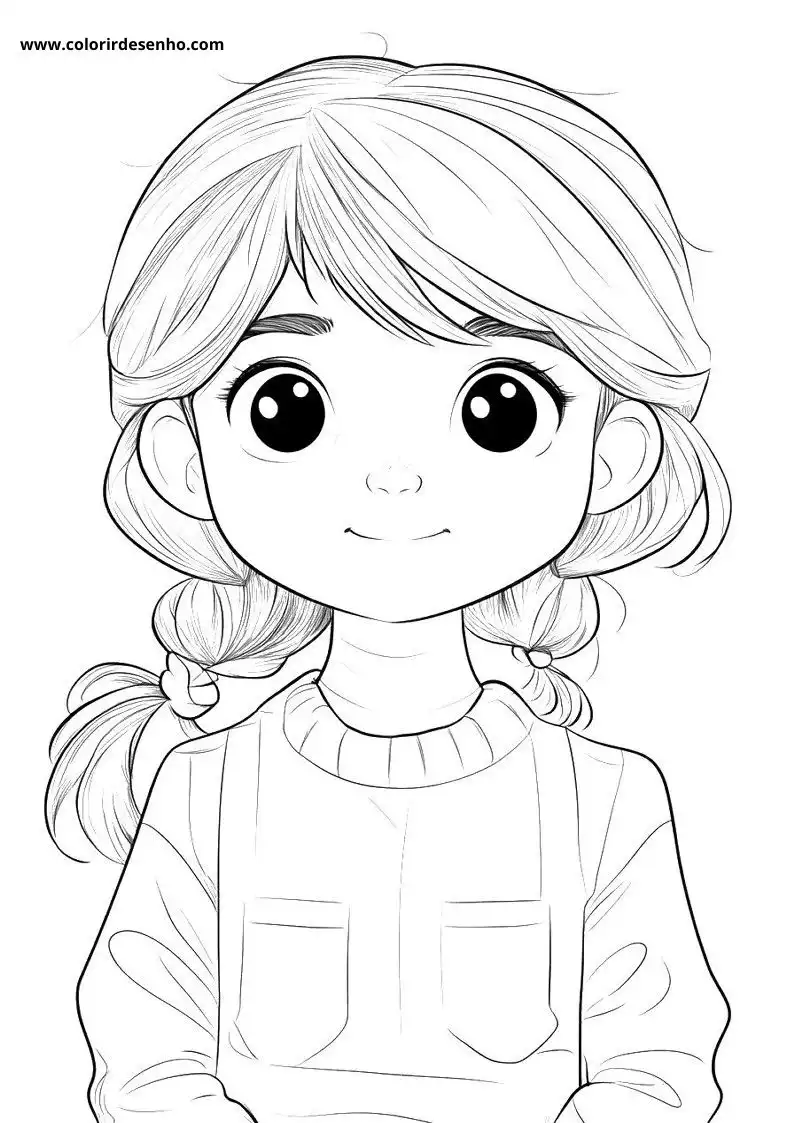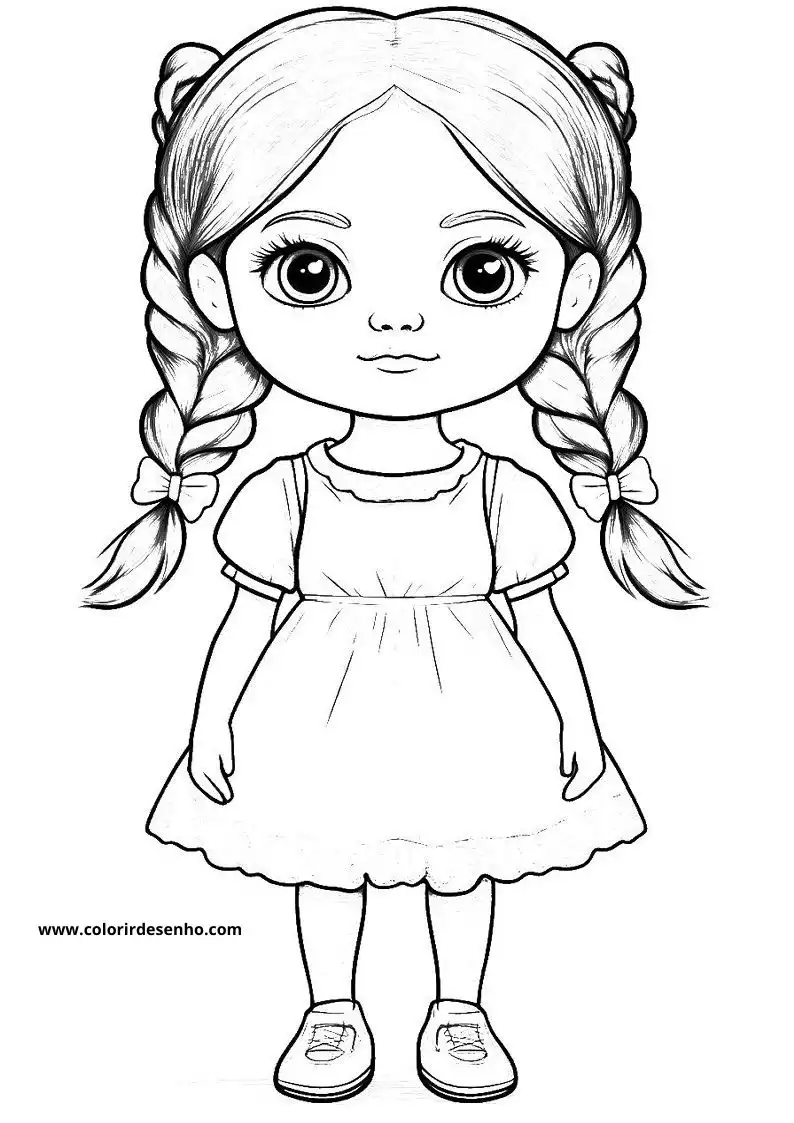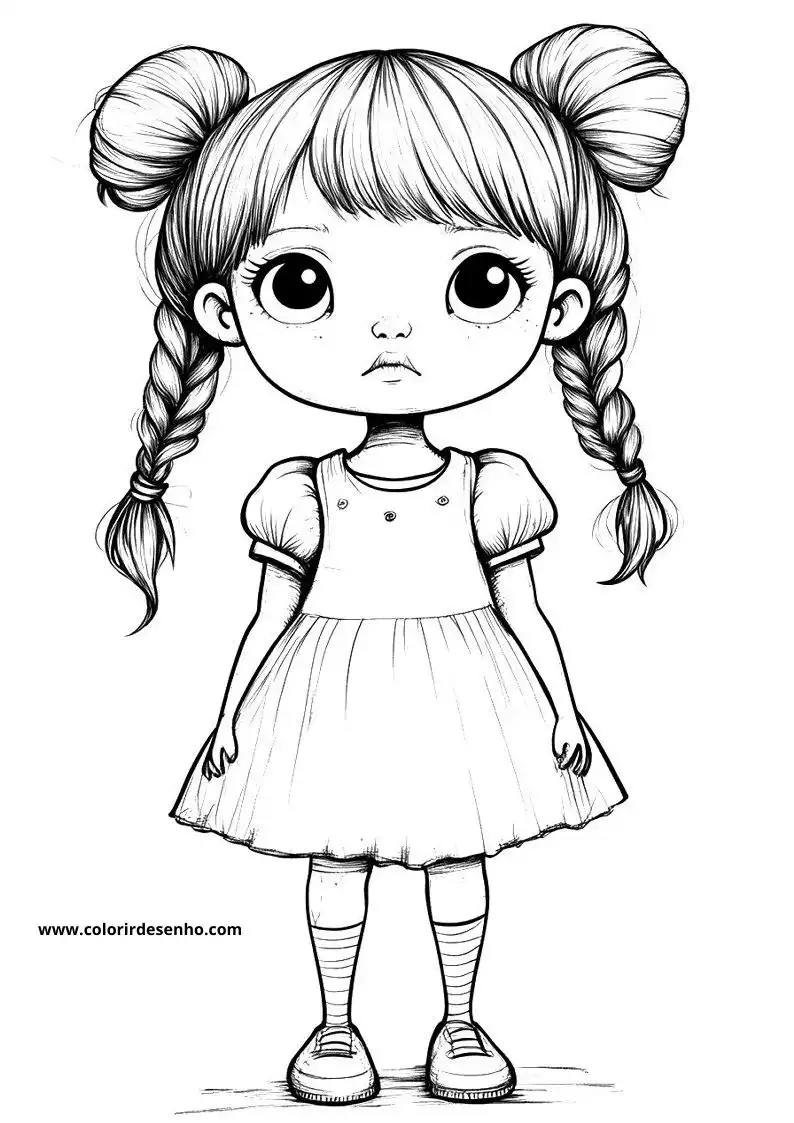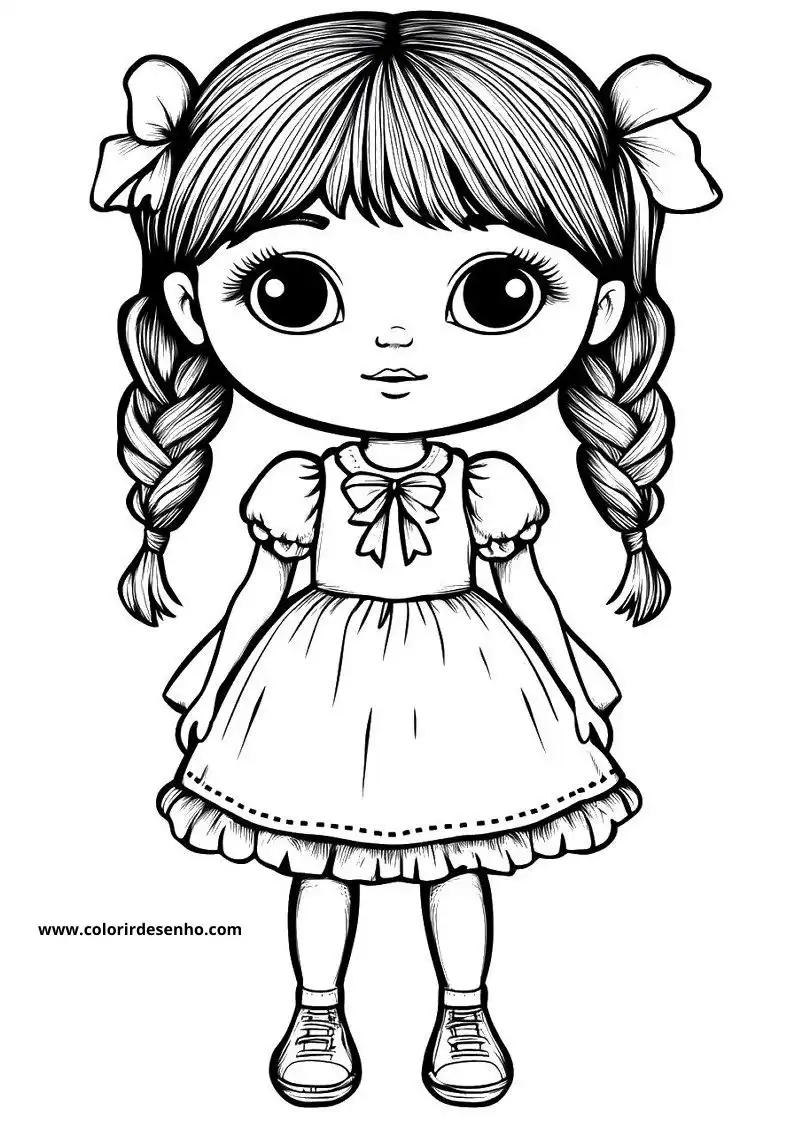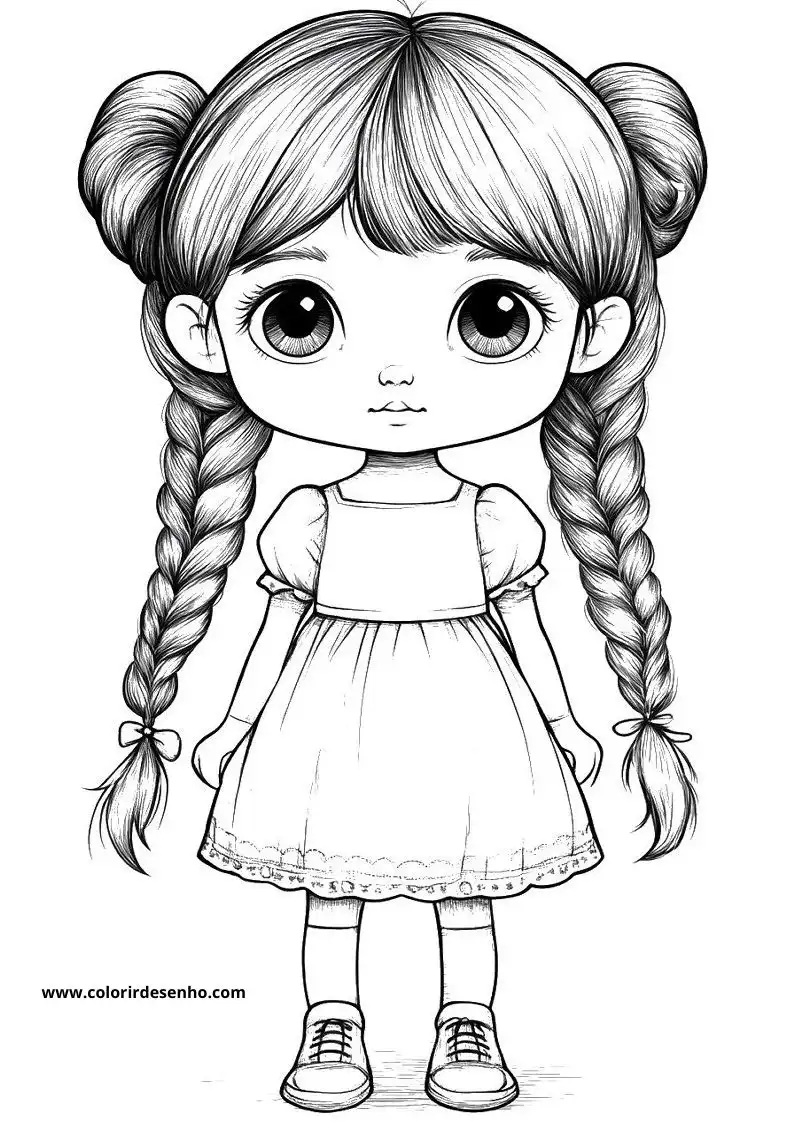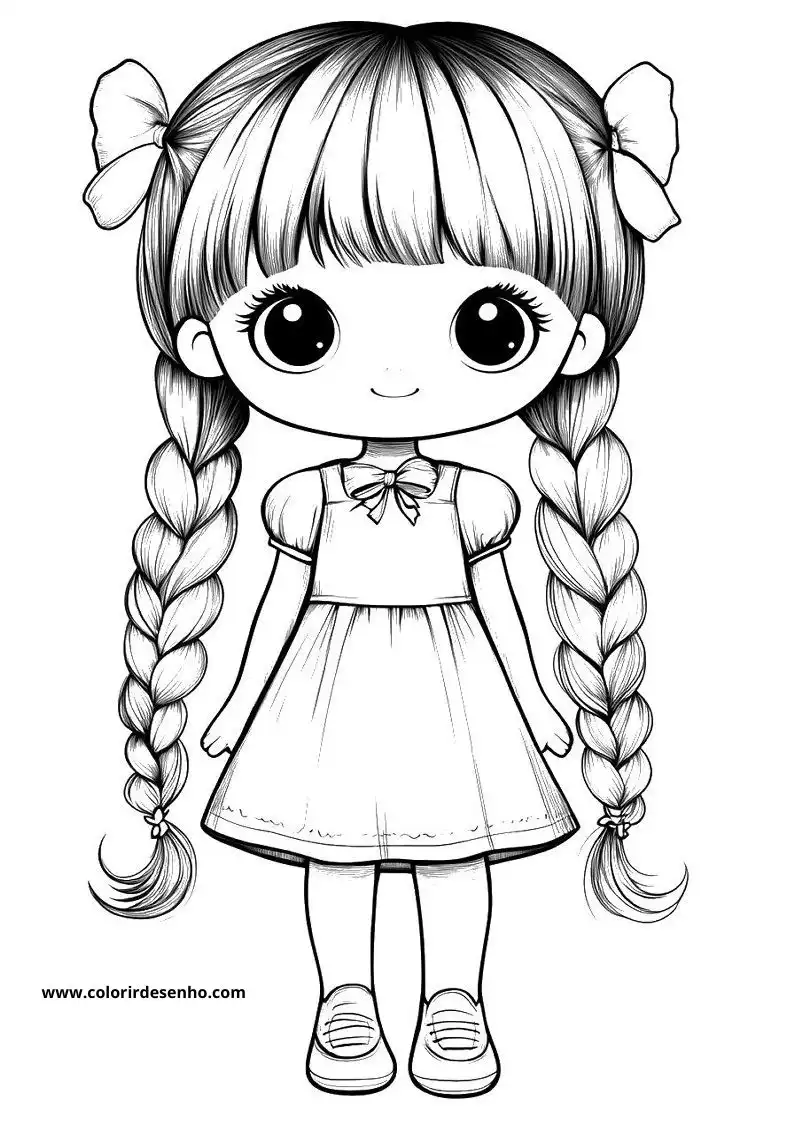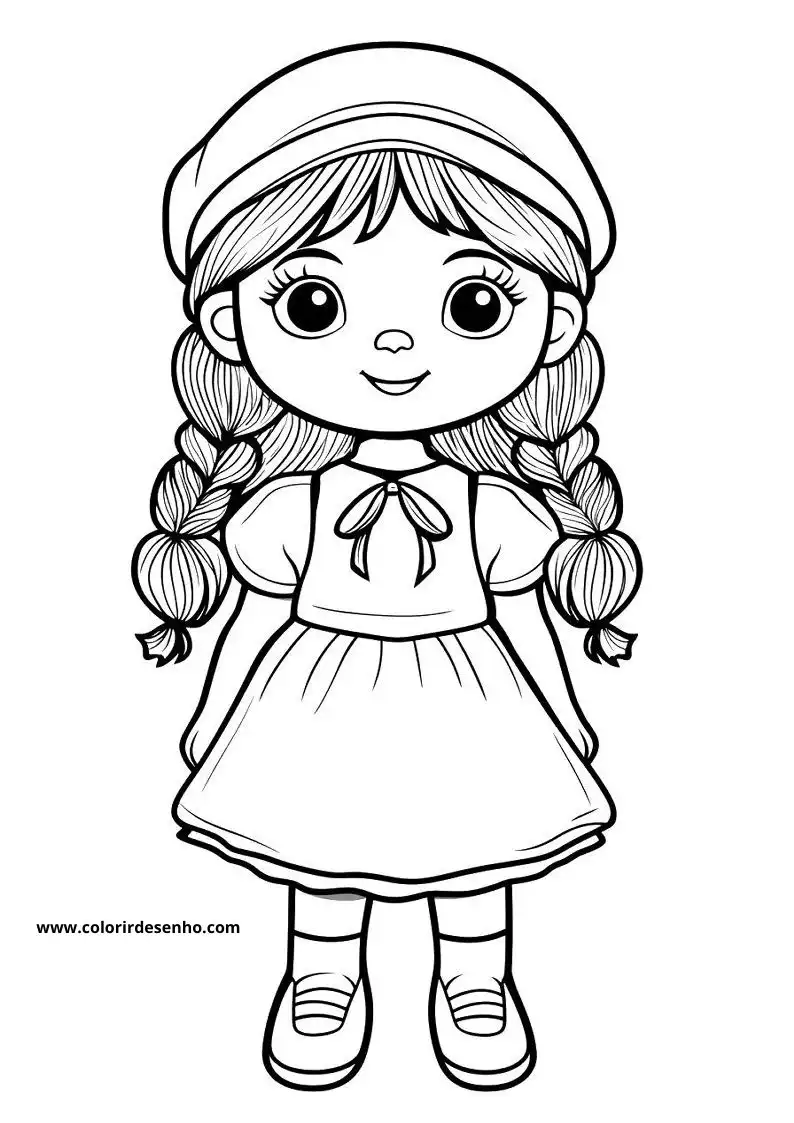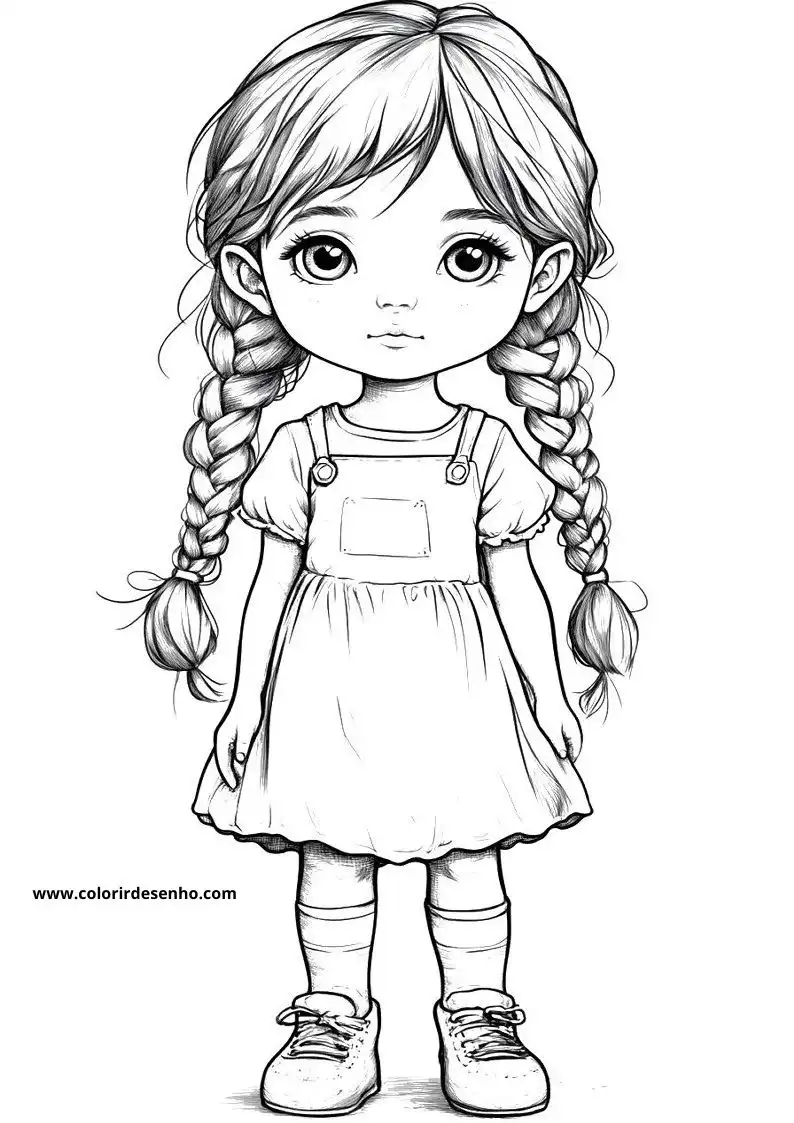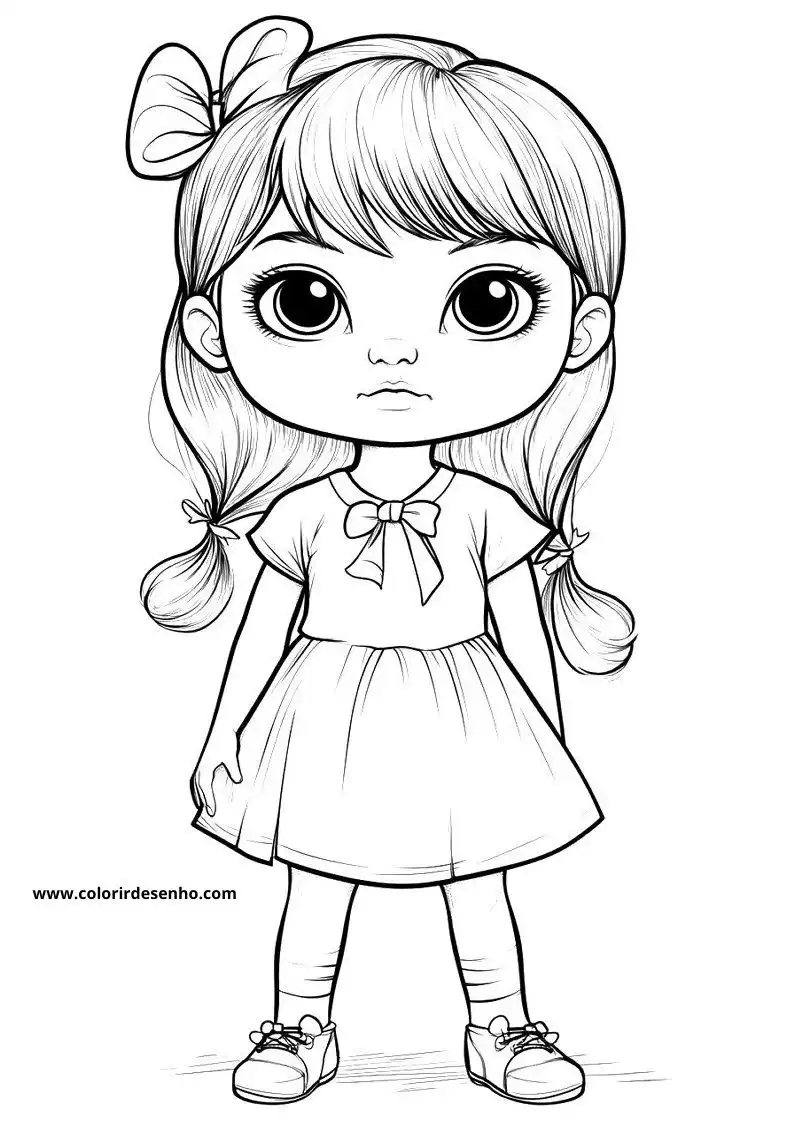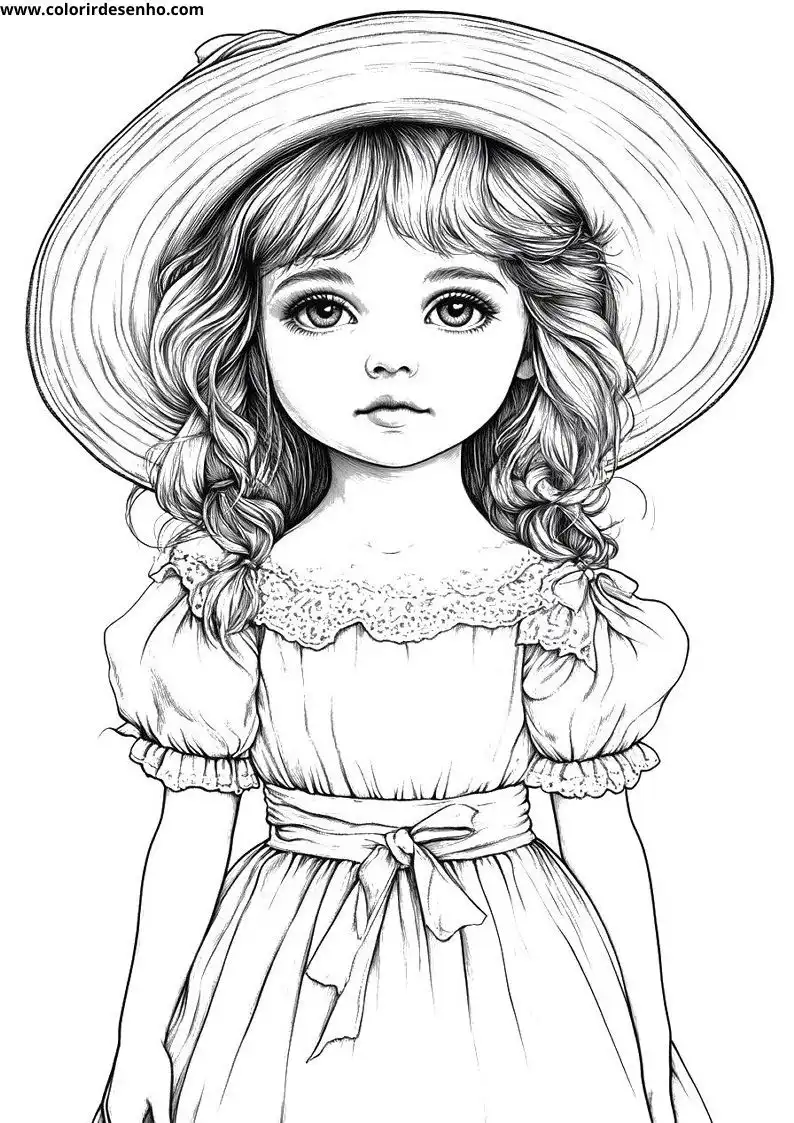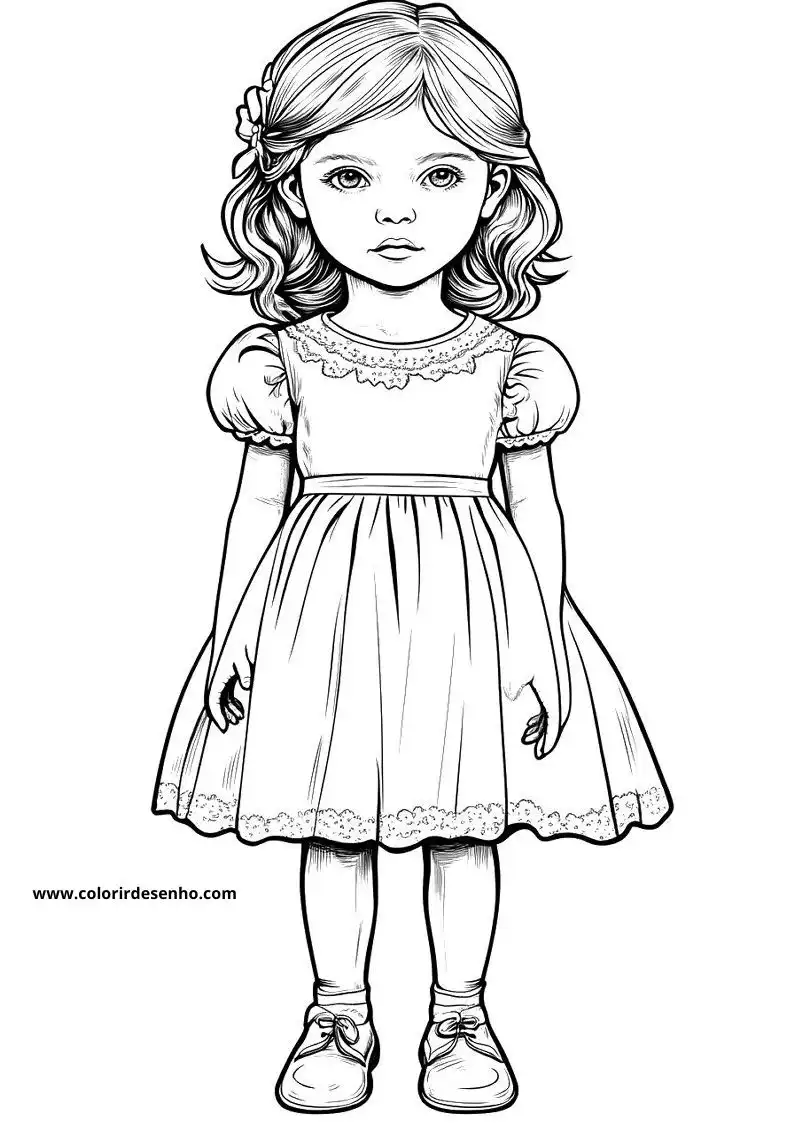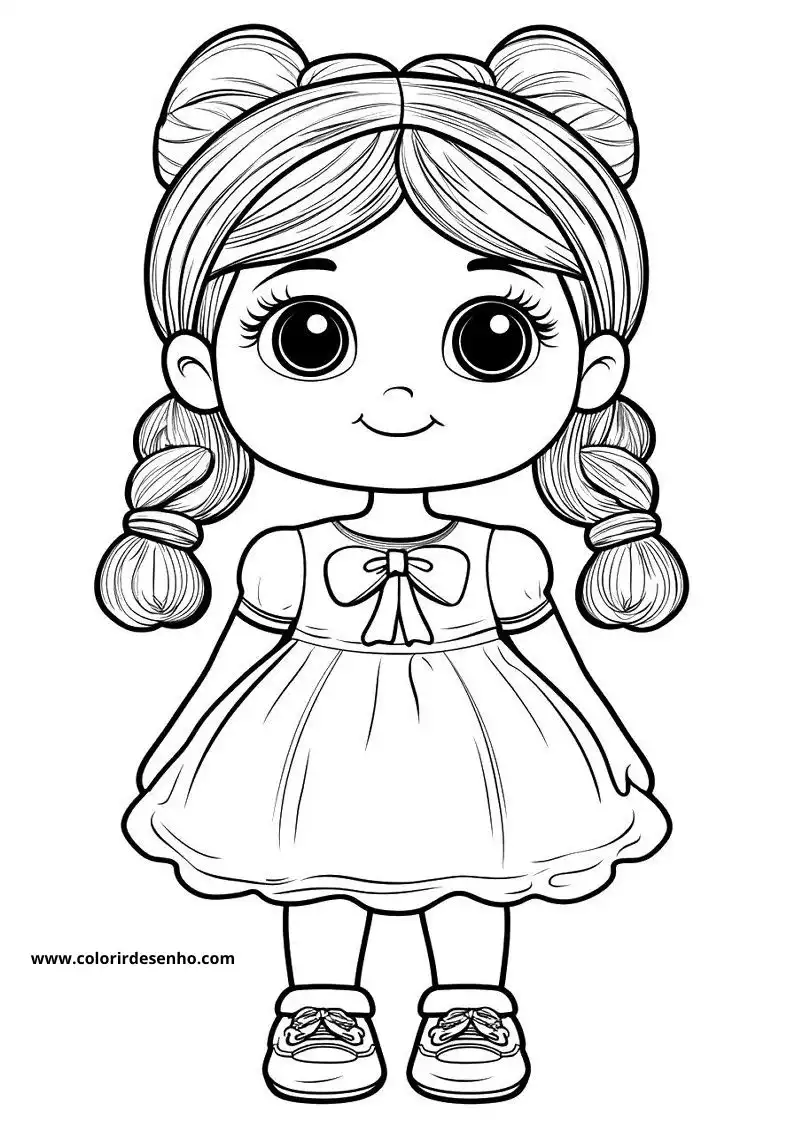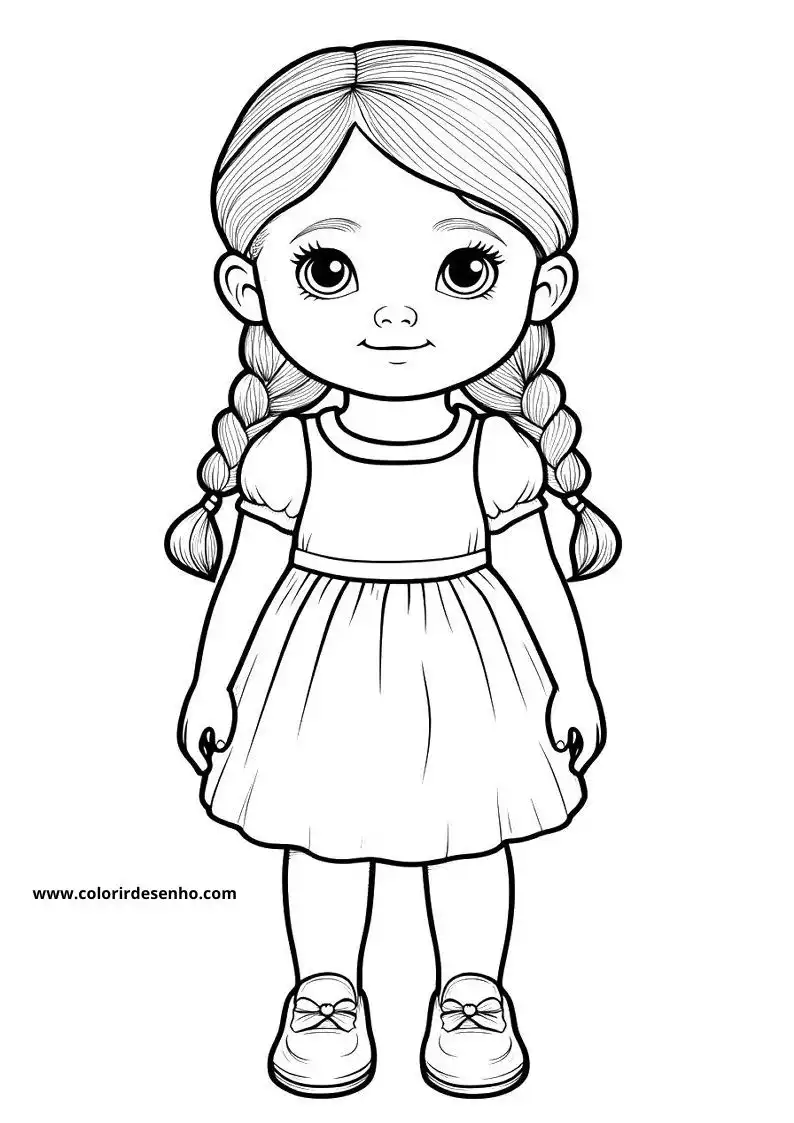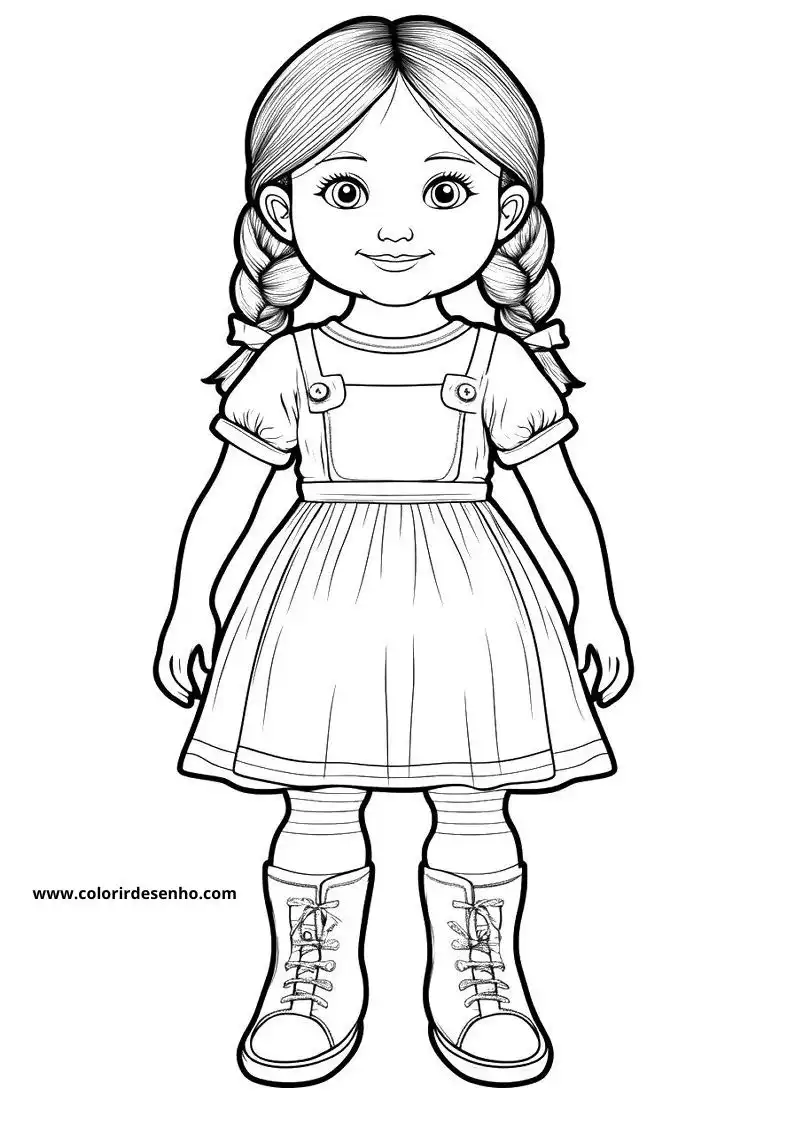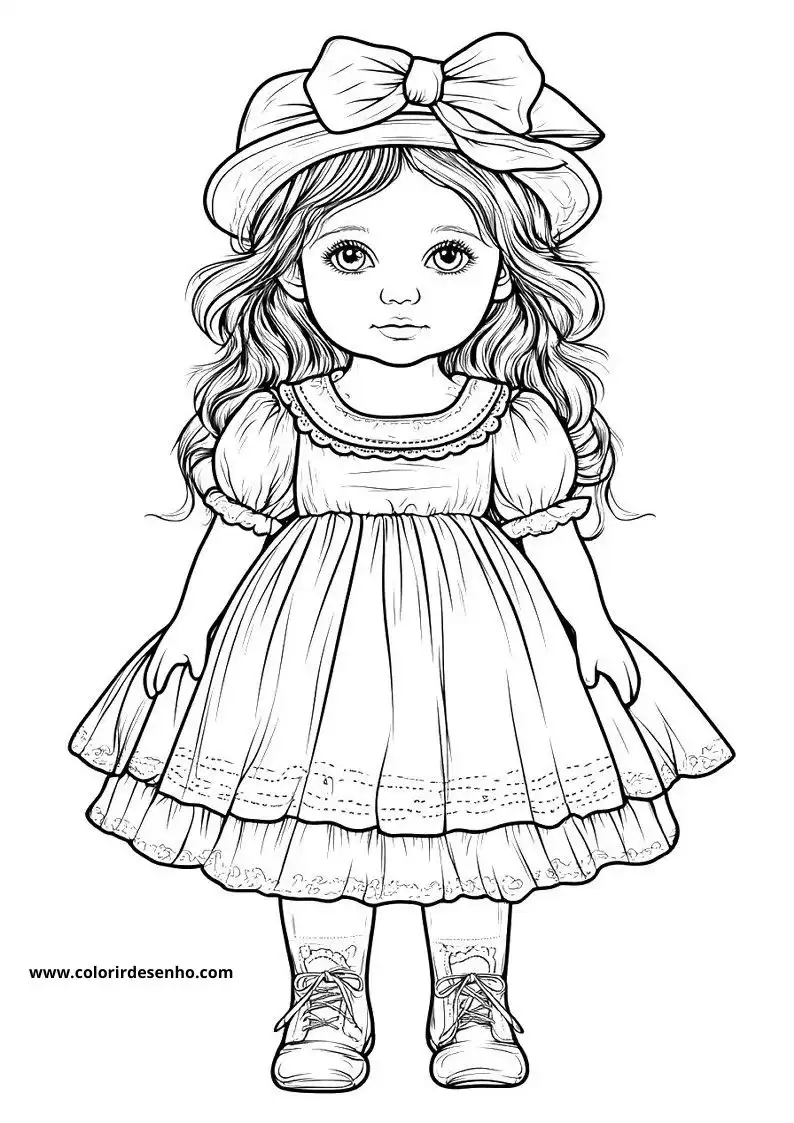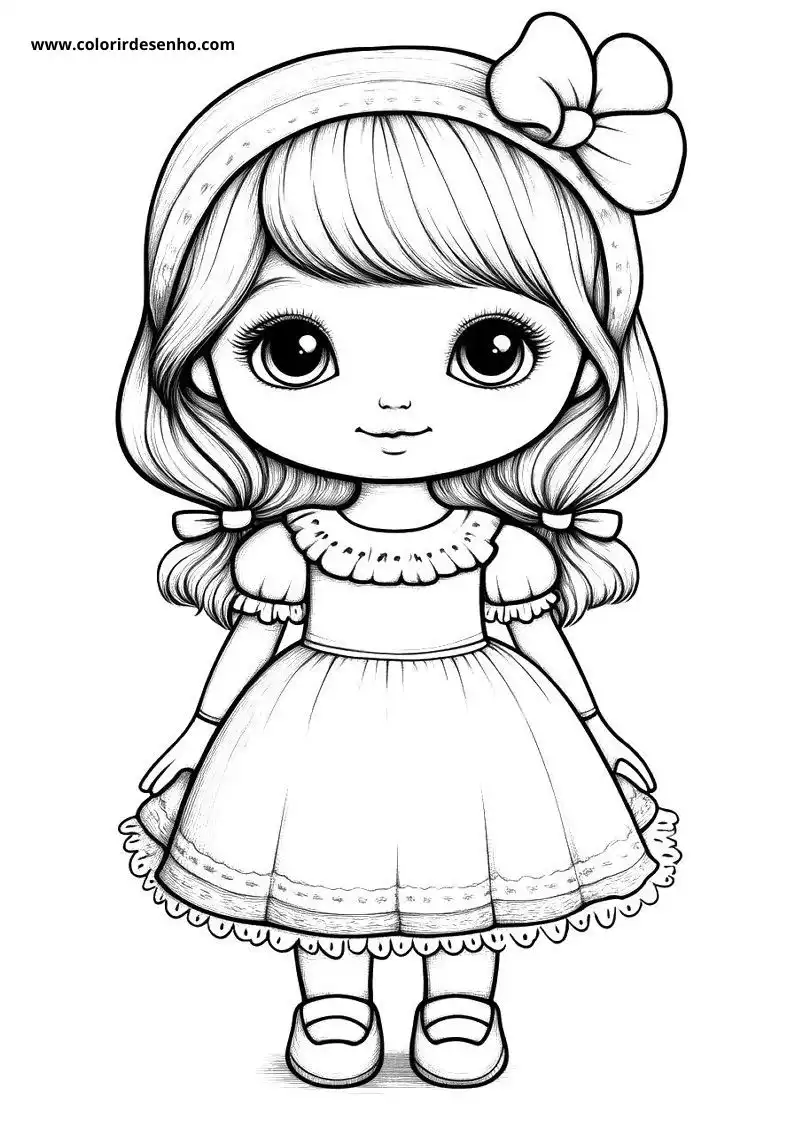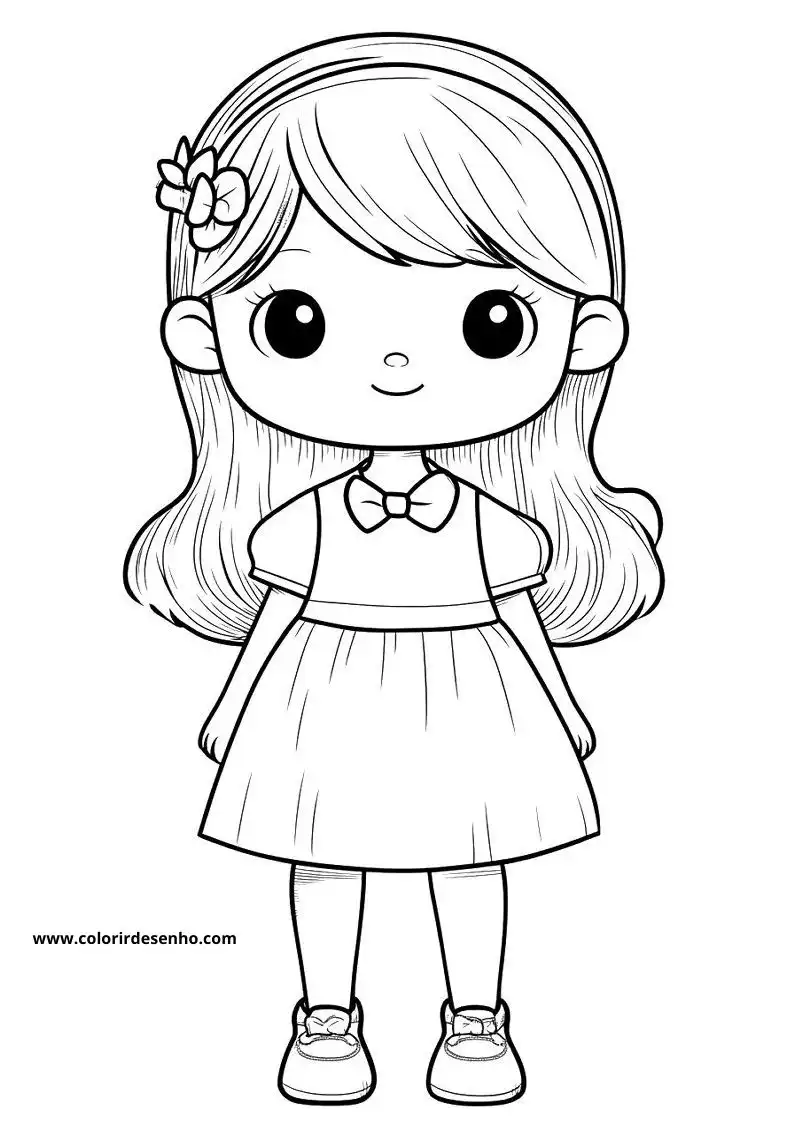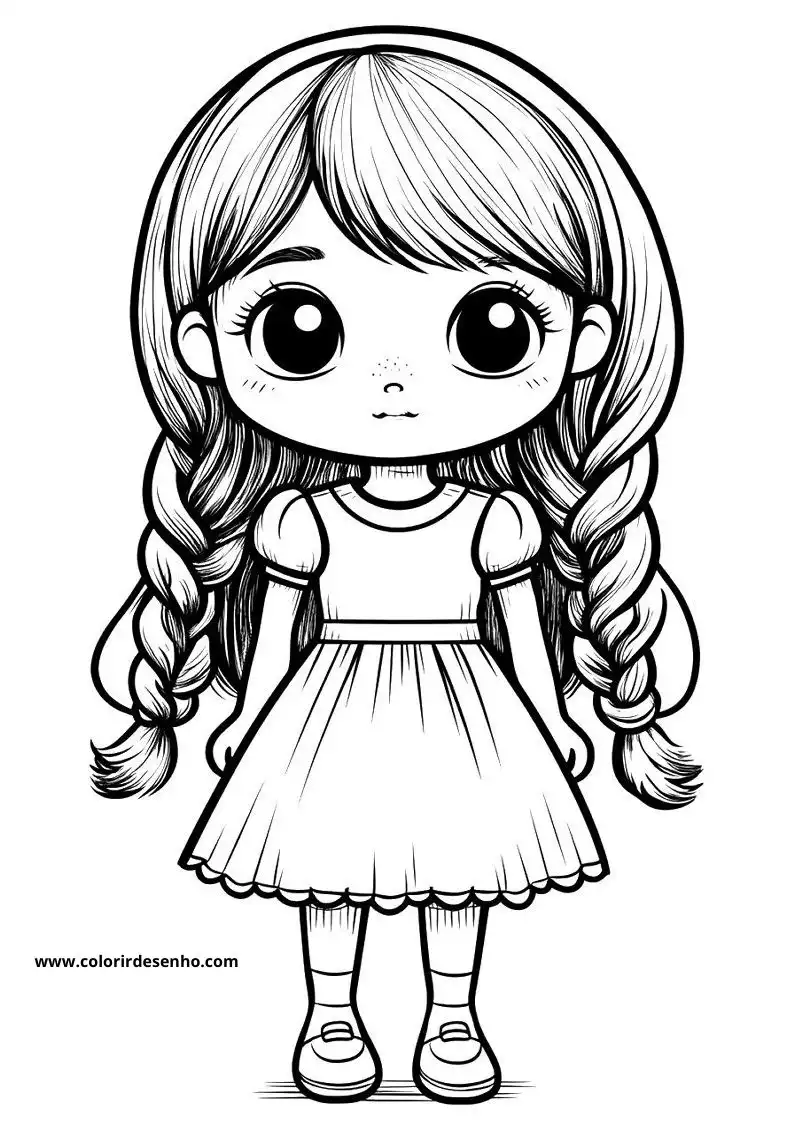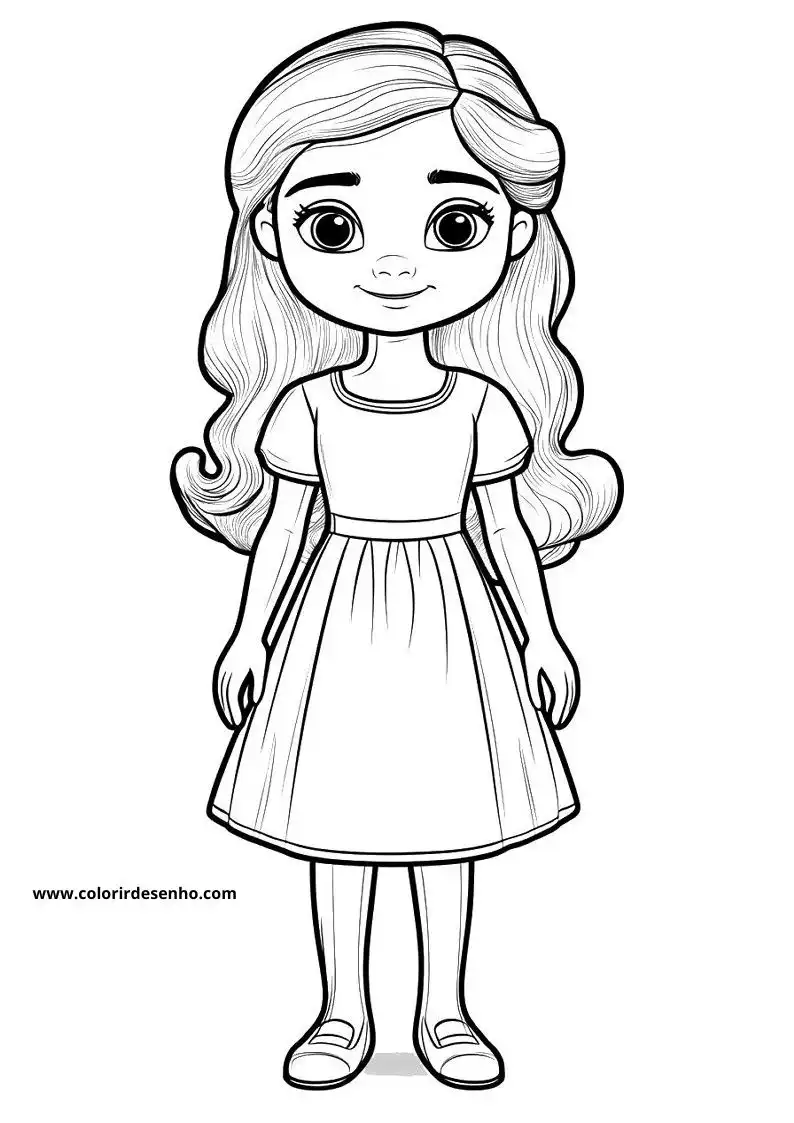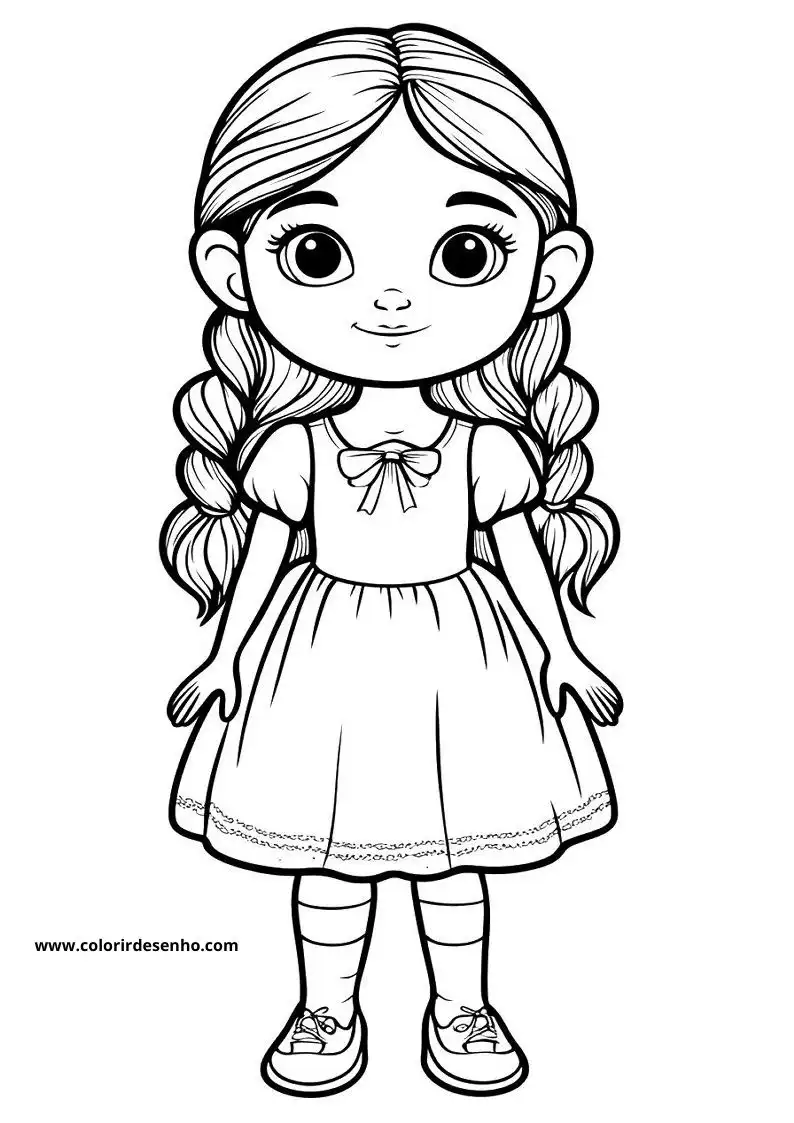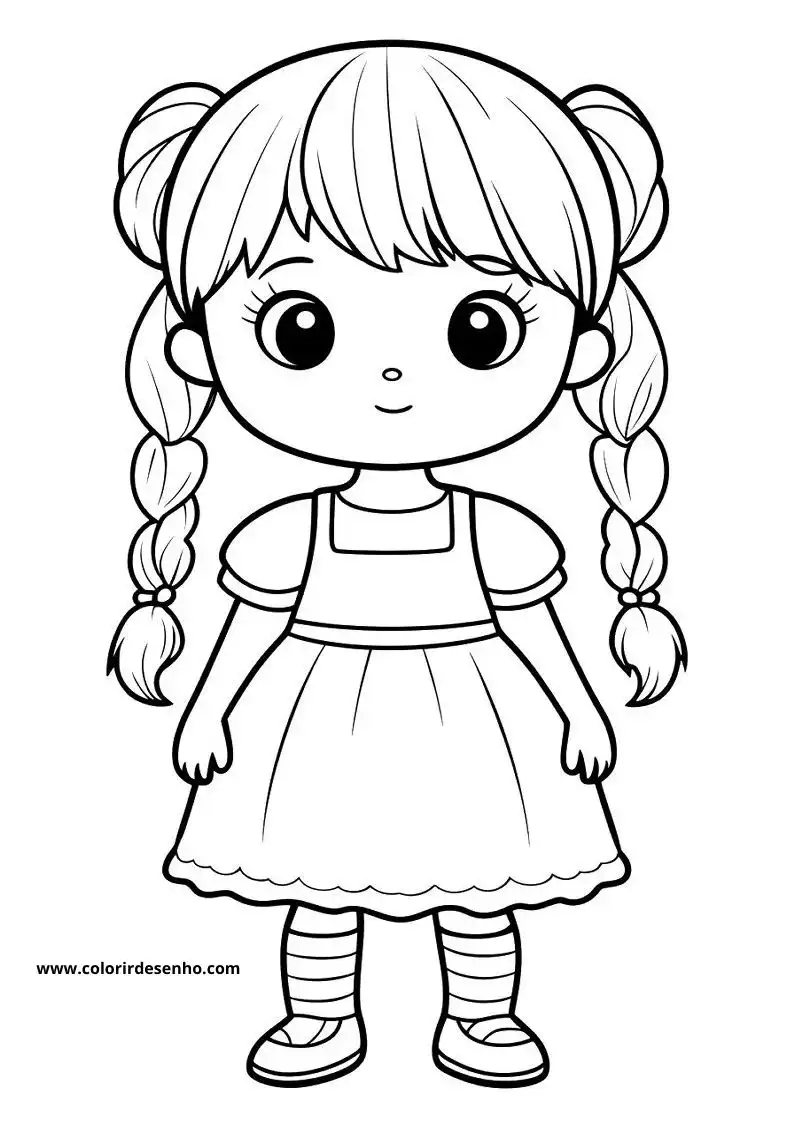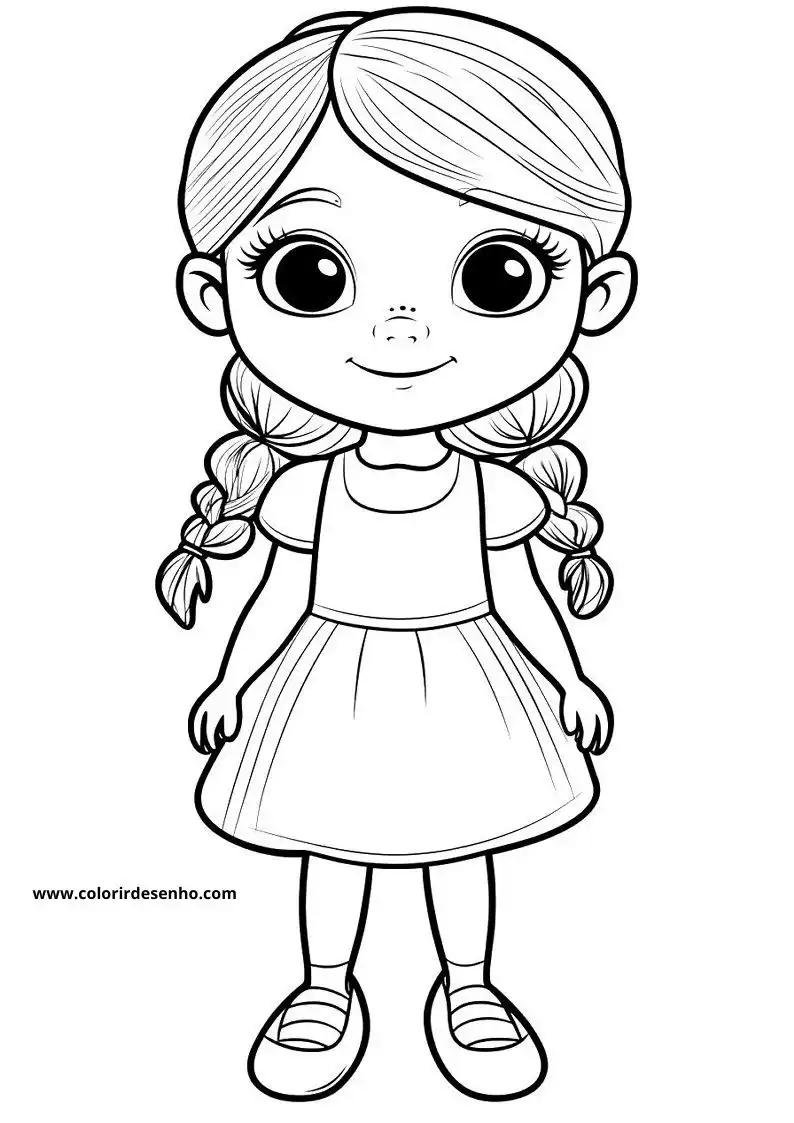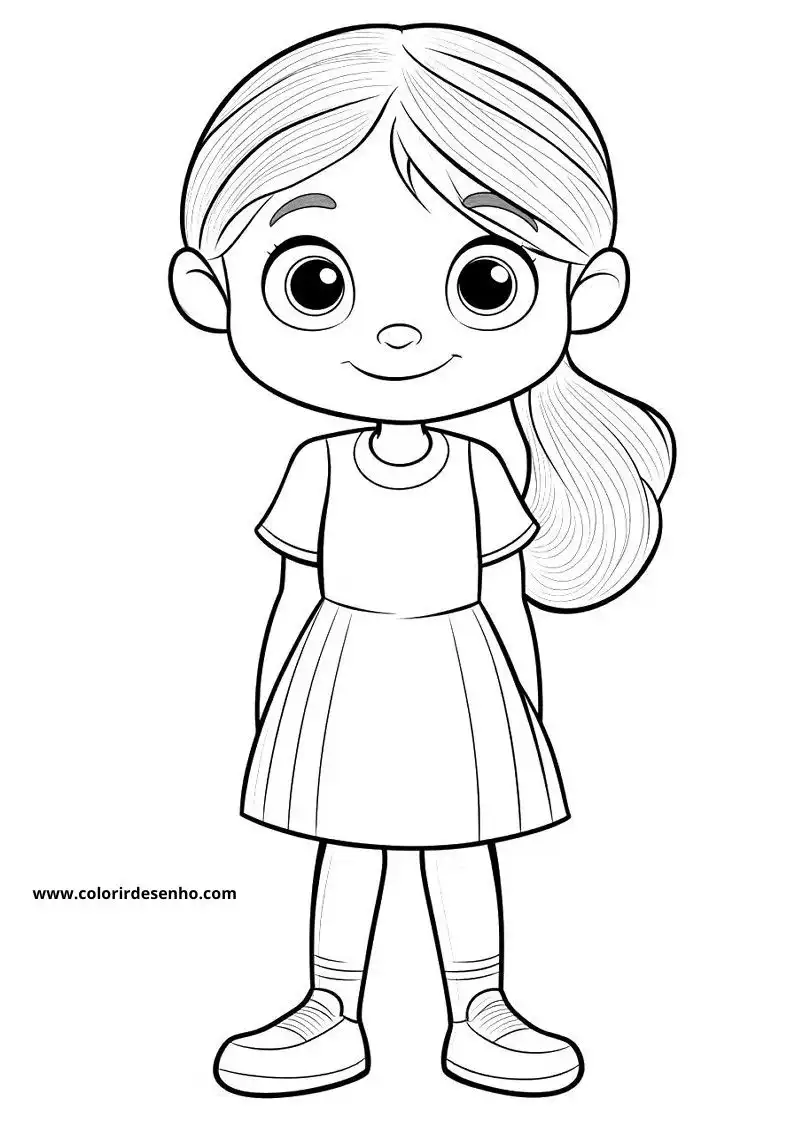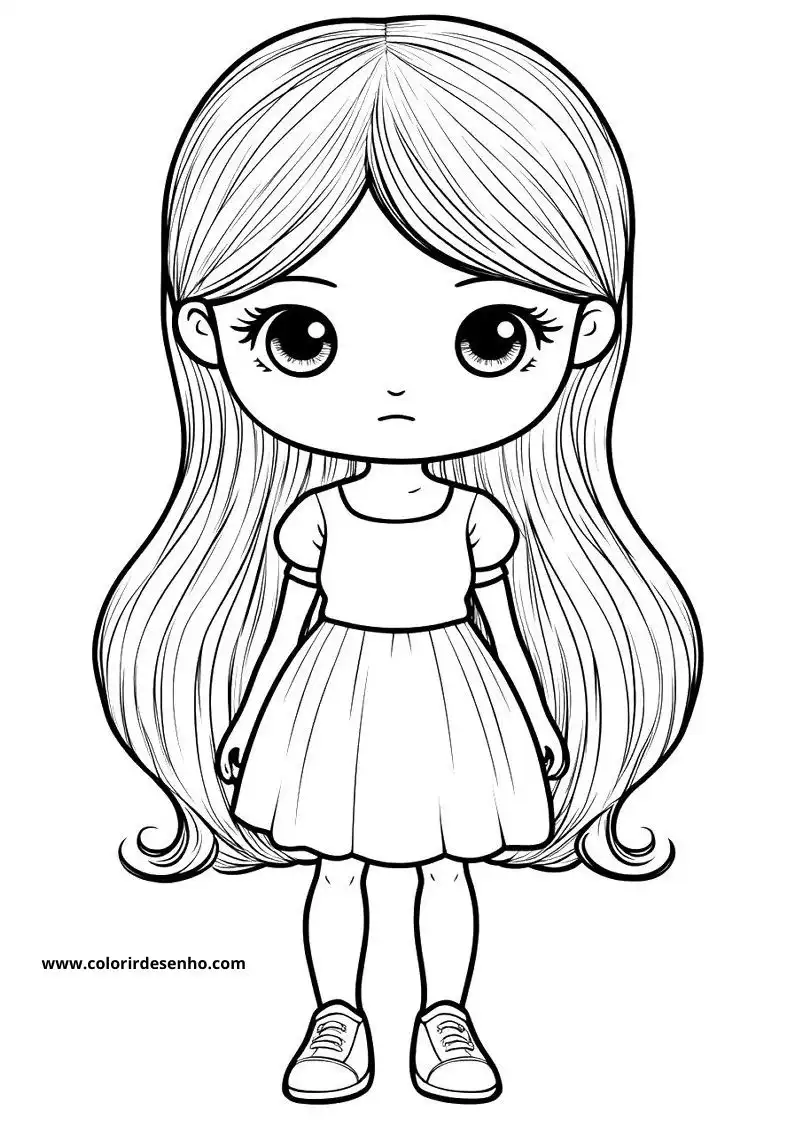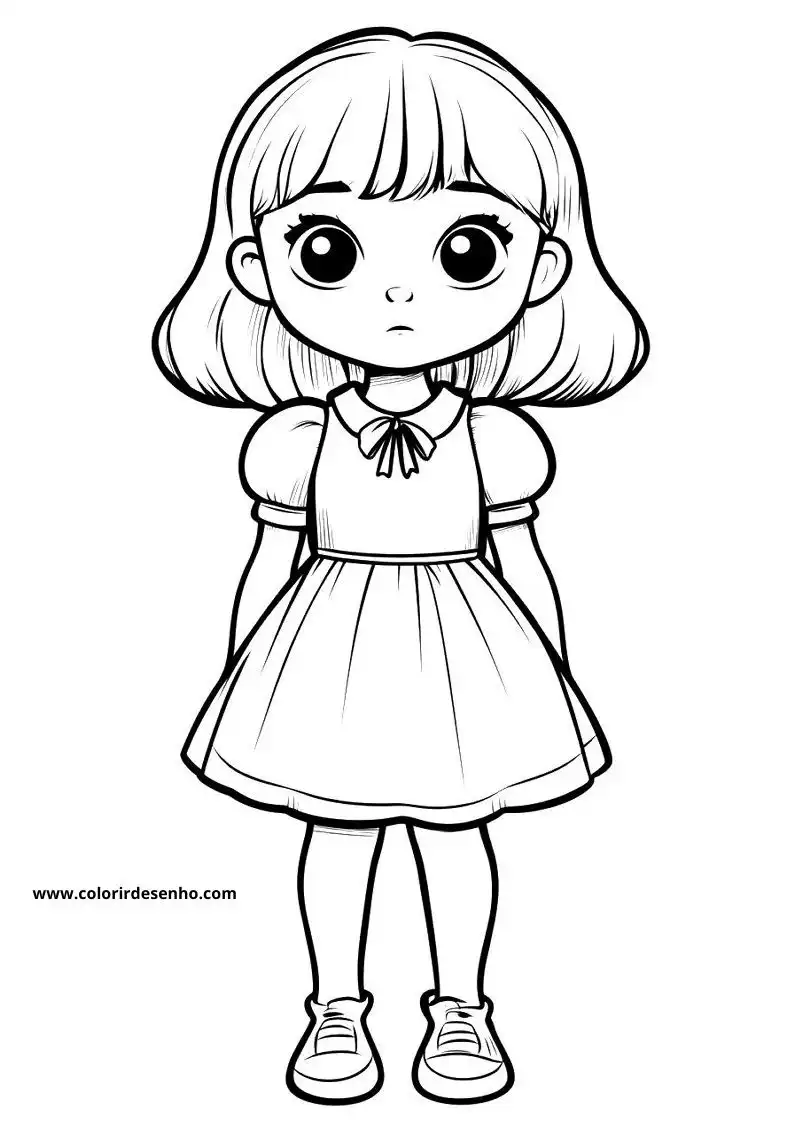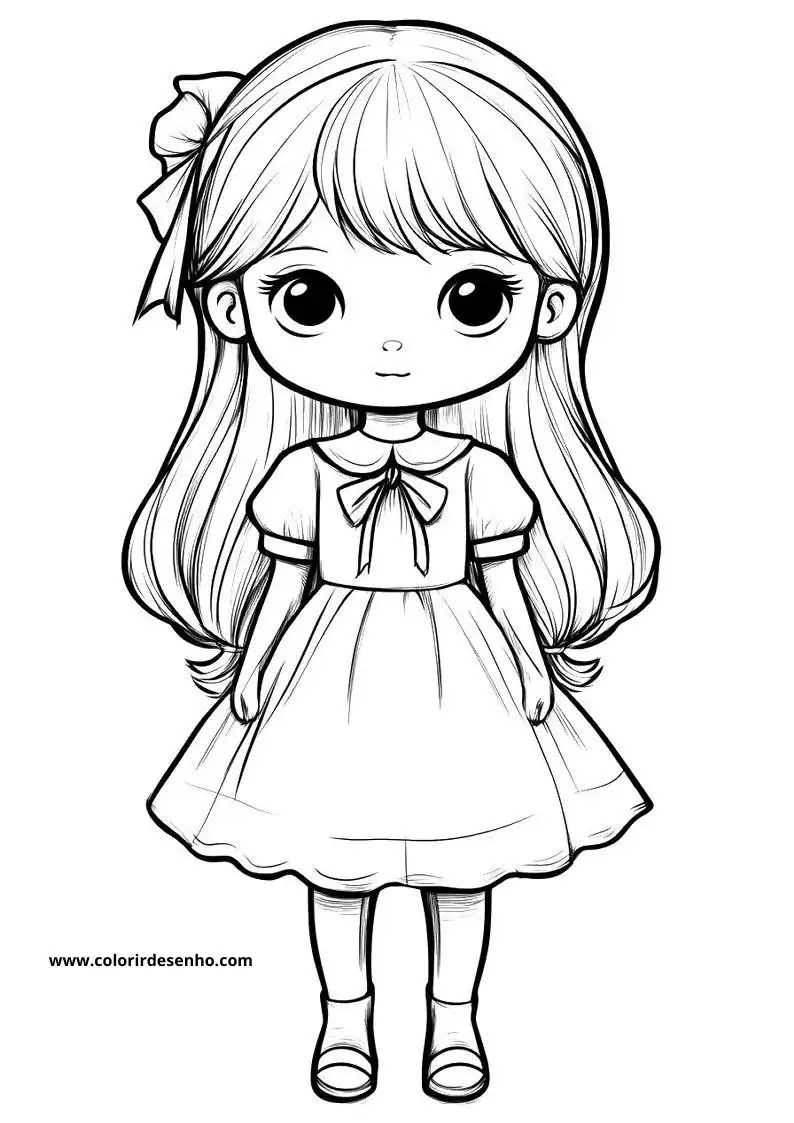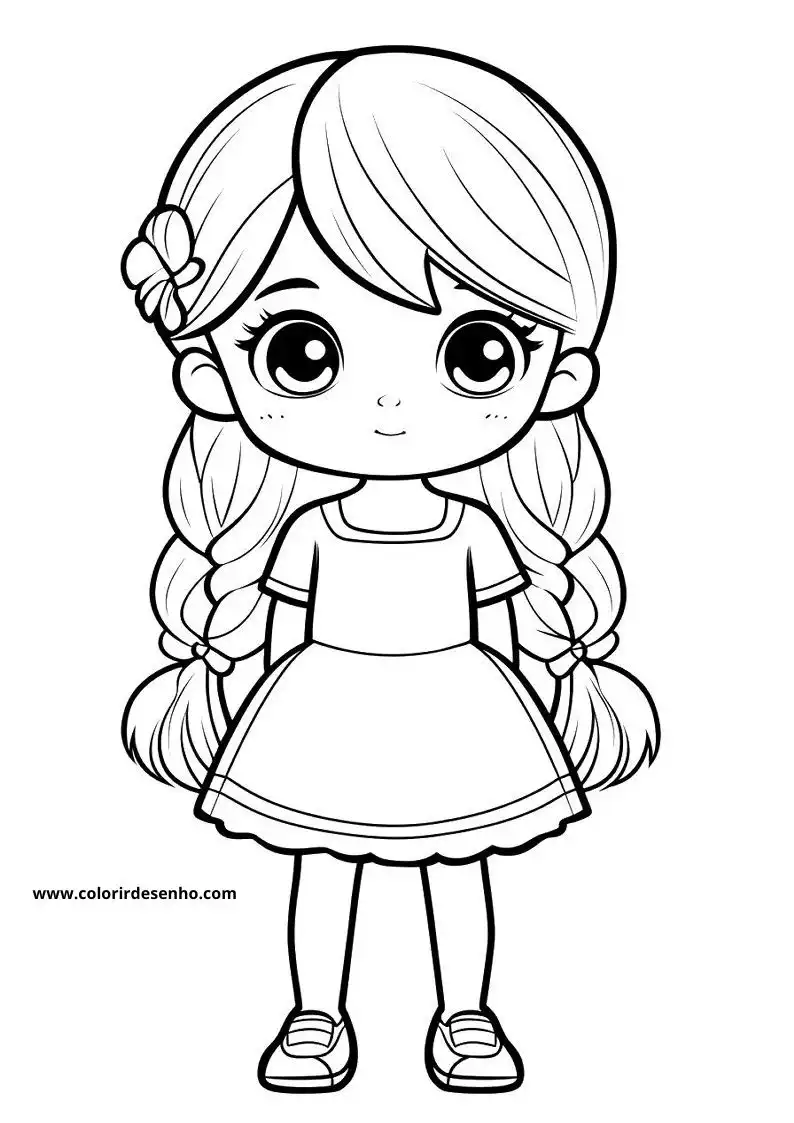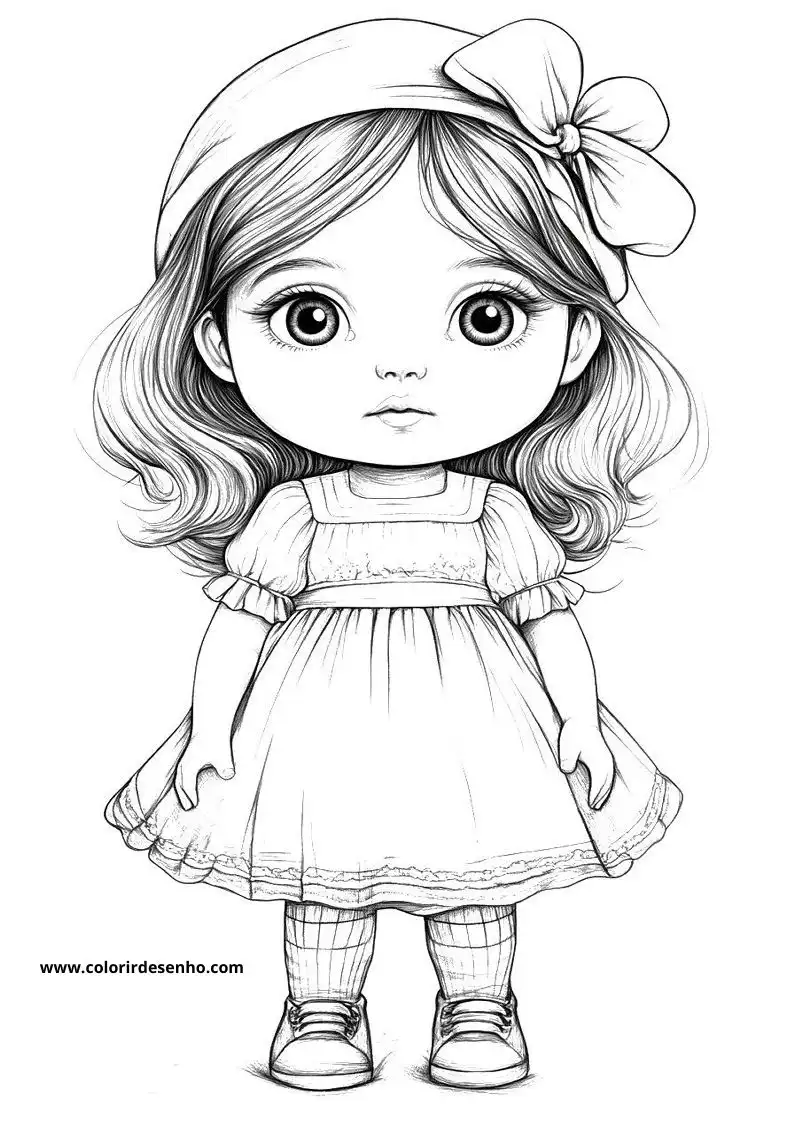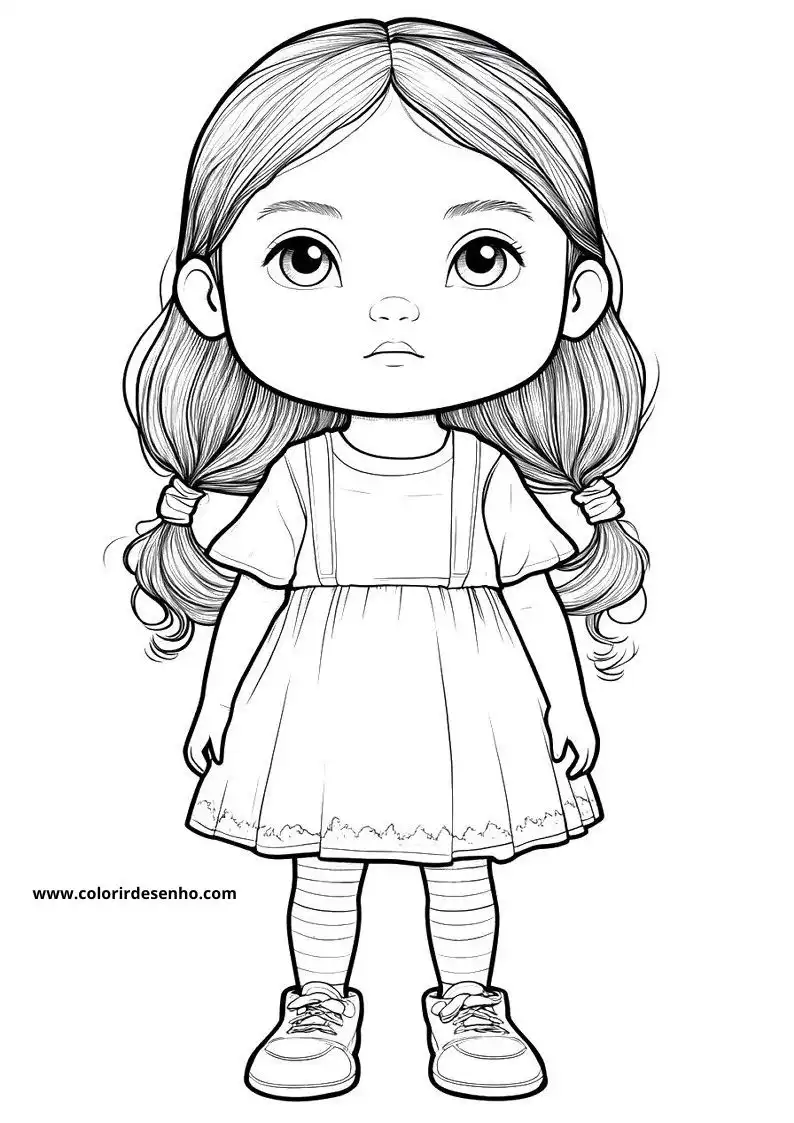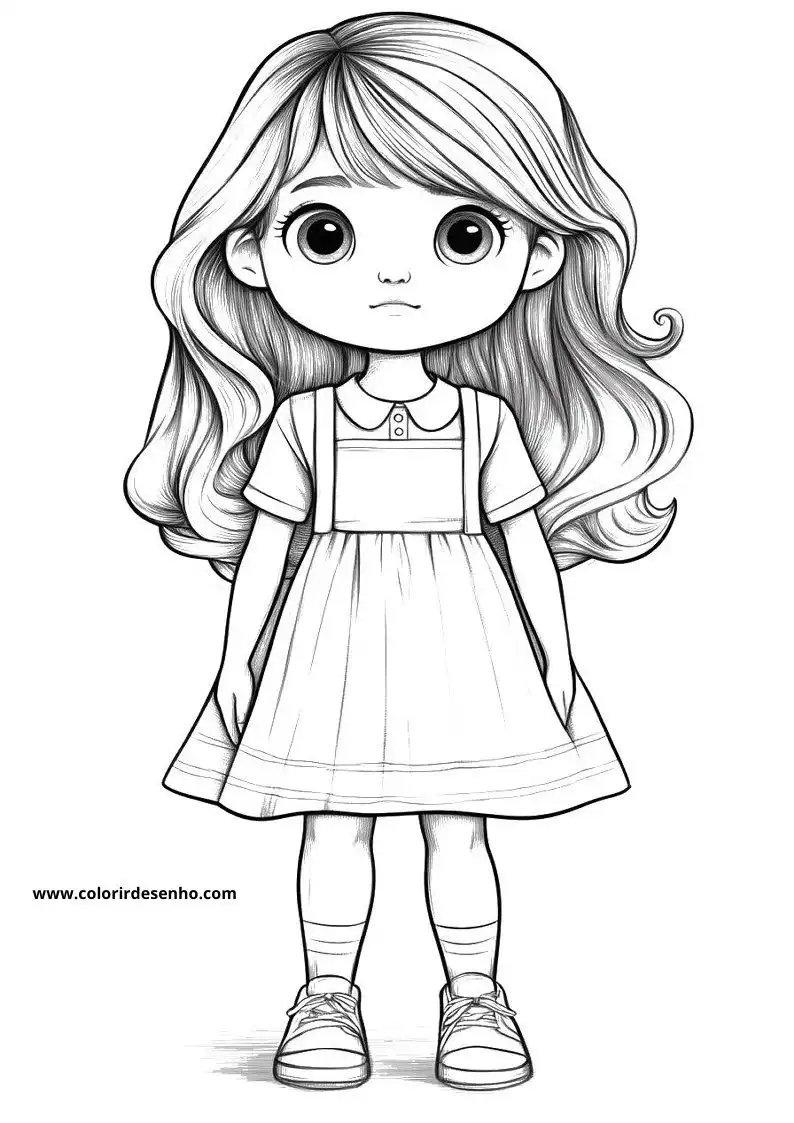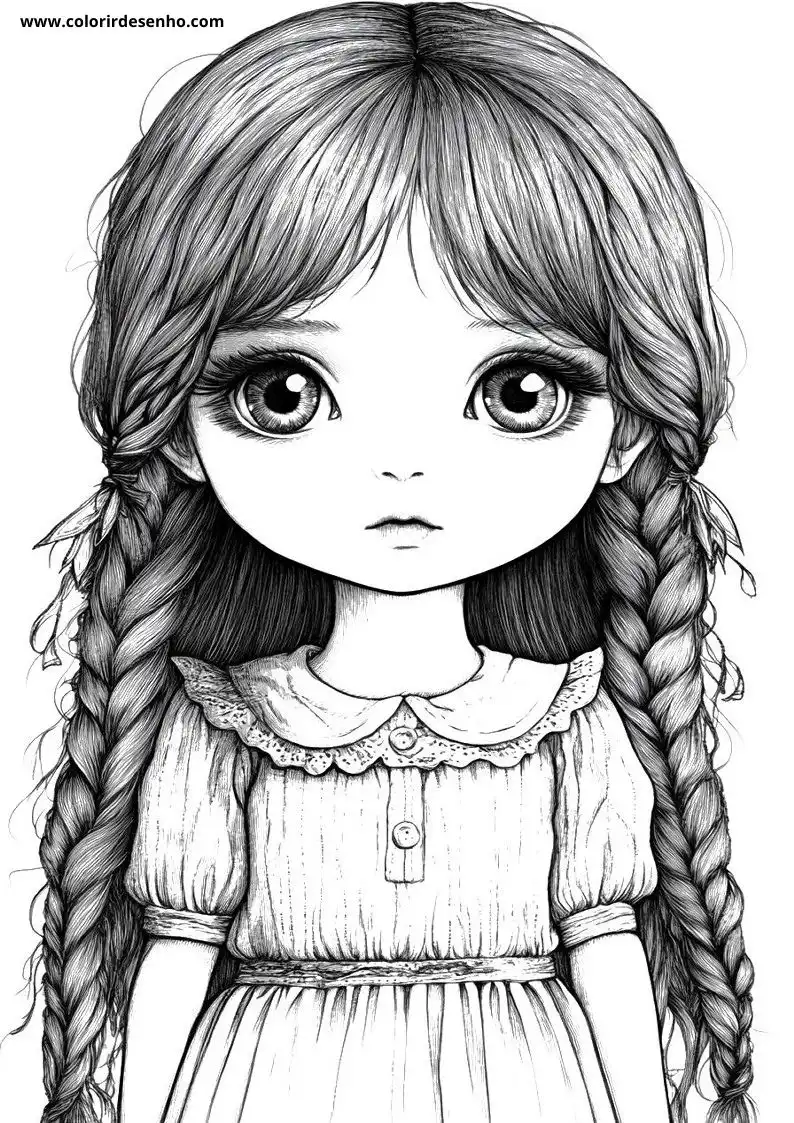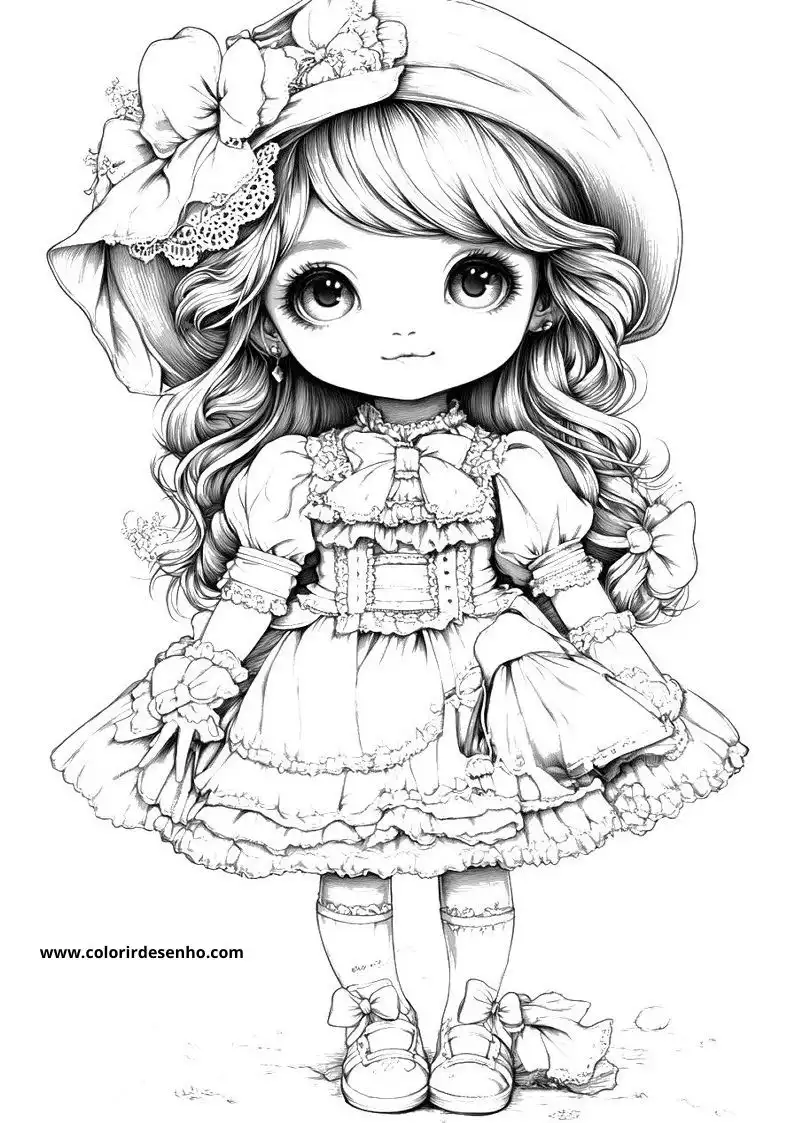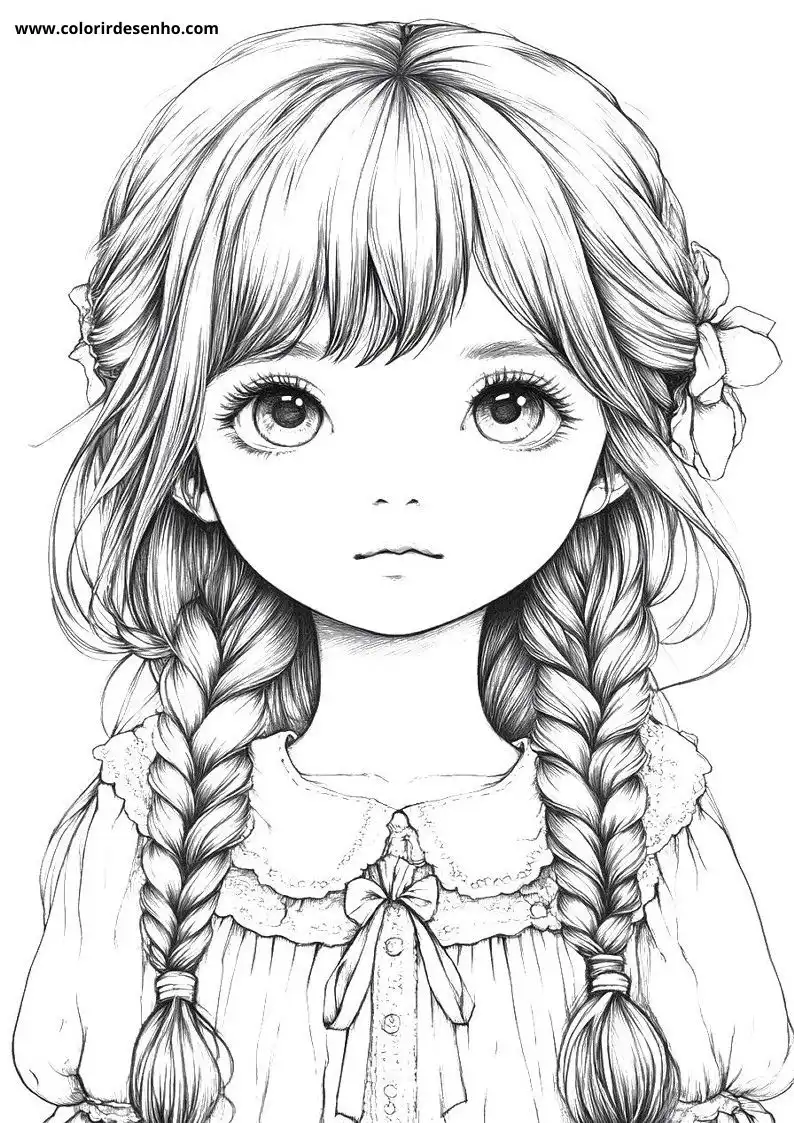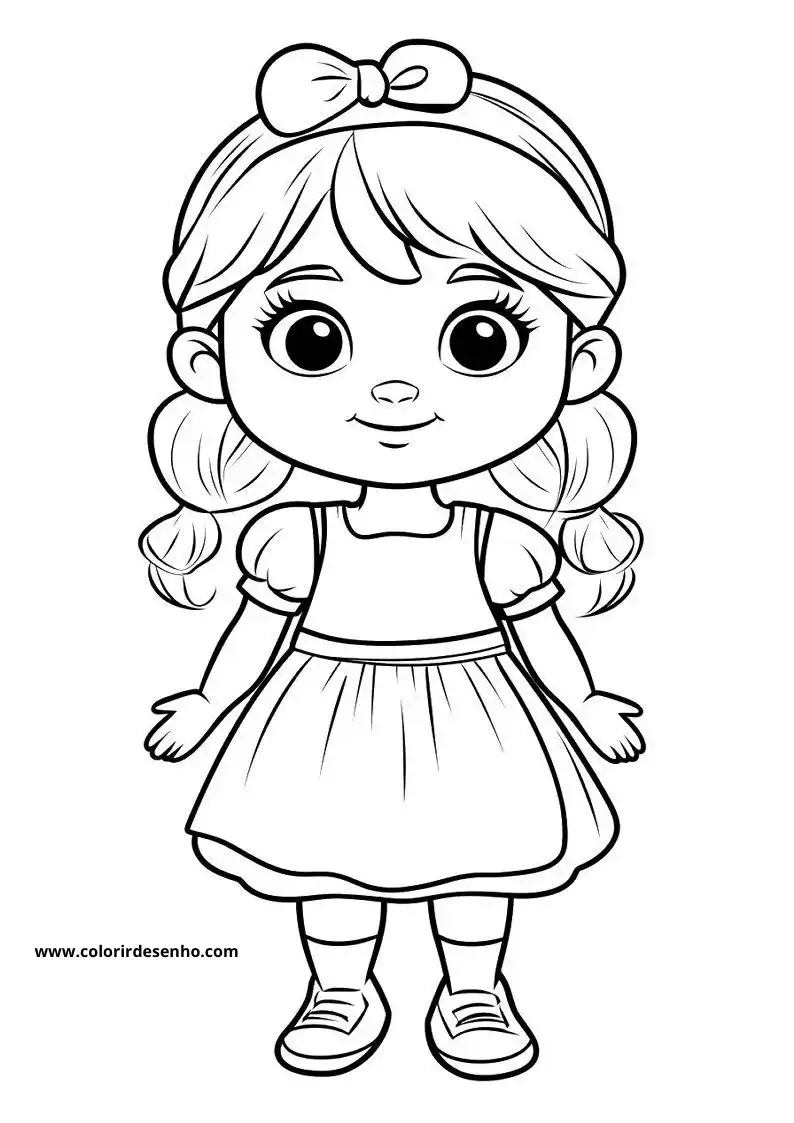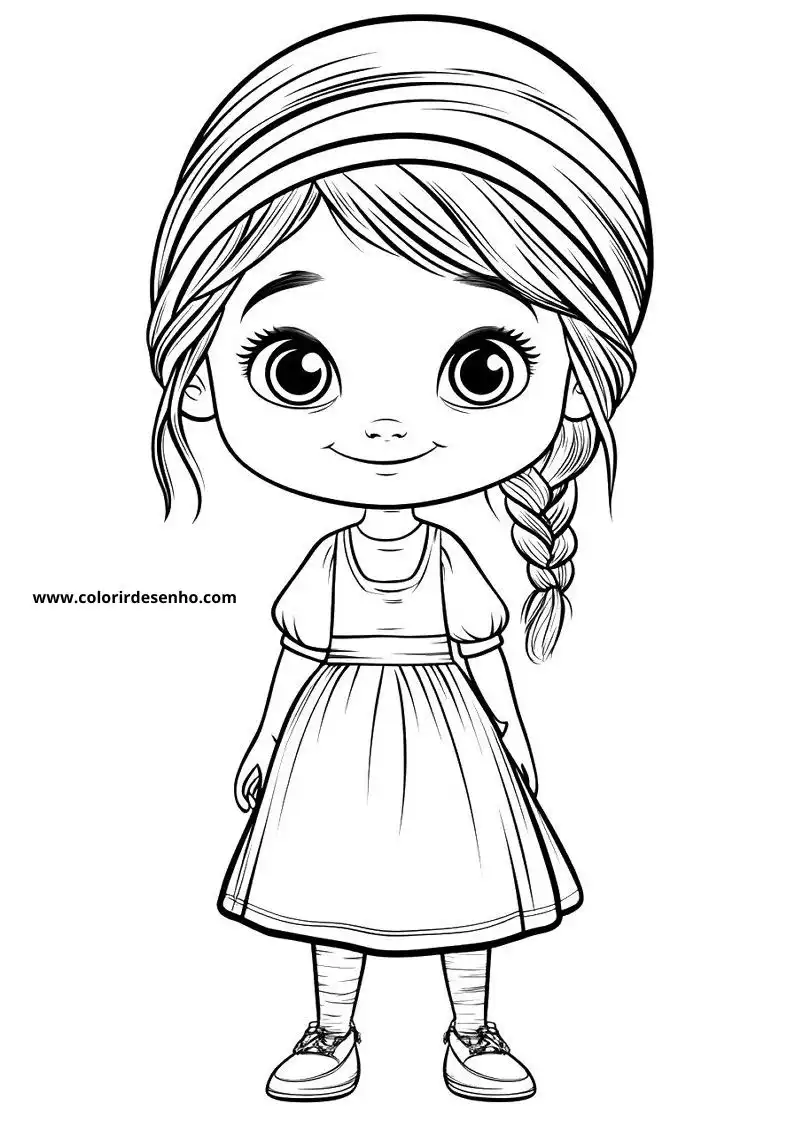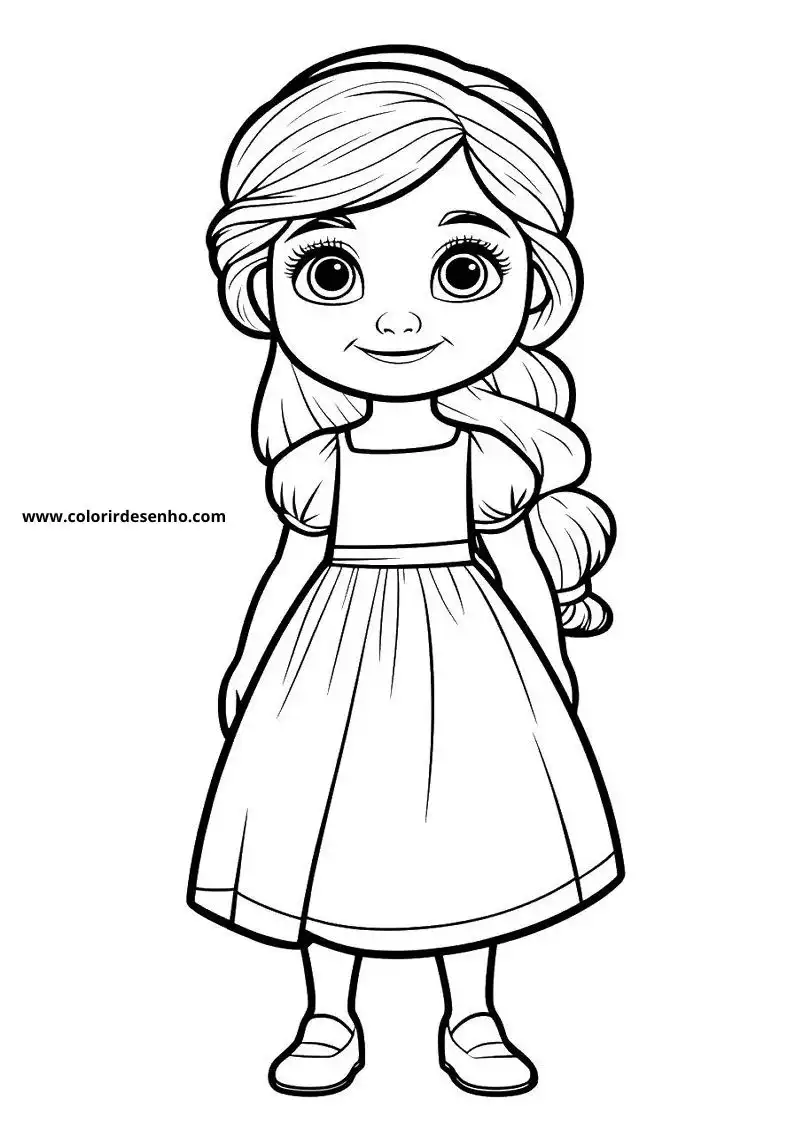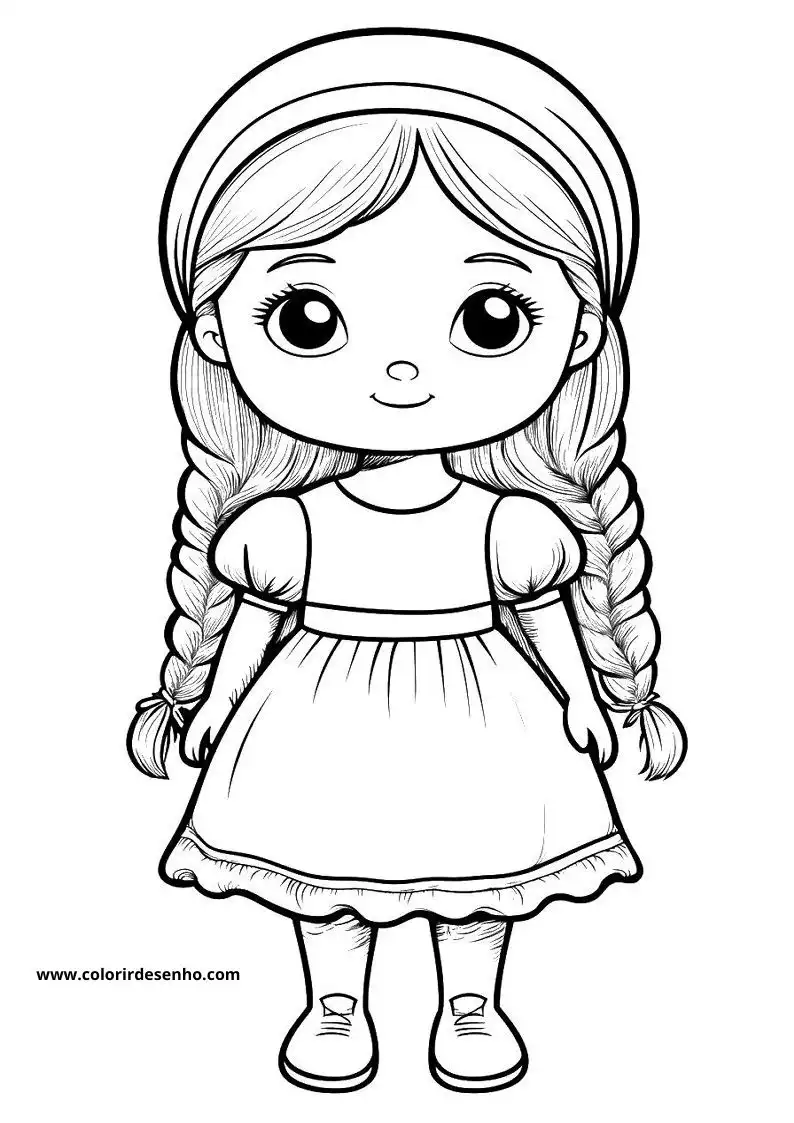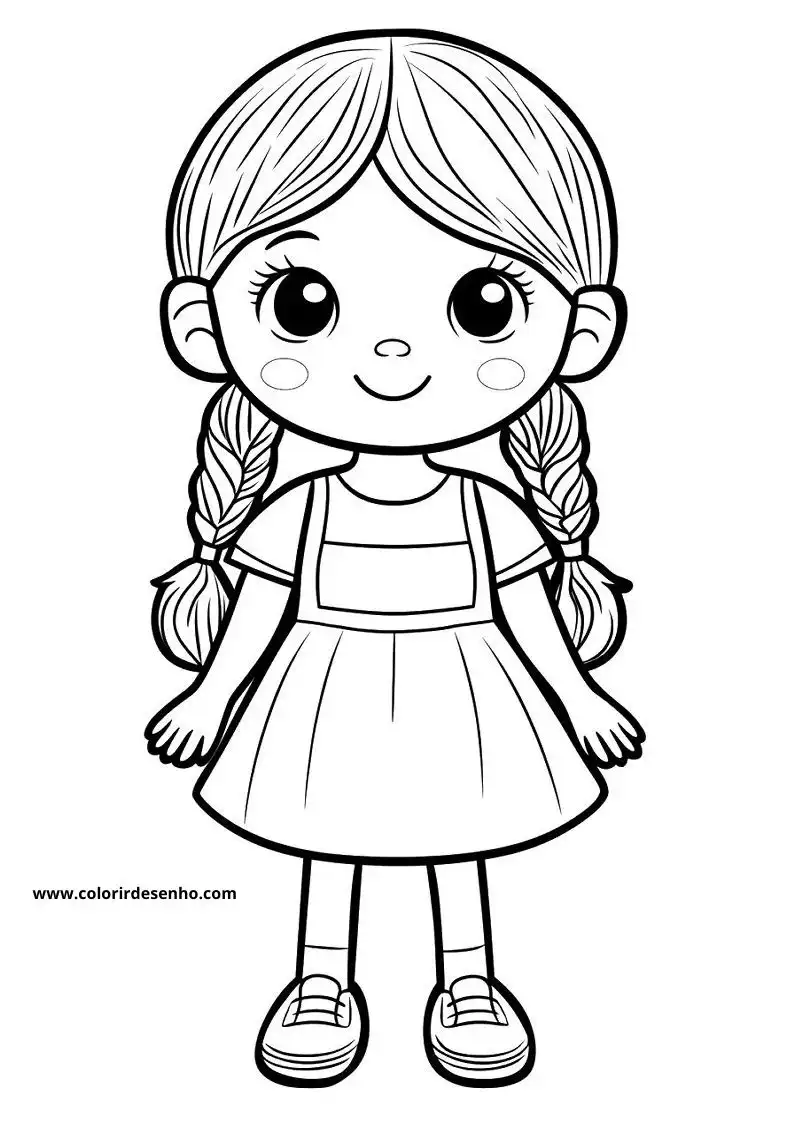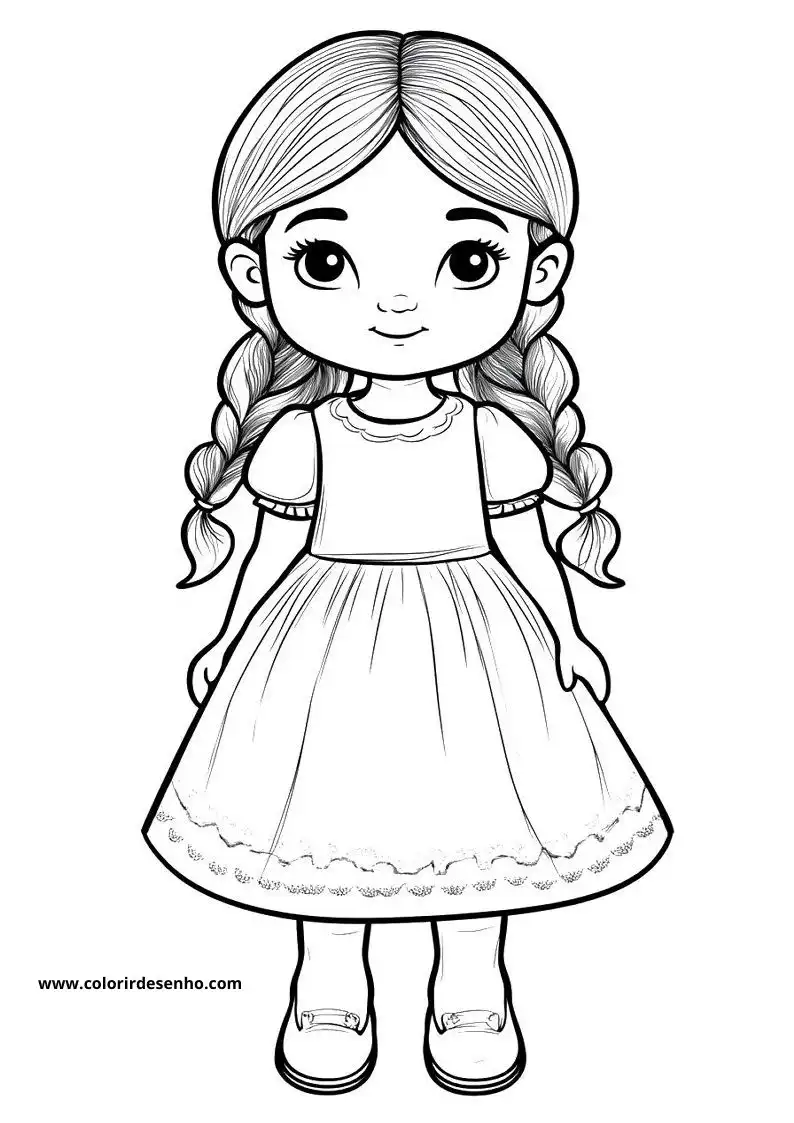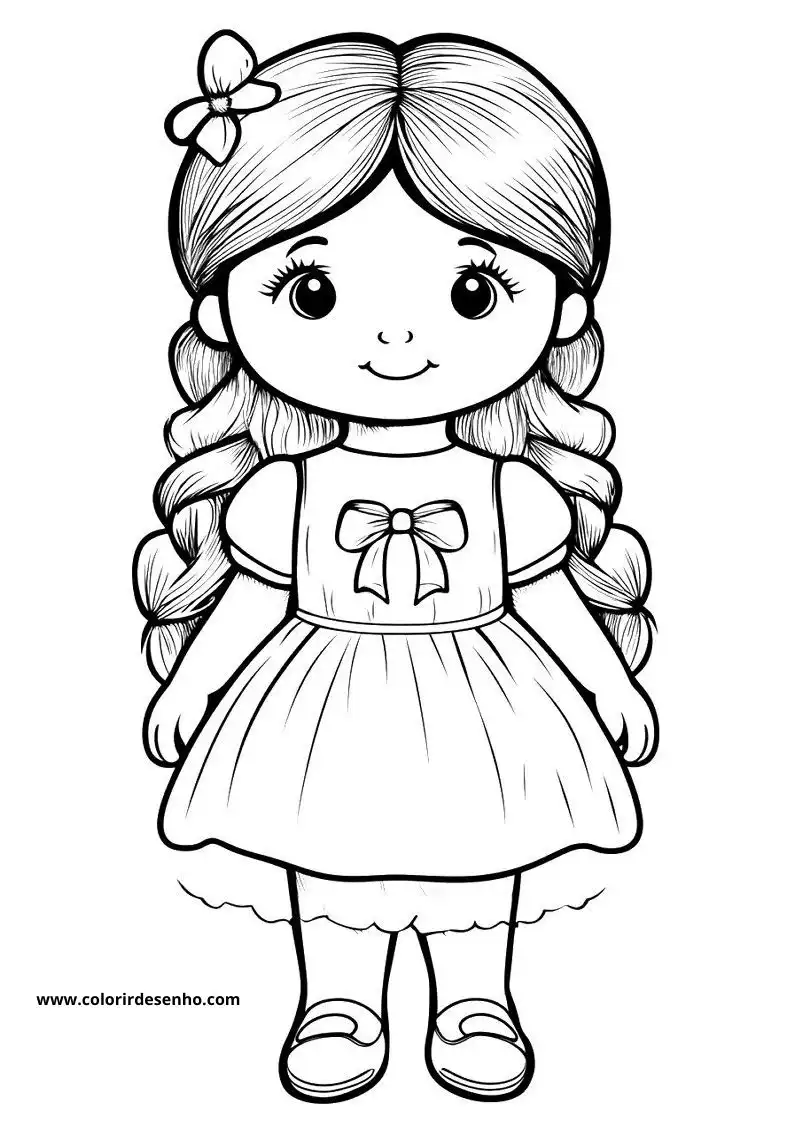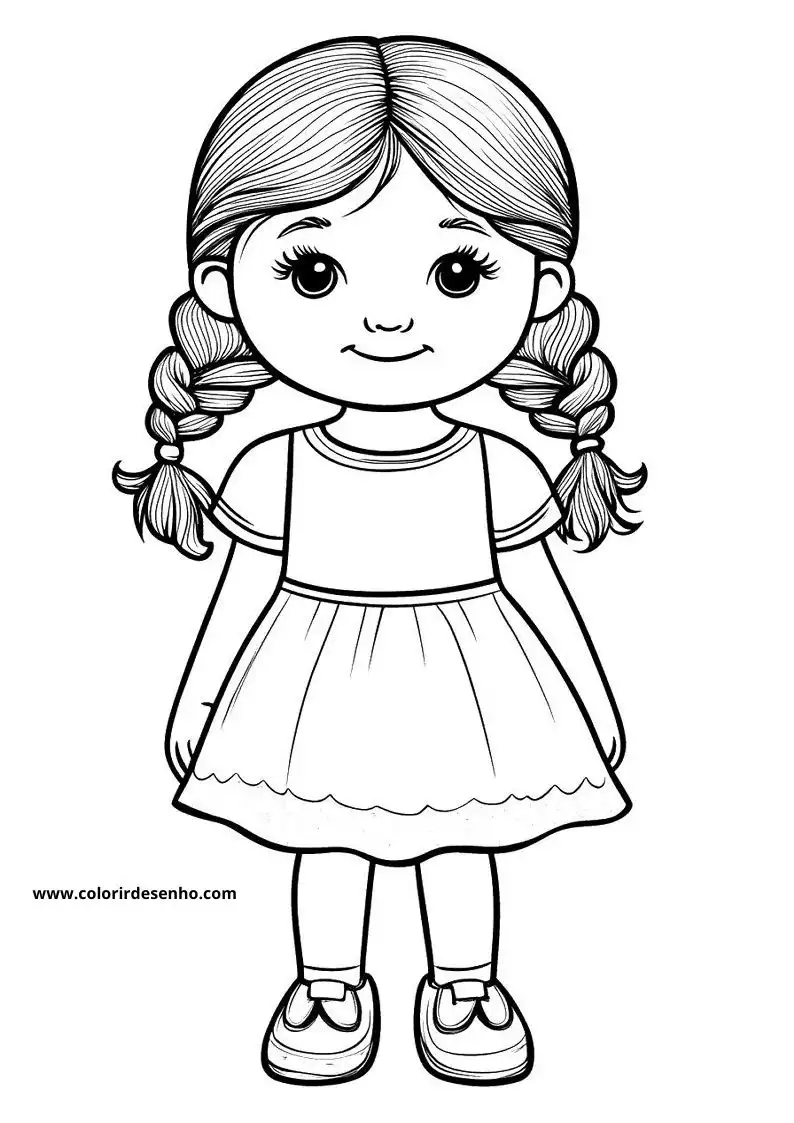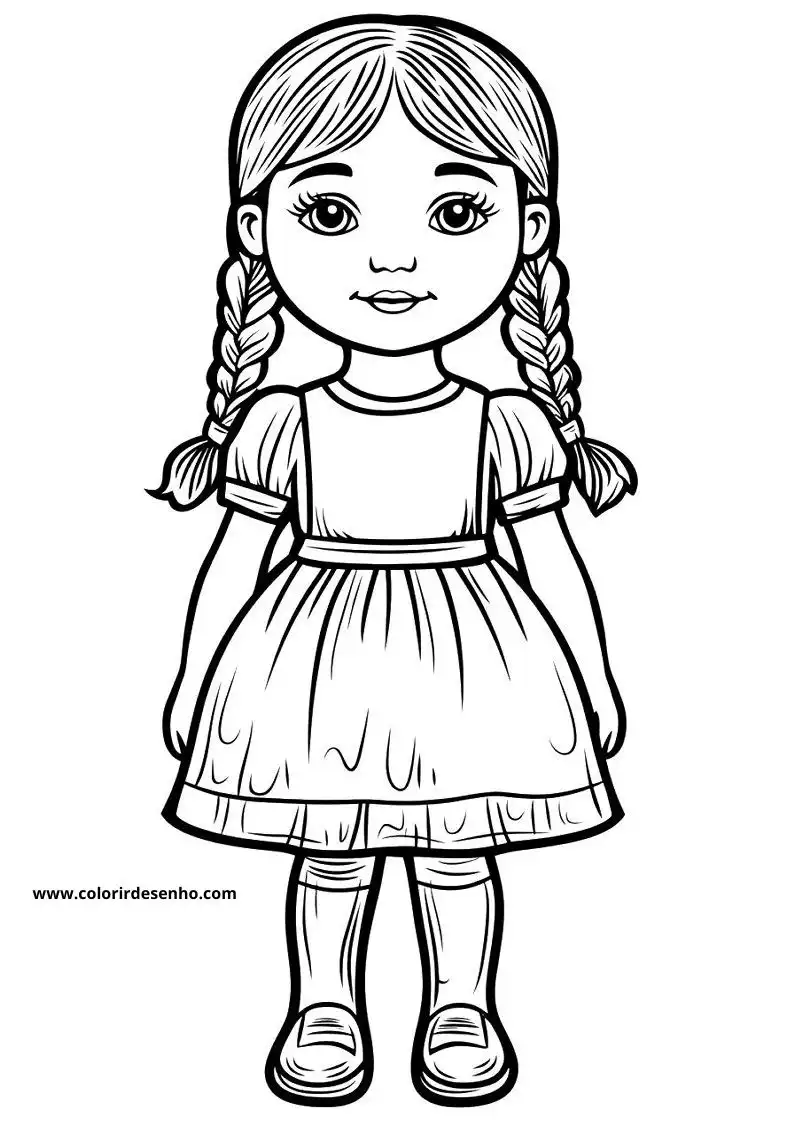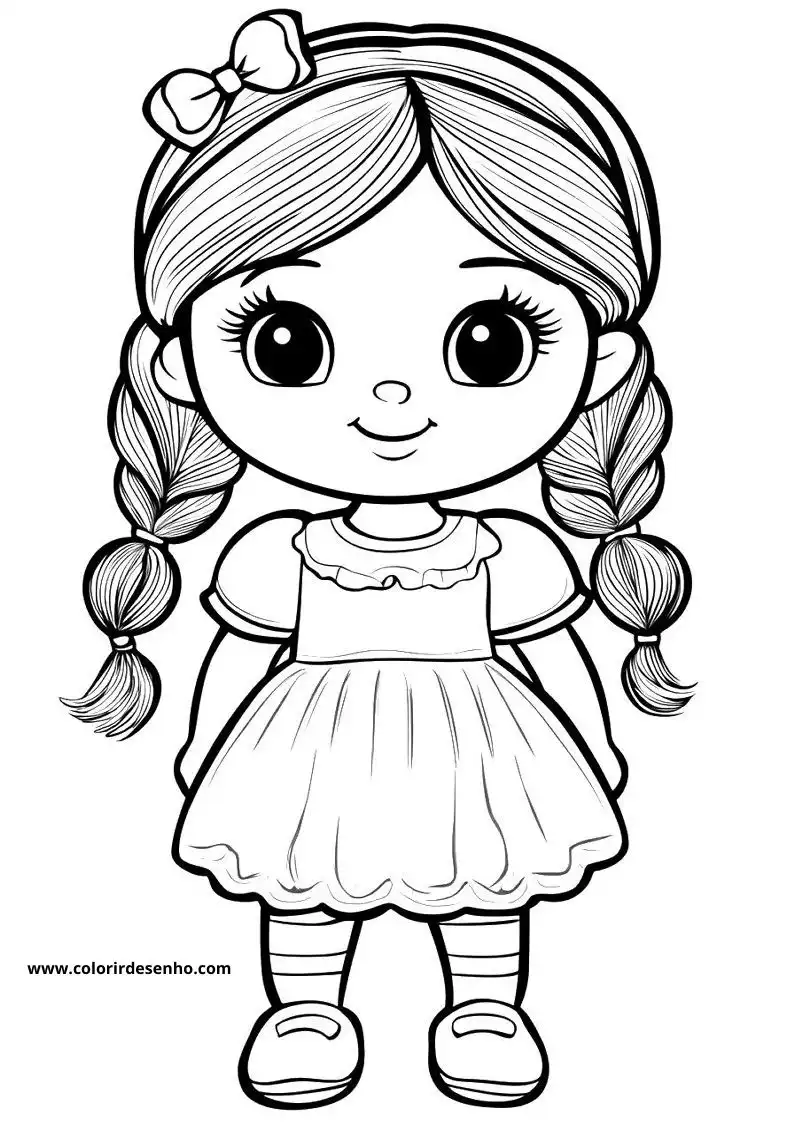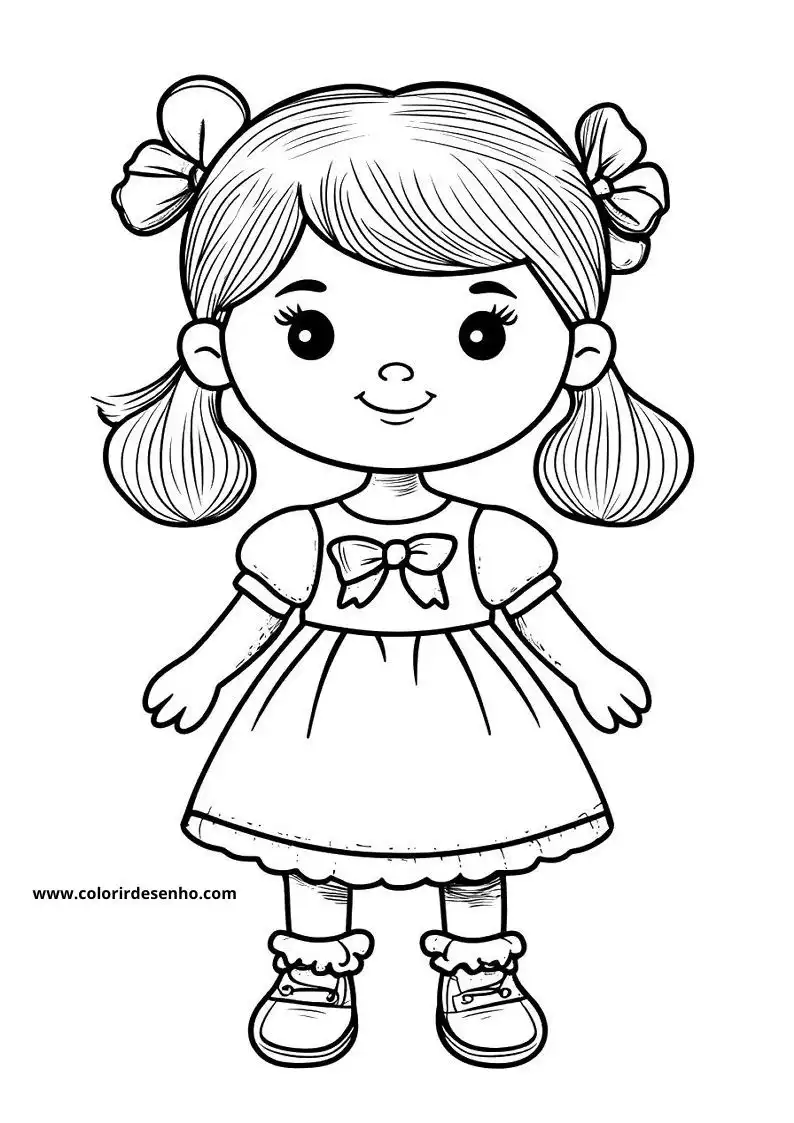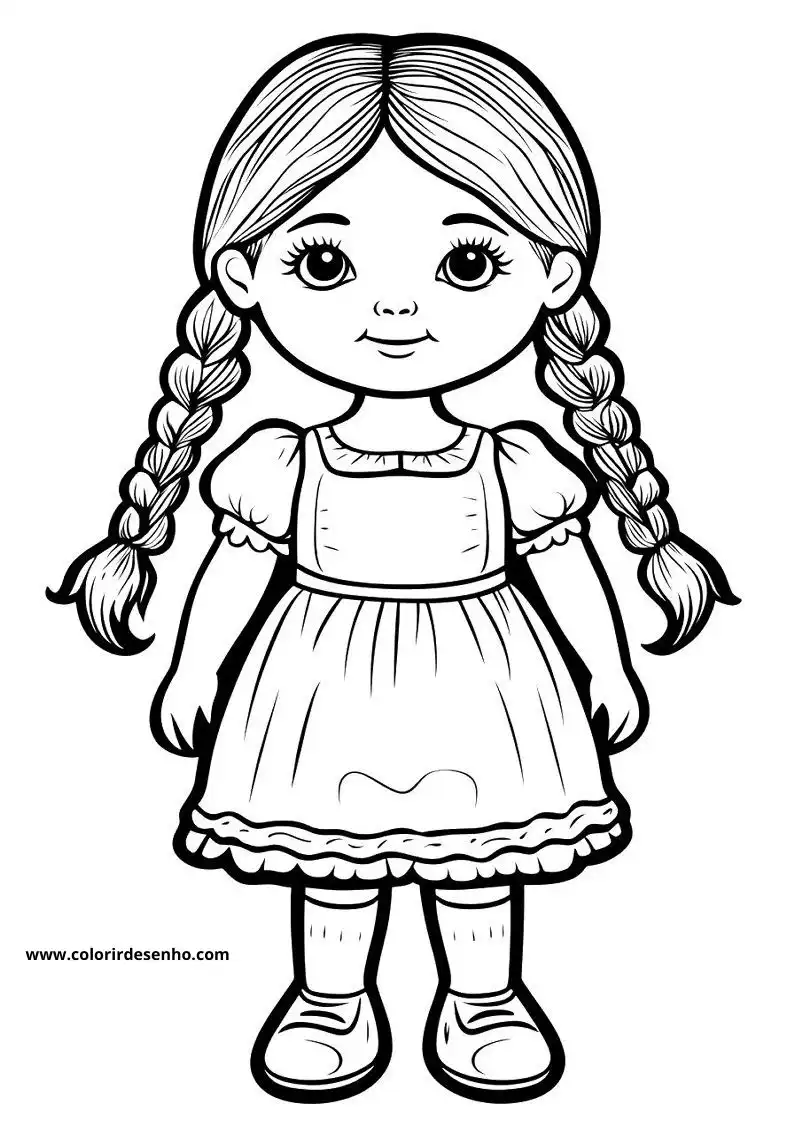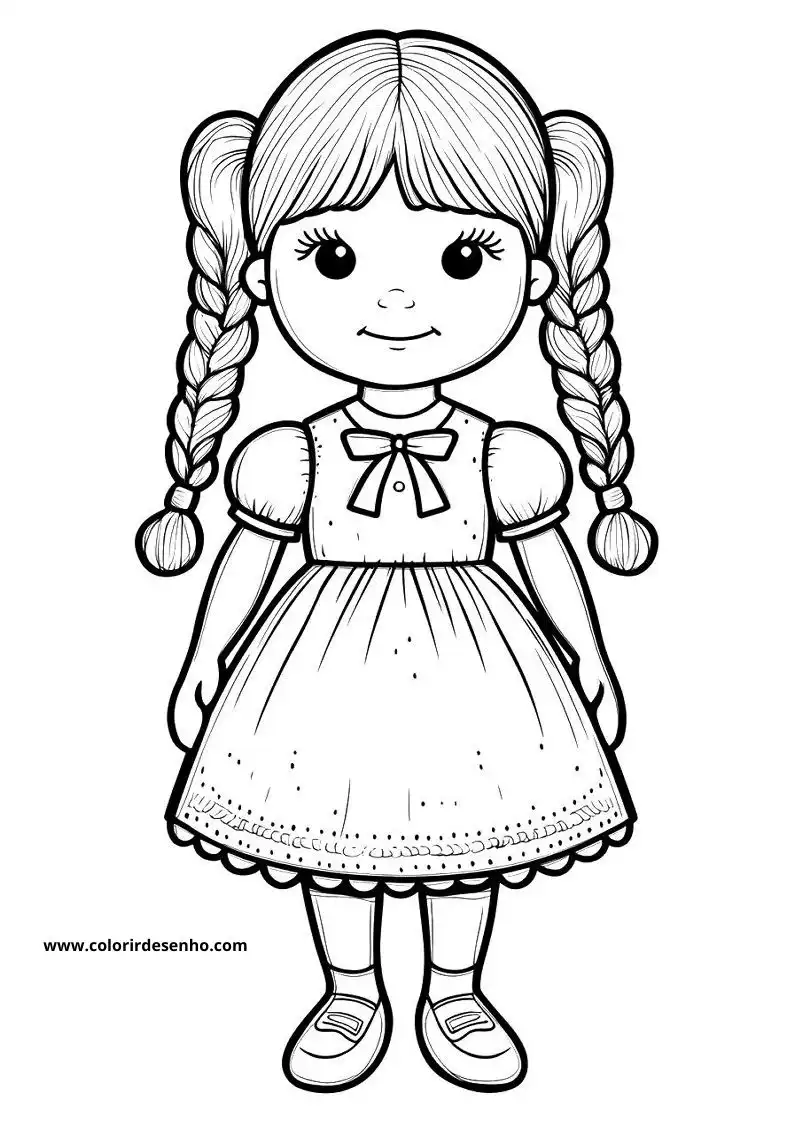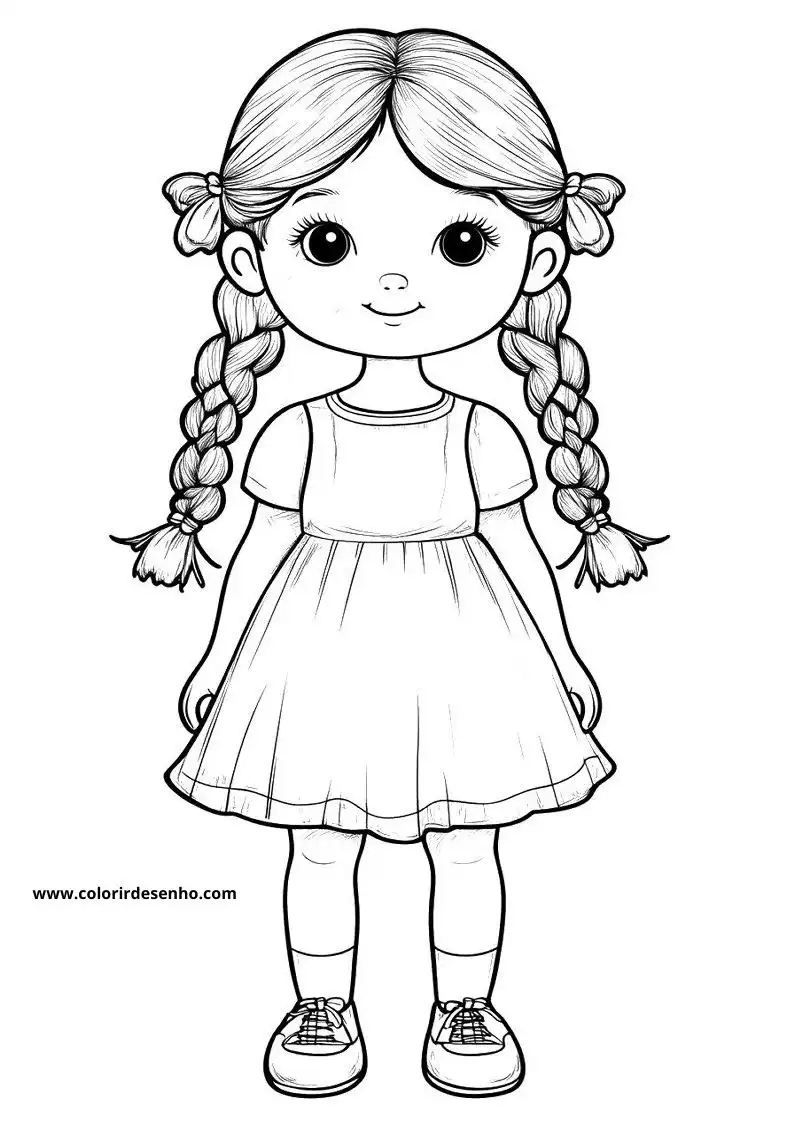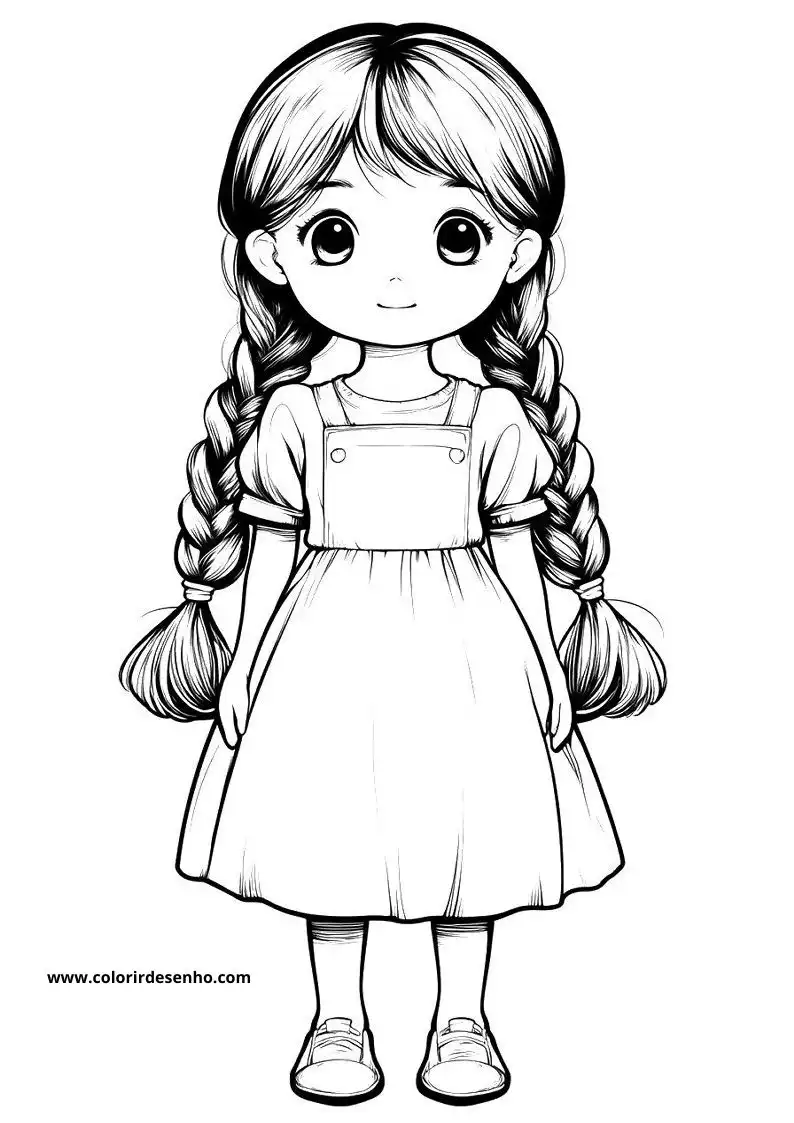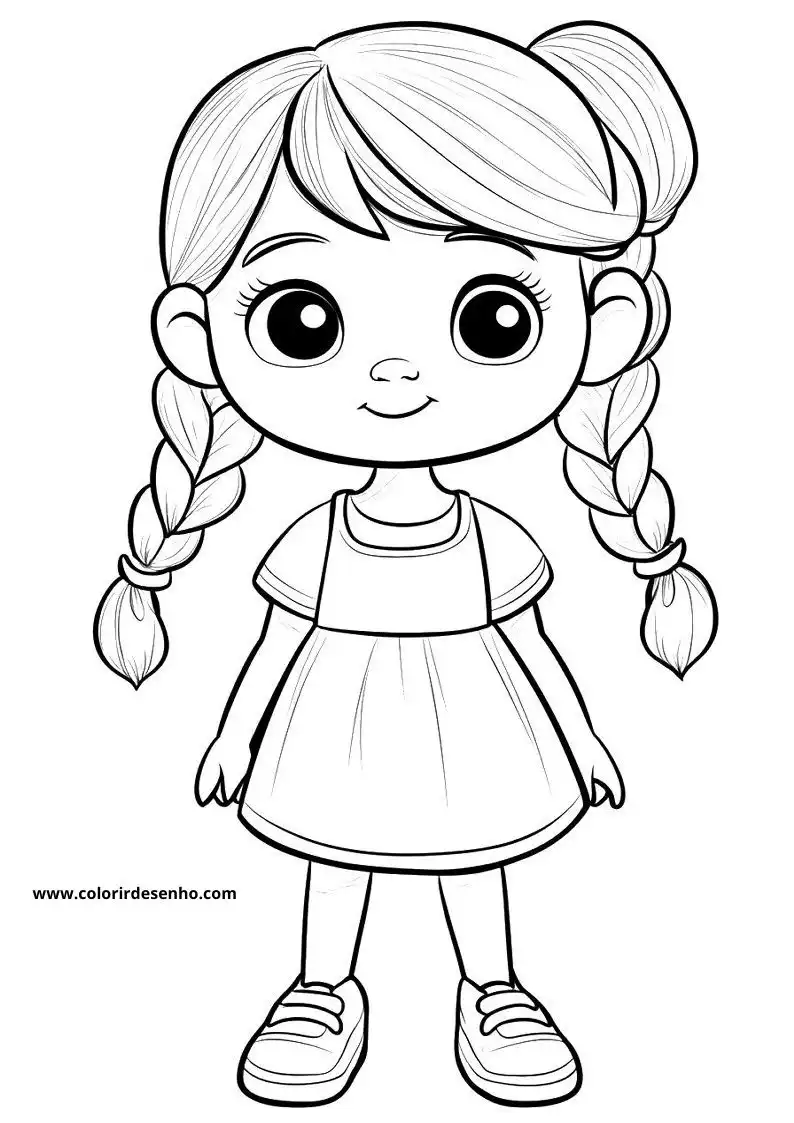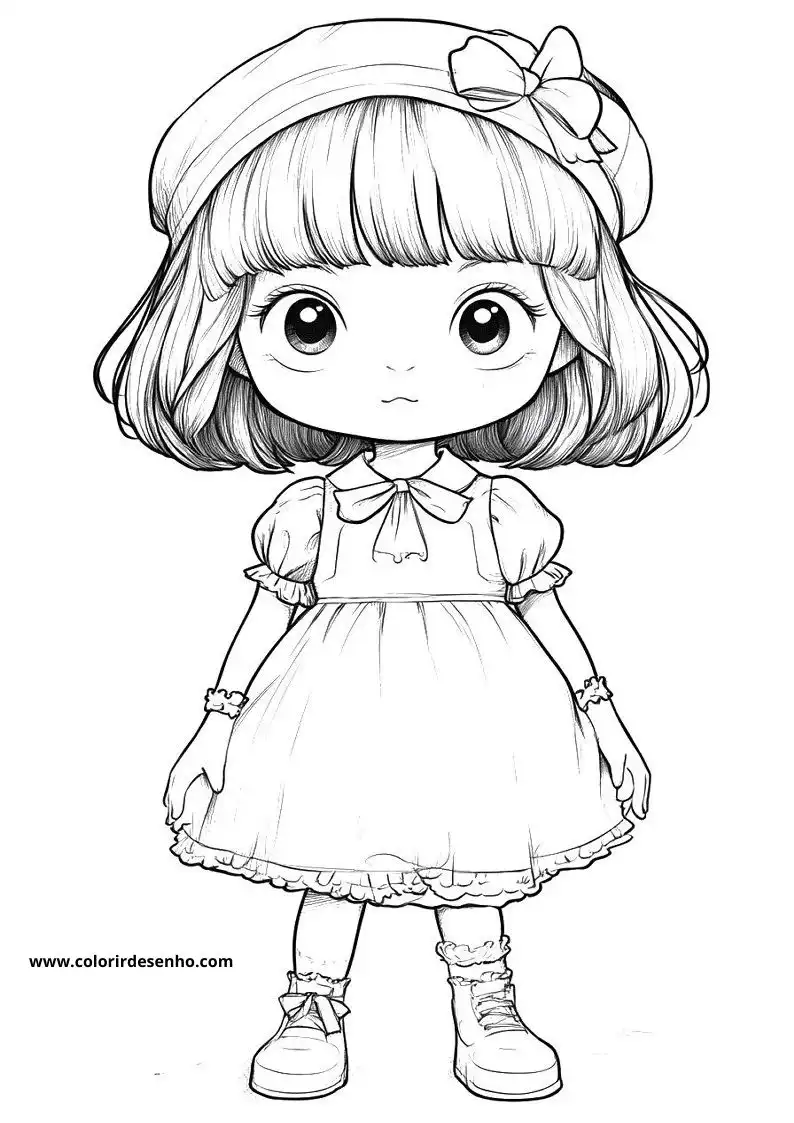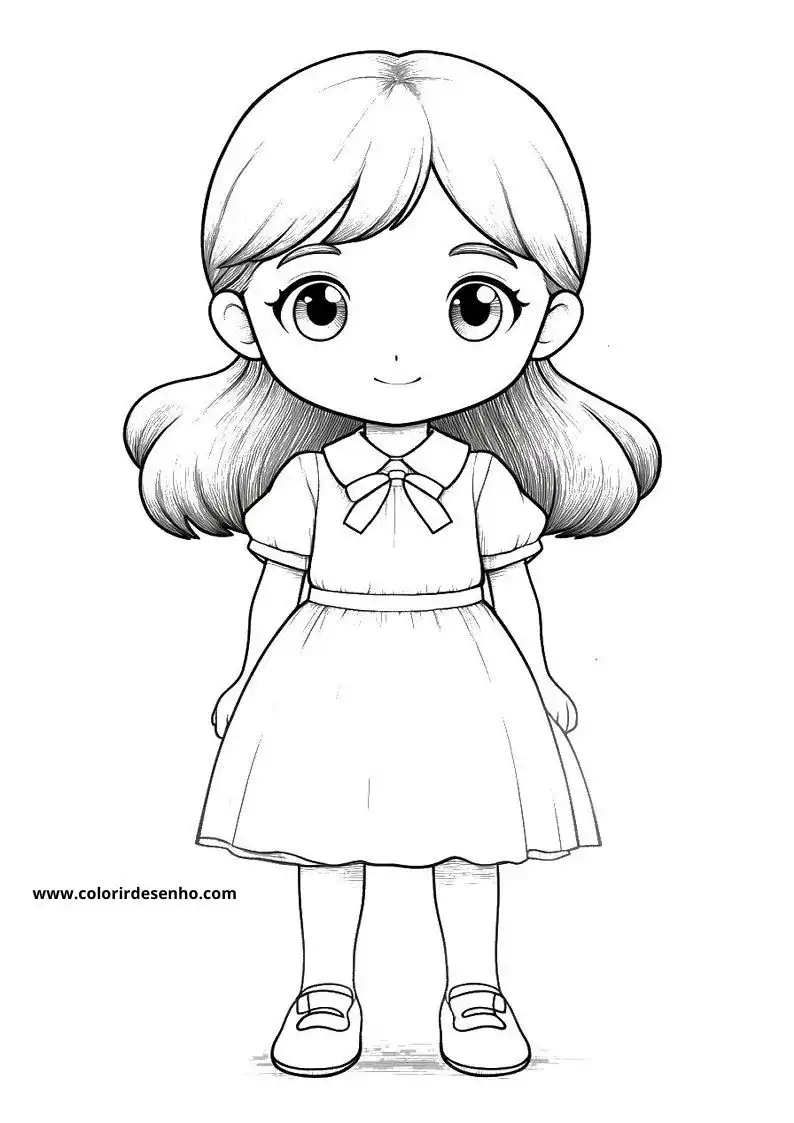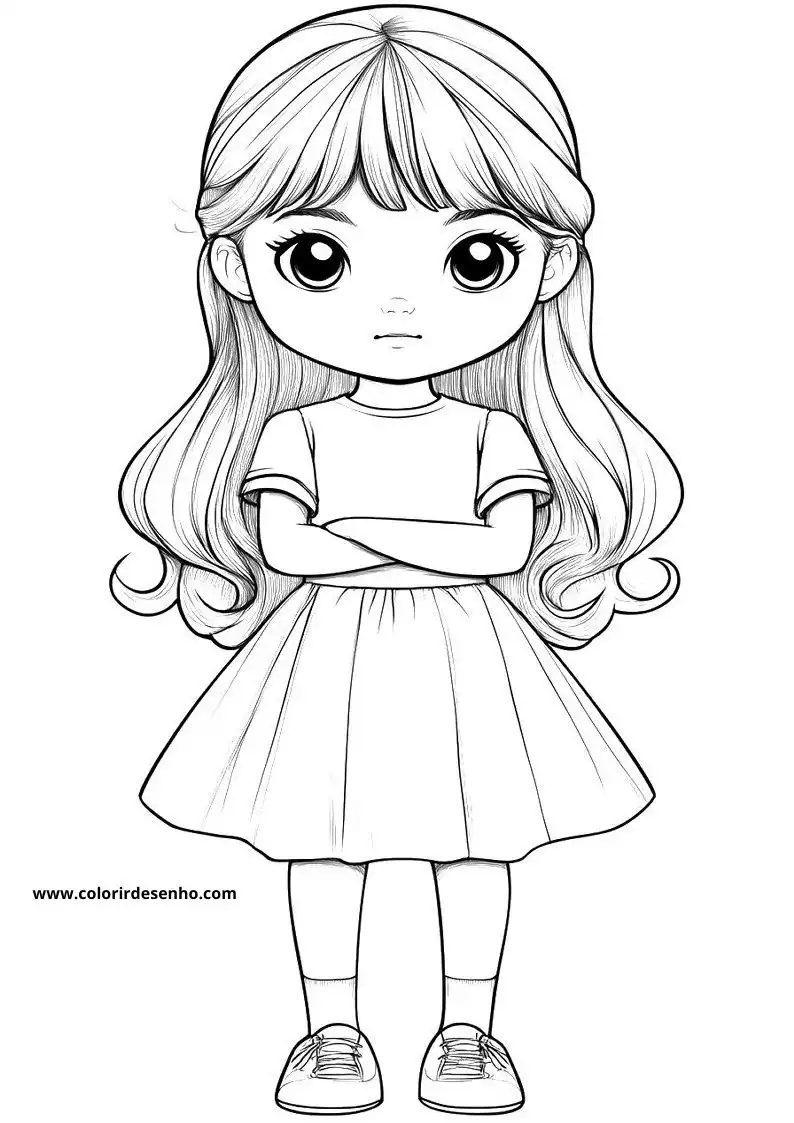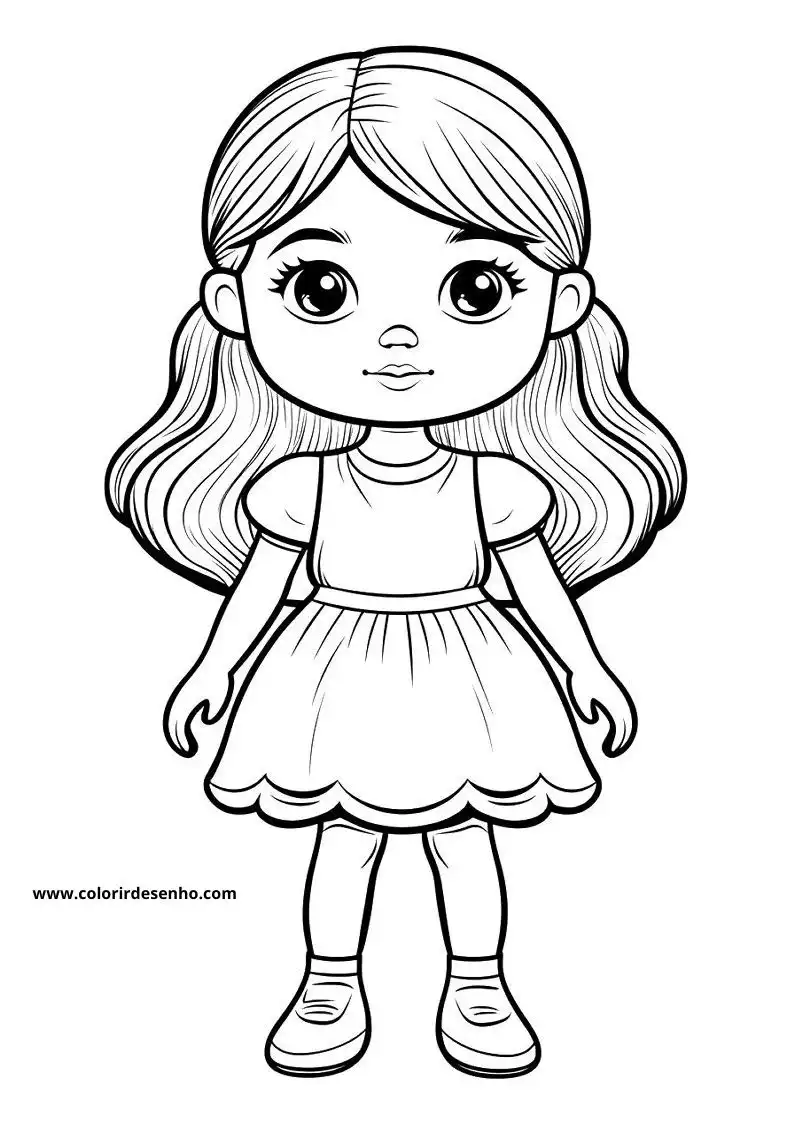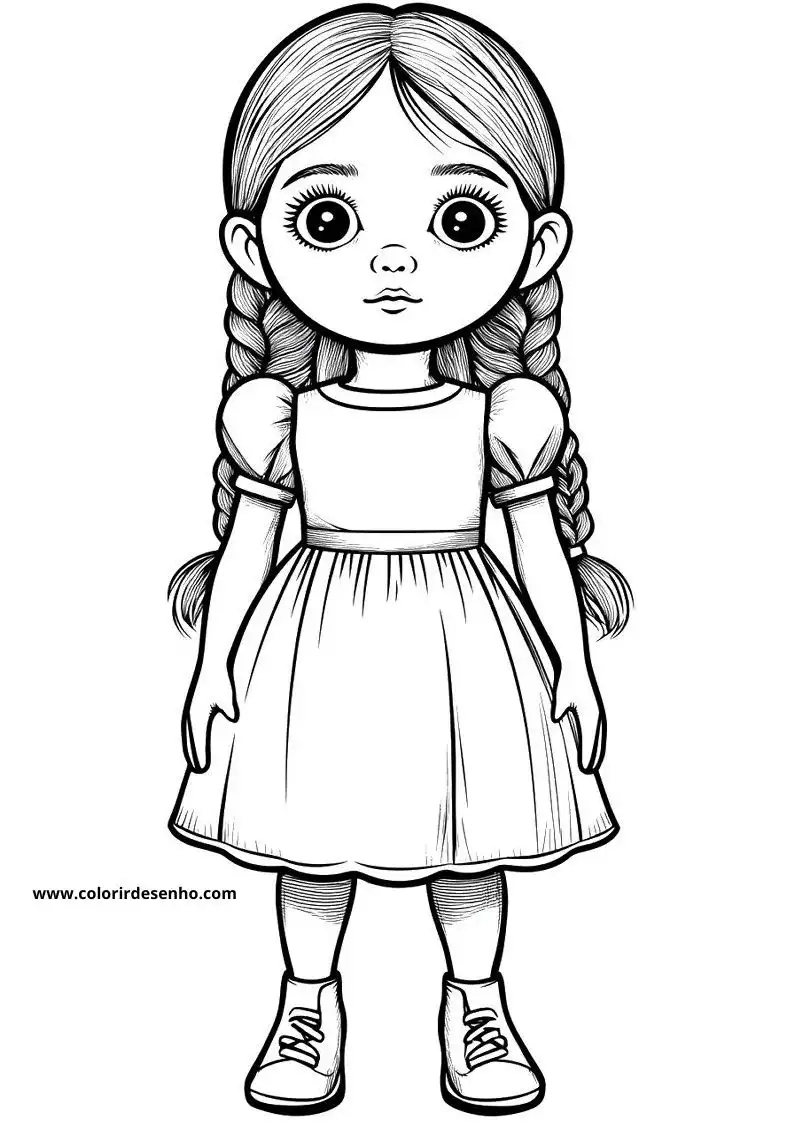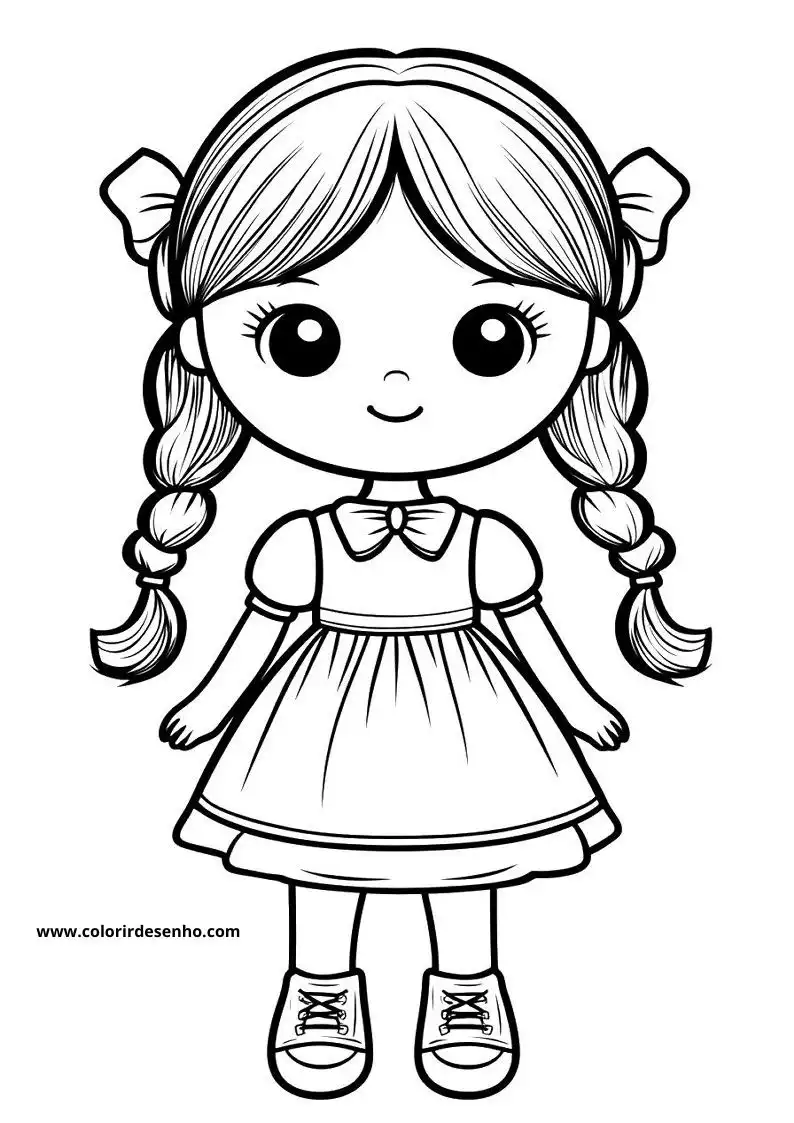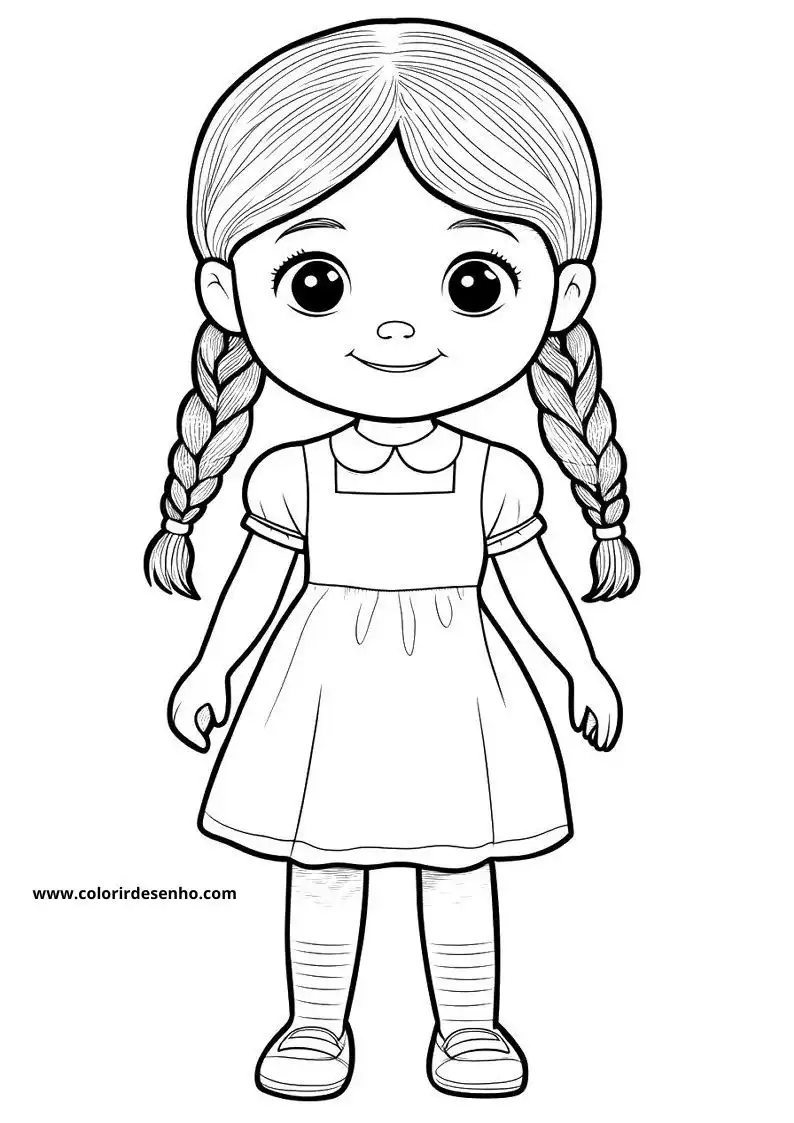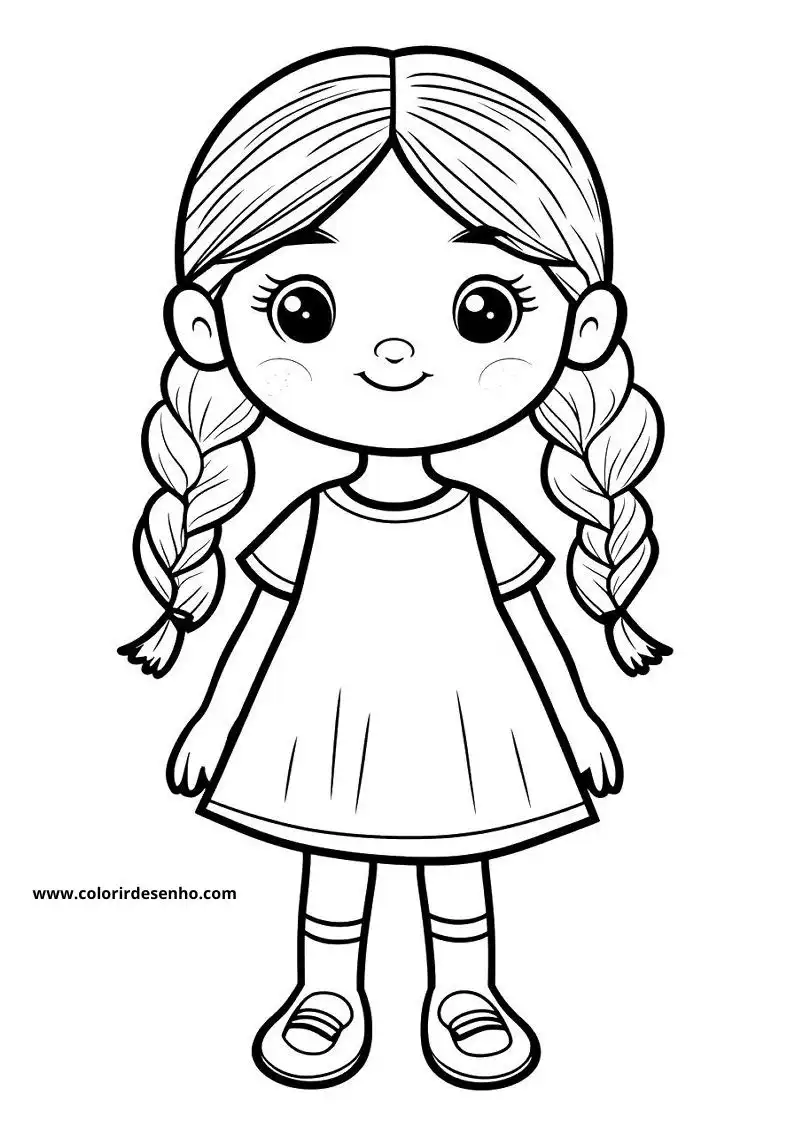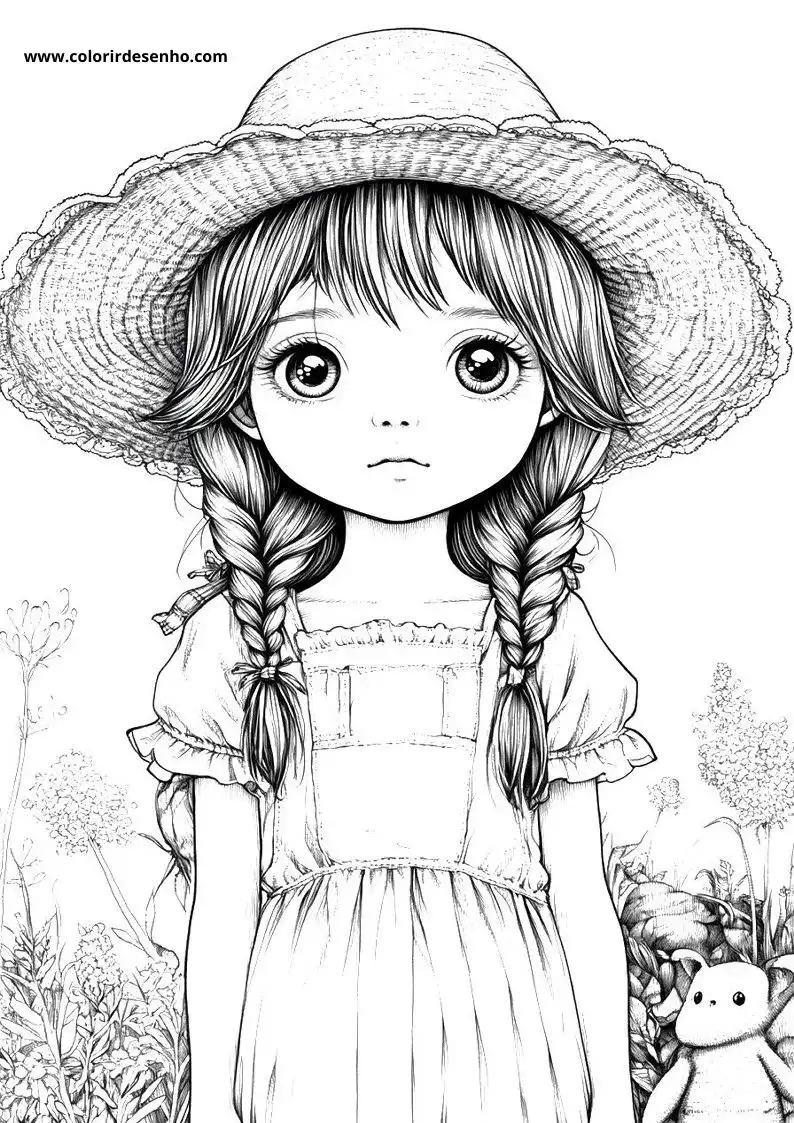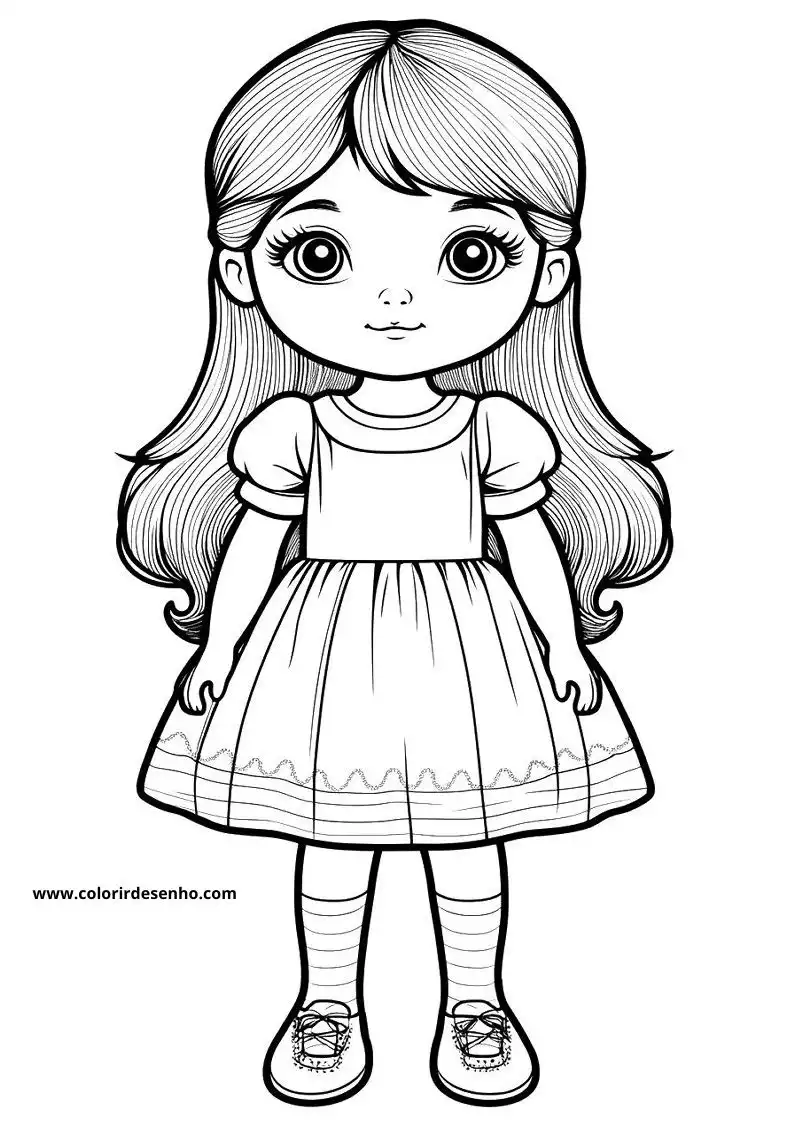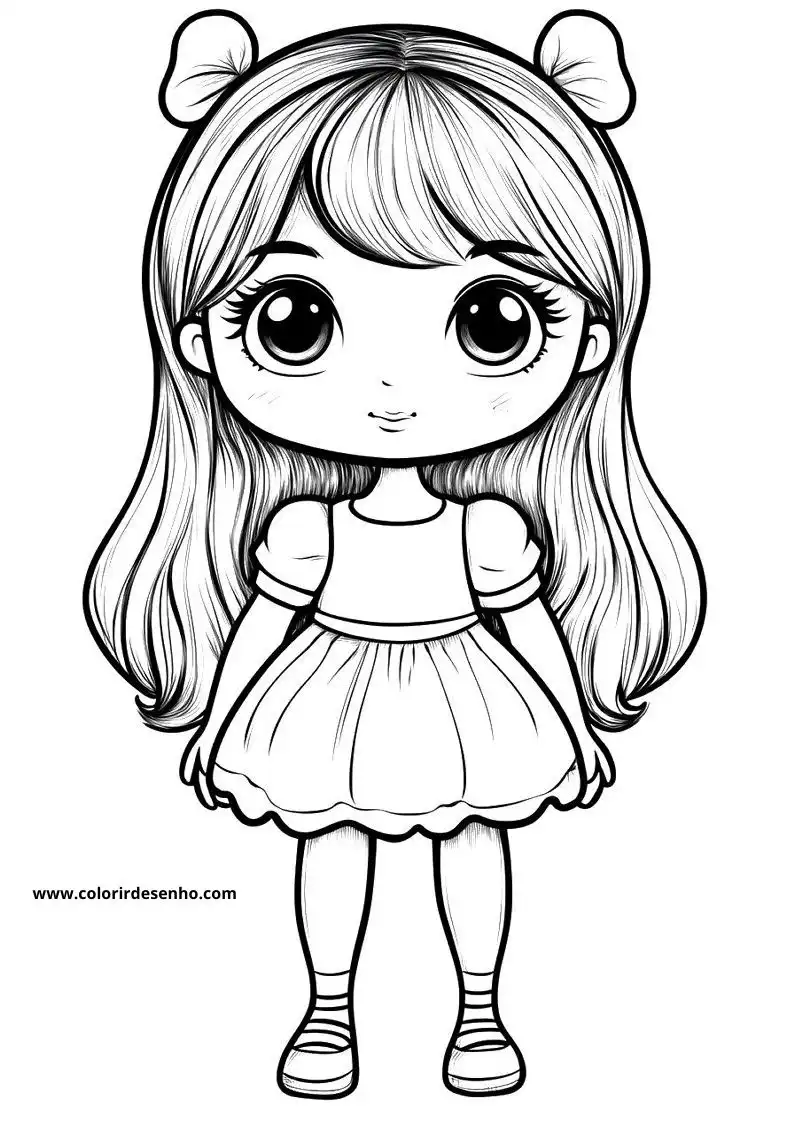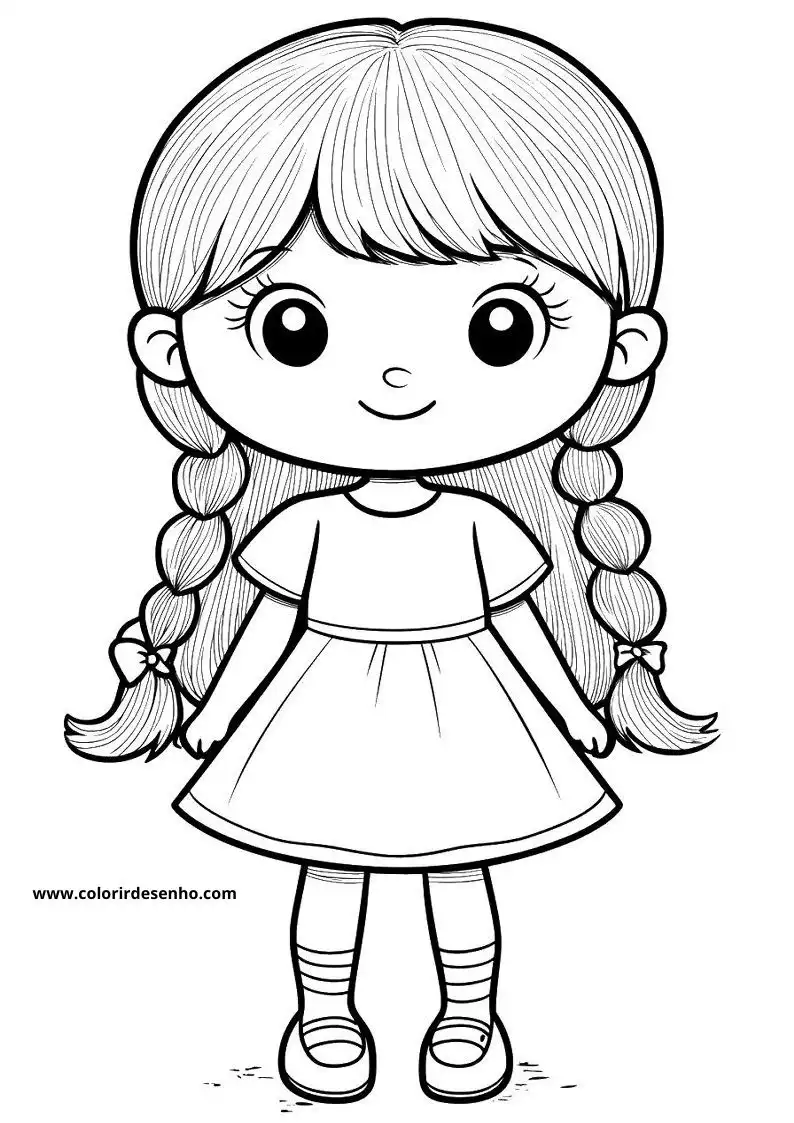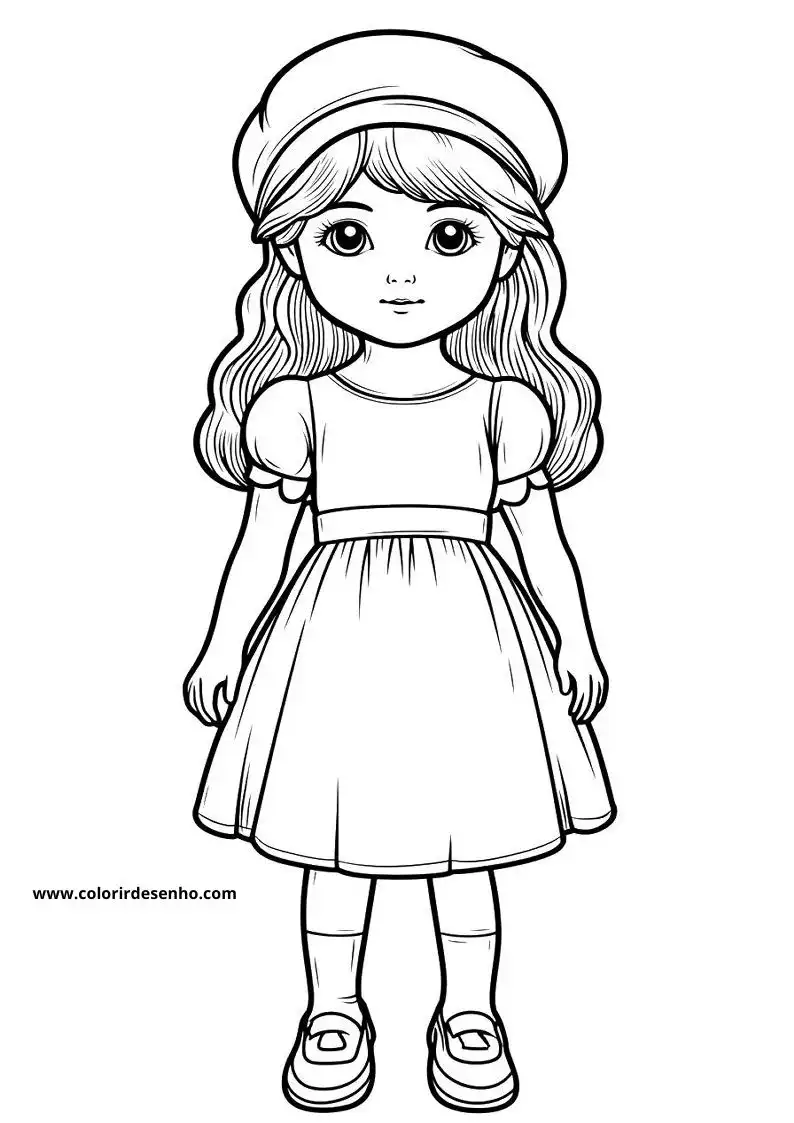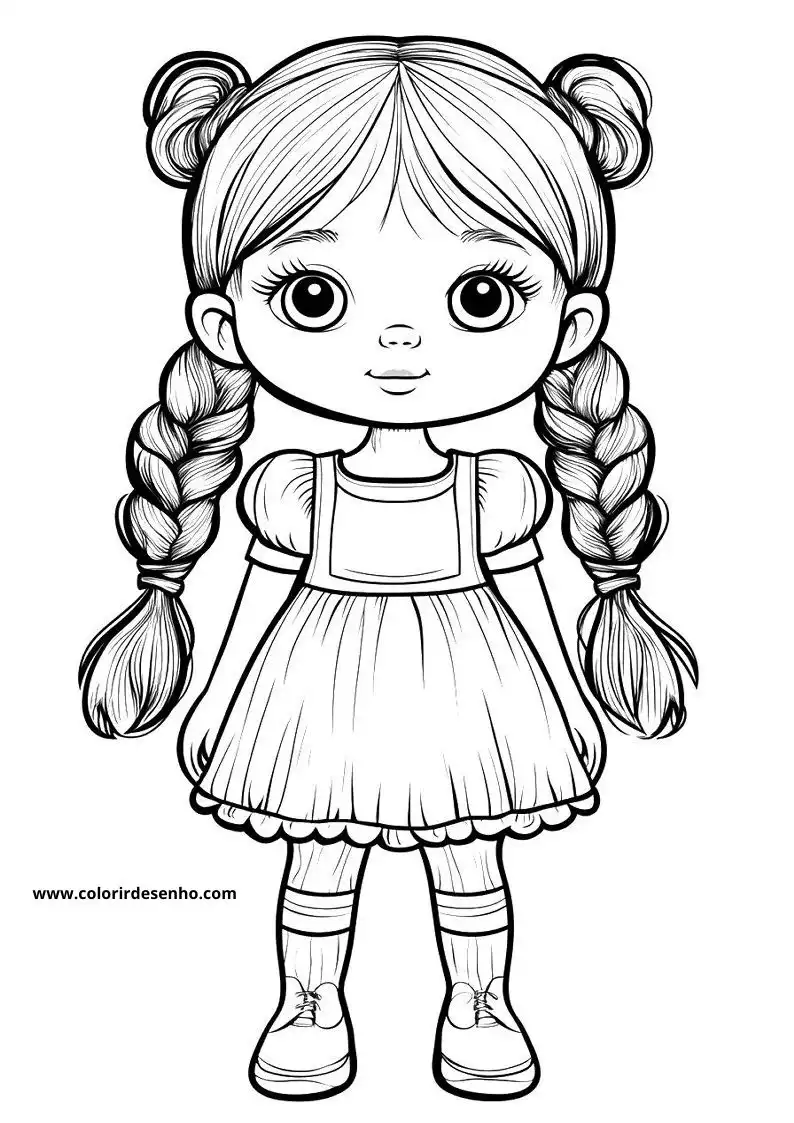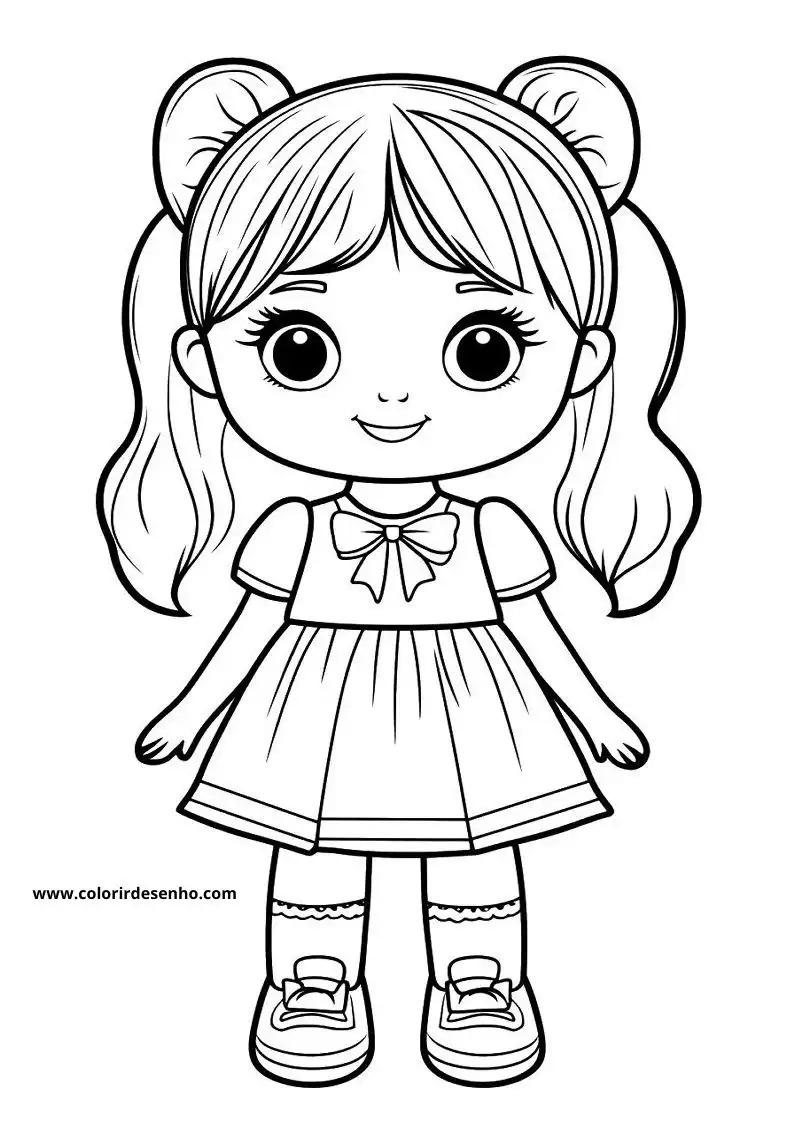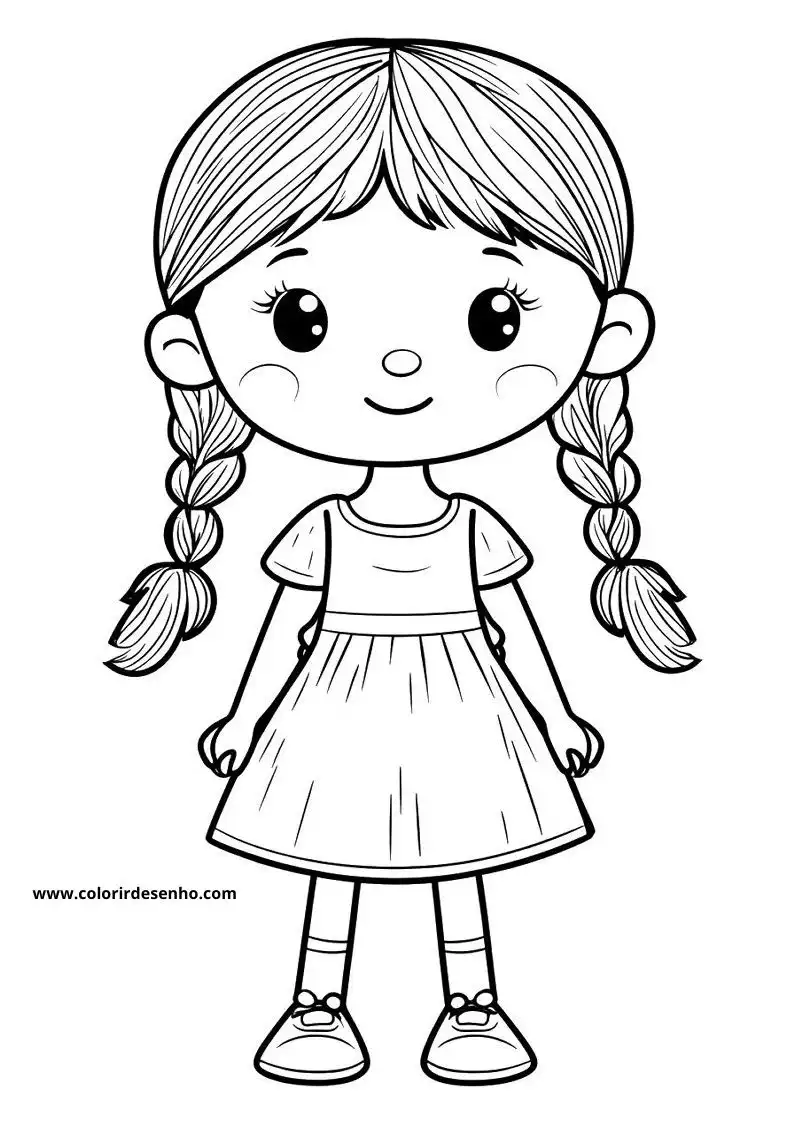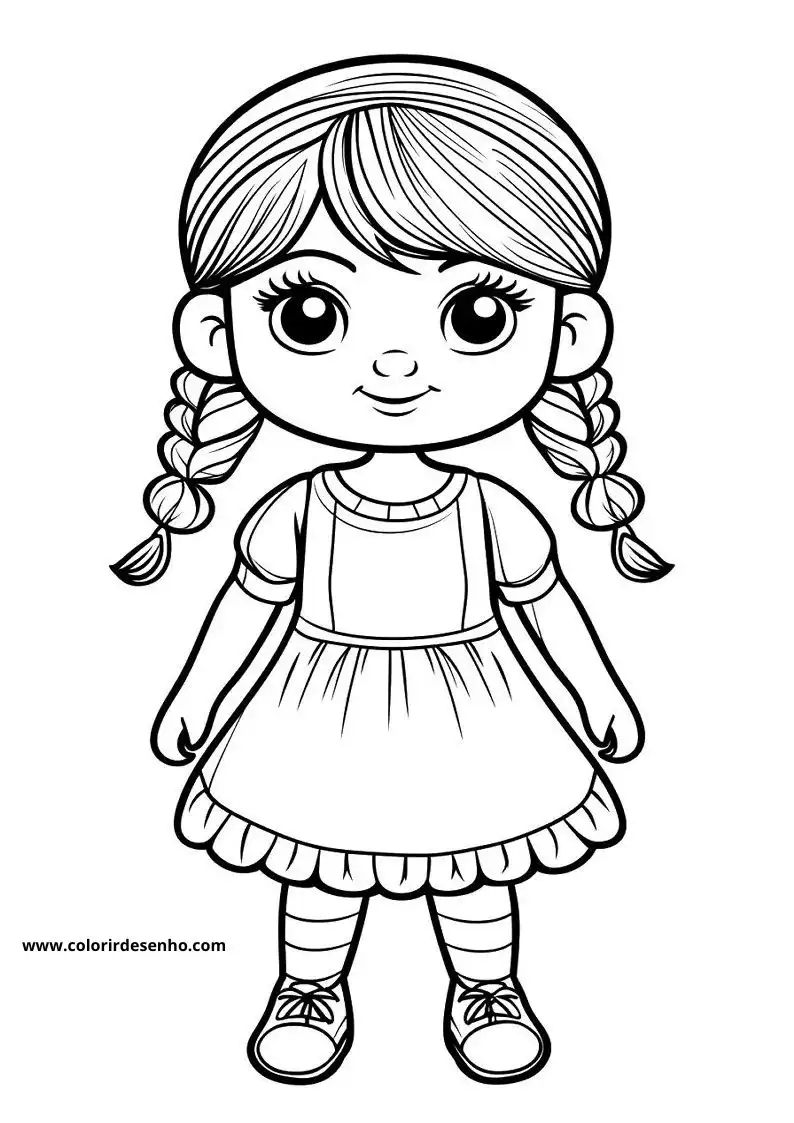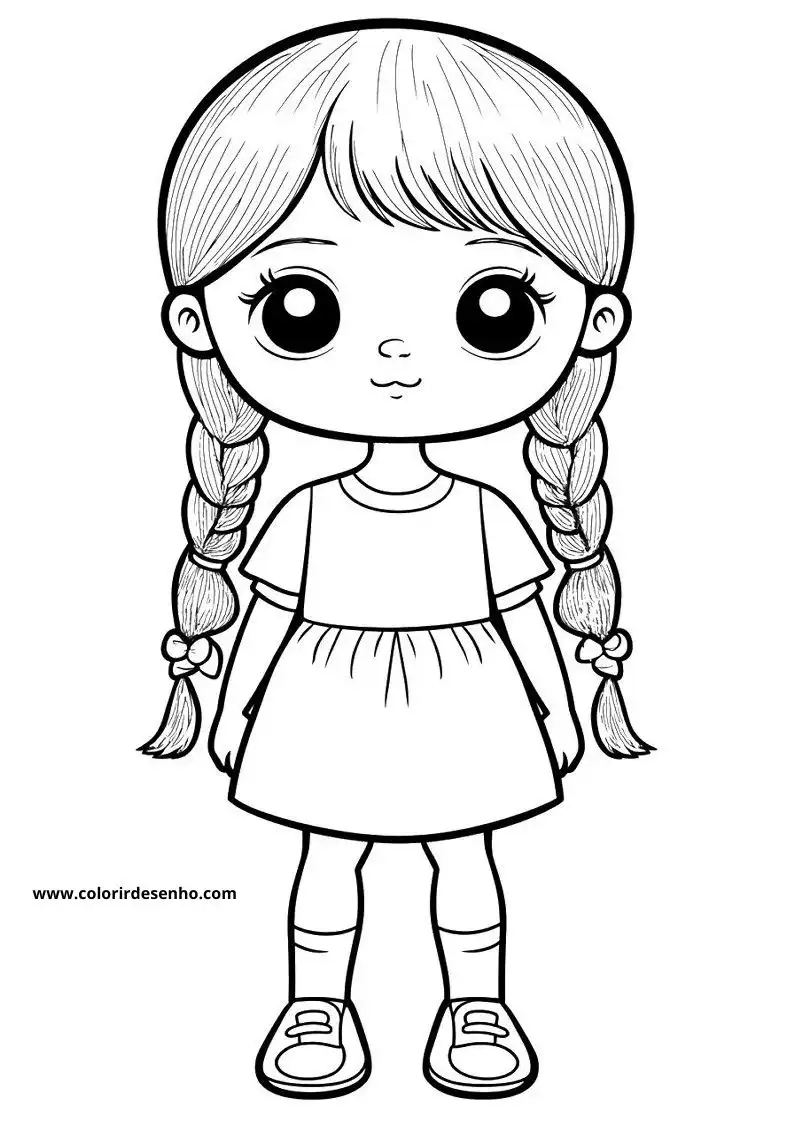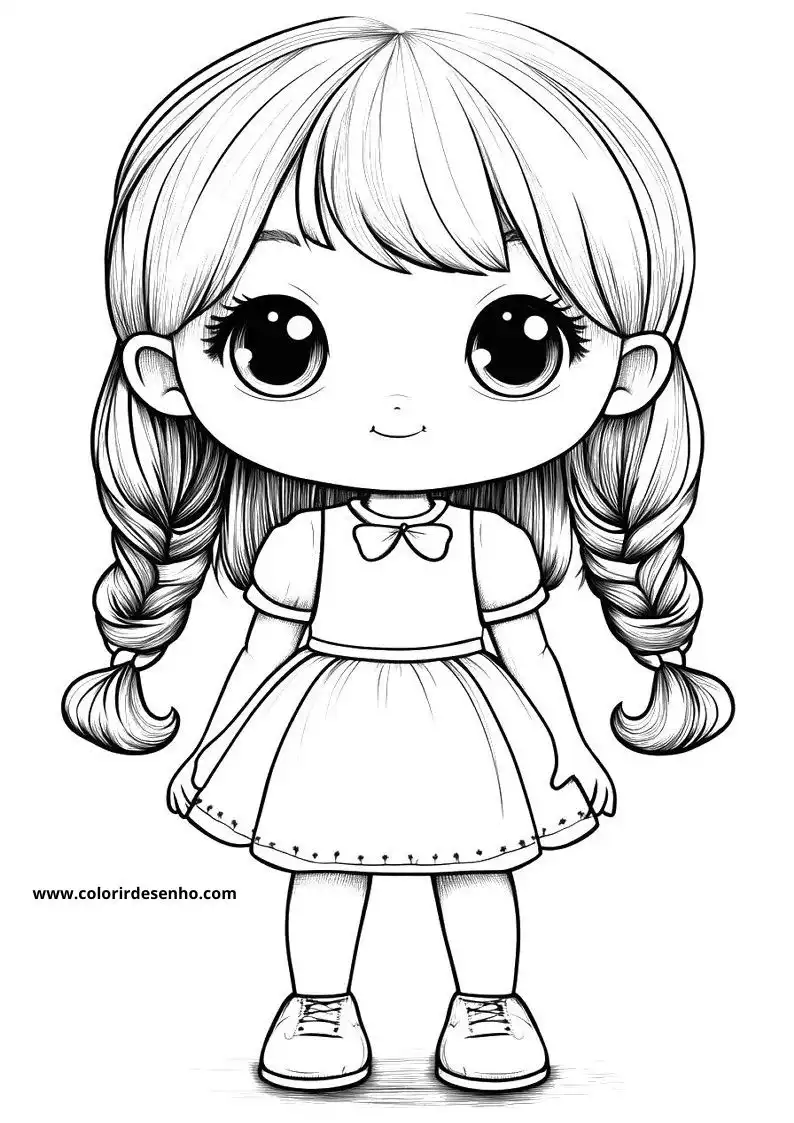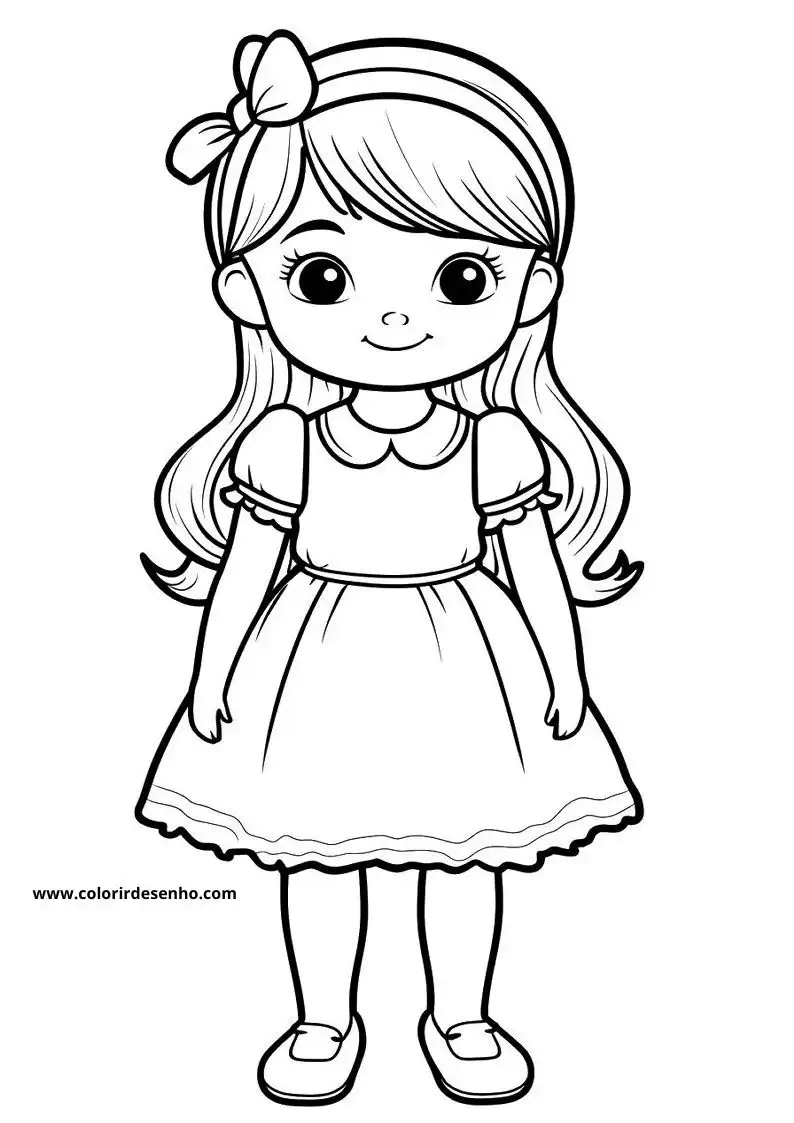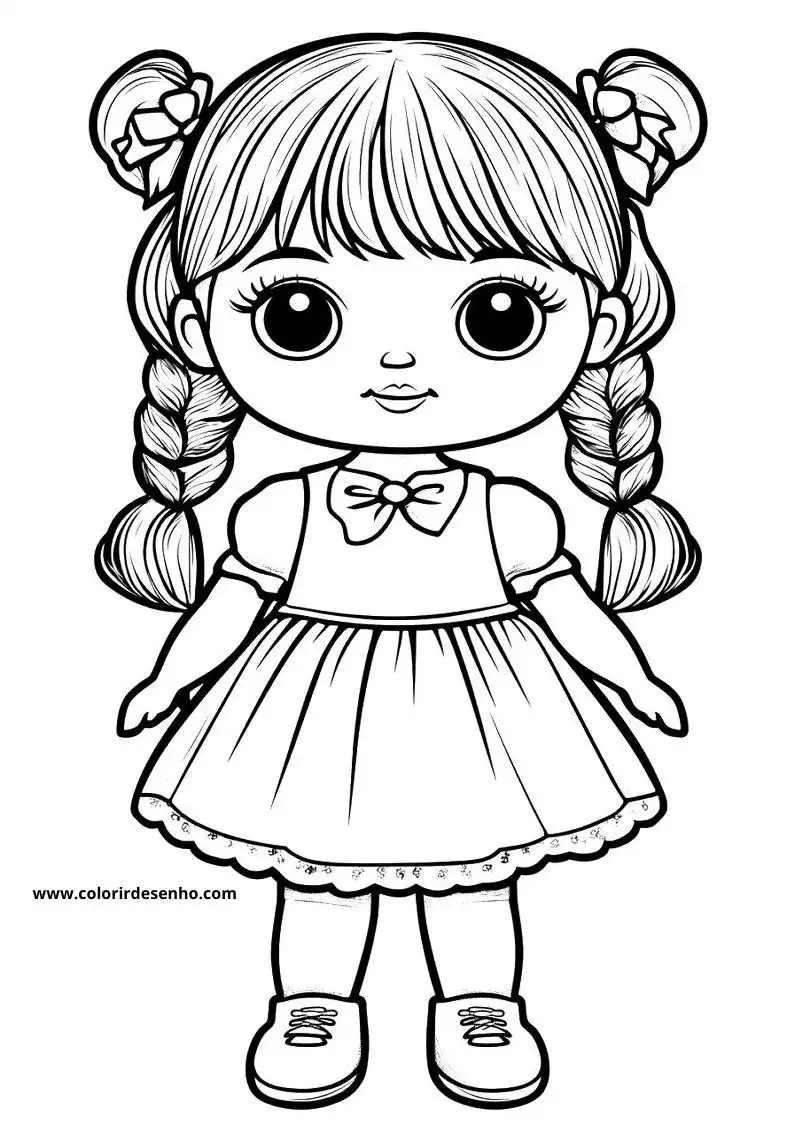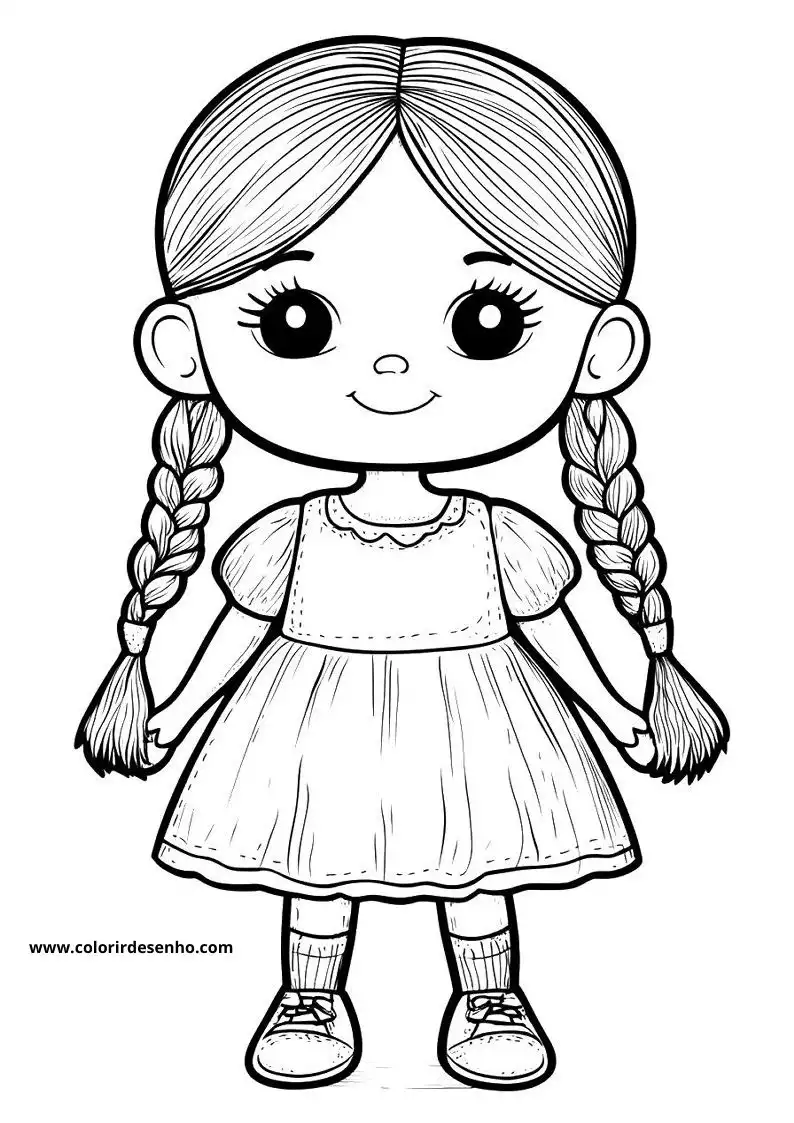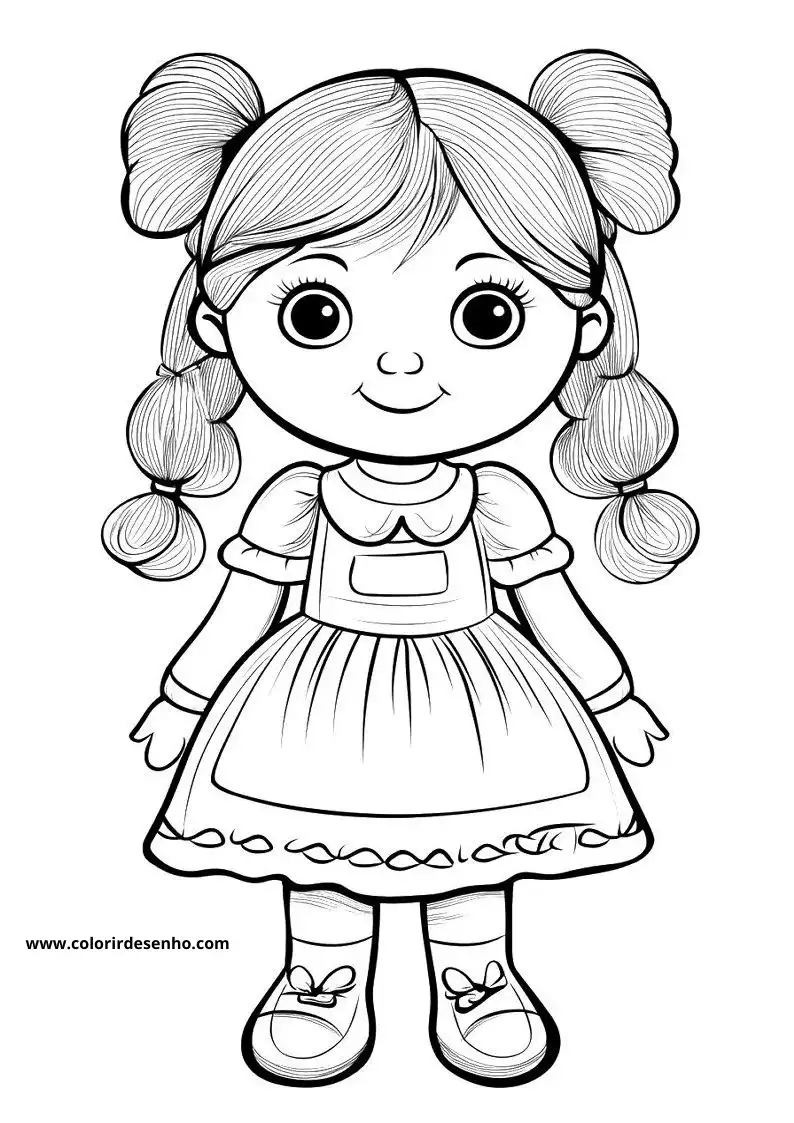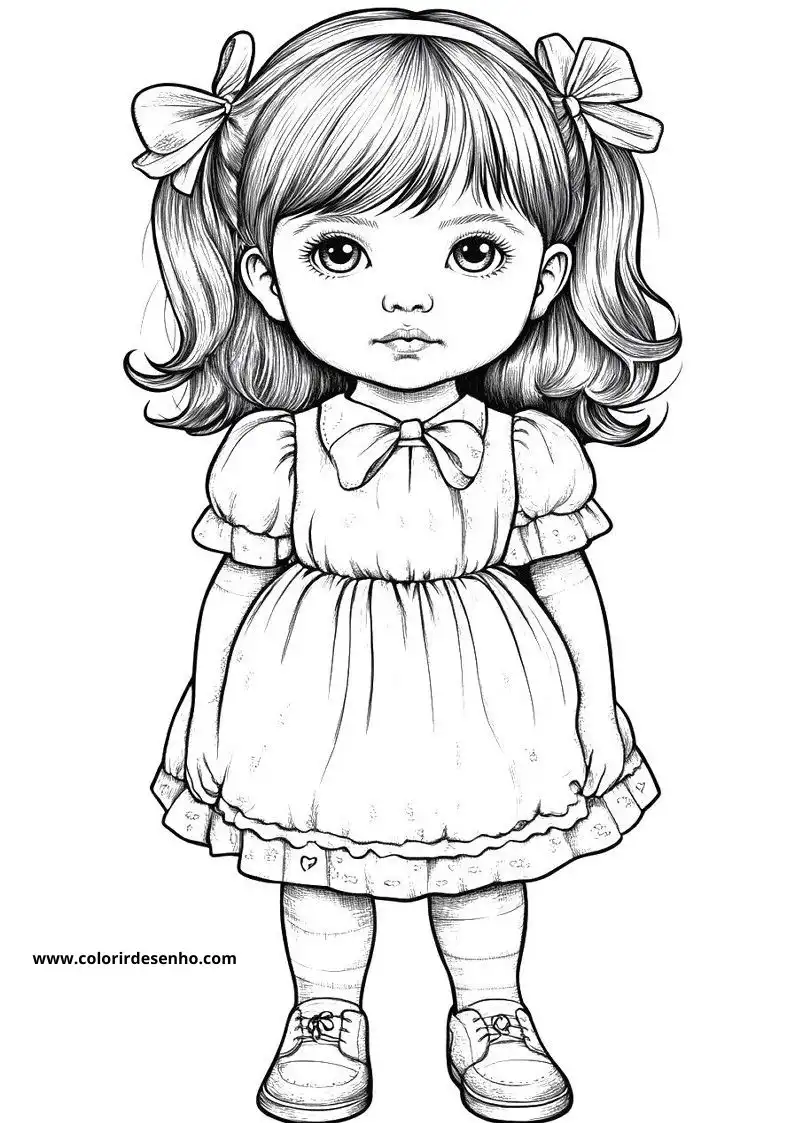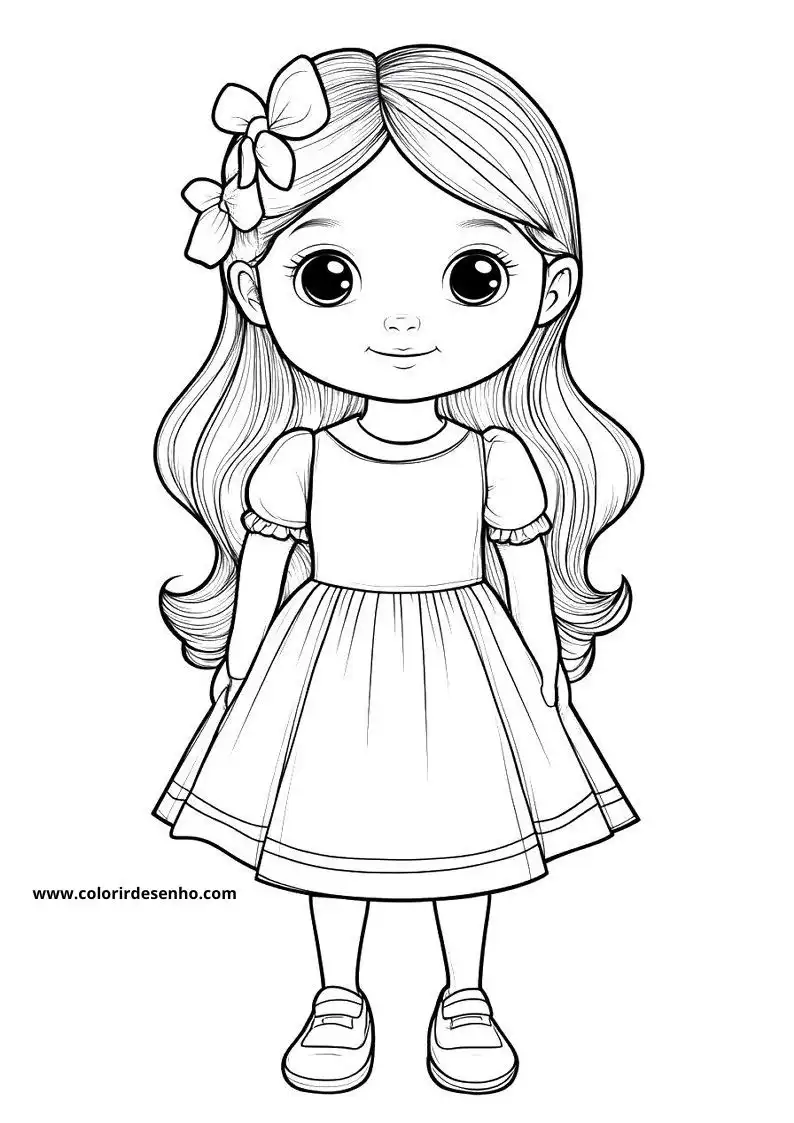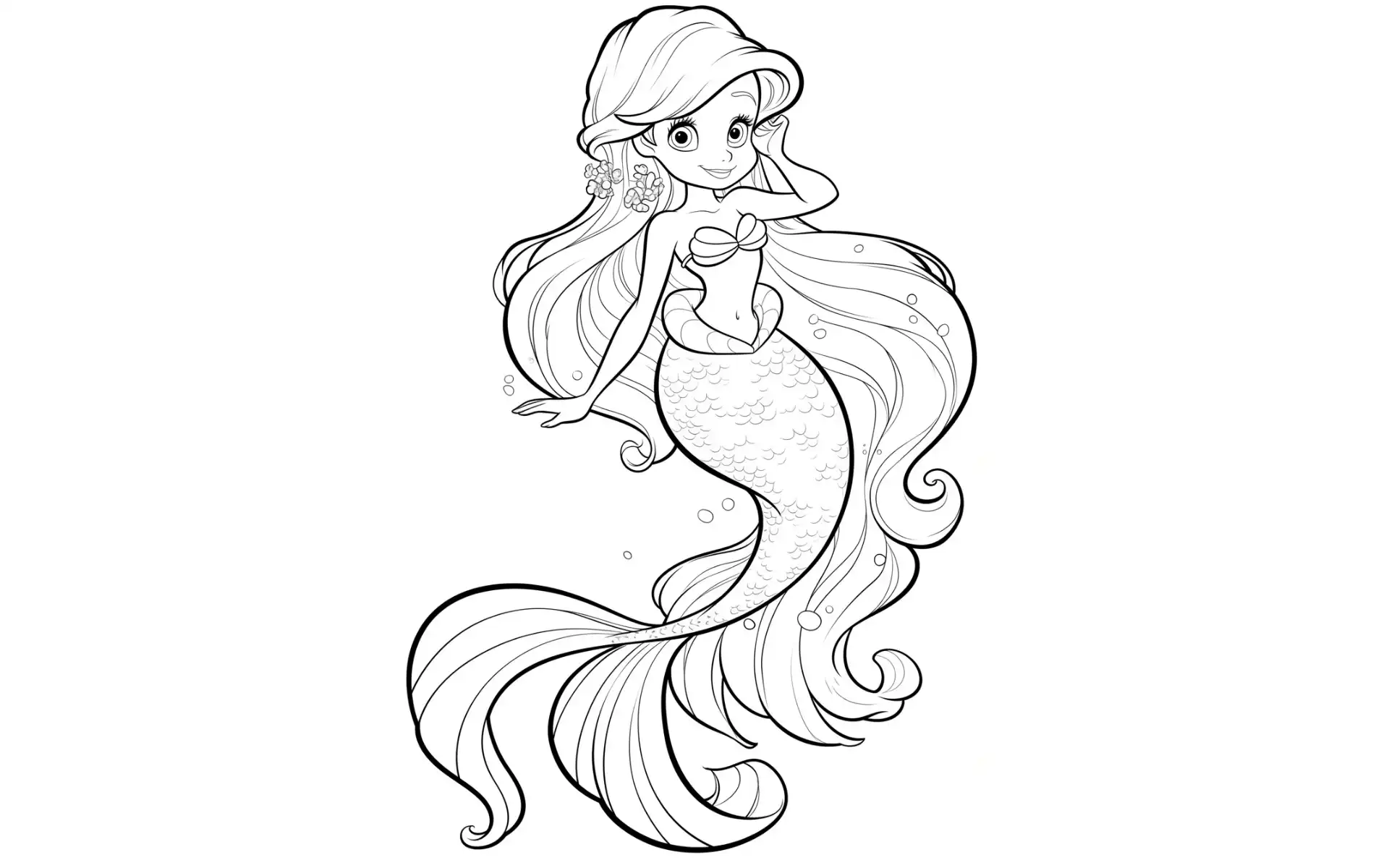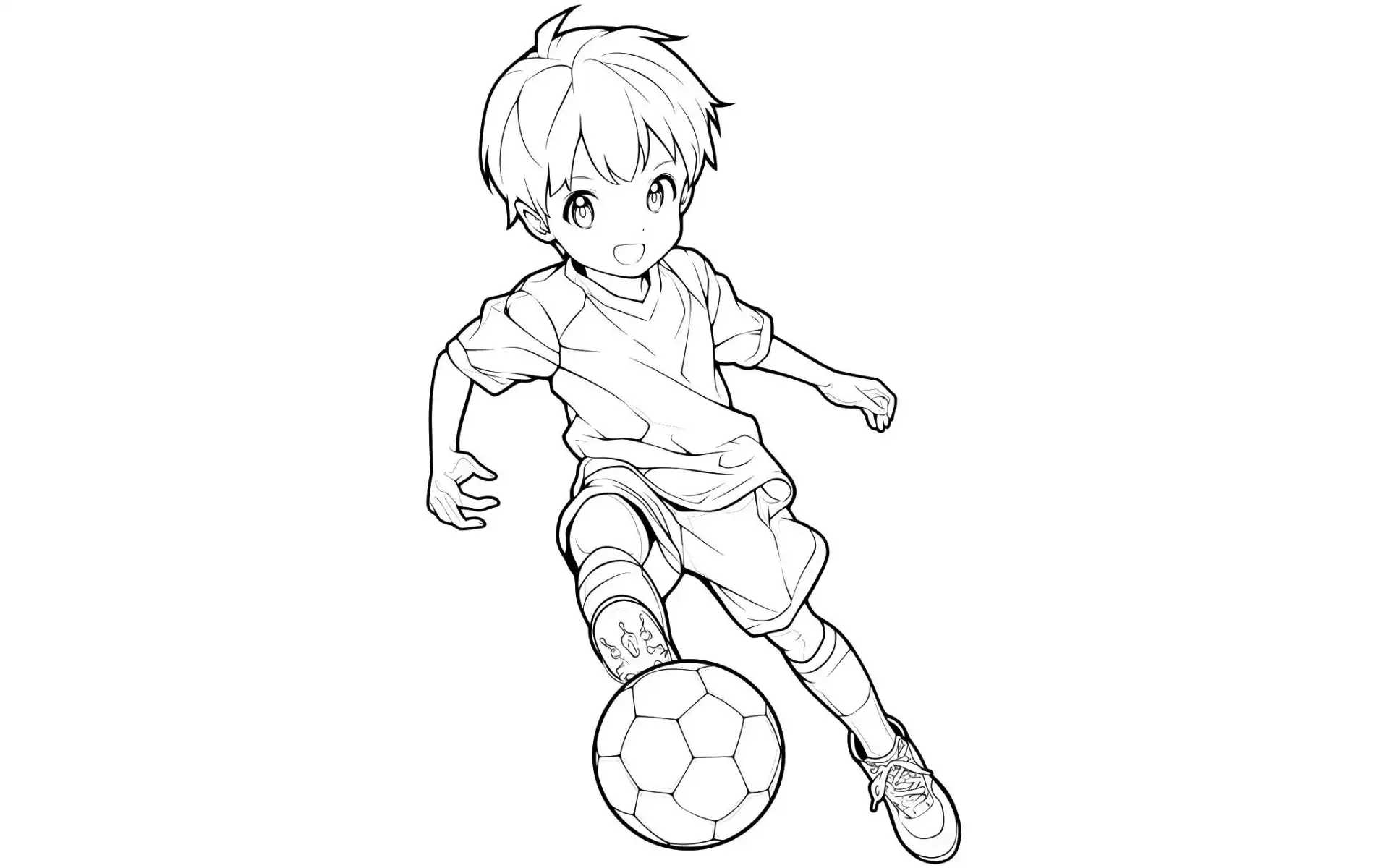Doll Coloring Pages – 221 Dolls to Color
If you’re on the hunt for Doll Coloring Pages, you’ve come to the right place! In this article, we’ve gathered 221 incredible doll drawings for you to download and enjoy. Whether it’s to entertain the kids or simply to relax, printing and coloring doll images is a delightful activity that sparks creativity and helps develop fine motor skills. With so many options, you can choose from classic dolls to modern characters, all ready to be colored with your favorite hues.
Free Printable Doll to Color
Dolls have been a part of children’s lives for centuries, and their popularity just keeps growing. They’re more than mere toys; they represent the imagination and dreams of many girls and boys! That’s why Doll to Color pages are an amazing way to connect kids to this magical world.

THE COLORING PICTURES ARE AT THE BOTTOM OF THE PAGE, WHEN YOU OPEN THE PICTURE, CLICK ON THE SAVE BUTTON ABOVE THE PICTURE.
The Origin of Dolls
Did you know that dolls have existed for over 4,000 years? That’s right! The earliest known dolls were found in ancient Egyptian tombs. Made from wood and clay, they held significant spiritual meaning. Unlike today’s playthings, these dolls were symbols of protection and beauty for the ancient Egyptians. Even back then, dolls captivated both adults and children alike.
Evolution of Dolls Through the Centuries
Over the centuries, dolls have undergone numerous transformations. In the 18th century, European dolls began mass production using materials like porcelain and became popular among the nobility. The 20th century saw mass manufacturing bring about more accessible and realistic dolls, like the famous plastic ones. This evolution turned dolls into cultural icons, depicted in Doll Coloring Pages, movies, and collectible toys.
The Impact of Dolls on Children's Imagination
From an early age, dolls help children develop social and emotional skills. They’re used in play that simulates real life, allowing little ones to experiment with and understand different social roles.
Dolls as Cultural Representations
Beyond being toys, dolls play a significant cultural role. In many countries, they symbolically represent local traditions. For example, Japanese Kokeshi dolls are traditional gifts with a history spanning over 150 years. African dolls, on the other hand, symbolize fertility and well-being and are used in rituals and celebrations.
Diversity in Modern Dolls
Today, dolls have begun to represent more diversity. Brands and manufacturers are creating dolls of different ethnicities, styles, and personalities, reflecting the plurality of society. This shift is crucial as it allows all children to see themselves represented in their play.
The Fascination with Paper Dolls and Character Dolls
Paper dolls have also left their mark over the years. Simple and easy to change outfits, they could be personalized according to a child’s creativity. Although rarer today, these dolls continue to inspire many Doll to Print designs.
Famous Dolls in Cartoons
With the rise of animated characters, several dolls have come to life in the world of cartoons. Classic examples include characters from TV series and movies like Barbie, who has appeared in numerous animations, or the doll Emilia from “Sítio do Picapau Amarelo.”
Pop Culture Personalities and Their Dolls
The pop culture world has always had a close relationship with dolls. Many artists and celebrities have inspired doll creations, from the iconic Barbie to more modern versions like the LOL Surprise dolls. This shows how the fascination with dolls transcends childhood, extending to collectors and fans of all ages.
Dolls in the World of Fashion and Art
Dolls have always been connected to the fashion world, inspiring generations to experiment with new styles and trends. From antique dolls dressed in luxurious clothing to modern versions like fashionista dolls, they continue to be a significant influence in the creative field.
The Role of Dolls in the Fashion Industry
Renowned designers have used dolls as models to create their collections. An interesting example is when the famous French designer Coco Chanel began making miniature versions of her clothes to dress dolls as a way to promote her fashion. This practice continues today, with dolls like Barbie receiving limited editions of outfits created by major luxury brands. Fashion and dolls are intertwined through this intimate relationship of design and creation.
Dolls as Works of Art
Some dolls are true works of art, crafted by talented artists worldwide. They’re not just toys but detailed sculptures, handmade with precious materials like porcelain, fine fabrics, and jewels. These dolls are often collected by adults and displayed in museums. While drawings of such dolls are rare, they can still inspire those who appreciate the beauty and complexity of these artistic items.
The Future of Dolls and Printable Designs
With technological advancements, dolls are becoming more interactive. There are dolls that talk, walk, and even connect to mobile apps, offering a more immersive experience for children.
Smart Dolls and the Virtual World
The future of dolls is directly connected to the digital realm. With the creation of smart dolls that can interact with children through voice commands or apps, this industry is rapidly evolving. Dolls like Hello Barbie, for instance, use artificial intelligence to converse and respond to children’s questions.
Augmented Reality and Doll Drawings
Augmented reality is also starting to make its way into the toy world. Imagine pointing your phone at a Doll Coloring Page and seeing the image come to life in 3D on your screen. This innovation could revolutionize how children interact with printable coloring pages, adding another layer of fun and creativity.
Dolls Around the World
Dolls can be found in virtually every culture worldwide, but in each place, they take on unique forms and meanings. These toys often reflect local traditions, customs, and even spiritual beliefs. From rustic, handmade dolls in villages to highly stylized ones adorning collectors’ shelves, the fascination with dolls knows no borders.
Russian Matryoshka Dolls
Matryoshka dolls are a classic example of cultural dolls recognized globally. Originating from Russia, these hand-painted wooden dolls are known for their nesting feature, where a larger doll houses a sequence of smaller dolls inside. Created in the late 19th century, Matryoshkas symbolize family, motherhood, and fertility, serving as an icon of Russian folk art.
African Dolls and Their Spiritual Significance
African dolls have a long history and, in many cases, are more than mere toys—they carry deep spiritual meaning. In Africa, dolls are often used in fertility rituals or as protective talismans. They can be made from wood, cloth, beads, and other natural materials. The Ashanti dolls from Ghana, for example, are given to women as a symbol of good luck for pregnancy. This spiritual and cultural significance remains important, with African dolls revered to this day.
The Rise of Modern Dolls and Barbie's Impact
In the 20th century, with the advent of mass production, dolls began to be made of plastic and distributed globally. One of the biggest icons of this movement was Barbie, launched in 1959 by Mattel. Barbie revolutionized the toy market, not only for her modern and fashionable appearance but also for representing an adult woman, different from the baby dolls popular at the time.
Barbie and Her Cultural Influence
Barbie was more than just a toy; she became a symbol of fashion, lifestyle, and even female empowerment as she took on various professions over the years. From astronaut to president, Barbie showed children they could be anything they wanted. She has been portrayed in countless scenes and outfits, inspiring artists and kids worldwide.
The Controversial Side of Barbie
Despite her success, Barbie has also generated controversy over the years, especially regarding her appearance and the message she might convey about the female body. With unrealistic body proportions, the doll faced criticism for promoting unattainable aesthetic standards. This led to significant changes in her design, introducing new versions of Barbie with different body types, skin tones, and features.
Handmade Dolls: Tradition and Sustainability
In an era dominated by industrialized toys, handmade dolls still maintain their unique charm. Crafted by hand, often with sustainable materials and traditional techniques, these dolls celebrate manual labor and individual creativity. Each doll is unique and carries the story and culture of its creator.
Waldorf Dolls and Alternative Pedagogy
Waldorf dolls, based on Rudolf Steiner’s pedagogy, exemplify how handmade dolls can profoundly impact child development. Made from natural materials like wool and cotton, these dolls have minimal facial features, encouraging children to use their imagination during play. Additionally, these dolls are designed to be comforting and soothing, providing a gentle sensory experience.
Sustainability in Rag Dolls
Rag dolls are a timeless classic. Unlike plastic dolls, they are eco-friendly and can be made from recycled materials or organic fabrics. Moreover, rag dolls are soft and durable, becoming favorites among younger children. The process of creating these dolls is often artisanal, contributing to the preservation of ancient sewing and embroidery techniques, keeping a generational tradition alive.
Dolls in Cinema and Television
Dolls have always been popular figures in films and TV series, not just as toys but often as central characters in stories. From horror to humor, dolls have starred in various cinematic and television genres, becoming unforgettable.
Creepy Dolls in Cinema
Dolls aren’t always synonymous with cuteness. In the film industry, they also have their fame in the more intense genres. Who doesn’t remember the infamous Annabelle or Chucky? These characters prove that dolls can also inspire fear.
Animated Dolls in the Children's World
On the opposite end, we have charismatic dolls starring in children’s series. An example is Strawberry Shortcake, who has had various versions over the years, always bringing an air of sweetness and innocence. Another famous character is the doll Emilia from “Sítio do Picapau Amarelo,” created by Brazilian writer Monteiro Lobato. Emilia is a talking doll full of personality, enchanting generations with her funny and wise stories.
Futuristic Dolls: The Path of Technology
Like many toys, dolls are evolving to adapt to the modern world, leveraging technological advancements. Electronic and interactive dolls are becoming increasingly popular, bringing a new dimension of interaction and learning for children.
Dolls That Talk and Move
Dolls that talk, walk, and even respond to voice commands are no longer a novelty. They’re programmed to interact with children, creating a more engaging play experience. Dolls like Baby Alive and Hello Barbie exemplify how technology can be incorporated into traditional toys. Hello Barbie, for instance, uses artificial intelligence to converse with kids, creating a more personalized and interactive bond.


